Therapeutic compounds and compositions
Popovici-Muller , et al. Feb
U.S. patent number 10,202,339 [Application Number 14/435,674] was granted by the patent office on 2019-02-12 for therapeutic compounds and compositions. This patent grant is currently assigned to Agios Pharmaceuticals, Inc.. The grantee listed for this patent is AGIOS PHARMACEUTICALS, INC.. Invention is credited to Janeta Popovici-Muller, Francesco G. Salituro, Jeffrey O. Saunders, Jeremy Travins, Shunqi Yan.






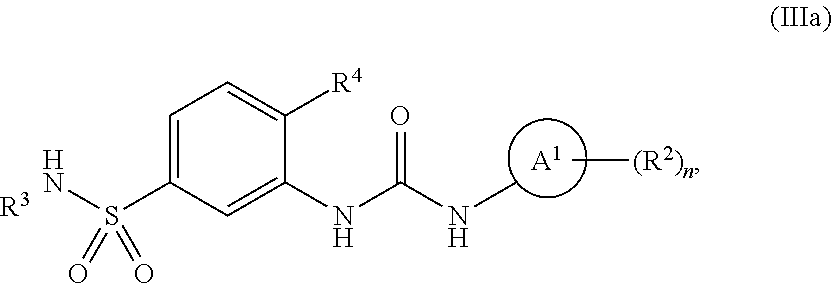





View All Diagrams
| United States Patent | 10,202,339 |
| Popovici-Muller , et al. | February 12, 2019 |
Therapeutic compounds and compositions
Abstract
Provided are aryl sulfonamide diarylurea derivative compounds that are inhibitors of mutant isocitrate dehydrogenase 1/2 (IDH 1/2), useful for treating cancer. Also provided are methods of treating cancer comprising administering to a subject in need thereof a compound described herein. Cancers that are treatable by the compounds of the invention are glioblastoma, myelodysplastic syndrome, myeloproliferative neoplasm, acute myelogenous leukemia, sarcoma, melanoma, non-small cell lung cancer, chondrosarcoma, and non-Hodgkin's lymphoma (NHL).
| Inventors: | Popovici-Muller; Janeta (Windham, NH), Salituro; Francesco G. (Marlborough, MA), Saunders; Jeffrey O. (Lincoln, MA), Travins; Jeremy (Southborough, MA), Yan; Shunqi (Irvine, CA) | ||||||||||
|---|---|---|---|---|---|---|---|---|---|---|---|
| Applicant: |
|
||||||||||
| Assignee: | Agios Pharmaceuticals, Inc.
(Cambridge, MA) |
||||||||||
| Family ID: | 50488660 | ||||||||||
| Appl. No.: | 14/435,674 | ||||||||||
| Filed: | October 11, 2013 | ||||||||||
| PCT Filed: | October 11, 2013 | ||||||||||
| PCT No.: | PCT/US2013/064601 | ||||||||||
| 371(c)(1),(2),(4) Date: | April 14, 2015 | ||||||||||
| PCT Pub. No.: | WO2014/062511 | ||||||||||
| PCT Pub. Date: | April 24, 2014 |
Prior Publication Data
| Document Identifier | Publication Date | |
|---|---|---|
| US 20150299115 A1 | Oct 22, 2015 | |
Related U.S. Patent Documents
| Application Number | Filing Date | Patent Number | Issue Date | ||
|---|---|---|---|---|---|
| 61714179 | Oct 15, 2012 | ||||
| Current U.S. Class: | 1/1 |
| Current CPC Class: | C07D 239/42 (20130101); A61P 35/00 (20180101); C07D 333/20 (20130101); C07D 413/12 (20130101); C07D 213/40 (20130101); A61K 31/351 (20130101); A61K 31/505 (20130101); A61P 35/02 (20180101); A61P 43/00 (20180101); A61K 31/381 (20130101); A61K 31/397 (20130101); A61K 45/06 (20130101); C07D 409/12 (20130101); A61K 31/4402 (20130101); A61K 31/541 (20130101); C07D 295/26 (20130101); A61K 31/422 (20130101); A61K 31/553 (20130101); C07D 267/10 (20130101); A61K 31/5377 (20130101); C07D 309/14 (20130101); A61K 31/4406 (20130101); C07D 213/74 (20130101); C07C 311/44 (20130101); A61K 31/17 (20130101); A61K 31/4436 (20130101); A61K 31/18 (20130101) |
| Current International Class: | C07C 311/44 (20060101); A61K 31/351 (20060101); A61K 31/381 (20060101); A61K 31/397 (20060101); A61K 31/422 (20060101); A61K 31/4402 (20060101); A61K 31/4406 (20060101); A61K 31/4436 (20060101); A61K 31/505 (20060101); C07D 413/12 (20060101); A61K 31/18 (20060101); A61K 31/17 (20060101); C07D 333/20 (20060101); C07D 409/12 (20060101); C07D 309/14 (20060101); C07D 295/26 (20060101); C07D 267/10 (20060101); C07D 239/42 (20060101); C07D 213/74 (20060101); C07D 213/40 (20060101); A61K 45/06 (20060101); A61K 31/553 (20060101); A61K 31/541 (20060101); A61K 31/5377 (20060101) |
References Cited [Referenced By]
U.S. Patent Documents
| 2390529 | December 1945 | Friedheim |
| 3755322 | August 1973 | Winter et al. |
| 3867383 | February 1975 | Winter |
| 4084053 | April 1978 | Desai et al. |
| 4977062 | December 1990 | Yagihara |
| 5021421 | June 1991 | Hino et al. |
| 5489591 | February 1996 | Kobayashi et al. |
| 5807876 | September 1998 | Armistead et al. |
| 5834485 | November 1998 | Dyke et al. |
| 5965559 | October 1999 | Faull et al. |
| 5984882 | November 1999 | Rosenschein et al. |
| 6262113 | July 2001 | Widdowson et al. |
| 6274620 | August 2001 | Labrecque et al. |
| 6313127 | November 2001 | Waterson et al. |
| 6399358 | June 2002 | Williams et al. |
| 6723730 | April 2004 | Bakthavatchalam et al. |
| 6979675 | December 2005 | Tidmarsh |
| 7173025 | February 2007 | Stocker et al. |
| 7858782 | December 2010 | Tao et al. |
| 8133900 | March 2012 | Hood et al. |
| 8465673 | June 2013 | Yasuda et al. |
| 2002/0188027 | December 2002 | Robinson et al. |
| 2003/0095958 | May 2003 | Bhisetti et al. |
| 2003/0109527 | June 2003 | Jin et al. |
| 2003/0207882 | November 2003 | Stocker et al. |
| 2003/0213405 | November 2003 | Harada et al. |
| 2004/0067234 | April 2004 | Einat et al. |
| 2004/0248221 | December 2004 | Stockwell |
| 2006/0084645 | April 2006 | Pal et al. |
| 2006/0281122 | December 2006 | Bryant et al. |
| 2007/0244088 | October 2007 | Brickmann et al. |
| 2008/0300208 | December 2008 | Einat et al. |
| 2009/0093526 | April 2009 | Miller et al. |
| 2009/0163508 | June 2009 | Kori et al. |
| 2009/0163545 | June 2009 | Goldfarb |
| 2010/0129350 | May 2010 | Zacharie et al. |
| 2010/0144722 | June 2010 | Alexander et al. |
| 2010/0273808 | October 2010 | Armitage et al. |
| 2010/0331307 | December 2010 | Salituro et al. |
| 2011/0073007 | March 2011 | Yasuda et al. |
| 2011/0086088 | April 2011 | Berry |
| 2011/0288065 | November 2011 | Fujihara et al. |
| 2012/0121515 | May 2012 | Dang et al. |
| 2012/0129865 | May 2012 | Wang et al. |
| 2012/0164143 | June 2012 | Teeling et al. |
| 2012/0202818 | August 2012 | Tao et al. |
| 2012/0238576 | September 2012 | Tao et al. |
| 2012/0277233 | November 2012 | Tao et al. |
| 2013/0035329 | February 2013 | Saunders et al. |
| 2013/0109643 | May 2013 | Riggins et al. |
| 2013/0183281 | July 2013 | Su et al. |
| 2013/0184222 | July 2013 | Popovici-Muller et al. |
| 2013/0190249 | July 2013 | Lemieux et al. |
| 2013/0190287 | July 2013 | Cianchetta et al. |
| 2014/0187435 | July 2014 | Dang et al. |
| 2015/0018328 | January 2015 | Konteatis et al. |
| 2015/0031627 | January 2015 | Lemieux et al. |
| 2015/0044716 | February 2015 | Balss et al. |
| 101575408 | Nov 2009 | CN | |||
| 102659765 | Sep 2012 | CN | |||
| 103097340 | May 2013 | CN | |||
| 3314663 | Oct 1983 | DE | |||
| 3512630 | Oct 1986 | DE | |||
| 10155684 | May 2003 | DE | |||
| 0022958 | Jan 1981 | EP | |||
| 0384228 | Aug 1990 | EP | |||
| 0385237 | Sep 1990 | EP | |||
| 0945446 | Sep 1999 | EP | |||
| 2735127 | Dec 1996 | FR | |||
| 4099768 | Mar 1992 | JP | |||
| 9291034 | Nov 1997 | JP | |||
| 11158073 | Jun 1999 | JP | |||
| 2004107220 | Apr 2004 | JP | |||
| 2009237115 | Oct 2009 | JP | |||
| 2010079130 | Apr 2010 | JP | |||
| 2010181540 | Aug 2010 | JP | |||
| 4753336 | Aug 2011 | JP | |||
| 2013/000614 | Jun 2013 | MX | |||
| 97/28128 | Aug 1997 | WO | |||
| 97/28129 | Aug 1997 | WO | |||
| 9932463 | Jul 1999 | WO | |||
| 2001016097 | Mar 2001 | WO | |||
| 2002102313 | Dec 2002 | WO | |||
| 030016289 | Feb 2003 | WO | |||
| 2004009562 | Jan 2004 | WO | |||
| 2004046120 | Jun 2004 | WO | |||
| 2004050033 | Jun 2004 | WO | |||
| 2004/073619 | Sep 2004 | WO | |||
| 2004/074438 | Sep 2004 | WO | |||
| 2005035507 | Apr 2005 | WO | |||
| 2005060956 | Jul 2005 | WO | |||
| 2005065691 | Jul 2005 | WO | |||
| 2006-038594 | Apr 2006 | WO | |||
| 2006070198 | Jul 2006 | WO | |||
| 2006079791 | Aug 2006 | WO | |||
| 2007023186 | Mar 2007 | WO | |||
| 2008/050168 | May 2008 | WO | |||
| 2008070661 | Jun 2008 | WO | |||
| 2008076883 | Jun 2008 | WO | |||
| 2008131547 | Nov 2008 | WO | |||
| 2008154026 | Dec 2008 | WO | |||
| 2009013126 | Jan 2009 | WO | |||
| 2009016410 | Feb 2009 | WO | |||
| 2009118567 | Oct 2009 | WO | |||
| 2009126863 | Oct 2009 | WO | |||
| WO 2009/129371 | Oct 2009 | WO | |||
| 2009150248 | Dec 2009 | WO | |||
| 2010007756 | Jan 2010 | WO | |||
| 2010/028099 | Mar 2010 | WO | |||
| 2010105243 | Sep 2010 | WO | |||
| 2010/129596 | Nov 2010 | WO | |||
| 2010144338 | Dec 2010 | WO | |||
| 2010144404 | Dec 2010 | WO | |||
| 201105210 | Jan 2011 | WO | |||
| 2011002817 | Jan 2011 | WO | |||
| 2011/072174 | Jun 2011 | WO | |||
| 2012/009678 | Jan 2012 | WO | |||
| 2012074999 | Jun 2012 | WO | |||
| 2012160034 | Nov 2012 | WO | |||
| 2012171506 | Dec 2012 | WO | |||
| 2013/004332 | Jan 2013 | WO | |||
| 2013102431 | Jul 2013 | WO | |||
| 2013107291 | Jul 2013 | WO | |||
| 2013107405 | Jul 2013 | WO | |||
| 2013133367 | Sep 2013 | WO | |||
| 2014015422 | Jan 2014 | WO | |||
| 2015/003360 | Jan 2015 | WO | |||
Other References
|
PUBCHEM CID 4078245 [online]. Sep. 13, 2005 [retrieved on Feb. 4, 2012]; retrieved from http://pubchem.ncbi.nim.nih.gov/; 2d-structure. cited by examiner . Shehata, MT. et al. Sulfamido-o-toluic acid azide and its urea and urethane derivatives. Proceedings of the Indian National Science Academy. 1986, vol. 52, p. 1413. cited by examiner . US Pharmacopeial Convention. USP 30 (467) Residual Solvents. Table 2. Class 2 Residual Solvents. Published Mar. 23, 2007. Accessed Apr. 20, 2017. cited by examiner . Wang, Science, vol. 340, 622-626, 2013. (Year: 2013). cited by examiner . Dang, Trends in Molecular Medicine vol. 16(9), 387-397, 2010. (Year: 2010). cited by examiner . Yen, Oncogene, vol. 29, 6409-6417, 2010. (Year: 2010). cited by examiner . Aghili et al. "Hydroxyglutaric aciduria and malignant brain tumor: a case report and literature review", Journal of Neuroncology (2008) 91 pp. 233-236. cited by applicant . Ansell et al. "The interactions of artificial coenzymes with alcohol dehydrogenase and other NAD(P)(H) dependent enzymes" Journal of Molecular Catalysis B: Enzymatic (1999) vol. 6, No. 1-2, pp. 111-123. cited by applicant . Balss, "Analysis of the IDH1 codon 132 mutation in brain tumors", Acta Neuropathol (2008) vol. 116, pp. 597-602. cited by applicant . Benner et al, "Evolution, language and analogy in functional genomics", Trends in Genetics (2001) vol. 17, pp. 414-418. cited by applicant . Bhushan et al. "Reversed-phase liquid chromatographic resolution of diastereomers of protein and non-protein amino acids prepared with newly synthesized chiral derivatizing reagents based on cyanuric chloride" Amino Acids (2011) vol. 40, pp. 403-409. cited by applicant . Bleeker et al., "IDH1 mutations at residue p. R132 (IDH1 (R132)) occur frequently in high-grade 18-22 gliomas but not in other solid tumors." Hum Muta1., (2009) vol. 30, No. 1, pp. 7-11. cited by applicant . Braun et al. "Triazine-based polymers: 4. MALDI-MS of triazine-based polyamines" Polymer (1996) vol. 37, No. 5, pp. 777-783. cited by applicant . Cairns et al. "Oncogenic Isocitrate Dehydrogenase Mutations: Mechanisms, Models, and Clinical Opportunities" Cancer Discovery (2013) vol. 3, Iss 7, pp. 730-741 . cited by applicant . Cecil Text Book of Medicine, edited by Bennet and Plum, (1997) 20th edition, vol. 1, pp. 1004-1010. cited by applicant . Chan et al. "Multi-domain hydrogen-bond forming metal chelates: X-ray crystal structures of dicyclopalladated 2,3-bis[6-(2-amino-4-phenylamino-1 ,3,5-triazinyl)]pyrazine (H2L) [Pd2Br2L] and 2,6-bis[6-(2-amino-4-phenylamino-1,3,5-triazinylium)]-pyridine dichloride" Chemical Communications (1996) No. 1, pp. 81-83. cited by applicant . Chapman et al. "Substituted aminopyrimidine protein kinase B (PknB) inhibitors show activity against Mycobacterium tuberculosis" Bioorganic & Medicinal Chemistry Letters (2012) vol. 22, pp. 3349-3353. cited by applicant . Chen et al. "Cytotoxicity, Hemolysis, and Acute in Vivo Toxicity of Dendrimers Based on Melamine, Candidate Vehicles for Delivery" J. Am. Chem. Soc. (2004) vol. 126, No. 32, pp. 10044-10048. cited by applicant . Cocco et al. "Synthesis of Triflouromethylated Pyridinecarbonitriles" Journal of Heterocyclic Chemistry (1995) vol. 32, pp. 543-545. cited by applicant . Dang et al., "Cancer-associated IDH1 mutations produce 2-hydroxyglutarate." Nature (2009) vol. 462, No. 7274, pp. 739-744. cited by applicant . Dang et al. "IDH Mutations in Glioma and Acute Myeloid Leukemia" Trends in Molecular Medicine (2010) vol. 16, No. 9, pp. 387-397. cited by applicant . Dermer "another Anniversary for the War on Cancer" Bio/Technology (1994) vol. 12, p. 320. cited by applicant . Dohner et al. "Impact of Genetic Features on Treatment Decisions in AML" American Society of Hematology (2011) pp. 36-42. cited by applicant . Duanmu et al. "Dendron-Functionalized Superparamagnetic Nanoparticles with Switchable Solubility in Organic and Aqueous Media: Matriced for Homogeneous Catalysis and Potential MRI Contrast Agents" Chem. Mater. (2006) vol. 18, No. 25, pp. 5973-5981. cited by applicant . EP Search Report & Written Opinion for EP 10825706 dated Mar. 20, 2013. cited by applicant . European Search Report for Application No. 10751525.6 dated Dec. 14, 2012. cited by applicant . European Search Report for European Application No. 12799802.9 dated Sep. 24, 2014. cited by applicant . European Search Report for European Application No. EP 12800001.5 dated Oct. 10, 2014. cited by applicant . Eurpoean Search Report for EP Application No. 11763425.3 dated Sep. 23, 2013. cited by applicant . Freshney et al. "Culture of Animal Cells, A Manual of Basic Techniques" Alan R. Liss, Inc. (1983) pp. 1-6. cited by applicant . Gewald et al. "Discovery of triazines as potent, selective and orally active PDE4 inhibitors" Bioorganic & medicinal Chemistry Letters (2013) vol. 23, pp. 4308-4314. cited by applicant . Golub et al. "Molecular Classification of Cancer: Class Discovery and Class Prediction by Gene Expression Monitoring" Science (1999) vol. 286, pp. 531-537. cited by applicant . Hartmann et al. "Type and Frequency of IDH1 and IDH2 mutations are related to astrocytic and oligodendroglial differentiation and age: a study of 1010 diffuse gliomas" Acta Neuropathologica (2009) vol. 118, pp. 469-474. cited by applicant . Holmes et al. "750 MHz 1H NMR spectroscopy characterisation of the complex metabolic pattern of urine from patients with inborn errors of metabolism: 2-hydroxyglutaric aciduria and maple syrup urine disease" Journal of Pharmaceutical and Biomedical Analysis (1997) vol. 15, pp. 1647-1659. cited by applicant . International Preliminary Report for related application No. PCT/US2010/059778 dated Jun. 12, 2012. cited by applicant . International Preliminary Report on Patentability for PCT/CN2012/000841 dated Dec. 17, 2013. cited by applicant . International Preliminary Report on Patentability for PCT/CN2012/077096 dated Dec. 17, 2013. cited by applicant . International Preliminary Report on Patentability for PCT/US2010/027253 dated Sep. 13, 2011. cited by applicant . International Preliminary Report on Patentability for PCT/US2010/040486 dated Jan. 12, 2012. cited by applicant . International Preliminary Report on Patentability for PCT/US2010/053623 dated Apr. 24, 2012. cited by applicant . International Preliminary Report on Patentability for PCT/US2010/053624 dated Apr. 7, 2011. cited by applicant . International Preliminary Report on Patentability for PCT/US2011/030692 dated Oct. 2, 2012. cited by applicant . International Preliminary Report on Patentability for PCT/US2011/067752 dated Apr. 11, 2013. cited by applicant . International Search Report & Written Opinion for PCT/CN2013/070755 dated Apr. 25, 2013. cited by applicant . International Search Report and Written Opinion for International Application No. PCT/CN2013/080105 dated Jul. 11, 2014. cited by applicant . International Search Report and Written Opinion for International Application No. PCT/CN2013/081170 dated Apr. 30, 2014. cited by applicant . International Search Report and Written Opinion for International Application No. PCT/CN2014/081957 dated Sep. 30, 2014. cited by applicant . International Search Report and Written Opinion for International Application No. PCT/CN2014/081958 dated Sep. 29, 2014. cited by applicant . International Search Report and Written Opinion for International Application No. PCT/US2014/046202 dated Sep. 30, 2014. cited by applicant . International Search Report and Written Opinion for International Application No. PCT/US2014/049469 dated Jan. 22, 2015. cited by applicant . International Search Report for International Application No. PCT/CN2013/079184 dated Jan. 12, 2015. cited by applicant . International Search Report for International Application No. PCT/CN2013/079200 dated Jan. 12, 2015. cited by applicant . International Search Report for International Application No. PCT/CN2014/082869 dated Sep. 30, 2014. cited by applicant . International Search Report for International Application No. PCT/US2014/046204 dated Oct. 1, 2014. cited by applicant . International Search Report for PCT/2011/030692 dated Jul. 27, 2011. cited by applicant . International Search Report for PCT/CN2012/000841 dated Sep. 27, 2012. cited by applicant . Struys et al. "Investigations by mass isotopomer analysis of the formation of D-2-hydroxyglutarate by cultured lymphoblasts from two patients with D-2-hydroxyglutaric aciduria" FEBS Letters (2004) vol. 557, pp. 115-120. cited by applicant . Struys et al. "Mutations in the D-2-hydroxyglutarate dehydrogenase gene cause D-2-hydroxyglutaric aciduria" American Journal of Human Genetics (2005) vol. 76, pp. 358-360. cited by applicant . Supplementary European Search Report for EP 10751525 dated Dec. 14, 2012. cited by applicant . Supplementary European Search Report for EP Application No. 10825707.2 dated Jun. 28, 2013. cited by applicant . Supplementary Search Report for EP10794668 dated Oct. 18, 2012. cited by applicant . Takagi et al. "Synthesis of poly(triazinylstyrene) containing nitrogen-bawed ligand and function as metal ion adsorbent and oxidation catalyst" Reactive & Functional Polymers (2006) vol. 31, pp. 1718-1724. cited by applicant . Thompson, "Metabolic Enzymes as Oncogenes or Tumor Suppressors." The New England Journal of Medicine (2009) vol. 360, No. 8, pp. 813-815. cited by applicant . Van Schaftingen et al. "L-2-Hydroglutaric aciduria, a disorder of metabolite repair" J Inherit. Metab. Dis. (2009) vol. 32, pp. 135-142. cited by applicant . Wang et al "Facile Synthesis of 2,4-Dianiino-6-alkyi--or 6-Aryl-Pyrimidine Derivatives" Journal of Heterocyclic Chemistry (2010) vol. 47 pp. 1056-1061. cited by applicant . Wang et al. "A novel ligand N,N'-di(2-pyridyl)-2,4-diamino-6-phenyl-1,3,5-triazine (dpdapt) and its complexes: [Cu (dpdapt)Cl2] and [Cu(dpdapt)(NO3)(H2O)] NO3 H2O" Polyhedron (2006) vol. 25, No. 1, pp. 195-202. cited by applicant . Ward et al. "The Common Feature of Leukemia-Associated IDH1 and IDH2 Mutations Is a Neomorphic Enzyme Activity Converting [alpha]-Ketoglutarate to 2-Hydroxyglutarate" Cancer Cell (2010) vol. 17, No. 3 pp. 225-234. cited by applicant . Watanabe et al., "IDH1 Mutations Are Early Events in the Development of Astrocytomas and Oligodendrogliomas". American Journal of Pathology (2009) vol. 174, No. 4, pp. 1149-1153. cited by applicant . Written Opinion for PCT/US2010/027253 dated Aug. 19, 2010. cited by applicant . Written Opinion of International Search Authority for PCT/CN2013/000009 dated Apr. 18, 2013. cited by applicant . Written Opinion of Search Authority for PCT/US2010/53623 dated Jan. 18, 2011. cited by applicant . Written Opinion of the International Searching Authority for PCT/US2011/067752 dated Mar. 5, 2012. cited by applicant . Yan et al., "IDH1 and IDH2 Mutations in Gliomas." The New England Journal of Medicine, (2009) vol. 360, No. 8, pp. 765-773. cited by applicant . Zhao et al. "Glioma-derived mutations in IDH1 dominantly inhibit IDH1 catalytic activity and induce HIF-1alpha", Science (2009) vol. 324, No. 5924, pp. 261-265. cited by applicant . Davis et al. "Biochemical, Cellular, and Biophysical Characterization of a Potent Inhibitor of Mutant Isocitrate Dehydrogenase IDH1" The Journal of Biological Chemistry (2014) vol. 289, No. 20, pp. 13717-13725. cited by applicant . Genetics Home Reference, "L2HGDH". <http:..ghr.nlm.nih.gove/gene/L2HGDH> accessed on Sep. 4, 2015. cited by applicant . International Preliminary Report for related application No. PCT/US2011/067752 dated Apr. 11, 2013. cited by applicant . International Preliminary Report on Patentability for International Application No. PCT/CN2012/000841 dated Dec. 17, 2013. cited by applicant . International Preliminary Report on Patentability for International Application No. PCT/CN2012/077096 dated Sep. 17, 2013. cited by applicant . International Search Report and Written Opinion for Internatinal Application No. PCT/US2013/064601 dated Feb. 24, 2014. cited by applicant . International Search Report and Written Opinion for International Application No. PCT/US15/020349 dated Jun. 15, 2015. cited by applicant . International Search Report and Written Opinion for International Application No. PCT/US2015/020346 dated Jun. 18, 2015. cited by applicant . Liu et al. "Inhibition of Cancer-Associated Mutant Isocitrate Dehydrogenases: Synthesis, Structure--Activity Relationship, and Selective Antitumor Activity" Journal of Medicinal Chemistry (2014) vol. 57, pp. 8307-8318. cited by applicant . Lou, "IDH1: function follows form" SciBX (2009) vol. 2, No. 48, pp. 1-2. cited by applicant . Paronikyan et al. "Synthesis and biological activity of 3-piperazinylpyrano [3,4-C] pyridines" Armyanskii Khimicheskii Zhurnal (1990) vol. 43, No_ 8, pp. 518-523. cited by applicant . Registry (STN) [online], Aug. 23, 2006 [Retrieved on Jan. 29, 2016] CAS Registration No. 903862-76-0. cited by applicant . Registry (STN) [online], Aug. 23, 2006 [Retrieved on Jan. 29, 2016] CAS Registration No. 903869-26-1. cited by applicant . Registry (STN) [online], Apr. 13, 2007 [Retrieved on Jan. 29, 2016] CAS Registration No. 929819-92-1. cited by applicant . Registry (STN) [online], Apr. 13, 2007 [Retrieved on Jan. 29, 2016] CAS Registration No. 929971-43-7. cited by applicant . Registry (STN) [online], Apr. 19, 2009 [Retrieved on Jan. 29, 2016] CAS Registration No. 1136498-70-8. cited by applicant . Registry (STN) [online], Aug. 27, 2009 [Retrieved on Jan. 29, 2016] CAS Registration No. 1176756-98-1. cited by applicant . Sosnovik et al. "Emerging concepts in molecular MRI" Current Opinions in Biotechnology (2007) vol. 18, pp. 4-10. cited by applicant . Struys, EA. et al. "Measurement of Urinary D- and L-2-Hydroxyglutarate Enantiomers by Stable-Isotope-Dilution LiquidChromatography--Tandem Mass Spectrometry after Derivatization with Diacetyi-L-Tartaric Anhydride." Clinical Chemistry (2004) 501391-1395. cited by applicant . The radiation fact sheet published by the National Cancer Institute, http://www.cancergov/about-cancer/treatment/types/radiation-therapy/radia- tion-fact-sheet, reviewed Jun. 30, 2010. cited by applicant . Zheng et al. "Synthesis and antitumor evaluation of a novel series of triaminotriazine derivatives" Bioorganic & Medicinal Chemistry (2007) vol. 15, pp. 1815-1827. cited by applicant . International Search Report for PCT/CN2012/077096 dated Oct. 4, 2012. cited by applicant . International Search Report for PCT/CN2013/000009 dated Apr. 18, 2013. cited by applicant . International Search Report for PCT/CN2013/000068 dated Apr. 25, 2013. cited by applicant . International Search Report for PCT/US10/040486 dated Sep. 1, 2010. cited by applicant . International Search Report for PCT/US2010/027253 dated Aug. 19, 2010. cited by applicant . International Search Report for PCT/US2010/059778 dated Mar. 17, 2011. cited by applicant . International Search Report for PCT/US2010/53623 dated Jan. 18, 2011. cited by applicant . International Search Report for PCT/US2010053624 dated Apr. 7, 2011. cited by applicant . International Search Report for PCT/US2011/067752 dated Feb. 22, 2012. cited by applicant . International Search Report for PCT/US2011044254 dated May 10, 2011. cited by applicant . International Search Report for PCT/US2013/064601 dated Feb. 24, 2014. cited by applicant . Irikura et al. "New s-Triazine Derivatives as Depressants for Reticuloendothelial Hyperfunction Induced by Bacterial Endotoxin" Journal of Medicinal Chemistry (2000) vol. 31, pp. 1081-1089. cited by applicant . Jennings et al. "Expression and mutagenesis of mammalian cytosolic NADP+-specific isocitrate dehydrogenase" Biochemistry (1997) vol. 36, pp. 13743-13747. cited by applicant . Kaila et al. "A convenient one-pot synthesis of trisubstituted 1,3,5-triazines through intermediary amidinothioureas" Tetrahedron Letters (2010) vol. 51, pp. 1486-1489. cited by applicant . Kelarev et al. "Synthesis and properties of sym-triazines. 10 Synthesis of 2,4-diamino-sym-triazines containing a sterically hindered phenol substituent" Chemistry of Heterocyclic Compounds (1992) vol. 28, No. 10, pp. 1189-1193. cited by applicant . Kim et al. "Identification and Functional Characterization of a Novel, Tissue-specific NAD+-dependent Isocitrate Dehydrogenase b Subunit Isoform" JBC (1999) vol. 274, No. 52, pp. 36866-36875. cited by applicant . Kim et al. "Ser95, Asn97, and Thr78 are important for the catalytic function of porcine NADP-dependent isocitrate dehydrogenase" Protein Science (2005) vol. 14, pp. 140-147. cited by applicant . Koshelev et al. "Synthesis of 1-3,7 N-substituted 2,4-diamino-1,3,5-triazines containing pyridyl groups" Russian Journal of Organic Chemistry (1995) vol. 31, No. 2, pp. 260-263. cited by applicant . Kranendijk et al. "IDH2 Mutations in Patients with D-2-Hydroxyglutaric Aciduria" Science (2010) vol. 330, p. 336. cited by applicant . Krell et al., "IDH mutations in tumorigenesis and their potential role as novel therapeutic targets" Future Oncology (2013) vol. 9, Iss 12, pp. 1923-1935. cited by applicant . Kusakabe et al. Chemical Abstracts vol. 152, No. 191956, Abstract for WO2010007756 (2010). cited by applicant . Lee et al. "Combinatorial Solid-Phase Synthesis of 6-Aryl-1,3,4-triazines via Suzuki Coupling" Aust. J. Chem. (2011) vol. 64, pp. 540-544. cited by applicant . Madsen-Duggan et al. "Lead optimization of 5.6-diarylpyridines as CB1 receptor inverse agonists" Bioorganic & Medicinal Chemistry Letters (2007) vol. 17, pp. 2031-2035. cited by applicant . May et al. "How many species are there on earth" Science (1988) vol. 241, p. 1441. cited by applicant . Moreno et al. "Identification of diamine linkers with differing reactivity and their applicationin the synthesis of melamine dendrimers" Tetrahedron Letters (2008) vol. 49, pp. 1152-1154. cited by applicant . Moreno et al. "Molecular recognition in dendrimers based on melamine" Polymer Preprints (2005) vol. 46, No. 2, pp. 1127. cited by applicant . Parsons et al. "An Integrated Genomic Analysis of Human Glioblastoma Multiforme" Science (2008) vol. 321, pp. 1807-1812 and Supplemental Data. cited by applicant . Pollard et al, "Cancer. Puzzling patterns of predisposition." Science (2009) vol. 324, pp. 192-194. cited by applicant . Popovici-Muller et al. "Discovery of the First Potent Inhibitors of Mutant IDH1 That Lower Tumor2-HG in Vivo" ACS Medicinal Chemistry Letters (2012) vol. 3, No. 10, pp. 850-855. cited by applicant . Pubchem CID 4854170 [online]; Sep. 17, 2005 [retrieved on Feb. 4, 2012]; retrieved from http://pubchem.ncbi.nim.nih.gov/; 2d-structure. cited by applicant . Raynaud et al. "Absence of R140Q Mutation of Isocitrate Dehydrogenase 2 in Gliomas and Breast Cancers" Oncology Letters (2010) vol. 1, No. 5, pp. 883-884. cited by applicant . Reitman et al. "Isocitrate Dehydrogenase 1 and 2 Mutations in Cancer: Alterations at a Crossroads of Cellular Metabolism" Journal of the National Cancer Institute (2010) vol. 102, No. 13, pp. 932-941. cited by applicant . Rohle et al. "An Inhibitor of Mutant IDH1 Delays Growth and Promotes Differentiation of Glioma Cells" Science (2013) vol. 340, No. 6132, pp. 626-630. cited by applicant . Scharn et al. "Spatially Addressed Synthesis of Amino- and Amino-Oxy-Substituted 1,3,5-Triazine Arrays on Polymeric Membranes" Journal of Combinatorial Chemistry (2000) vol. 2, No. 4, pp. 361-369. cited by applicant . Shih et al. "The Role of Mutations in Epigenetic Regulators in Myeloid Malignancies" Nature Reviews Cancer (2012) vol. 12, No. 9, pp. 599-612. cited by applicant . Sirkanyan et al "Synthesis of new derivatives of piperazine-substituted pyrano[3,4-c]pyridines" Hayastani Kimiakan Handes (2009) vol. 62, No. 3-4 pp. 378-385. English Abstract Only. cited by applicant . Sonoda et al. "Analysis of IDH1 and IDH2 mutations in Japanese glioma patients" Cancer Science, vol. 100, No. 10, pp. 1996-1998. cited by applicant . STN File CA, Registry No. 1023444-33-8, entered STN on May 29, 2008, Chemical Abstracts Index Name "Benzenesulfonamide, 3-[[4-(1,3-benzodioxol-5-ylmethyl)-1-piperazinyl]carbonyl]-N-(4-butylphen- yl)-4-methyl-". cited by applicant . STN File CA, Registry No. 1090629-29-0, entered STN on Dec. 28, 2008, Chemical Abstracts Index Name "Benzenesulfonamide, 3-[[4-[(2,5-dimethoxyphenyl)methyl]-1-piperazinyl]carbonyl]-N-(4-methoxyp- henyl)-4-methyl-". cited by applicant . STN File CA, Registry No. 134538-28-6, entered STN on Jun. 28, 1991, Chemical Abstracts Index Name "1H-Pyrano[3,4-c]pyridine-5-carbonitrile, 3,4-dihydro-3,3-dimethyl-6-[4-(1-oxobutyl)-1-piperazinyl]-8-phenyl-", disclosed in Paronikyan et al. Armyanskii Khimicheskii Zhurnal, 1990, vol. 43, No. 8. cited by applicant . STN File CA, Registry No. 134538-29-7, entered STN on Jun. 28, 1991, Chemical Abstracts Index Name "1H-Pyrano[3,4-c]pyridine-5-carbonitrile, 3,4-dihydro-3,3-dimethyl-6-[4-(2-methyl-1-oxopropyl)-1-piperazinyl]-8-phe- nyl-", disclosed in Paronikyan et al. Armyanskii Khimicheskii Zhurnal, 1990, vol. 43, No. 8. cited by applicant . STN File CA, Registry No. 134538-30-0, entered STN on Jun. 28, 1991, Chemical Abstracts Index Name "1H-Pyrano[3,4-c]pyridine-5-carbonitrile, 6-(4-benzoyl-1-piperazinyl)-3,4-dihydro-3,3-dimethyl-8-phenyl-", disclosed in Paronikyan et al. Armyanskii Khimicheskii Zhurnal, 1990, vol. 43, No. 8. cited by applicant . STN File CA, Registry No. 134538-31-1, entered STN on Jun. 28, 1991, Chemical Abstracts Index Name "1H-Pyrano[3,4-c]pyridine-5-carbonitrile, 6-[4-(2-furanylcarbonyl)-1-piperazinyl]-3,4-dihydro-3,3-dimethyl-8-phenyl- -", disclosed in Paronikyan et al. Armyanskii Khimicheskii Zhurnal, 1990, vol. 43, No. 8. cited by applicant . STN File CA, Registry No. 380466-24-0 entered STN on Jan. 4, 2002, Chemical Abstracts Index Name "Benzenesulfonamide, N-methyl-N-phenyl-3-[[4-(2-pyridinyl)-1-piperazinyl]carbonyl]". cited by applicant . STN File CA, Registry No. 713505-78-3, entered STN on Jul. 21, 2004, Chemical Abstracts Index Name "1-Piperazinecarboxylic acid, 4-[4-methyl-3-[(phenylamino)sulfonyl]benzoyl]-, ethyl ester". cited by applicant . STN File CA, Registry No. 736168-79-9 entered STN on Aug. 31, 2004, Chemical Abstracts Index Name "Benzenesulfonamide, 3,4-difluoro-N-[3-334-(phenylmethyl0-1-piperazinyl]carbonyl]phenyl". cited by applicant . STN File CA, Registry No. 847757-57-7, entered STN on Apr. 1, 2005, Chemical Abstracts Index Name "Benzenesulfonamide, 3-[[4-(1,3-benzodioxol-5-ylmethyl)-1-piperazinyl]carbonyl]-N-(4-ethoxyphe- nyl)-N,4-dimethyl-" or "Piperazine, 1-(1,3-benzodioxol-5-ylmethyl)-4-[5-[[(4-ethoxyphenyl)methylamino]sulfony- l]-2-methylbenzoyl]-". cited by applicant . STN Registry, L23 Answer 2 of 3 (CAS No. 1032450-21-7), Database: ASINEX Ltd.,Entered STN: Jul. 3, 2008 (Jul. 3, 2008). cited by applicant . STN Registry. L23 Answer 1 of 3 (CAS No. 1038821-72-5),Database: ChemDB (University of California Irvine), Entered STN: Aug. 5, 2008 (May 8, 2008). cited by applicant . Lutker et al, "Crystal Polymorphism in a Carbamazepine Derivative: Oxcarbazepine". NIH Public Access. J Pharm Sci. Feb. 2010 ; 99(2): 794-803. doi: 10.1002/jps.21873. cited by applicant . Rao et al., "Polymorphism in Drugs and its Significance in Therapeutics". Journal of Scientific & Industrial Research vol. 46 Oct. 1987 pp. 450-455. cited by applicant . Docoslis et al., "Characterization of the Distribution, Polymorphism, and Stability of Nimodipine in Its Solid Dispersions in Polyethylene Glycol by Micro-Raman Spectroscopy and Powder X-Ray Diffraction". The AAPS Journal 2007; 9 (3) Article 43, E361-E370. cited by applicant . Extended European Search Report for European application No. 16152308.9 dated Jul. 18, 2016. cited by applicant . Registry (STN) [online], entered STN Apr. 18, 2005, CAS registration No. 848658-32-2. cited by applicant . Registry (STN) [online], entered STN Aug. 12, 2003, CAS registration No. 565165-17-5. cited by applicant . Registry (STN) [online], entered STN Aug. 24, 2004, CAS registration No. 731816-64-1. cited by applicant . Registry (STN) [online], entered STN Dec. 1, 2004, CAS registration No. 793678-13-4. cited by applicant . Registry (STN) [online], entered STN Dec. 31, 2001, CAS registration No. 379707-06-9. cited by applicant . Registry (STN) [online], entered STN Jan. 2, 2002, CAS registration No. 380169-59-5. cited by applicant . Registry (STN) [online], entered STN Jan. 3, 2002, CAS registration No. 380320-85-4. cited by applicant . Registry (STN) [online], entered STN Jan. 3, 2002, CAS registration No. 380322-34-9. cited by applicant . Registry (STN) [online], entered STN Sep. 23, 2004, CAS registration No. 749890-71-9. cited by applicant. |
Primary Examiner: Seaman; D Margaret M
Attorney, Agent or Firm: Goodwin Procter LLP
Claims
The invention claimed is:
1. A compound of Formula (III) or a pharmaceutically acceptable salt thereof, wherein: ##STR00688## X is CH or N; A.sup.1 is C.sub.3-8 cycloalkyl, aryl, heteroaryl or heterocyclyl; each R.sup.2 is independently halo, hydroxyl, C.sub.1-6 alkyl, C.sub.2-6 alkenyl, C.sub.2-6 alkynyl, C.sub.1-6 alkoxy, C.sub.1-6 thioalkoxy, C.sub.1-6 haloalkyl, C.sub.1-6 haloalkoxy, C.sub.1-6 alkyl-OH, aryl, aralkyl, aryloxy, --NO.sup.2, --C(O)--O--C.sub.1-6 alkyl, --S(O).sub.2--NH-aryl, --S(O).sub.2--C.sub.1-6 alkyl or --S(O)--C.sub.1-6 alkyl, wherein each said aryl moiety may be substituted with 0-3 occurrences of R.sup.6; R.sup.3 is C.sub.1-6 alkyl, C.sub.2-6 alkenyl, C.sub.3-8 cycloalkyl, aryl, aralkyl, heteroaryl, heteroaralkyl or heterocyclyl, each of which may be substituted with 0-3 occurrences of R.sup.6; R.sup.4 is C.sub.2-6 alkenyl, C.sub.2-6 alkynyl, C.sub.1-6 thioalkyl, C.sub.3-8 cycloalkyl, C.sub.3-8 cycloalkenyl, aryl, heteroaryl, heterocyclyl, --S(O)--C.sub.1-6 alkyl, --S(O).sub.2--C.sub.1-6 alkyl, --O-aryl, --O-heteroaryl, --O-heterocyclyl, --N(R.sup.5)--C.sub.1-6 alkyl or --N(R.sup.5)-aryl, wherein each C.sub.1-6 alkyl, C.sub.2-6 alkynyl, C.sub.1-6 thioalkyl, aryl, heteroaryl, heterocyclyl, --S(O)--C.sub.1-6 alkyl, --S(O).sub.2--C.sub.1-6 alkyl, --O-aryl, --O-heteroaryl, --O-heterocyclyl, --N(R.sup.5)--C.sub.1-6 alkyl or N(R.sup.5)-aryl is independently substituted with 0-3 occurrences of R.sup.7; each R.sup.5 is independently hydrogen or C.sub.1-6 alkyl; each R.sup.6 is independently halo, hydroxyl, C.sub.1-6 alkyl, C.sub.1-6 haloalkyl, C.sub.1-6 alkoxy, C.sub.3-8 cycloalkyl, cyano, NO.sub.2, --CO.sub.2H, --C(O)--C.sub.1-6 alkyl, --S(O).sub.2--C.sub.1-6 alkyl, --O--S(O).sub.2--C.sub.1-6 alkyl, --O--C.sub.1-6 alkyl-C(O)OH, --O--C.sub.1-6 alkyl-C(O)--O--C.sub.1-6 alkyl, --N(R.sup.5)--C(O)--C.sub.1-6 alkyl, --N(R.sup.5)--C.sub.1-6 alkyl-C(O)--O--C.sub.1-6 alkyl, aryl, heteroaryl or heterocyclyl; or adjacent R.sup.6 moieties, taken together with the atoms to which they are attached form a heterocyclyl; each R.sup.7 is independently C.sub.1-6 alkyl, C.sub.1-6 alkoxy, C.sub.3-8 cycloalkyl, hydroxyl, halo, --NHC(O)--C.sub.1-6 alkyl, --S(O).sub.2--C.sub.1-6 alkyl, aryl, heteroaryl or heterocyclyl; and n is 0, 1, 2, 3 or 4; provided that: (1) when A.sup.1 is phenyl, X is CH, and R.sup.4 1-piperidinyl, 1-pyrrolidinyl, N-morpholinyl, or N-azepanyl, then R.sup.3 is not phenyl optionally substituted with 0-3 occurrences of R.sup.6; and (2) the compound is not N-(2,5-dichlorophenyl)-4-(diethylamino)-3-[[[(4-nitrophenyl)amino]carbony- l]amino]-benzenesulfonamide.
2. A compound of Formula (IV) or a pharmaceutically acceptable salt thereof, wherein: ##STR00689## L.sup.1 is a bond; A.sup.1 is C.sub.3-8 cycloalkyl, aryl, heteroaryl or heterocyclyl; L.sup.2 is --NR.sup.5--; each R.sup.2 is independently halo, hydroxyl, C.sub.1-6 alkyl, C.sub.2-6 alkenyl, C.sub.2-6 alkynyl, C.sub.1-6 alkoxy, C.sub.1-6 thioalkoxy, C.sub.1-6 haloalkyl, C.sub.1-6 haloalkoxy, C.sub.1-6 alkyl-OH, aryl, aralkyl, aryloxy, --NO.sup.2, --C(O)--O--C.sub.1-6 alkyl, --S(O).sub.2--NH-aryl, --S(O).sub.2--C.sub.1-6 alkyl or --S(O)--C.sub.1-6 alkyl, wherein each said aryl moiety may be substituted with 0-3 occurrences of R.sup.6; R.sup.3 is C.sub.2-6 alkenyl, C.sub.3-8 cycloalkyl, aryl, aralkyl, heteroaryl, heteroaralkyl or heterocyclyl, each of which may be substituted with 0-3 occurrences of R.sup.6; R.sup.4 is C.sub.1-6 alkyl, C.sub.2-6 alkenyl, C.sub.2-6 alkynyl, C.sub.1-6 thioalkyl, C.sub.3-8 cycloalkyl, C.sub.3-8 cycloalkenyl, aryl, heteroaryl, --S(O)--C.sub.1-6 alkyl, --S(O).sub.2--C.sub.1-6 alkyl, --O-aryl, --O-heteroaryl, --O-heterocyclyl, --N(R.sup.5)--C.sub.1-6 alkyl or --N(R.sup.5)-aryl, wherein each C.sub.1-6 alkyl, C.sub.2-6 alkynyl, C.sub.1-6 alkoxy, C.sub.1-6 thioalkyl, aryl, heteroaryl, S(O)--C.sub.1-6 alkyl, --S(O).sub.2--C.sub.1-6 alkyl, --O-aryl, --O-heteroaryl, --O-heterocyclyl, --N(R.sup.5)--C.sub.1-6 alkyl or --N(R.sup.5)-aryl is independently substituted with 0-3 occurrences of R.sup.7; each R.sup.5 is independently hydrogen or C.sub.1-6 alkyl; each R.sup.6 is independently hydroxyl, C.sub.1-6 alkyl, C.sub.1-6 haloalkyl, C.sub.3-8 cycloalkyl, cyano, NO.sub.2, --CO.sub.2H, --C(O)--C.sub.1-6 alkyl, --S(O).sub.2--C.sub.1-6 alkyl, --O--S(O).sub.2--C.sub.1-6 alkyl, --O--C.sub.1-6 alkyl-C(O)OH, --O--C.sub.1-6 alkyl-C(O)--O--C.sub.1-6 alkyl, --N(R.sup.5)--C(O)--C.sub.1-6 alkyl, --N(R.sup.5)--C.sub.1-6 alkyl-C(O)--O--C.sub.1-6 alkyl, aryl, heteroaryl or heterocyclyl; or adjacent R.sup.6 moieties, taken together with the atoms to which they are attached form a heterocyclyl; each R.sup.7 is independently C.sub.1-6 alkyl, C.sub.1-6 alkoxy, C.sub.3-8 cycloalkyl, hydroxyl, halo, --NHC(O)--C.sub.1-6 alkyl, --S(O).sub.2--C.sub.1-6 alkyl, aryl, heteroaryl or heterocyclyl; and n is 1, 2, 3 or 4; provided that: when R.sup.5 is H, and R.sup.4 is methyl, then R.sup.3 is not methyl.
3. The compound of claim 2 or a pharmaceutically acceptable salt thereof, wherein the compound is selected from: ##STR00690## ##STR00691## ##STR00692## ##STR00693## ##STR00694## ##STR00695##
4. The compound of claim 1 or a pharmaceutically acceptable salt thereof, wherein the compound is selected from: ##STR00696## ##STR00697## ##STR00698## ##STR00699## ##STR00700## ##STR00701## ##STR00702## ##STR00703## ##STR00704## ##STR00705## ##STR00706## ##STR00707## ##STR00708## ##STR00709## ##STR00710## ##STR00711## ##STR00712## ##STR00713## ##STR00714## ##STR00715## ##STR00716## ##STR00717## ##STR00718## ##STR00719## ##STR00720## ##STR00721## ##STR00722## ##STR00723## ##STR00724## ##STR00725## ##STR00726## ##STR00727## ##STR00728## ##STR00729## ##STR00730## ##STR00731##
5. A pharmaceutical composition comprising a compound of claim 1 or pharmaceutically acceptable salt thereof, and a pharmaceutically acceptable carrier.
6. The composition of claim 5, comprising an additional cancer therapeutic agent.
7. A compound of or pharmaceutically acceptable salt thereof, wherein the compound is a compound of Formula (IIIa), wherein: ##STR00732## A.sup.1 is aryl; each R.sup.2 is independently C.sub.1-6 haloalkyl or C.sub.1-6 haloalkoxy; R.sup.3 is C.sub.1-6 alkyl, C.sub.3-8 cycloalkyl, or heterocyclyl, each of which may be substituted with 0-3 occurrences of R.sup.6; R.sup.4 is C.sub.1-6 alkyl, C.sub.1-6 alkoxy, C.sub.1-6 thioalkyl, aryl, heteroaryl, heterocyclyl, or --S(O).sub.2--C.sub.1-6 alkyl, wherein each C.sub.1-6 alkyl, C.sub.1-6 alkoxy, C.sub.1-6 thioalkyl, aryl, heteroaryl, or --S(O).sub.2--C.sub.1-6 alkyl is independently substituted with 0-3 occurrences of R.sup.7; each R.sup.6 is independently C.sub.1-6 alkyl, C.sub.1-6 haloalkyl, cyano, or heterocyclyl; or adjacent R.sup.6 moieties, taken together with the atoms to which they are attached form a heterocyclyl; each R.sup.7 is independently C.sub.1-6 alkyl, C.sub.1-6 alkoxy, C.sub.3-8 cycloalkyl, hydroxyl, halo, --NHC(O)--C.sub.1-6 alkyl, --S(O).sub.2--C.sub.1-6 alkyl, aryl, heteroaryl or heterocyclyl; and n is 0, 1, 2, 3 or 4; provided that: (1) when R.sup.4 is methyl, then R.sup.3 is not methyl; (2 ) when R.sup.4 is methoxy, then R.sup.3 is not cyclopropyl.
8. The compound of claim 1 or pharmaceutically acceptable salt thereof, wherein the compound is selected from: ##STR00733##
9. The compound of claim 2 or pharmaceutically acceptable salt thereof, wherein the compound is selected from: ##STR00734##
10. A pharmaceutical composition comprising a compound of claim 2 or pharmaceutically acceptable salt thereof, and a pharmaceutically acceptable carrier.
11. The pharmaceutical composition of claim 10, comprising an additional cancer therapeutic agent.
Description
CLAIM OF PRIORITY
This application is a national stage application under 35 U.S.C. .sctn. 371 of International Application No. PCT/US2013/064601, filed Oct. 11, 2013, published as International Publication No. WO 2014/062511 on Apr. 24, 2014, which claims priority from U.S. Ser. No. 61/714,179, filed Oct. 15, 2012, each of which is incorporated herein by reference in its entirety.
BACKGROUND OF INVENTION
Isocitrate dehydrogenases (IDHs) catalyze the oxidative decarboxylation of isocitrate to 2-oxoglutarate (i.e., .alpha.-ketoglutarate). These enzymes belong to two distinct subclasses, one of which utilizes NAD(+) as the electron acceptor and the other NADP(+). Five isocitrate dehydrogenases have been reported: three NAD(+)-dependent isocitrate dehydrogenases, which localize to the mitochondrial matrix, and two NADP(+)-dependent isocitrate dehydrogenases, one of which is mitochondrial and the other predominantly cytosolic. Each NADP(+)-dependent isozyme is a homodimer.
IDH1/2 (isocitrate dehydrogenase 1/2 (NADP+), mitochondrial) are also known as IDH; IDP; IDHM; IDPM; ICD-M; or mNADP-IDH. The protein encoded by this gene is the NADP(+)-dependent isocitrate dehydrogenase found in the mitochondria. It plays a role in intermediary metabolism and energy production. This protein may tightly associate or interact with the pyruvate dehydrogenase complex.
Human IDH2 gene encodes a protein of 452 amino acids. The nucleotide and amino acid sequences for IDH2 can be found as GenBank entries NM_002168.2 and NP_002159.2 respectively. The nucleotide and amino acid sequence for human IDH2 are also described in, e.g., Huh et al., Submitted (November 1992) to the EMBL/GenBank/DDBJ databases; and The MGC Project Team, Genome Res. 14:2121-2127(2004).
The human IDH1 gene encodes a protein of 414 amino acids. The nucleotide and amino acid sequences for human IDH1 can be found as GenBank entries NM_005896.2 and NP_005887.2 respectively. The nucleotide and amino acid sequences for IDH1 are also described in, e.g., Nekrutenko et al., Mol. Biol. Evol. 15:1674-1684(1998); Geisbrecht et al., J. Biol. Chem. 274:30527-30533(1999); Wiemann et al., Genome Res. 11:422-435(2001); The MGC Project Team, Genome Res. 14:2121-2127(2004); Lubec et al., Submitted (December 2008) to UniProtKB; Kullmann et al., Submitted (June 1996) to the EMBL/GenBank/DDBJ databases; and Sjoeblom et al., Science 314:268-274(2006).
Non-mutant, e.g., wild type, IDH 1/2 catalyzes the oxidative decarboxylation of isocitrate to .alpha.-ketoglutarate (.alpha.-KG) thereby reducing NAD.sup.+ (NADP.sup.+) to NADP (NADPH), e.g., in the forward reaction: Isocitrate+NAD.sup.+(NADP.sup.+).fwdarw..alpha.-KG+CO.sub.2+NADH(NADPH)+H- .sup.+.
It has been discovered that mutations of IDH 1/2 present in certain cancer cells result in a new ability of the enzyme to catalyze the NADPH-dependent reduction of .alpha.-ketoglutarate to R(-)-2-hydroxyglutarate (2HG). 2HG is not formed by wild-type IDH 1/2. The production of 2HG is believed to contribute to the formation and progression of cancer (Dang, L et al, Nature 2009, 462:739-44).
The inhibition of mutant IDH 1/2 and their alpha hydroxyl neoactivity are therefore a potential therapeutic treatment for cancer. Accordingly, there is an ongoing need for inhibitors of IDH 1/2 mutants having alpha hydroxyl neoactivity.
SUMMARY OF INVENTION
Described herein are compounds of Formula (I), or a pharmaceutically acceptable salt or hydrate thereof:
##STR00001## wherein
each R.sup.1 is independently hydrogen or C.sub.1-6 alkyl;
L.sup.1 is a bond or C.sub.1-6 alkylene;
A.sup.1 is C.sub.3-8 cycloalkyl, aryl, heteroaryl or heterocyclyl;
A.sup.2 is C.sub.3-8 cycloalkyl, aryl, heteroaryl or heterocyclyl;
L.sup.2 is a bond or --NR.sup.5--;
each R.sup.2 is independently halo, hydroxyl, C.sub.1-6 alkyl, C.sub.2-6 alkenyl, C.sub.2-6 alkynyl, C.sub.1-6 alkoxy, C.sub.1-6 thioalkoxy, C.sub.1-6 haloalkyl, C.sub.1-6 haloalkoxy, C.sub.1-6 alkyl-OH, aryl, aralkyl, aryloxy, --NO.sup.2, --C(O)--O--C.sub.1-6 alkyl, --S(O).sub.2--NH-aryl, --S(O).sub.2--C.sub.1-6 alkyl or --S(O)--C.sub.1-6 alkyl, wherein each said aryl moiety may be substituted with 0-3 occurrences of R.sup.6;
R.sup.3 is C.sub.1-6 alkyl, C.sub.2-6 alkenyl, C.sub.3-8 cycloalkyl, aryl, aralkyl, heteroaryl, heteroaralkyl or heterocyclyl, each of which may be substituted with 0-3 occurrences of R.sup.6;
each R.sup.4 is independently halo, C.sub.1-6 alkyl, C.sub.2-6 alkenyl, C.sub.2-6 alkynyl, C.sub.1-6 alkoxy, C.sub.1-6 thioalkyl, C.sub.3-8 cycloalkyl, C.sub.3-8 cycloalkenyl, aryl, heteroaryl, heterocyclyl, --S(O)--C.sub.1-6 alkyl, --S(O).sub.2--C.sub.1-6 alkyl, --O-aryl, --O-heteroaryl, --O-heterocyclyl, --N(R.sup.5)--C.sub.1-6 alkyl or --N(R.sup.5)-aryl;
each R.sup.5 is independently hydrogen or C.sub.1-6 alkyl;
each R.sup.6 is independently halo, hydroxyl, C.sub.1-6 alkyl, C.sub.1-6 haloalkyl, C.sub.1-6 alkoxy, C.sub.3-8 cycloalkyl, cyano, NO.sub.2, --CO.sub.2H, --C(O)--C.sub.1-6 alkyl, --S(O).sub.2--C.sub.1-6 alkyl, --O--S(O).sub.2--C.sub.1-6 alkyl, --O--C.sub.1-6 alkyl-C(O)OH, --O--C.sub.1-6 alkyl-C(O)--O--C.sub.1-6 alkyl, --N(R.sup.5)--C(O)--C.sub.1-6 alkyl, --N(R.sup.5)--C.sub.1-6 alkyl-C(O)--O--C.sub.1-6 alkyl, aryl, heteroaryl or heterocyclyl; or adjacent R.sup.6 moieties, taken together with the atoms to which they are attached form a heterocyclyl;
each R.sup.7 is independently C.sub.1-6 alkyl, C.sub.1-6 alkoxy, C.sub.3-8 cycloalkyl, hydroxyl, halo, --NHC(O)--C.sub.1-6 alkyl, --S(O).sub.2--C.sub.1-6 alkyl, aryl, heteroaryl or heterocyclyl; and
n is 0, 1, 2, 3 or 4;
wherein when L.sup.1 is a bond, A.sup.1 and the adjacent N(R.sup.1) can be taken together to form a heterocyclic ring; and
wherein when L.sup.2 is a bond, R.sup.3 is heterocyclyl; and provided that: (1) when L.sup.1 is a bond, L.sup.2 is a bond, A.sup.2 is phenyl, and R.sup.4 is methoxy, Cl, F, or methyl and R.sup.4 is para to the N(R.sup.1)C(O)N(R.sup.1) moiety, then R.sup.3 is not 1-piperidinyl, 1-pyrrolidinyl, N-morpholinyl, or N-azepanyl; (2) when L.sup.2 is --N(R.sup.5)-- wherein R.sup.5 is H, A.sup.2 is phenyl, and R.sup.4 is methyl and R.sup.4 is para to the N(R.sup.1)C(O)N(R.sup.1) moiety, then R.sup.3 is not methyl; (3) when L.sup.2 is --N(R.sup.5)--, R.sup.5 is H, A.sup.2 is phenyl, and R.sup.4 is methyl and R.sup.4 is ortho to the N(R.sup.1)C(O)N(R.sup.1) moiety, then R.sup.3 is not methyl; (4) when L.sup.2 is --N(R.sup.5)--, R.sup.5 is H, A.sup.2 is phenyl, and R.sup.4 is methoxy and R.sup.4 is ortho to the N(R.sup.1)C(O)N(R.sup.1) moiety, then R.sup.3 is not cyclopropyl; (5) when L.sup.1 is a bond, A.sup.1 is phenyl, L.sup.2 is --N(R.sup.5)-- wherein R.sup.5 is H, A.sup.2 is phenyl, and R.sup.4 is methyl, methoxy, Cl, 1-piperidiniyl, 1-pyrrolidinyl, N-morpholinyl, or N-azepanyl and R.sup.4 is ortho to the N(R.sup.1)C(O)N(R.sup.1) moiety, then R.sup.3 is not dodecyl or phenyl optionally substituted with 0-3 occurrences of R.sup.6; (6) when L.sup.2 is a bond, A.sup.2 is phenyl, and R.sup.4 is methyl, methoxy, ethoxy, Cl, OH, tetrahydro-2-furanylmethylamino, 4-methyl-piperazinyl, 4-ethyl-piperazinyl, 1-pyrrolidinyl, 1-piperidinyl, 4-methyl-1-piperidinyl, or --OCH.sub.2CF.sub.3 and R.sup.4 is ortho to the N(R.sup.1)C(O)N(R.sup.1) moiety, then R.sup.3 is not 1-piperidinyl, 1-pyrrolidinyl, N-morpholinyl or 4-methyl-1-piperidinyl; and (7) is not a compound selected from: N'-[4-ethoxy-3-(1-pyrrolidinylsulfonyl)phenyl]-N-methyl-N-(4-methylcycloh- exyl)-urea; N-[5-chloro-3-[[[[4-chloro-3-[(dodecylamino)sulfonyl]phenyl]amino]carbony- l]amino]-2-hydroxyphenyl]-acetamide; 4-butyl-1-[3-[[[[4-chloro-3-[[[4-(2-formylhydrazinyl)phenyl]amino]sulfony- l]phenyl]-amino]-carbonyl]amino]propyl]-3,5-dimethyl-pyridinium; N-(2-methoxyphenyl)-5-[[[[1-methyl-1-[3-(1-methylethenyl)phenyl]ethyl]ami- no]-carbonyl]-amino]-2-(1-piperidinyl)-benzenesulfonamide; 2-chloro-N-(4-ethoxyphenyl)-5-[[[[1-methyl-1-[3-(1-methylethenyl)phenyl]e- thyl]amino]carbonyl]amino]-benzenesulfonamide; 2-(diethylamino)-N-(2-methoxyphenyl)-5-[[[[1-methyl-1-[3-(1-methylethenyl- )phenyl]ethyl]amino]carbonyl]amino]-benzenesulfonamide; N-(3-chlorophenyl)-2-methyl-5-[[[[1-methyl-1-[3-(1-methylethenyl)phenyl]e- thyl]amino]carbonyl]amino]-benzenesulfonamide; 4-butyl-1-[3-[[[[4-chloro-3-[[[4-(2-formylhydrazinyl)phenyl]amino]sulfony- l]phenyl]amino]carbonyl]amino]propyl]-3,5-dimethyl-pyridinium chloride; N'-[4-chloro-3-(1-pyrrolidinylsulfonyl)phenyl]-N-methyl-N-[(2-methyl-5-th- iazolyl)methyl]-urea; N'-[4-methoxy-3-(1-piperidinylsulfonyl)phenyl]-N-methyl-N-[(2-methyl-5-th- iazolyl)methyl]-urea; N-[3-[(hexahydro-1H-azepin-1-yl)sulfonyl]-4-methylphenyl]-N'-[1-methyl-1-- [3-(1-methylethenyl)phenyl]ethyl]-urea; N-butyl-4-methoxy-3-[[[[4-[6-(4-morpholinylmethyl)-3-pyridinyl]-1-naphtha- lenyl]amino]carbonyl]amino]-benzenesulfonamide; N-[3-[2,4-bis(1,1-dimethylpropyl)phenoxy]propyl]-4-chloro-3-[[[(3,5-dichl- oro-2-hydroxy-4-methylphenyl)amino]carbonyl]amino]-benzenesulfonamide; N-(2,5-dichlorophenyl)-4-(diethylamino)-3-[[[(4-nitrophenyl)amino]carbony- l]amino]-benzenesulfonamide; 3-[[[[6-[[4-[bis(2-cyanoethyl)amino]-2-methylphenyl]imino]-3,4-dicyano-5-- (trifluoromethyl)-6H-pyrrolo[1,2-b]pyrazol-2-yl]amino]carbonyl]amino]-4-ch- loro-N-hexadecyl-benzenesulfonamide; 3-[[[[4-[[4-[bis(2-hydroxyethyl)amino]-2-methylphenyl]methylene]-2-phenyl- -4H-imidazol-5-yl]amino]carbonyl]amino]-N-hexadecyl-4-methoxy-benzenesulfo- namide; 3,3'-[(3,7-dichloro-5-oxo-1H,5H-diimidazo[1,2-a:2',1'-d][1,3,5]tri- azine-2,8-diyl)bis(iminocarbonylimino)]bis[N-[3-(dodecyloxy)propyl]-4-meth- oxy-benzenesulfonamide; N-[2-(diethylamino)-5-(4-morpholinylsulfonyl)phenyl]-N'-(3-methylphenyl)-- urea; N-[2-methyl-5-(1-piperidinylsulfonyl)phenyl]-N'-(3,5,7-trimethyltric- yclo[3.3.1.13,7]dec-1-yl)-urea; N-(4-chlorophenyl)-N'-[5-(4-morpholinylsulfonyl)-2-(2-oxo-1-pyrrolidinyl)- phenyl]-urea; and N-[2-chloro-5-[(hexahydro-1H-azepin-1-yl)sulfonyl]phenyl]-N'-(4-nitrophen- yl)-urea.
The compounds of Formula (I) are inhibitors of mutant IDH1/2, particularly mutant IDH1 or IDH2 having alpha hydroxyl neoactivity. Also described herein are pharmaceutical compositions comprising a compound of Formula (I) and methods of using such compositions to treat cancers characterized by the presence of a mutant IDH1 or IDH2.
DETAILED DESCRIPTION
The details of construction and the arrangement of components set forth in the following description or illustrated in the drawings are not meant to be limiting. Other embodiments and different ways to practice the invention are expressly included. Also, the phraseology and terminology used herein is for the purpose of description and should not be regarded as limiting. The use of "including," "comprising," or "having," "containing", "involving", and variations thereof herein, is meant to encompass the items listed thereafter and equivalents thereof as well as additional items.
Definitions:
The term "halo" or "halogen" refers to any radical of fluorine, chlorine, bromine or iodine.
The term "alkyl" refers to a hydrocarbon chain that may be a straight chain or branched chain, containing the indicated number of carbon atoms. For example, C.sub.1-C.sub.12 alkyl indicates that the group may have from 1 to 12 (inclusive) carbon atoms in it. The term "haloalkyl" refers to an alkyl in which one or more hydrogen atoms are replaced by halo, and includes alkyl moieties in which all hydrogens have been replaced by halo (e.g., perfluoroalkyl). The terms "arylalkyl" or "aralkyl" refer to an alkyl moiety in which an alkyl hydrogen atom is replaced by an aryl group. Aralkyl includes groups in which more than one hydrogen atom has been replaced by an aryl group. Examples of "arylalkyl" or "aralkyl" include benzyl, 2-phenylethyl, 3-phenylpropyl, 9-fluorenyl, benzhydryl, and trityl groups.
The term "alkylene" refers to a divalent alkyl, e.g., --CH.sub.2--, --CH.sub.2CH.sub.2--, --CH.sub.2CH.sub.2CH.sub.2-- and --CH.sub.2CH(CH.sub.3)CH.sub.2--.
The term "alkenyl" refers to a straight or branched hydrocarbon chain containing 2-12 carbon atoms and having one or more double bonds. Examples of alkenyl groups include, but are not limited to, allyl, propenyl, 2-butenyl, 3-hexenyl and 3-octenyl groups. One of the double bond carbons may optionally be the point of attachment of the alkenyl substituent.
The term "alkynyl" refers to a straight or branched hydrocarbon chain containing 2-12 carbon atoms and characterized in having one or more triple bonds. Examples of alkynyl groups include, but are not limited to, ethynyl, propargyl, and 3-hexynyl. One of the triple bond carbons may optionally be the point of attachment of the alkynyl substituent.
The term "alkoxy" refers to an --O-alkyl radical. The term "haloalkoxy" refers to an alkoxy in which one or more hydrogen atoms are replaced by halo, and includes alkoxy moieties in which all hydrogens have been replaced by halo (e.g., perfluoroalkoxy).
The term "aryl" refers to a fully aromatic monocyclic, bicyclic, or tricyclic hydrocarbon ring system. Examples of aryl moieties are phenyl, naphthyl, and anthracenyl. Unless otherwise specified, any ring atom in an aryl can be substituted by one or more substituents.
The term "carbocyclyl" refers to a non-aromatic, monocyclic, bicyclic, or tricyclic hydrocarbon ring system. Carbocyclyl groups include fully saturated ring systems (e.g., cycloalkyls), and partially saturated ring systems.
The term "cycloalkyl" as employed herein includes saturated cyclic, bicyclic, tricyclic, or polycyclic hydrocarbon groups having 3 to 12 carbons. Any ring atom can be substituted (e.g., by one or more substituents). Examples of cycloalkyl moieties include, but are not limited to, cyclopropyl, cyclohexyl, methylcyclohexyl, adamantyl, and norbornyl.
The term "heteroaryl" refers to a fully aromatic 5-8 membered monocyclic, 8-12 membered bicyclic, or 11-14 membered tricyclic ring system having 1-3 heteroatoms if monocyclic, 1-6 heteroatoms if bicyclic, or 1-9 heteroatoms if tricyclic, said heteroatoms selected from O, N, or S (or the oxidized forms such as N.sup.+--O.sup.-, S(O) and S(O).sub.2).
The term "heterocyclyl" refers to a nonaromatic, 3-10 membered monocyclic, 8-12 membered bicyclic, or 11-14 membered tricyclic ring system having 1-3 heteroatoms if monocyclic, 1-6 heteroatoms if bicyclic, or 1-9 heteroatoms if tricyclic, said heteroatoms selected from O, N, or S (or the oxidized forms such as N.sup.+--O.sup.-, S(O) and S(O).sub.2). The heteroatom may optionally be the point of attachment of the heterocyclyl substituent. Examples of heterocyclyl include, but are not limited to, tetrahydrofuranyl, tetrahydropyranyl, piperidinyl, morpholino, pyrrolinyl, pyrimidinyl, and pyrrolidinyl. Heterocyclyl groups include fully saturated ring systems, and partially saturated ring systems.
Bicyclic and tricyclic ring systems containing one or more heteroatoms and both aromatic and non-aromatic rings are considered to be heterocyclyl groups. Bicyclic or tricyclic ring systems where an aryl or a heteroaryl is fused to a carbocyclyl or heterocyclyl and the point of attachment from the ring system to the rest of the molecule is through an aromatic ring are considered to be aryl or heteroaryl groups.
Aryl, heteroaryl, carbocyclyl (including cycloalkyl), and heterocyclyl groups, either alone or a part of a group (e.g., the aryl portion of an aralkyl group), are optionally substituted at one or more substitutable atoms with, unless specified otherwise, substituents independently selected from: halo, --C.ident.N, C.sub.1-C.sub.4 alkyl, .dbd.O, --OR.sup.b, --OR.sup.b', --SR.sup.b, --SR.sup.b', --(C.sub.1-C.sub.4 alkyl)-N(R.sup.b)(R.sup.b), --(C.sub.1-C.sub.4 alkyl)-N(R.sup.b)(R.sup.b'), --N(R.sup.b)(R.sup.b), --N(R.sup.b)(R.sup.b'), --O--(C.sub.1-C.sub.4 alkyl)-N(R.sup.b)(R.sup.b), --O--(C.sub.1-C.sub.4 alkyl)-N(R.sup.b)(R.sup.b'), --(C.sub.1-C.sub.4 alkyl)-O--(C.sub.1-C.sub.4 alkyl)-N(R.sup.b)(R.sup.b), --(C.sub.1-C.sub.4 alkyl)-O--(C.sub.1-C.sub.4 alkyl)-N(R.sup.b)(R.sup.b'), --C(O)--N(R.sup.b)(R.sup.b), --(C.sub.1-C.sub.4 alkyl)-C(O)--N(R.sup.b)(R.sup.b), --(C.sub.1-C.sub.4 alkyl)-C(O)--N(R.sup.b)(R.sup.b'), --OR.sup.b', R.sup.b', --C(O)(C.sub.1-C.sub.4 alkyl), --C(O)R.sup.b', --C(O)N(R.sup.b')(R.sup.b), --N(R.sup.b)C(O)(R.sup.b), --N(R.sup.b)C(O)(R.sup.b'), --N(R.sup.b)SO.sub.2(R.sup.b), --SO.sub.2N(R.sup.b)(R.sup.b), --N(R.sup.b)SO.sub.2(R.sup.b'), and --SO.sub.2N(R.sup.b)(R.sup.b'), wherein any alkyl substituent is optionally further substituted with one or more of --OH, --O--(C.sub.1-C.sub.4 alkyl), halo, --NH.sub.2, --NH(C.sub.1-C.sub.4 alkyl), or --N(C.sub.1-C.sub.4 alkyl).sub.2; each R.sup.b is independently selected from hydrogen, and --C.sub.1-C.sub.4 alkyl; or two R.sup.bs are taken together with the nitrogen atom to which they are bound to form a 4- to 8-membered heterocyclyl optionally comprising one additional heteroatom selected from N, S, and O; and each R.sup.b' is independently selected from C.sub.3-C.sub.7 carbocyclyl, phenyl, heteroaryl, and heterocyclyl, wherein one or more substitutable positions on said phenyl, cycloalkyl, heteroaryl or heterocycle substituent is optionally further substituted with one or more of --(C.sub.1-C.sub.4 alkyl), --(C.sub.1-C.sub.4 fluoroalkyl), --OH, --O--(C.sub.1-C.sub.4 alkyl), --O--(C.sub.1-C.sub.4 fluoroalkyl), halo, --NH.sub.2, --NH(C.sub.1-C.sub.4 alkyl), or --N(C.sub.1-C.sub.4 alkyl).sub.2.
Heterocyclyl groups, either alone or as part of a group, are optionally substituted on one or more any substitutable nitrogen atom with oxo, --C.sub.1-C.sub.4 alkyl, or fluoro-substituted C.sub.1-C.sub.4 alkyl.
The term "substituted" refers to the replacement of a hydrogen atom by another group.
As used herein, the term "elevated levels of 2HG" means 10%, 20% 30%, 50%, 75%, 100%, 200%, 500% or more 2HG then is present in a subject that does not carry a mutant IDH2 allele. The term "elevated levels of 2HG" may refer to the amount of 2HG within a cell, within a tumor, within an organ comprising a tumor, or within a bodily fluid.
The term "bodily fluid" includes one or more of amniotic fluid surrounding a fetus, aqueous humour, blood (e.g., blood plasma), serum, Cerebrospinal fluid, cerumen, chyme, Cowper's fluid, female ejaculate, interstitial fluid, lymph, breast milk, mucus (e.g., nasal drainage or phlegm), pleural fluid, pus, saliva, sebum, semen, serum, sweat, tears, urine, vaginal secretion, or vomit.
As used herein, the terms "inhibit" or "prevent" include both complete and partial inhibition and prevention. An inhibitor may completely or partially inhibit the intended target.
The term "treat" means decrease, suppress, attenuate, diminish, arrest, or stabilize the development or progression of a disease/disorder (e.g., a cancer), lessen the severity of the disease/disorder (e.g., a cancer) or improve the symptoms associated with the disease/disorder (e.g., a cancer).
As used herein, an amount of a compound effective to treat a disorder, or a "therapeutically effective amount" refers to an amount of the compound which is effective, upon single or multiple dose administration to a subject, in treating a cell, or in curing, alleviating, relieving or improving a subject with a disorder beyond that expected in the absence of such treatment.
As used herein, the term "subject" is intended to include human and non-human animals. Exemplary human subjects include a human patient (referred to as a patient) having a disorder, e.g., a disorder described herein or a normal subject. The term "non-human animals" of one aspect of the invention includes all vertebrates, e.g., non-mammals (such as chickens, amphibians, reptiles) and mammals, such as non-human primates, domesticated and/or agriculturally useful animals, e.g., sheep, dog, cat, cow, pig, etc.
Compounds
Provided is a compound of Formula (I), or a pharmaceutically acceptable salt or hydrate thereof:
##STR00002## wherein
each R.sup.1 is independently hydrogen or C.sub.1-6 alkyl;
L.sup.1 is a bond or C.sub.1-6 alkylene;
A.sup.1 is C.sub.3-8 cycloalkyl, aryl, heteroaryl or heterocyclyl;
A.sup.2 is C.sub.3-8 cycloalkyl, aryl, heteroaryl or heterocyclyl;
L.sup.2 is a bond or --NR.sup.5--;
each R.sup.2 is independently halo, hydroxyl, C.sub.1-6 alkyl, C.sub.2-6 alkenyl, C.sub.2-6 alkynyl, C.sub.1-6 alkoxy, C.sub.1-6 thioalkoxy, C.sub.1-6 haloalkyl, C.sub.1-6 haloalkoxy, C.sub.1-6 alkyl-OH, aryl, aralkyl, aryloxy, --NO.sup.2, --C(O)--O--C.sub.1-6 alkyl, --S(O).sub.2--NH-aryl, --S(O).sub.2--C.sub.1-6 alkyl or --S(O)--C.sub.1-6 alkyl, wherein each said aryl moiety may be substituted with 0-3 occurrences of R.sup.6;
R.sup.3 is C.sub.1-6 alkyl, C.sub.2-6 alkenyl, C.sub.3-8 cycloalkyl, aryl, aralkyl, heteroaryl, heteroaralkyl or heterocyclyl, each of which may be substituted with 0-3 occurrences of R.sup.6;
each R.sup.4 is independently halo, C.sub.1-6 alkyl, C.sub.2-6 alkenyl, C.sub.2-6 alkynyl, C.sub.1-6 alkoxy, C.sub.1-6 thioalkyl, C.sub.3-8 cycloalkyl, C.sub.3-8 cycloalkenyl, aryl, heteroaryl, heterocyclyl, --S(O)--C.sub.1-6 alkyl, --S(O).sub.2--C.sub.1-6 alkyl, --O-aryl, --O-heteroaryl, --O-heterocyclyl, --N(R.sup.5)--C.sub.1-6 alkyl or --N(R.sup.5)-aryl;
each R.sup.5 is independently hydrogen or C.sub.1-6 alkyl;
each R.sup.6 is independently halo, hydroxyl, C.sub.1-6 alkyl, C.sub.1-6 haloalkyl, C.sub.1-6 alkoxy, C.sub.3-8 cycloalkyl, cyano, NO.sub.2, --CO.sub.2H, --C(O)--C.sub.1-6 alkyl, --S(O).sub.2--C.sub.1-6 alkyl, --O--S(O).sub.2--C.sub.1-6 alkyl, --O--C.sub.1-6 alkyl-C(O)OH, --O--C.sub.1-6 alkyl-C(O)--O--C.sub.1-6 alkyl, --N(R.sup.5)--C(O)--C.sub.1-6 alkyl, --N(R.sup.5)--C.sub.1-6 alkyl-C(O)-- O--C.sub.1-6 alkyl, aryl, heteroaryl or heterocyclyl; or adjacent R.sup.6 moieties, taken together with the atoms to which they are attached form a heterocyclyl;
each R.sup.7 is independently C.sub.1-6 alkyl, C.sub.1-6 alkoxy, C.sub.3-8 cycloalkyl, hydroxyl, halo, --NHC(O)--C.sub.1-6 alkyl, --S(O).sub.2--C.sub.1-6 alkyl, aryl, heteroaryl or heterocyclyl; and
n is 0, 1, 2, 3 or 4;
wherein when L.sup.1 is a bond, A.sup.1 and the adjacent N(R.sup.1) can be taken together to form a heterocyclic ring; and
wherein when L.sup.2 is a bond, R.sup.3 is heterocyclyl; and provided that: (1) when L.sup.1 is a bond, L.sup.2 is a bond, A.sup.2 is phenyl, and R.sup.4 is methoxy, Cl, F, or methyl and R.sup.4 is para to the N(R.sup.1)C(O)N(R.sup.1) moiety, then R.sup.3 is not 1-piperidinyl, 1-pyrrolidinyl, N-morpholinyl, or N-azepanyl; (2) when L.sup.2 is --N(R.sup.5)-- wherein R.sup.5 is H, A.sup.2 is phenyl, and R.sup.4 is methyl and R.sup.4 is para to the N(R.sup.1)C(O)N(R.sup.1) moiety, then R.sup.3 is not methyl; (3) when L.sup.2 is --N(R.sup.5)--, R.sup.5 is H, A.sup.2 is phenyl, and R.sup.4 is methyl and R.sup.4 is ortho to the N(R.sup.1)C(O)N(R.sup.1) moiety, then R.sup.3 is not methyl; (4) when L.sup.2 is --N(R.sup.5)--, R.sup.5 is H, A.sup.2 is phenyl, and R.sup.4 is methoxy and R.sup.4 is ortho to the N(R.sup.1)C(O)N(R.sup.1) moiety, then R.sup.3 is not cyclopropyl; (5) when L.sup.1 is a bond, A.sup.1 is phenyl, L.sup.2 is --N(R.sup.5)-- wherein R.sup.5 is H, A.sup.2 is phenyl, and R.sup.4 is methyl, methoxy, Cl, 1-piperidiniyl, 1-pyrrolidinyl, N-morpholinyl, or N-azepanyl and R.sup.4 is ortho to the N(R.sup.1)C(O)N(R.sup.1) moiety, then R.sup.3 is not dodecyl or phenyl optionally substituted with 0-3 occurrences of R.sup.6; (6) when L.sup.2 is a bond, A.sup.2 is phenyl, and R.sup.4 is methyl, methoxy, ethoxy, Cl, OH, tetrahydro-2-furanylmethylamino, 4-methyl-piperazinyl, 4-ethyl-piperazinyl, 1-pyrrolidinyl, 1-piperidinyl, 4-methyl-1-piperidinyl, or --OCH.sub.2CF.sub.3 and R.sup.4 is ortho to the N(R.sup.1)C(O)N(R.sup.1) moiety, then R.sup.3 is not 1-piperidinyl, 1-pyrrolidinyl, N-morpholinyl or 4-methyl-1-piperidinyl; and (7) is not a compound selected from: N'-[4-ethoxy-3-(1-pyrrolidinylsulfonyl)phenyl]-N-methyl-N-(4-methylcycloh- exyl)-urea; N-[5-chloro-3-[[[[4-chloro-3-[(dodecylamino)sulfonyl]phenyl]amino]carbony- l]amino]-2-hydroxyphenyl]-acetamide; 4-butyl-1-[3-[[[[4-chloro-3-[[[4-(2-formylhydrazinyl)phenyl]amino]sulfony- l]phenyl]-amino]-carbonyl]amino]propyl]-3,5-dimethyl-pyridinium; N-(2-methoxyphenyl)-5-[[[[1-methyl-1-[3-(1-methylethenyl)phenyl]ethyl]ami- no]-carbonyl]-amino]-2-(1-piperidinyl)-benzenesulfonamide; 2-chloro-N-(4-ethoxyphenyl)-5-[[[[1-methyl-1-[3-(1-methylethenyl)phenyl]e- thyl]amino]carbonyl]amino]-benzenesulfonamide; 2-(diethylamino)-N-(2-methoxyphenyl)-5-[[[[1-methyl-1-[3-(1-methylethenyl- )phenyl]ethyl]amino]carbonyl]amino]-benzenesulfonamide; N-(3-chlorophenyl)-2-methyl-5-[[[[1-methyl-1-[3-(1-methylethenyl)phenyl]e- thyl]amino]carbonyl]amino]-benzenesulfonamide; 4-butyl-1-[3-[[[[4-chloro-3-[[[4-(2-formylhydrazinyl)phenyl]amino]sulfony- l]phenyl]amino]carbonyl]amino]propyl]-3,5-dimethyl-pyridinium chloride; N'-[4-chloro-3-(1-pyrrolidinylsulfonyl)phenyl]-N-methyl-N-[(2-methyl-5-th- iazolyl)methyl]-urea; N'-[4-methoxy-3-(1-piperidinylsulfonyl)phenyl]-N-methyl-N-[(2-methyl-5-th- iazolyl)methyl]-urea; N-[3-[(hexahydro-1H-azepin-1-yl)sulfonyl]-4-methylphenyl]-N'-[1-methyl-1-- [3-(1-methylethenyl)phenyl]ethyl]-urea; N-butyl-4-methoxy-3-[[[[4-[6-(4-morpholinylmethyl)-3-pyridinyl]-1-naphtha- lenyl]amino]carbonyl]amino]-benzenesulfonamide; N-[3-[2,4-bis(1,1-dimethylpropyl)phenoxy]propyl]-4-chloro-3-[[[(3,5-dichl- oro-2-hydroxy-4-methylphenyl)amino]carbonyl]amino]-benzenesulfonamide; N-(2,5-dichlorophenyl)-4-(diethylamino)-3-[[[(4-nitrophenyl)amino]carbony- l]amino]-benzenesulfonamide; 3-[[[[6-[[4-[bis(2-cyanoethyl)amino]-2-methylphenyl]imino]-3,4-dicyano-5-- (trifluoromethyl)-6H-pyrrolo[1,2-b]pyrazol-2-yl]amino]carbonyl]amino]-4-ch- loro-N-hexadecyl-benzenesulfonamide; 3-[[[[4-[[4-[bis(2-hydroxyethyl)amino]-2-methylphenyl]methylene]-2-phenyl- -4H-imidazol-5-yl]amino]carbonyl]amino]-N-hexadecyl-4-methoxy-benzenesulfo- namide; 3,3'-[(3,7-dichloro-5-oxo-1H,5H-diimidazo[1,2-a:2',1'-d][1,3,5]tri- azine-2,8-diyl)bis(iminocarbonylimino)]bis[N-[3-(dodecyloxy)propyl]-4-meth- oxy-benzenesulfonamide; N-[2-(diethylamino)-5-(4-morpholinylsulfonyl)phenyl]-N'-(3-methylphenyl)-- urea; N-[2-methyl-5-(1-piperidinylsulfonyl)phenyl]-N'-(3,5,7-trimethyltric- yclo[3.3.1.13,7]dec-1-yl)-urea; N-(4-chlorophenyl)-N'-[5-(4-morpholinylsulfonyl)-2-(2-oxo-1-pyrrolidinyl)- phenyl]-urea; and N-[2-chloro-5-[(hexahydro-1H-azepin-1-yl)sulfonyl]phenyl]-N'-(4-nitrophen- yl)-urea.
In certain embodiments, each R.sup.1 is independently hydrogen.
In certain embodiments, L.sup.1 is a bond. In some aspects of this embodiment, A.sup.1 is aryl (e.g., phenyl or naphthyl). In some aspects of this embodiment, A.sup.1 is heteroaryl (e.g., a 5 or 6-membered heteroaryl). In some aspects of this embodiment, A.sup.1 is 5-membered heteroaryl (e.g., 3-thiophenyl, 2-thiazolyl, 3-pyrazolyl, 2-oxazolyl or 3-isoxazolyl). In some aspects of this embodiment, A.sup.1 is 6-membered heteroaryl (e.g., 2-pyridinyl, 3-pyridinyl, 4-pyridinyl or 2-pyrimidinyl). In some aspects of this embodiment, A.sup.1 is C.sub.3-8 cycloalkyl (e.g., cyclopropyl, cyclopentyl or cyclohexyl). In some aspects of this embodiment, A.sup.1 is heterocyclyl (e.g., benzo-1,3-dioxole or 2,3-dihydrobenzofuran). In some aspects of this embodiment, L.sup.1 is a bond and A.sup.1 and the adjacent N(R.sup.1) are taken together to form a heteroaryl (e.g., indolyl).
In certain embodiments, L.sup.1 is C.sub.1-6 alkylenyl (e.g., methylene or ethylene). In some embodiments, when L.sup.1 is ethylene, A.sup.1 is attached at the 2-position of the ethylene moiety. In some embodiments, when L.sup.1 is ethylene, A.sup.1 is attached at the 1-position of the ethylene moiety. In some aspects of this embodiments, A.sup.1 is aryl (e.g., phenyl or naphthyl).
In some embodiments, n is 0.
In some embodiments, n is 1. In some aspects of this embodiment, R.sup.2 is hydroxyl. In some aspects of this embodiment, R.sup.2 is C.sub.1-6 alkyl (e.g., methyl, ethyl, n-butyl, isopropyl or t-butyl). In some aspects of this embodiment, R.sup.2 is C.sub.1-6 alkoxy (e.g., methoxy). In some aspects of this embodiment, R.sup.2 is halo (e.g., bromo, fluoro, iodo or chloro). In some aspects of this embodiment, R.sup.2 is C.sub.1-6 haloalkyl (e.g., trifluoromethyl). In some aspects of this embodiment, R.sup.2 is C.sub.1-6 haloalkoxy (e.g., trifluoromethoxy or difluoromethoxy). In some aspects of this embodiment, R.sup.2 is C.sub.2-6 alkynyl (e.g., ethynyl). In some aspects of this embodiment, R.sup.2 is aryloxy (e.g., phenoxy). In some aspects of this embodiment, R.sup.2 is C.sub.1-6 thioalkoxy (e.g., thiomethoxy). In some aspects of this embodiment, R.sup.2 is --NO.sub.2. In some aspects of this embodiment, R.sup.2 is --C(O)--O--C.sub.1-6 alkyl (e.g., --C(O)OMe). In some aspects of this embodiment, R.sup.2 is aralkyl (e.g., benzyl). In some aspects of this embodiment, R.sup.2 is --S(O).sub.2--NH-aryl (e.g., --S(O).sub.2--NH-phenyl, --S(O).sub.2--NH-4-chlorophenyl or --S(O).sub.2--NH-2,6-dichlorophenyl). In some aspects of this embodiment, R.sup.2 is --S(O).sub.2--C.sub.1-6 alkyl (e.g., --S(O).sub.2-Me). In some aspects of this embodiment, R.sup.2 is C.sub.1-6 alkyl-OH (e.g., ethyl-OH). In some aspects of this embodiment, R.sup.2 is --S(O)--C.sub.1-6 alkyl (e.g., --S(O)-Me). In some aspects of this embodiment, R.sup.2 is aryl (e.g., phenyl).
In certain embodiments, n is 2. In some aspects of this embodiment, both R.sup.2 are halo (e.g., chloro, fluoro or bromo). In some aspects of this embodiment, one R.sup.2 is C.sub.1-6 haloalkyl (e.g., trifluoromethyl) and the other R.sup.2 is halo (e.g., fluoro). In some aspects of this embodiment, one R.sup.2 is C.sub.1-6 haloalkoxy (e.g., trifluoromethoxy) and the other R.sup.2 is halo (e.g., fluoro or bromo). In some aspects of this embodiment, one R.sup.2 is C.sub.1-6 alkyl (e.g., methyl) and the other R.sup.2 is halo (e.g., fluoro, chloro or bromo). In some aspects of this embodiment, one R.sup.2 is --NO.sub.2 and the other R.sup.2 is halo (e.g., fluoro or chloro). In some aspects of this embodiment, both R.sup.2 are C.sub.1-6 alkyl (e.g., methyl or ethyl). In some aspects of this embodiment, one R.sup.2 is --NO.sub.2 and the other is C.sub.1-6 alkyl (e.g., methyl). In some aspects of this embodiment, both R.sup.2 are C.sub.1-6 alkoxy (e.g., methoxy). In some aspects of this embodiment, one R.sup.2 is C.sub.1-6 alkoxy (e.g., methoxy) and the other is halo (e.g., chloro). In some aspects of this embodiment, one R.sup.2 is --NO.sub.2 and the other R.sup.2 is C.sub.1-6 alkoxy (e.g., methoxy). In some aspects of this embodiment, one R.sup.2 is C.sub.1-6 alkyl (e.g., methyl) and the other R.sup.2 is aryl (e.g., phenyl). In some aspects of this embodiment, one R.sup.2 is --S(O).sub.2--NH-aryl (e.g., --S(O).sub.2--NH-4-chlorophenyl) and the other is C.sub.1-6 alkyl (e.g., methyl).
In certain embodiments, n is 3. In some aspects of this embodiment, all R.sup.2 are halo (e.g., fluoro, chloro or bromo). In some aspects of this embodiment, two R.sup.2 are C.sub.1-6 alkyl (e.g., methyl) and the other is halo (e.g., fluoro or chloro). In some aspects of this embodiment, two R.sup.2 are C.sub.1-6 alkoxy (e.g., methoxy) and one is halo (e.g., fluoro or chloro).
In certain embodiments, A.sup.2 is aryl (e.g., phenyl). In some embodiments, A.sup.2 is heteroaryl (e.g., 3-pyridinyl).
In some aspects of this embodiment, R.sup.4 is C.sub.1-6 alkyl (e.g., methyl or ethyl) substituted with 0-3 occurrences of R.sup.7. In some aspects of this embodiment, R.sup.4 is C.sub.1-6 alkyl (e.g., methyl or ethyl) substituted with 0 occurrences of R.sup.7.
In some aspects of this embodiment, R.sup.4 is heteroaryl (e.g., 2-thiophenyl, 3-thiophenyl, 2-pyridinyl, 3-pyridinyl or 4-pyridinyl) substituted with 0-3 occurrences of R.sup.7. In some aspects of this embodiment, R.sup.4 is heteroaryl (e.g., 2-thiophenyl, 3-thiophenyl, 2-pyridinyl, 3-pyridinyl or 4-pyridinyl) substituted with 0 occurrences of R.sup.7.
In some aspects of this embodiment, R.sup.4 is heterocyclyl (e.g., 2-thiazolyl, 3-pyrazolyl, 1,4-oxazepanyl, morpholinyl, 1-imidazolyl, 2-tetrahydrofuranyl, 3-tetrahydrofuranyl, 2-tetrahydro-2H-pyranyl, 3-tetrahydro-2H-pyranyl or 3,6-dihydro-2H-pyranyl) substituted with 0-3 occurrences of R.sup.7. In some aspects of this embodiment, R.sup.4 is heterocyclyl (e.g., 2-thiazolyl, 3-pyrazolyl, 1,4-oxazepanyl, morpholinyl, 1-imidazolyl, 2-tetrahydrofuranyl, 3-tetrahydrofuranyl, 2-tetrahydro-2H-pyranyl, 3-tetrahydro-2H-pyranyl or 3,6-dihydro-2H-pyranyl) substituted with 0 occurrences of R.sup.7. In some aspects of this embodiment, R.sup.4 is heterocyclyl (e.g., 1-imidazolyl) substituted with 1 occurrence of R.sup.7 wherein R.sup.7 is C.sub.1-6 alkyl (e.g., methyl).
In some aspects of this embodiment, R.sup.4 is aryl (e.g., phenyl) substituted with 0-3 occurrences of R.sup.7. In some aspects of this embodiment, R.sup.4 is aryl (e.g., phenyl) substituted with 0 occurrences of R.sup.7. In some aspects of this embodiment, R.sup.4 is aryl (e.g., phenyl substituted with 1 occurrence of R.sup.7. In some further aspects of this embodiment, R.sup.7 is C.sub.1-6 alkyl (e.g., methyl). In some further aspects of this embodiment, R.sup.7 is hydroxyl. In some further aspects of this embodiment, R.sup.7 is C.sub.1-6 alkoxy (e.g., methoxy). In some further aspects of this embodiment, R.sup.7 is halo (e.g., fluoro, chloro). In some further aspects of this embodiment, R.sup.7 is --NHC(O)--C.sub.1-6 alkyl (e.g., --NHC(O)-Me). In some further aspects of this embodiment, R.sup.7 is --S(O).sub.2--C.sub.1-6 alkyl (e.g., --S(O).sub.2-Me).
In some aspects of this embodiment, R.sup.4 is C.sub.1-6 alkoxy (e.g., methoxy, isopropoxy or ethoxy) substituted with 0-3 occurrences of R.sup.7. In some aspects of this embodiment, R.sup.4 is C.sub.1-6 alkoxy (e.g., ethoxy or isopropoxy) substituted with 0 occurrences of R.sup.7. In some aspects of this embodiment, R.sup.4 is C.sub.1-6 alkoxy (e.g., methoxy) substituted with 1 occurrence of R.sup.7. In some further aspects of this embodiment, R.sup.7 is C.sub.3-8 cycloalkyl (e.g., cyclopropyl). In some further aspects of this embodiment, R.sup.7 is heterocyclyl (e.g., 2-tetrahydrofuranyl, 3-tetrahydrofuranyl, 4-tetrahydropyranyl). In some further aspects of this embodiment, R.sup.7 is heteroaryl (e.g., 3-pyridinyl). In some further aspects of this embodiment, R.sup.7 is aryl (e.g., phenyl).
In some aspects of this embodiment, R.sup.4 is --O-heterocyclyl (e.g., --O-4-tetrahydropyranyl) substituted with 0-3 occurrences of R.sup.7. In some aspects of this embodiment, R.sup.4 is --O-heterocyclyl (e.g., --O-4-tetrahydropyranyl) substituted with 0 occurrences of R.sup.7.
In some aspects of this embodiment, R.sup.4 is --O-heteroaryl (e.g., --O-3-pyridinyl) substituted with 0-3 occurrences of R.sup.7. In some aspects of this embodiment, R.sup.4 is --O-heteroaryl (e.g., --O-3-pyridinyl) substituted with 0 occurrences of R.sup.7.
In some aspects of this embodiment, R.sup.4 is --O-aryl (e.g., --O-phenyl) substituted with 0-3 occurrences of R.sup.7. In some aspects of this embodiment, R.sup.4 is --O-aryl (e.g., --O-phenyl) substituted with 0 occurrences of R.sup.7.
In some aspects of this embodiment, R.sup.4 is C.sub.1-6 thioalkyl (e.g., thioethyl) substituted with 0-3 occurrences of R.sup.7. In some aspects of this embodiment, R.sup.4 is C.sub.1-6 thioalkyl (e.g., thioethyl) substituted with 0 occurrences of R.sup.7.
In some aspects of this embodiment, R.sup.4 is --S(O)--C.sub.1-6 alkyl (e.g., --S(O)-ethyl) substituted with 0-3 occurrences of R.sup.7. In some aspects of this embodiment, R.sup.4 is --S(O)--C.sub.1-6 alkyl (e.g., --S(O)-ethyl) substituted with 0 occurrences of R.sup.7.
In some aspects of this embodiment, R.sup.4 is --S(O).sub.2--C.sub.1-6 alkyl (e.g., --S(O).sub.2-ethyl) substituted with 0-3 occurrences of R.sup.7. In some aspects of this embodiment, R.sup.4 is --S(O).sub.2--C.sub.1-6 alkyl (e.g., --S(O).sub.2-ethyl) substituted with 0 occurrences of R.sup.7.
In some aspects of this embodiment, R.sup.4 is C.sub.2-6 alkynyl (e.g., ethynyl) substituted with 0-3 occurrences of R.sup.7. In some aspects of this embodiment, R.sup.4 is C.sub.2-6 alkynyl (e.g., ethynyl) substituted with 0 occurrences of R.sup.7.
In some aspects of this embodiment, R.sup.4 is --N(R.sup.5)--C.sub.1-6 alkyl (e.g., --N(Me)-isopropyl) substituted with 0-3 occurrences of R.sup.7. In some aspects of this embodiment, R.sup.4 is --N(R.sup.5)--C.sub.1-6 alkyl (e.g., --N(Me)-isopropyl) substituted with 0 occurrences of R.sup.7.
In some aspects of this embodiment, R.sup.4 is --N(R.sup.5)-aryl (e.g., --N(H)-phenyl or --N(Me)-phenyl) substituted with 0-3 occurrences of R.sup.7. In some aspects of this embodiment, R.sup.4 is --N(R.sup.5)-aryl (e.g., --N(H)-phenyl or --N(Me)-phenyl) substituted with 0 occurrences of R.sup.7.
In some embodiments, L.sup.2 is a bond. In some aspects of this embodiment, R.sup.3 is heterocyclyl (e.g., piperazinyl, morpholinyl, thiomorpholinyl-1,1-dioxide, azetidinyl or pyrrolidinyl) substituted with 0-3 occurrences of R.sup.6. In some aspects of this embodiment, R.sup.3 is heterocyclyl (e.g., piperazinyl, morpholinyl, thiomorpholinyl-1,1-dioxide, azetidinyl or pyrrolidinyl) substituted with 0 occurrences of R.sup.6.
In some embodiments, L.sup.2 is --N(R.sup.5)-- wherein R.sup.5 is hydrogen. In some aspects of this embodiment, R.sup.3 is aryl (e.g., phenyl) substituted with 0-3 occurrences of R.sup.6. In some aspects of this embodiment, R.sup.3 is aryl (e.g., phenyl) substituted with 0 occurrences of R.sup.6. In some aspects of this embodiment, R.sup.3 is aryl (e.g., phenyl) substituted with 1 occurrence of R.sup.6. In some further aspects of this embodiment, R.sup.6 is halo (e.g., fluoro or chloro). In some further aspects of this embodiment, R.sup.6 is hydroxyl. In some further aspects of this embodiment, R.sup.6 is C.sub.1-6 haloalkyl (e.g., trifluoromethyl). In some further aspects of this embodiment, R.sup.6 is C.sub.1-6 alkyl (e.g., methyl). In some further aspects of this embodiment, R.sup.6 is C.sub.2-6 alkynyl (e.g., ethynyl). In some further aspects of this embodiment, R.sup.6 is C.sub.1-6 alkoxy (e.g., propoxy). In some further aspects of this embodiment, R.sup.6 is cyano. In some further aspects of this embodiment, R.sup.6 is --O--S(O).sub.2--C.sub.1-6 alkyl (e.g., --O--S(O).sub.2-methyl). In some further aspects of this embodiment, R.sup.6 is --O--C.sub.1-6 alkyl-C(O)--O--C.sub.1-6 alkyl (e.g., --O--CH.sub.2--C(O)--O-ethyl or --O--CH.sub.2(CH.sub.3)--C(O)--O-ethyl). In some further aspects of this embodiment, R.sup.6 is --N(R.sup.5)--C(O)--C.sub.1-6 alkyl (e.g., --N(H)--C(O)-methyl). In some further aspects of this embodiment, R.sup.6 is --N(R.sup.5)--C.sub.1-6 alkyl-C(O)--O--C.sub.1-6 alkyl (e.g., --N(H)--CH.sub.2--C(O)--O-ethyl). In some further aspects of this embodiment, R.sup.6 is --CO.sub.2H. In some further aspects of this embodiment, R.sup.6 is --S(O).sub.2--C.sub.1-6 alkyl (e.g., --S(O).sub.2-methyl). In some further aspects of this embodiment, R.sup.6 is C.sub.1-6 aralkyl (e.g., phenethyl). In some further aspects of this embodiment, R.sup.6 is --C(O)--C.sub.1-6 alkyl (e.g., --C(O)-methyl). In some further aspects of this embodiment, R.sup.6 is --O--C.sub.1-6 alkyl-C(O)OH (e.g., --O--CH.sub.2--C(O)OH). In some aspects of this embodiment, R.sup.3 is aryl (e.g., phenyl) substituted with 2 occurrences of R.sup.6. In some further aspects of this embodiment, both R.sup.6 are halo (e.g., fluoro, chloro or bromo). In some further aspects of this embodiment, one R.sup.6 is C.sub.1-6 alkyl (e.g., methyl) and the other R.sup.6 is halo (e.g., fluoro or chloro). In some aspects of this embodiment, R.sup.3 is aryl (e.g., phenyl) substituted with 3 occurrences of R.sup.6. In some further aspects of this embodiment, all R.sup.6 are halo (e.g., fluoro, chloro or bromo).
In some aspects of this embodiment, R.sup.3 is heteroaryl (e.g., indolyl, quinolinyl, tetrazolyl, benzimidazolyl, 3-pyrazolyl, 2-pyridinyl, 3-pyridinyl) substituted with 0-3 occurrences of R.sup.6. In some aspects of this embodiment, R.sup.3 is heteroaryl (e.g., indolyl, quinolinyl, tetrazolyl, benzimidazolyl, 3-pyrazolyl, 2-pyridinyl, 3-pyridinyl) substituted with 0 occurrences of R.sup.6.
In some aspects of this embodiment, R.sup.3 is C.sub.3-8 cycloalkyl (e.g., cyclopropyl, cyclobutyl or cyclopentyl) substituted with 0-3 occurrences of R.sup.6. In some aspects of this embodiment, R.sup.3 is C.sub.3-8 cycloalkyl (e.g., cyclopropyl, cyclobutyl or cyclopentyl) substituted with 0 occurrences of R.sup.6. In some aspects of this embodiment, R.sup.3 is C.sub.3-8 cycloalkyl (e.g., cyclopropyl) substituted with 1 occurrence of R.sup.6. In some further aspects of this embodiment, R.sup.6 is cyano. In some further aspects of this embodiment, R.sup.6 is C.sub.1-6 alkyl (e.g., methyl).
In some aspects of this embodiment, R.sup.3 is heterocyclyl (e.g., 2,3-dihydrobenzodioxinyl, 4-tetrahydropyranyl or 3-oxetanyl) substituted with 0-3 occurrences of R.sup.6. In some aspects of this embodiment, R.sup.3 is heterocyclyl (e.g., 2,3-dihydrobenzodioxinyl, 4-tetrahydropyranyl or 3-oxetanyl) substituted with 0 occurrences of R.sup.6.
In some aspects of this embodiment, R.sup.3 is C.sub.1-6 alkoxy (e.g., methoxy or ethoxy) substituted with 0-3 occurrences of R.sup.6. In some aspects of this embodiment, R.sup.3 is C.sub.1-6 alkoxy (e.g., methoxy or ethoxy) substituted with 0 occurrences of R.sup.6.
In some aspects of this embodiment, R.sup.3 is C.sub.1-6 alkyl (e.g., methyl, ethyl, isopropyl, isobutyl, sec-butyl, n-propyl, n-butyl or isopentyl) substituted with 0-3 occurrences of R.sup.6. In some aspects of this embodiment, R.sup.3 is C.sub.1-6 alkyl (e.g., methyl, ethyl, isopropyl, isobutyl, sec-butyl, n-propyl, n-butyl or isopentyl) substituted with 0 occurrences of R.sup.6. In some aspects of this embodiment, R.sup.3 is C.sub.1-6 alkyl (e.g., methyl, ethyl, n-propyl or isopentyl) substituted with 1 occurrences of R.sup.6. In some further aspects of this embodiment, R.sup.6 is hydroxyl. In some further aspects of this embodiment, R.sup.6 is C.sub.1-6 alkoxy (e.g., methoxy). In some further aspects of embodiment, R.sup.6 is C.sub.3-8 cycloalkyl (e.g., cyclopropyl, cyclobutyl or cyclopentyl). In some further aspects of this embodiment, R.sup.6 is heterocyclyl (e.g., 4-tetrahydropyranyl or 4-tetrahydrothiopyranyl). In some further aspects of this embodiment, R.sup.6 is aryl (e.g., phenyl).
In some aspects of this embodiment, R.sup.3 is C.sub.1-6 alkyl (e.g., methyl or ethyl) substituted with 2 occurrences of R.sup.6. In some further aspects of this embodiment, one R.sup.6 is C.sub.1-6 alkyl (e.g., methyl) and the other R.sup.6 is aryl (e.g., phenyl).
In some aspects of this embodiment, R.sup.3 is C.sub.1-6 alkyl (e.g., methyl or ethyl) substituted with 3 occurrences of R.sup.6. In some further aspects of this embodiment, all three R.sup.6 are halo (e.g., fluoro). In some aspects of this embodiment, R.sup.3 is 2,2,2-trifluoroethyl.
In some aspects of this embodiment, R.sup.3 is C.sub.2-6 alkenyl (e.g., propenyl) substituted with 0-3 occurrences of R.sup.6. In some aspects of this embodiment, R.sup.3 is C.sub.2-6 alkenyl (e.g., propenyl) substituted with 0 occurrences of R.sup.6.
In some embodiments, L.sup.2 is --N(R.sup.5)-- wherein R.sup.5 is C.sub.1-6 alkyl (e.g., methyl). In some aspects of this embodiment, R.sup.3 is C.sub.1-6 alkyl (e.g., methyl) substituted with 0-3 occurrences of R.sup.6.
In some aspects of this embodiment, R.sup.3 is C.sub.1-6 alkyl (e.g., methyl) substituted with 0 occurrences of R.sup.6.
In some aspects of this embodiment, R.sup.3 is aryl (e.g., phenyl) substituted with 0-3 occurrences of R.sup.6. In some aspects of this embodiment, R.sup.3 is aryl (e.g., phenyl) substituted with 0 occurrences of R.sup.6.
In certain embodiments, the compound of Formula (I) is a compound of Formula (II):
##STR00003## wherein
X is CH or N; and
L.sup.1, L.sup.2, A.sup.1, R.sup.2, R.sup.3, R.sup.4, R.sup.5, R.sup.6, R.sup.7 and n are as defined in Formula (I);
provided that: (1) when L.sup.1 is a bond, L.sup.2 is a bond, X is CH, and R.sup.4 is methoxy, Cl, F, or methyl and R.sup.4 is para to the N(R.sup.1)C(O)N(R.sup.1) moiety, then R.sup.3 is not 1-piperidinyl, 1-pyrrolidinyl, N-morpholinyl, or N-azepanyl; (2) when L.sup.2 is --N(R.sup.5)-- wherein R.sup.5 is H, X is CH, and R.sup.4 is methyl and R.sup.4 is para to the N(R.sup.1)C(O)N(R.sup.1) moiety, then R.sup.3 is not methyl; (3) when L.sup.2 is --N(R.sup.5)--, R.sup.5 is H, X is CH, and R.sup.4 is methyl and R.sup.4 is ortho to the N(H)C(O)N(H) moiety, then R.sup.3 is not methyl; (4) when L.sup.2 is --N(R.sup.5)--, R.sup.5 is H, X is CH, and R.sup.4 is methoxy and R.sup.4 is ortho to the N(H)C(O)N(H) moiety, then R.sup.3 is not cyclopropyl; (5) when L.sup.1 is a bond, A.sup.1 is phenyl, L.sup.2 is --N(R.sup.5)-- wherein R.sup.5 is H, X is CH, and R.sup.4 is methyl, methoxy, Cl, 1-piperidiniyl, 1-pyrrolidinyl, N-morpholinyl, or N-azepanyl and R.sup.4 is ortho to the N(H)C(O)N(H) moiety, then R.sup.3 is not dodecyl or phenyl optionally substituted with 0-3 occurrences of R.sup.6; (6) when L.sup.2 is a bond, X is CH, and R.sup.4 is methyl, methoxy, ethoxy, Cl, OH, tetrahydro-2-furanylmethylamino, 4-methyl-piperazinyl, 4-ethyl-piperazinyl, 1-pyrrolidinyl, 1-piperidinyl, 4-methyl-1-piperidinyl, or --OCH.sub.2CF.sub.3 and R.sup.4 is ortho to the N(H)C(O)N(H) moiety, then R.sup.3 is not 1-piperidinyl, 1-pyrrolidinyl, N-morpholinyl or 4-methyl-1-piperidinyl; and (7) is not a compound selected from: N'-[4-ethoxy-3-(1-pyrrolidinylsulfonyl)phenyl]-N-methyl-N-(4-methylcycloh- exyl)-urea; N-[5-chloro-3-[[[[4-chloro-3-[(dodecylamino)sulfonyl]phenyl]amino]carbony- l]amino]-2-hydroxyphenyl]-acetamide; 4-butyl-1-[3-[[[[4-chloro-3-[[[4-(2-formylhydrazinyl)phenyl]amino]sulfony- l]phenyl]-amino]-carbonyl]amino]propyl]-3,5-dimethyl-pyridinium; N-(2-methoxyphenyl)-5-[[[[1-methyl-1-[3-(1-methylethenyl)phenyl]ethyl]ami- no]-carbonyl]-amino]-2-(1-piperidinyl)-benzenesulfonamide; 2-chloro-N-(4-ethoxyphenyl)-5-[[[[1-methyl-1-[3-(1-methylethenyl)phenyl]e- thyl]amino]carbonyl]amino]-benzenesulfonamide; 2-(diethylamino)-N-(2-methoxyphenyl)-5-[[[[1-methyl-1-[3-(1-methylethenyl- )phenyl]ethyl]amino]carbonyl]amino]-benzenesulfonamide; N-(3-chlorophenyl)-2-methyl-5-[[[[1-methyl-1-[3-(1-methylethenyl)phenyl]e- thyl]amino]carbonyl]amino]-benzenesulfonamide; 4-butyl-1-[3-[[[[4-chloro-3-[[[4-(2-formylhydrazinyl)phenyl]amino]sulfony- l]phenyl]amino]carbonyl]amino]propyl]-3,5-dimethyl-pyridinium chloride; N'-[4-chloro-3-(1-pyrrolidinylsulfonyl)phenyl]-N-methyl-N-[(2-methyl-5-th- iazolyl)methyl]-urea; N'-[4-methoxy-3-(1-piperidinylsulfonyl)phenyl]-N-methyl-N-[(2-methyl-5-th- iazolyl)methyl]-urea; N-[3-[(hexahydro-1H-azepin-1-yl)sulfonyl]-4-methylphenyl]-N'-[1-methyl-1-- [3-(1-methylethenyl)phenyl]ethyl]-urea; N-butyl-4-methoxy-3-[[[[4-[6-(4-morpholinylmethyl)-3-pyridinyl]-1-naphtha- lenyl]amino]carbonyl]amino]-benzenesulfonamide; N-[3-[2,4-bis(1,1-dimethylpropyl)phenoxy]propyl]-4-chloro-3-[[[(3,5-dichl- oro-2-hydroxy-4-methylphenyl)amino]carbonyl]amino]-benzenesulfonamide; N-(2,5-dichlorophenyl)-4-(diethylamino)-3-[[[(4-nitrophenyl)amino]carbony- l]amino]-benzenesulfonamide; 3-[[[[6-[[4-[bis(2-cyanoethyl)amino]-2-methylphenyl]imino]-3,4-dicyano-5-- (trifluoromethyl)-6H-pyrrolo[1,2-b]pyrazol-2-yl]amino]carbonyl]amino]-4-ch- loro-N-hexadecyl-benzenesulfonamide; 3-[[[[4-[[4-[bis(2-hydroxyethyl)amino]-2-methylphenyl]methylene]-2-phenyl- -4H-imidazol-5-yl]amino]carbonyl]amino]-N-hexadecyl-4-methoxy-benzenesulfo- namide; 3,3'-[(3,7-dichloro-5-oxo-1H,5H-diimidazo[1,2-a:2',1'-d][1,3,5]tri- azine-2,8-diyl)bis(iminocarbonylimino)]bis[N-[3-(dodecyloxy)propyl]-4-meth- oxy-benzenesulfonamide; N-[2-(diethylamino)-5-(4-morpholinylsulfonyl)phenyl]-N'-(3-methylphenyl)-- urea; N-[2-methyl-5-(1-piperidinylsulfonyl)phenyl]-N'-(3,5,7-trimethyltric- yclo[3.3.1.13,7]dec-1-yl)-urea; N-(4-chlorophenyl)-N'-[5-(4-morpholinylsulfonyl)-2-(2-oxo-1-pyrrolidinyl)- phenyl]-urea; and N-[2-chloro-5-[(hexahydro-1H-azepin-1-yl)sulfonyl]phenyl]-N'-(4-nitrophen- yl)-urea.
In some embodiments, the compound of Formula (II) is a compound of Formula (IIa):
##STR00004## wherein X, L.sup.2, A.sup.1, R.sup.2, R.sup.3, R.sup.4, R.sup.5, R.sup.6, R.sup.7 and n are as defined in Formula (II).
In some embodiments, the compound of Formula (II) is a compound of Formula (IIb):
##STR00005## wherein X, L.sup.2, A.sup.1, R.sup.2, R.sup.3, R.sup.4, R.sup.5, R.sup.6, R.sup.7 and n are as defined in Formula (II).
In certain embodiments, the compound of formula (I) is a compound of Formula (III):
##STR00006## wherein X, A.sup.1, R.sup.2, R.sup.3, R.sup.4, R.sup.5, R.sup.6, R.sup.7 and n are as defined in Formula (II);
provided that: (1) when X is CH, and R.sup.4 is methyl, then R.sup.3 is not methyl; (2) when X is CH, and R.sup.4 is methoxy, then R.sup.3 is not cyclopropyl; (3) when A.sup.1 is phenyl, X is CH, and R.sup.4 is methyl, methoxy, Cl, 1-piperidiniyl, 1-pyrrolidinyl, N-morpholinyl, or N-azepanyl, then R.sup.3 is not dodecyl or phenyl optionally substituted with 0-3 occurrences of R.sup.6; and (4) is not a compound selected from: N-butyl-4-methoxy-3-[[[[4-[6-(4-morpholinylmethyl)-3-pyridinyl]-1-naphtha- lenyl]amino]carbonyl]amino]-benzenesulfonamide; N-[3-[2,4-bis(1,1-dimethylpropyl)phenoxy]propyl]-4-chloro-3-[[[(3,5-dichl- oro-2-hydroxy-4-methylphenyl)amino]carbonyl]amino]-benzenesulfonamide; N-(2,5-dichlorophenyl)-4-(diethylamino)-3-[[[(4-nitrophenyl)amino]carbony- l]amino]-benzenesulfonamide; 3-[[[[6-[[4-[bis(2-cyanoethyl)amino]-2-methylphenyl]imino]-3,4-dicyano-5-- (trifluoromethyl)-6H-pyrrolo[1,2-b]pyrazol-2-yl]amino]carbonyl]amino]-4-ch- loro-N-hexadecyl-benzenesulfonamide; 3-[[[[4-[[4-[bis(2-hydroxyethyl)amino]-2-methylphenyl]methylene]-2-phenyl- -4H-imidazol-5-yl]amino]carbonyl]amino]-N-hexadecyl-4-methoxy-benzenesulfo- namide; 3,3'-[(3,7-dichloro-5-oxo-1H,5H-diimidazo[1,2-a:2',1'-d][1,3,5]tri- azine-2,8-diyl)bis(iminocarbonylimino)]bis[N-[3-(dodecyloxy)propyl]-4-meth- oxy-benzenesulfonamide; N-[2-(diethylamino)-5-(4-morpholinylsulfonyl)phenyl]-N'-(3-methylphenyl)-- urea; N-[2-methyl-5-(1-piperidinylsulfonyl)phenyl]-N'-(3,5,7-trimethyltric- yclo[3.3.1.13,7]dec-1-yl)-urea; N-(4-chlorophenyl)-N'-[5-(4-morpholinylsulfonyl)-2-(2-oxo-1-pyrrolidinyl)- phenyl]-urea; and N-[2-chloro-5-[(hexahydro-1H-azepin-1-yl) sulfonyl]phenyl]-N'-(4-nitrophenyl)-urea.
In certain embodiments, the compound of Formula (III) is a compound of Formula (Ma):
##STR00007## wherein A.sup.1, R.sup.2, R.sup.3, R.sup.4, R.sup.5, R.sup.6, R.sup.7 and n are as defined in Formula (III).
In certain embodiments, the compound of Formula (I) is a compound of Formula (IV):
##STR00008## wherein L.sup.1, L.sup.2, A.sup.1, R.sup.2, R.sup.3, R.sup.4, R.sup.5, R.sup.6, R.sup.7 and n are as defined in Formula (I);
provided that: (1) when L.sup.1 is a bond, L.sup.2 is a bond, and R.sup.4 is methoxy, Cl, F, or methyl, then R.sup.3 is not 1-piperidinyl, 1-pyrrolidinyl, N-morpholinyl, or N-azepanyl; and (2) when L.sup.2 is --N(R.sup.5)-- wherein R.sup.5 is H, and R.sup.4 is methyl, then R.sup.3 is not methyl; (3) is not a compound selected from: N'-[4-ethoxy-3-(1-pyrrolidinylsulfonyl)phenyl]-N-methyl-N-(4-methylcycloh- exyl)-urea; N-[5-chloro-3-[[[[4-chloro-3-[(dodecylamino)sulfonyl]phenyl]amino]carbony- l]amino]-2-hydroxyphenyl]-acetamide; 4-butyl-1-[3-[[[[4-chloro-3-[[[4-(2-formylhydrazinyl)phenyl]amino]sulfony- l]phenyl]-amino]-carbonyl]amino]propyl]-3,5-dimethyl-pyridinium; N-(2-methoxyphenyl)-5-[[[[1-methyl-1-[3-(1-methylethenyl)phenyl]ethyl]ami- no]-carbonyl]-amino]-2-(1-piperidinyl)-benzenesulfonamide; 2-chloro-N-(4-ethoxyphenyl)-5-[[[[1-methyl-1-[3-(1-methylethenyl)phenyl]e- thyl]amino]carbonyl]amino]-benzenesulfonamide; 2-(diethylamino)-N-(2-methoxyphenyl)-5-[[[[1-methyl-1-[3-(1-methylethenyl- )phenyl]ethyl]amino]carbonyl]amino]-benzenesulfonamide; N-(3-chlorophenyl)-2-methyl-5-[[[[1-methyl-1-[3-(1-methylethenyl)phenyl]e- thyl]amino]carbonyl]amino]-benzenesulfonamide; 4-butyl-1-[3-[[[[4-chloro-3-[[[4-(2-formylhydrazinyl)phenyl]amino]sulfony- l]phenyl]amino]carbonyl]amino]propyl]-3,5-dimethyl-pyridinium chloride; N'-[4-chloro-3-(1-pyrrolidinylsulfonyl)phenyl]-N-methyl-N-[(2-methyl-5-th- iazolyl)methyl]-urea; N'-[4-methoxy-3-(1-piperidinylsulfonyl)phenyl]-N-methyl-N-[(2-methyl-5-th- iazolyl)methyl]-urea; and N-[3-[(hexahydro-1H-azepin-1-yl)sulfonyl]-4-methylphenyl]-N'-[1-methyl-1-- [3-(1-methylethenyl)phenyl]ethyl]-urea.
In some embodiments, the compound of Formula (IV) is a compound of Formula (IVa):
##STR00009## wherein L.sup.1, L.sup.2, A.sup.1, R.sup.2, R.sup.3, R.sup.5, R.sup.6, R.sup.7 and n are as defined in Formula (IV).
In some embodiments, the compound of Formula (IV) is a compound of Formula (IVb):
##STR00010## wherein L.sup.1, A.sup.1, R.sup.2, R.sup.3, R.sup.5, R.sup.6, R.sup.7 and n are as defined in Formula (IV).
In some embodiments, the compound of Formula (IV) is a compound of Formula (IVc):
##STR00011## wherein o is 0, 1, 2, 3 or 4; and L.sup.1, A.sup.1, R.sup.2, R.sup.3, R.sup.5, R.sup.6, R.sup.7 and n are as defined in Formula (IV).
In another embodiment, the compound of formula (I), (II), (III) or (IV) is selected from any one of the compounds set forth in Table 1, below.
TABLE-US-00001 TABLE 1 Representative Compounds Cmpd # Structure 205 ##STR00012## 206 ##STR00013## 207 ##STR00014## 208 ##STR00015## 209 ##STR00016## 210 ##STR00017## 211 ##STR00018## 212 ##STR00019## 213 ##STR00020## 214 ##STR00021## 215 ##STR00022## 216 ##STR00023## 217 ##STR00024## 218 ##STR00025## 219 ##STR00026## 220 ##STR00027## 221 ##STR00028## 222 ##STR00029## 223 ##STR00030## 224 ##STR00031## 225 ##STR00032## 227 ##STR00033## 228 ##STR00034## 229 ##STR00035## 230 ##STR00036## 231 ##STR00037## 232 ##STR00038## 233 ##STR00039## 234 ##STR00040## 235 ##STR00041## 236 ##STR00042## 237 ##STR00043## 238 ##STR00044## 239 ##STR00045## 240 ##STR00046## 241 ##STR00047## 242 ##STR00048## 243 ##STR00049## 244 ##STR00050## 245 ##STR00051## 246 ##STR00052## 247 ##STR00053## 248 ##STR00054## 249 ##STR00055## 250 ##STR00056## 251 ##STR00057## 252 ##STR00058## 253 ##STR00059## 254 ##STR00060## 255 ##STR00061## 256 ##STR00062## 257 ##STR00063## 258 ##STR00064## 259 ##STR00065## 260 ##STR00066## 261 ##STR00067## 262 ##STR00068## 263 ##STR00069## 264 ##STR00070## 265 ##STR00071## 266 ##STR00072## 267 ##STR00073## 268 ##STR00074## 269 ##STR00075## 270 ##STR00076## 271 ##STR00077## 272 ##STR00078## 273 ##STR00079## 274 ##STR00080## 275 ##STR00081## 276 ##STR00082## 277 ##STR00083## 278 ##STR00084## 279 ##STR00085## 280 ##STR00086## 282 ##STR00087## 283 ##STR00088## 284 ##STR00089## 285 ##STR00090## 286 ##STR00091## 287 ##STR00092## 288 ##STR00093## 289 ##STR00094## 290 ##STR00095## 291 ##STR00096## 292 ##STR00097## 293 ##STR00098## 294 ##STR00099## 295 ##STR00100## 296 ##STR00101## 297 ##STR00102## 298 ##STR00103## 299 ##STR00104## 301 ##STR00105## 302 ##STR00106## 324 ##STR00107## 304 ##STR00108## 305 ##STR00109## 306 ##STR00110## 308 ##STR00111## 309 ##STR00112## 310 ##STR00113## 311 ##STR00114## 312 ##STR00115## 313 ##STR00116## 314 ##STR00117## 315 ##STR00118## 316 ##STR00119## 317 ##STR00120## 318 ##STR00121## 319 ##STR00122## 320 ##STR00123## 321 ##STR00124## 322 ##STR00125## 323 ##STR00126## 324 ##STR00127## 325 ##STR00128## 326 ##STR00129## 327 ##STR00130## 328 ##STR00131## 329 ##STR00132## 330 ##STR00133## 331 ##STR00134##
332 ##STR00135## 333 ##STR00136## 334 ##STR00137## 335 ##STR00138## 336 ##STR00139## 352 ##STR00140##
In another embodiment, the compound of formula (I), (II), (III) or (IV) is selected from any one of the compounds set forth in Table 2, below.
TABLE-US-00002 TABLE 2 Representative Compounds Cmpd # Structure 1 ##STR00141## 2 ##STR00142## 3 ##STR00143## 4 ##STR00144## 5 ##STR00145## 6 ##STR00146## 7 ##STR00147## 8 ##STR00148## 9 ##STR00149## 10 ##STR00150## 11 ##STR00151## 12 ##STR00152## 13 ##STR00153## 14 ##STR00154## 15 ##STR00155## 16 ##STR00156## 17 ##STR00157## 18 ##STR00158## 19 ##STR00159## 20 ##STR00160## 21 ##STR00161## 22 ##STR00162## 23 ##STR00163## 24 ##STR00164## 25 ##STR00165## 26 ##STR00166## 27 ##STR00167## 28 ##STR00168## 29 ##STR00169## 30 ##STR00170## 31 ##STR00171## 32 ##STR00172## 33 ##STR00173## 34 ##STR00174## 35 ##STR00175## 36 ##STR00176## 37 ##STR00177## 38 ##STR00178## 39 ##STR00179## 40 ##STR00180## 41 ##STR00181## 42 ##STR00182## 43 ##STR00183## 44 ##STR00184## 45 ##STR00185## 46 ##STR00186## 47 ##STR00187## 48 ##STR00188## 49 ##STR00189## 50 ##STR00190## 51 ##STR00191## 52 ##STR00192## 53 ##STR00193## 54 ##STR00194## 55 ##STR00195## 56 ##STR00196## 57 ##STR00197## 58 ##STR00198## 59 ##STR00199## 60 ##STR00200## 61 ##STR00201## 62 ##STR00202## 63 ##STR00203## 64 ##STR00204## 65 ##STR00205## 66 ##STR00206## 67 ##STR00207## 68 ##STR00208## 69 ##STR00209## 70 ##STR00210## 71 ##STR00211## 72 ##STR00212## 73 ##STR00213## 74 ##STR00214## 76 ##STR00215## 77 ##STR00216## 78 ##STR00217## 79 ##STR00218## 80 ##STR00219## 81 ##STR00220## 82 ##STR00221## 83 ##STR00222## 84 ##STR00223## 85 ##STR00224## 86 ##STR00225## 87 ##STR00226## 88 ##STR00227## 89 ##STR00228## 90 ##STR00229## 91 ##STR00230## 92 ##STR00231## 93 ##STR00232## 94 ##STR00233## 95 ##STR00234## 96 ##STR00235## 97 ##STR00236## 98 ##STR00237## 99 ##STR00238## 100 ##STR00239## 101 ##STR00240## 102 ##STR00241## 103 ##STR00242## 104 ##STR00243## 105 ##STR00244## 106 ##STR00245## 107 ##STR00246## 108 ##STR00247## 109 ##STR00248## 110 ##STR00249## 111 ##STR00250## 112 ##STR00251## 113 ##STR00252## 114 ##STR00253## 115 ##STR00254## 116 ##STR00255## 117 ##STR00256## 118 ##STR00257## 119 ##STR00258## 120 ##STR00259## 121 ##STR00260## 122 ##STR00261## 123 ##STR00262## 124 ##STR00263##
125 ##STR00264## 126 ##STR00265## 127 ##STR00266## 128 ##STR00267## 129 ##STR00268## 130 ##STR00269## 131 ##STR00270## 132 ##STR00271## 133 ##STR00272## 134 ##STR00273## 135 ##STR00274## 136 ##STR00275## 137 ##STR00276## 138 ##STR00277## 139 ##STR00278## 140 ##STR00279## 141 ##STR00280## 142 ##STR00281## 143 ##STR00282## 144 ##STR00283## 145 ##STR00284## 146 ##STR00285## 147 ##STR00286## 148 ##STR00287## 149 ##STR00288## 150 ##STR00289## 151 ##STR00290## 152 ##STR00291## 153 ##STR00292## 154 ##STR00293## 155 ##STR00294## 156 ##STR00295## 157 ##STR00296## 158 ##STR00297## 159 ##STR00298## 160 ##STR00299## 161 ##STR00300## 162 ##STR00301## 163 ##STR00302## 164 ##STR00303## 165 ##STR00304## 166 ##STR00305## 167 ##STR00306## 168 ##STR00307## 169 ##STR00308## 170 ##STR00309## 171 ##STR00310## 172 ##STR00311## 173 ##STR00312## 353 ##STR00313## 174 ##STR00314## 175 ##STR00315## 176 ##STR00316## 177 ##STR00317## 178 ##STR00318## 179 ##STR00319## 180 ##STR00320## 181 ##STR00321## 183 ##STR00322## 184 ##STR00323## 185 ##STR00324## 186 ##STR00325## 187 ##STR00326## 188 ##STR00327## 189 ##STR00328## 190 ##STR00329## 191 ##STR00330## 192 ##STR00331## 193 ##STR00332## 194 ##STR00333## 195 ##STR00334## 196 ##STR00335## 197 ##STR00336## 198 ##STR00337## 199 ##STR00338## 200 ##STR00339## 201 ##STR00340## 202 ##STR00341## 203 ##STR00342## 204 ##STR00343## 353 ##STR00344## 354 ##STR00345## 355 ##STR00346## 356 ##STR00347## 357 ##STR00348## 358 ##STR00349## 359 ##STR00350## 337 ##STR00351## 338 ##STR00352## 339 ##STR00353## 340 ##STR00354## 341 ##STR00355## 342 ##STR00356## 343 ##STR00357## 344 ##STR00358## 345 ##STR00359## 346 ##STR00360## 347 ##STR00361## 348 ##STR00362## 349 ##STR00363## 350 ##STR00364##
In some embodiments, the compound of formula (I), (II), (III) or (IV) is selected from compound number 1, 2, 3, 4, 5, 6, 7, 8, 9, 10, 11, 12, 25, 27, 28, 29, 30, 31, 32, 33, 34, 35, 36, 37, 38, 39, 40, 41, 42, 43, 44, 45, 46, 47, 48, 50, 66, 67, 68, 69, 70, 71, 72, 74, 76, 78, 79, 80, 81, 82, 83, 84, 85, 86, 87, 88, 89, 90, 91, 92, 93, 94, 97, 98, 99, 100, 101, 102, 103, 104, 105, 106, 107, 108, 111, 112, 113, 114, 115, 116, 117, 118, 119, 120, 121, 122, 123, 124, 125, 126, 127, 128, 129, 130, 131, 132, 133, 134, 135, 136, 138, 139, 146, 151, 152, 154, 155, 156, 157, 158, 159, 160, 161, 162, 163, 164, 165, 166, 167, 168, 169, 170, 171, 172, 173, 174, 175, 176, 177, 178, 179, 180, 181, 183, 184, 185, 186, 187, 188, 189, 190, 191, 194, 195, 196, 197, 198, 199, 200, 201, 202, 203, 204, 351, 337, 338, 339, 340, 341, 342, 345, 348, 349, 206, 207, 208, 221, 222, 225, 324, 304, 315, 316, and 320.
In some embodiments, the compound of formula (I), (II), (III) or (IV) is selected from the following:
##STR00365##
The compounds of one aspect of this invention may contain one or more asymmetric centers and thus occur as racemates, racemic mixtures, scalemic mixtures, and diastereomeric mixtures, as well as single enantiomers or individual stereoisomers that are substantially free from another possible enantiomer or stereoisomer. The term "substantially free of other stereoisomers" as used herein means a preparation enriched in a compound having a selected stereochemistry at one or more selected stereocenters by at least about 60%, 65%, 70%, 75%, 80%, 85%, 90%, 95%, 96%, 97%, 98%, or 99%. The term "enriched" means that at least the designated percentage of a preparation is the compound having a selected stereochemistry at one or more selected stereocenters. Methods of obtaining or synthesizing an individual enantiomer or stereoisomer for a given compound are known in the art and may be applied as practicable to final compounds or to starting material or intermediates.
In certain embodiments, the compound of described herein is enriched for a structure or structures having a selected stereochemistry at one or more carbon atoms. For example, the compound is enriched in the specific stereoisomer by at least about 60%, 65%, 70%, 75%, 80%, 85%, 90%, 95%, 96%, 97%, 98%, or 99%.
The compounds described herein may also comprise one or more isotopic substitutions. For example, H may be in any isotopic form, including .sup.1H, .sup.2H (D or deuterium), and .sup.3H (T or tritium); C may be in any isotopic form, including .sup.12C, .sup.13C, and .sup.14C; O may be in any isotopic form, including .sup.16O and .sup.18O; and the like.
Unless otherwise indicated when a disclosed compound is named or depicted by a structure without specifying the stereochemistry and has one or more chiral centers, it is understood to represent all possible stereoisomers of the compound.
The compounds of one aspect of this invention may also be represented in multiple tautomeric forms, in such instances, one aspect of the invention expressly includes all tautomeric forms of the compounds described herein, even though only a single tautomeric form may be represented (e.g., alkylation of a ring system may result in alkylation at multiple sites, one aspect of the invention expressly includes all such reaction products). All such isomeric forms of such compounds are expressly included herein.
It may be convenient or desirable to prepare, purify, and/or handle a corresponding salt of the active compound, for example, a pharmaceutically-acceptable salt. Examples of pharmaceutically acceptable salts are discussed in Berge et al., 1977, "Pharmaceutically Acceptable Salts." J. Pharm. Sci. Vol. 66, pp. 1-19.
For example, if the compound is anionic, or has a functional group which may be anionic (e.g., --COOH may be --COO.sup.-), then a salt may be formed with a suitable cation. Examples of suitable inorganic cations include, but are not limited to, alkali metal ions such as Na.sup.+ and K.sup.+, alkaline earth cations such as Ca.sup.2+ and Mg.sup.2+, and other cations such as Al.sup.3+. Examples of suitable organic cations include, but are not limited to, ammonium ion (i.e., NH.sub.4.sup.+) and substituted ammonium ions (e.g., NH.sub.3R.sup.+, NH.sub.2R.sup.2+, NHR.sup.3+, NR.sup.4+). Examples of some suitable substituted ammonium ions are those derived from: ethylamine, diethylamine, dicyclohexylamine, triethylamine, butylamine, ethylenediamine, ethanolamine, diethanolamine, piperazine, benzylamine, phenylbenzylamine, choline, meglumine, and tromethamine, as well as amino acids, such as lysine and arginine. An example of a common quaternary ammonium ion is N(CH.sub.3).sub.4.sup.+.
If the compound is cationic, or has a functional group that may be cationic (e.g., --NH.sub.2 may be --NH.sub.3.sup.+), then a salt may be formed with a suitable anion. Examples of suitable inorganic anions include, but are not limited to, those derived from the following inorganic acids: hydrochloric, hydrobromic, hydroiodic, sulfuric, sulfurous, nitric, nitrous, phosphoric, and phosphorous.
Examples of suitable organic anions include, but are not limited to, those derived from the following organic acids: 2-acetyoxybenzoic, acetic, ascorbic, aspartic, benzoic, camphorsulfonic, cinnamic, citric, edetic, ethanedisulfonic, ethanesulfonic, fumaric, glucoheptonic, gluconic, glutamic, glycolic, hydroxymaleic, hydroxynaphthalene carboxylic, isethionic, lactic, lactobionic, lauric, maleic, malic, methanesulfonic, mucic, oleic, oxalic, palmitic, pamoic, pantothenic, phenylacetic, phenylsulfonic, propionic, pyruvic, salicylic, stearic, succinic, sulfanilic, tartaric, toluenesulfonic, and valeric. Examples of suitable polymeric organic anions include, but are not limited to, those derived from the following polymeric acids: tannic acid, carboxymethyl cellulose.
Unless otherwise specified, a reference to a particular compound also includes salt forms thereof.
Compositions and Routes of Administration
The compounds utilized in the methods described herein may be formulated together with a pharmaceutically acceptable carrier or adjuvant into pharmaceutically acceptable compositions prior to be administered to a subject. In another embodiment, such pharmaceutically acceptable compositions further comprise additional therapeutic agents in amounts effective for achieving a modulation of disease or disease symptoms, including those described herein.
The term "pharmaceutically acceptable carrier or adjuvant" refers to a carrier or adjuvant that may be administered to a subject, together with a compound of one aspect of this invention, and which does not destroy the pharmacological activity thereof and is nontoxic when administered in doses sufficient to deliver a therapeutic amount of the compound.
Pharmaceutically acceptable carriers, adjuvants and vehicles that may be used in the pharmaceutical compositions of one aspect of this invention include, but are not limited to, ion exchangers, alumina, aluminum stearate, lecithin, self-emulsifying drug delivery systems (SEDDS) such as d-.alpha.-tocopherol polyethyleneglycol 1000 succinate, surfactants used in pharmaceutical dosage forms such as Tweens or other similar polymeric delivery matrices, serum proteins, such as human serum albumin, buffer substances such as phosphates, glycine, sorbic acid, potassium sorbate, partial glyceride mixtures of saturated vegetable fatty acids, water, salts or electrolytes, such as protamine sulfate, disodium hydrogen phosphate, potassium hydrogen phosphate, sodium chloride, zinc salts, colloidal silica, magnesium trisilicate, polyvinyl pyrrolidone, cellulose-based substances, polyethylene glycol, sodium carboxymethylcellulose, polyacrylates, waxes, polyethylene-polyoxypropylene-block polymers, polyethylene glycol and wool fat. Cyclodextrins such as .alpha.-, .beta.-, and .gamma.-cyclodextrin, or chemically modified derivatives such as hydroxyalkylcyclodextrins, including 2- and 3-hydroxypropyl-.beta.-cyclodextrins, or other solubilized derivatives may also be advantageously used to enhance delivery of compounds of the formulae described herein.
The pharmaceutical compositions of one aspect of this invention may be administered orally, parenterally, by inhalation spray, topically, rectally, nasally, buccally, vaginally or via an implanted reservoir, preferably by oral administration or administration by injection. The pharmaceutical compositions of one aspect of this invention may contain any conventional non-toxic pharmaceutically-acceptable carriers, adjuvants or vehicles. In some cases, the pH of the formulation may be adjusted with pharmaceutically acceptable acids, bases or buffers to enhance the stability of the formulated compound or its delivery form. The term parenteral as used herein includes subcutaneous, intracutaneous, intravenous, intramuscular, intraarticular, intraarterial, intrasynovial, intrasternal, intrathecal, intralesional and intracranial injection or infusion techniques.
The pharmaceutical compositions may be in the form of a sterile injectable preparation, for example, as a sterile injectable aqueous or oleaginous suspension. This suspension may be formulated according to techniques known in the art using suitable dispersing or wetting agents (such as, for example, Tween 80) and suspending agents. The sterile injectable preparation may also be a sterile injectable solution or suspension in a non-toxic parenterally acceptable diluent or solvent, for example, as a solution in 1,3-butanediol. Among the acceptable vehicles and solvents that may be employed are mannitol, water, Ringer's solution and isotonic sodium chloride solution. In addition, sterile, fixed oils are conventionally employed as a solvent or suspending medium. For this purpose, any bland fixed oil may be employed including synthetic mono- or diglycerides. Fatty acids, such as oleic acid and its glyceride derivatives are useful in the preparation of injectables, as are natural pharmaceutically-acceptable oils, such as olive oil or castor oil, especially in their polyoxyethylated versions. These oil solutions or suspensions may also contain a long-chain alcohol diluent or dispersant, or carboxymethyl cellulose or similar dispersing agents which are commonly used in the formulation of pharmaceutically acceptable dosage forms such as emulsions and or suspensions. Other commonly used surfactants such as Tweens or Spans and/or other similar emulsifying agents or bioavailability enhancers which are commonly used in the manufacture of pharmaceutically acceptable solid, liquid, or other dosage forms may also be used for the purposes of formulation.
The pharmaceutical compositions of one aspect of this invention may be orally administered in any orally acceptable dosage form including, but not limited to, capsules, tablets, emulsions and aqueous suspensions, dispersions and solutions. In the case of tablets for oral use, carriers which are commonly used include lactose and corn starch. Lubricating agents, such as magnesium stearate, are also typically added. For oral administration in a capsule form, useful diluents include lactose and dried corn starch. When aqueous suspensions and/or emulsions are administered orally, the active ingredient may be suspended or dissolved in an oily phase is combined with emulsifying and/or suspending agents. If desired, certain sweetening and/or flavoring and/or coloring agents may be added.
The pharmaceutical compositions of one aspect of this invention may also be administered in the form of suppositories for rectal administration. These compositions can be prepared by mixing a compound of one aspect of this invention with a suitable non-irritating excipient which is solid at room temperature but liquid at the rectal temperature and therefore will melt in the rectum to release the active components. Such materials include, but are not limited to, cocoa butter, beeswax and polyethylene glycols.
Topical administration of the pharmaceutical compositions of one aspect of this invention is useful when the desired treatment involves areas or organs readily accessible by topical application. For application topically to the skin, the pharmaceutical composition should be formulated with a suitable ointment containing the active components suspended or dissolved in a carrier. Carriers for topical administration of the compounds of one aspect of this invention include, but are not limited to, mineral oil, liquid petroleum, white petroleum, propylene glycol, polyoxyethylene polyoxypropylene compound, emulsifying wax and water. Alternatively, the pharmaceutical composition can be formulated with a suitable lotion or cream containing the active compound suspended or dissolved in a carrier with suitable emulsifying agents. Suitable carriers include, but are not limited to, mineral oil, sorbitan monostearate, polysorbate 60, cetyl esters wax, cetearyl alcohol, 2-octyldodecanol, benzyl alcohol and water. The pharmaceutical compositions of one aspect of this invention may also be topically applied to the lower intestinal tract by rectal suppository formulation or in a suitable enema formulation. Topically-transdermal patches are also included in one aspect of this invention.
The pharmaceutical compositions of one aspect of this invention may be administered by nasal aerosol or inhalation. Such compositions are prepared according to techniques well-known in the art of pharmaceutical formulation and may be prepared as solutions in saline, employing benzyl alcohol or other suitable preservatives, absorption promoters to enhance bioavailability, fluorocarbons, and/or other solubilizing or dispersing agents known in the art.
When the compositions of one aspect of this invention comprise a combination of a compound of the formulae described herein and one or more additional therapeutic or prophylactic agents, both the compound and the additional agent should be present at dosage levels of between about 1 to 100%, and more preferably between about 5 to 95% of the dosage normally administered in a monotherapy regimen. The additional agents may be administered separately, as part of a multiple dose regimen, from the compounds of one aspect of this invention. Alternatively, those agents may be part of a single dosage form, mixed together with the compounds of one aspect of this invention in a single composition.
The compounds described herein can, for example, be administered by injection, intravenously, intraarterially, subdermally, intraperitoneally, intramuscularly, or subcutaneously; or orally, buccally, nasally, transmucosally, topically, in an ophthalmic preparation, or by inhalation, with a dosage ranging from about 0.5 to about 100 mg/kg of body weight, alternatively dosages between 1 mg and 1000 mg/dose, every 4 to 120 hours, or according to the requirements of the particular drug. The methods herein contemplate administration of an effective amount of compound or compound composition to achieve the desired or stated effect. Typically, the pharmaceutical compositions of one aspect of this invention will be administered from about 1 to about 6 times per day or alternatively, as a continuous infusion. Such administration can be used as a chronic or acute therapy. The amount of active ingredient that may be combined with the carrier materials to produce a single dosage form will vary depending upon the host treated and the particular mode of administration. A typical preparation will contain from about 5% to about 95% active compound (w/w). Alternatively, such preparations contain from about 20% to about 80% active compound.
Lower or higher doses than those recited above may be required. Specific dosage and treatment regimens for any particular subject will depend upon a variety of factors, including the activity of the specific compound employed, the age, body weight, general health status, sex, diet, time of administration, rate of excretion, drug combination, the severity and course of the disease, condition or symptoms, the subject's disposition to the disease, condition or symptoms, and the judgment of the treating physician.
Upon improvement of a subject's condition, a maintenance dose of a compound, composition or combination of one aspect of this invention may be administered, if necessary. Subsequently, the dosage or frequency of administration, or both, may be reduced, as a function of the symptoms, to a level at which the improved condition is retained when the symptoms have been alleviated to the desired level. Subjects may, however, require intermittent treatment on a long-term basis upon any recurrence of disease symptoms.
The pharmaceutical compositions described above comprising a compound described in any one of the embodiments herein, may further comprise another therapeutic agent useful for treating cancer.
Methods of Use
Provided is a method for inhibiting a mutant IDH1 or IDH2 activity comprising contacting a subject in need thereof a compound described in any one of the embodiments herein, or a pharmaceutically acceptable salt thereof. In one embodiment, the cancer to be treated is characterized by a mutant allele of IDH1 or IDH2 wherein the IDH1 or IDH2 mutation result in a new ability of the enzyme to catalyze the NADPH-dependent reduction of .alpha.-ketoglutarate to R(-)-2-hydroxyglutarate in a subject. In one aspect of this embodiment, the mutant IDH1 has an R132X mutation. In one aspect of this embodiment, the R132X mutation is selected from R132H, R132C, R132L, R132V, R132S and R132G. In another aspect, the R132X mutation is R132H or R132C. In yet another aspect, the R132X mutation is R132H.
Also provided are methods of treating a cancer characterized by the presence of a mutant allele of IDH1 comprising the step of administering to subject in need thereof (a) a compound described in any one of the embodiments herein, or a pharmaceutically acceptable salt thereof, or (b) a pharmaceutical composition comprising (a) and a pharmaceutically acceptable carrier.
In one embodiment, the cancer to be treated is characterized by a mutant allele of IDH1 wherein the IDH1 mutation result in a new ability of the enzyme to catalyze the NADPH-dependent reduction of .alpha.-ketoglutarate to R(-)-2-hydroxyglutarate in a patient. In one aspect of this embodiment, the IDH1 mutation is an R132X mutation. In another aspect of this embodiment, the R132X mutation is selected from R132H, R132C, R132L, R132V, R132S and R132G. In another aspect, the R132X mutation is R132 H or R132C. A cancer can be analyzed by sequencing cell samples to determine the presence and specific nature of (e.g., the changed amino acid present at) a mutation at amino acid 132 of IDH1.
Without being bound by theory, applicants believe that mutant alleles of IDH1 wherein the IDH1 mutation result in a new ability of the enzyme to catalyze the NADPH-dependent reduction of .alpha.-ketoglutarate to R(-)-2-hydroxyglutarate, and in particular R132H mutations of IDH1, characterize a subset of all types of cancers, without regard to their cellular nature or location in the body. Thus, the compounds and methods of this invention are useful to treat any type of cancer that is characterized by the presence of a mutant allele of IDH1 imparting such activity and in particular an IDH1 R132H or R132C mutation.
In one aspect of this embodiment, the efficacy of cancer treatment is monitored by measuring the levels of 2HG in the subject. Typically levels of 2HG are measured prior to treatment, wherein an elevated level is indicative of the use of the compound described herein. Once the elevated levels are established, the level of 2HG is determined during the course of and/or following termination of treatment to establish efficacy. In certain embodiments, the level of 2HG is only determined during the course of and/or following termination of treatment. A reduction of 2HG levels during the course of treatment and following treatment is indicative of efficacy. Similarly, a determination that 2HG levels are not elevated during the course of or following treatment is also indicative of efficacy. Typically, the these 2HG measurements will be utilized together with other well-known determinations of efficacy of cancer treatment, such as reduction in number and size of tumors and/or other cancer-associated lesions, improvement in the general health of the subject, and alterations in other biomarkers that are associated with cancer treatment efficacy.
2HG can be detected in a sample by LC/MS. The sample is mixed 80:20 with methanol, and centrifuged at 3,000 rpm for 20 minutes at 4 degrees Celsius. The resulting supernatant can be collected and stored at -80 degrees Celsius prior to LC-MS/MS to assess 2-hydroxyglutarate levels. A variety of different liquid chromatography (LC) separation methods can be used. Each method can be coupled by negative electrospray ionization (ESI, -3.0 kV) to triple-quadrupole mass spectrometers operating in multiple reaction monitoring (MRM) mode, with MS parameters optimized on infused metabolite standard solutions. Metabolites can be separated by reversed phase chromatography using 10 mM tributyl-amine as an ion pairing agent in the aqueous mobile phase, according to a variant of a previously reported method (Luo et al. J Chromatogr A 1147, 153-64, 2007). One method allows resolution of TCA metabolites: t=0, 50% B; t=5, 95% B; t=7, 95% B; t=8, 0% B, where B refers to an organic mobile phase of 100% methanol. Another method is specific for 2-hydroxyglutarate, running a fast linear gradient from 50%-95% B (buffers as defined above) over 5 minutes. A Synergi Hydro-RP, 100 mm.times.2 mm, 2.1 .mu.m particle size (Phenomonex) can be used as the column, as described above. Metabolites can be quantified by comparison of peak areas with pure metabolite standards at known concentration. Metabolite flux studies from .sup.13C-glutamine can be performed as described, e.g., in Munger et al. Nat Biotechnol 26, 1179-86, 2008.
In one embodiment 2HG is directly evaluated.
In another embodiment a derivative of 2HG formed in process of performing the analytic method is evaluated. By way of example such a derivative can be a derivative formed in MS analysis. Derivatives can include a salt adduct, e.g., a Na adduct, a hydration variant, or a hydration variant which is also a salt adduct, e.g., a Na adduct, e.g., as formed in MS analysis.
In another embodiment a metabolic derivative of 2HG is evaluated. Examples include species that build up or are elevated, or reduced, as a result of the presence of 2HG, such as glutarate or glutamate that will be correlated to 2HG, e.g., R-2HG.
Exemplary 2HG derivatives include dehydrated derivatives such as the compounds provided below or a salt adduct thereof:
##STR00366##
In one embodiment the cancer is a tumor wherein at least 30, 40, 50, 60, 70, 80 or 90% of the tumor cells carry an IDH1 mutation, and in particular an IDH1 R132H or R132C mutation, at the time of diagnosis or treatment.
IDH1 R132X mutations are known to occur in certain types of cancers as indicated in Table 3, below.
TABLE-US-00003 TABLE 3 IDH mutations associated with certain cancers IDH1 R132X Cancer Type Mutation Tumor Type brain tumors R132H primary tumor R132C primary tumor R132S primary tumor R132G primary tumor R132L primary tumor R132V primary tumor fibrosarcoma R132C HT1080 fibrosarcoma cell line Acute Myeloid Leukemia R132H primary tumor (AML) R132G primary tumor R132C primary tumor Prostate cancer R132H primary tumor R132C primary tumor Acute lymphoblastic leukemia R132C primary tumor (ALL) paragangliomas R132C primary tumor
IDH1 R132H mutations have been identified in glioblastoma, acute myelogenous leukemia, sarcoma, melanoma, non-small cell lung cancer, cholangiocarcinomas, chondrosarcoma, myelodysplastic syndromes (MDS), myeloproliferative neoplasm (MPN), colon cancer, and angio-immunoblastic non-Hodgkin's lymphoma (NHL). Accordingly, in one embodiment, the methods described herein are used to treat glioma (glioblastoma), acute myelogenous leukemia, sarcoma, melanoma, non-small cell lung cancer (NSCLC) or cholangiocarcinomas, chondrosarcoma, myelodysplastic syndromes (MDS), myeloproliferative neoplasm (MPN), colon cancer, or angio-immunoblastic non-Hodgkin's lymphoma (NHL) in a patient.
Accordingly in one embodiment, the cancer is a cancer selected from any one of the cancer types listed in Table 3, and the IDH R132X mutation is one or more of the IDH1 R132X mutations listed in Table 3 for that particular cancer type.
Treatment methods described herein can additionally comprise various evaluation steps prior to and/or following treatment with a compound described in any one of the embodiments described herein.
In one embodiment, prior to and/or after treatment with a compound described in any one of the embodiments described herein, the method further comprises the step of evaluating the growth, size, weight, invasiveness, stage and/or other phenotype of the cancer.
In one embodiment, prior to and/or after treatment with a compound described in any one of the embodiments described herein, the method further comprises the step of evaluating the IDH1 genotype of the cancer. This may be achieved by ordinary methods in the art, such as DNA sequencing, immuno analysis, and/or evaluation of the presence, distribution or level of 2HG.
In one embodiment, prior to and/or after treatment with a compound described in any one of the embodiments described herein, the method further comprises the step of determining the 2HG level in the subject. This may be achieved by spectroscopic analysis, e.g., magnetic resonance-based analysis, e.g., MRI and/or MRS measurement, sample analysis of bodily fluid, such as serum or spinal cord fluid analysis, or by analysis of surgical material, e.g., by mass-spectroscopy.
Provided is a method for inhibiting a mutant IDH2 activity comprising contacting a subject in need thereof a compound described in any one of the embodiments herein, or a pharmaceutically acceptable salt thereof. In one embodiment, the cancer to be treated is characterized by a mutant allele of IDH2 wherein the IDH2 mutation result in a new ability of the enzyme to catalyze the NADPH-dependent reduction of .alpha.-ketoglutarate to R(-)-2-hydroxyglutarate in a subject. In one aspect of this embodiment, the mutant IDH2 has an R140X mutation. In another aspect of this embodiment, the R140X mutation is a R140Q mutation. In another aspect of this embodiment, the R140X mutation is a R140W mutation. In another aspect of this embodiment, the R140X mutation is a R140L mutation. In another aspect of this embodiment, the mutant IDH2 has an R172X mutation. In another aspect of this embodiment, the R172X mutation is a R172K mutation. In another aspect of this embodiment, the R172X mutation is a R172G mutation.
Also provided are methods of treating a cancer characterized by the presence of a mutant allele of IDH2 comprising the step of administering to subject in need thereof (a) a compound described in any one of the embodiments herein, or a pharmaceutically acceptable salt thereof, or (b) a pharmaceutical composition comprising (a) and a pharmaceutically acceptable carrier.
In one embodiment, the cancer to be treated is characterized by a mutant allele of IDH2 wherein the IDH2 mutation result in a new ability of the enzyme to catalyze the NADPH-dependent reduction of .alpha.-ketoglutarate to R(-)-2-hydroxyglutarate in a patient. In one aspect of this embodiment, the mutant IDH2 has an R140X mutation. In another aspect of this embodiment, the R140X mutation is a R140Q mutation. In another aspect of this embodiment, the R140X mutation is a R140W mutation. In another aspect of this embodiment, the R140X mutation is a R140L mutation. In another aspect of this embodiment, the mutant IDH2 has an R172X mutation. In another aspect of this embodiment, the R172X mutation is a R172K mutation. In another aspect of this embodiment, the R172X mutation is a R172G mutation. A cancer can be analyzed by sequencing cell samples to determine the presence and specific nature of (e.g., the changed amino acid present at) a mutation at amino acid 140 and/or 172 of IDH2.
Without being bound by theory, applicants believe that mutant alleles of IDH2 wherein the IDH2 mutation result in a new ability of the enzyme to catalyze the NADPH-dependent reduction of .alpha.-ketoglutarate to R(-)-2-hydroxyglutarate, and in particular R140Q and/or R172K mutations of IDH2, characterize a subset of all types of cancers, without regard to their cellular nature or location in the body. Thus, the compounds and methods of one aspect of this invention are useful to treat any type of cancer that is characterized by the presence of a mutant allele of IDH2 imparting such activity and in particular an IDH2 R140Q and/or R172K mutation.
In one embodiment the cancer is a tumor wherein at least 30, 40, 50, 60, 70, 80 or 90% of the tumor cells carry an IDH2 mutation, and in particular an IDH2 R140Q, R140W, or R140L and/or R172K or R172G mutation, at the time of diagnosis or treatment.
In another embodiment, one aspect of the invention provides a method of treating a cancer selected from glioblastoma (glioma), myelodysplastic syndrome (MDS), myeloproliferative neoplasm (MPN), acute myelogenous leukemia (AML), sarcoma, melanoma, non-small cell lung cancer, chondrosarcoma, cholangiocarcinomas or angioimmunoblastic lymphoma in a patient by administering to the patient a compound described herein in an amount effective to treat the cancer. In a more specific embodiment the cancer to be treated is glioma, myelodysplastic syndrome (MDS), myeloproliferative neoplasm (MPN), acute myelogenous leukemia (AML), melanoma, chondrosarcoma, or angioimmunoblastic non-Hodgkin's lymphoma (NHL).
2HG is known to accumulate in the inherited metabolic disorder 2-hydroxyglutaric aciduria. This disease is caused by deficiency in the enzyme 2-hydroxyglutarate dehydrogenase, which converts 2HG to .alpha.-KG (Struys, E. A. et al. Am J Hum Genet 76, 358-60 (2005)). Patients with 2-hydroxyglutarate dehydrogenase deficiencies accumulate 2HG in the brain as assessed by MRI and CSF analysis, develop leukoencephalopathy, and have an increased risk of developing brain tumors (Aghili, M., Zahedi, F. & Rafiee, J Neurooncol 91, 233-6 (2009); Kolker, S., Mayatepek, E. & Hoffmann, G. F. Neuropediatrics 33, 225-31 (2002); Wajner, M., Latini, A., Wyse, A. T. & Dutra-Filho, C. S. J Inherit Metab Dis 27, 427-48 (2004)). Furthermore, elevated brain levels of 2HG result in increased ROS levels (Kolker, S. et al. Eur J Neurosci 16, 21-8 (2002); Latini, A. et al. Eur J Neurosci 17, 2017-22 (2003)), potentially contributing to an increased risk of cancer. The ability of 2HG to act as an NMDA receptor agonist may contribute to this effect (Kolker, S. et al. Eur J Neurosci 16, 21-8 (2002)). 2HG may also be toxic to cells by competitively inhibiting glutamate and/or aKG utilizing enzymes. These include transaminases which allow utilization of glutamate nitrogen for amino and nucleic acid biosynthesis, and aKG-dependent prolyl hydroxylases such as those which regulate Hif1a levels.
Thus, according to another embodiment, one aspect of the invention provides a method of treating 2-hydroxyglutaric aciduria, particularly D-2-hydroxyglutaric aciduria, in a patient by administering to the patient a compound described herein.
Treatment methods described herein can additionally comprise various evaluation steps prior to and/or following treatment with a compound described in any one of the embodiments described herein.
In one embodiment, prior to and/or after treatment with a compound described in any one of the embodiments described herein, the method further comprises the step of evaluating the growth, size, weight, invasiveness, stage and/or other phenotype of the cancer.
In one embodiment, prior to and/or after treatment with a compound described in any one of the embodiments described herein, the method further comprises the step of evaluating the IDH2 genotype of the cancer. This may be achieved by ordinary methods in the art, such as DNA sequencing, immuno analysis, and/or evaluation of the presence, distribution or level of 2HG.
In one embodiment, prior to and/or after treatment with a compound described in any one of the embodiments described herein, the method further comprises the step of determining the 2HG level in the subject. This may be achieved by spectroscopic analysis, e.g., magnetic resonance-based analysis, e.g., MRI and/or MRS measurement, sample analysis of bodily fluid, such as serum or spinal cord fluid analysis, or by analysis of surgical material, e.g., by mass-spectroscopy.
Combination Therapies
In some embodiments, the methods described herein comprise the additional step of co-administering to a subject in need thereof a second therapy e.g., an additional cancer therapeutic agent or an additional cancer treatment. Exemplary additional cancer therapeutic agents include for example, chemotherapy, targeted therapy, antibody therapies, immunotherapy, and hormonal therapy. Additional cancer treatments include, for example: surgery, and radiation therapy. Examples of each of these treatments are provided below.
The term "co-administering" as used herein with respect to an additional cancer therapeutic agents means that the additional cancer therapeutic agent may be administered together with a compound of one aspect of this invention as part of a single dosage form (such as a composition of one aspect of this invention comprising a compound of one aspect of the invention and an second therapeutic agent as described above) or as separate, multiple dosage forms. Alternatively, the additional cancer therapeutic agent may be administered prior to, consecutively with, or following the administration of a compound of one aspect of this invention. In such combination therapy treatment, both the compounds of one aspect of this invention and the second therapeutic agent(s) are administered by conventional methods. The administration of a composition of one aspect of this invention, comprising both a compound of one aspect of the invention and a second therapeutic agent, to a subject does not preclude the separate administration of that same therapeutic agent, any other second therapeutic agent or any compound of one aspect of this invention to said subject at another time during a course of treatment. The term "co-administering" as used herein with respect to an additional cancer treatment means that the additional cancer treatment may occur prior to, consecutively with, concurrently with or following the administration of a compound of one aspect of this invention.
In some embodiments, the additional cancer therapeutic agent is a chemotherapy agent. Examples of chemotherapeutic agents used in cancer therapy include, for example, antimetabolites (e.g., folic acid, purine, and pyrimidine derivatives), alkylating agents (e.g., nitrogen mustards, nitrosoureas, platinum, alkyl sulfonates, hydrazines, triazenes, aziridines, spindle poison, cytotoxic agents, topoisomerase inhibitors and others), and hypomethylating agents (e.g., decitabine (5-aza-deoxycytidine), zebularine, isothiocyanates, azacitidine (5-azacytidine), 5-flouro-2'-deoxycytidine, 5,6-dihydro-5-azacytidine and others). Exemplary agents include Aclarubicin, Actinomycin, Alitretinoin, Altretamine, Aminopterin, Aminolevulinic acid, Amrubicin, Amsacrine, Anagrelide, Arsenic trioxide, Asparaginase, Atrasentan, Belotecan, Bexarotene, bendamustine, Bleomycin, Bortezomib, Busulfan, Camptothecin, Capecitabine, Carboplatin, Carboquone, Carmofur, Carmustine, Celecoxib, Chlorambucil, Chlormethine, Cisplatin, Cladribine, Clofarabine, Crisantaspase, Cyclophosphamide, Cytarabine, Dacarbazine, Dactinomycin, Daunorubicin, Decitabine, Demecolcine, Docetaxel, Doxorubicin, Efaproxiral, Elesclomol, Elsamitrucin, Enocitabine, Epirubicin, Estramustine, Etoglucid, Etoposide, Floxuridine, Fludarabine, Fluorouracil (5FU), Fotemustine, Gemcitabine, Gliadel implants, Hydroxycarbamide, Hydroxyurea, Idarubicin, Ifosfamide, Irinotecan, Irofulven, Ixabepilone, Larotaxel, Leucovorin, Liposomal doxorubicin, Liposomal daunorubicin, Lonidamine, Lomustine, Lucanthone, Mannosulfan, Masoprocol, Melphalan, Mercaptopurine, Mesna, Methotrexate, Methyl aminolevulinate, Mitobronitol, Mitoguazone, Mitotane, Mitomycin, Mitoxantrone, Nedaplatin, Nimustine, Oblimersen, Omacetaxine, Ortataxel, Oxaliplatin, Paclitaxel, Pegaspargase, Pemetrexed, Pentostatin, Pirarubicin, Pixantrone, Plicamycin, Porfimer sodium, Prednimustine, Procarbazine, Raltitrexed, Ranimustine, Rubitecan, Sapacitabine, Semustine, Sitimagene ceradenovec, Strataplatin, Streptozocin, Talaporfin, Tegafur-uracil, Temoporfin, Temozolomide, Teniposide, Tesetaxel, Testolactone, Tetranitrate, Thiotepa, Tiazofurine, Tioguanine, Tipifarnib, Topotecan, Trabectedin, Triaziquone, Triethylenemelamine, Triplatin, Tretinoin, Treosulfan, Trofosfamide, Uramustine, Valrubicin, Verteporfin, Vinblastine, Vincristine, Vindesine, Vinflunine, Vinorelbine, Vorinostat, Zorubicin, and other cytostatic or cytotoxic agents described herein.
Because some drugs work better together than alone, two or more drugs are often given at the same time. Often, two or more chemotherapy agents are used as combination chemotherapy.
In some embodiments, the additional cancer therapeutic agent is a differentiation agent. Such differentiation agent includes retinoids (such as all-trans-retinoic acid (ATRA), 9-cis retinoic acid, 13-cis-retinoic acid (13-cRA) and 4-hydroxy-phenretinamide (4-HPR)); arsenic trioxide; histone deacetylase inhibitors HDACs (such as azacytidine (Vidaza) and butyrates (e.g., sodium phenylbutyrate)); hybrid polar compounds (such as hexamethylene bisacetamide ((HMBA)); vitamin D; and cytokines (such as colony-stimulating factors including G-CSF and GM-CSF, and interferons).
In some embodiments the additional cancer therapeutic agent is a targeted therapy agent. Targeted therapy constitutes the use of agents specific for the deregulated proteins of cancer cells. Small molecule targeted therapy drugs are generally inhibitors of enzymatic domains on mutated, overexpressed, or otherwise critical proteins within the cancer cell. Prominent examples are the tyrosine kinase inhibitors such as Axitinib, Bosutinib, Cediranib, dasatinib, erlotinib, imatinib, gefitinib, lapatinib, Lestaurtinib, Nilotinib, Semaxanib, Sorafenib, Sunitinib, and Vandetanib, and also cyclin-dependent kinase inhibitors such as Alvocidib and Seliciclib. Monoclonal antibody therapy is another strategy in which the therapeutic agent is an antibody which specifically binds to a protein on the surface of the cancer cells. Examples include the anti-HER2/neu antibody trastuzumab (HERCEPTIN.RTM.) typically used in breast cancer, and the anti-CD20 antibody rituximab and Tositumomab typically used in a variety of B-cell malignancies. Other exemplary antibodies include Cetuximab, Panitumumab, Trastuzumab, Alemtuzumab, Bevacizumab, Edrecolomab, and Gemtuzumab. Exemplary fusion proteins include Aflibercept and Denileukin diftitox. In some embodiments, the targeted therapy can be used in combination with a compound described herein, e.g., a biguanide such as metformin or phenformin, preferably phenformin.
Targeted therapy can also involve small peptides as "homing devices" which can bind to cell surface receptors or affected extracellular matrix surrounding the tumor. Radionuclides which are attached to these peptides (e.g., RGDs) eventually kill the cancer cell if the nuclide decays in the vicinity of the cell. An example of such therapy includes BEXXAR.RTM..
In some embodiments, the additional cancer therapeutic agent is an immunotherapy agent. Cancer immunotherapy refers to a diverse set of therapeutic strategies designed to induce the subject's own immune system to fight the tumor. Contemporary methods for generating an immune response against tumors include intravesicular BCG immunotherapy for superficial bladder cancer, and use of interferons and other cytokines to induce an immune response in renal cell carcinoma and melanoma subjects.
Allogeneic hematopoietic stem cell transplantation can be considered a form of immunotherapy, since the donor's immune cells will often attack the tumor in a graft-versus-tumor effect. In some embodiments, the immunotherapy agents can be used in combination with a compound or composition described herein.
In some embodiments, the additional cancer therapeutic agent is a hormonal therapy agent. The growth of some cancers can be inhibited by providing or blocking certain hormones. Common examples of hormone-sensitive tumors include certain types of breast and prostate cancers. Removing or blocking estrogen or testosterone is often an important additional treatment. In certain cancers, administration of hormone agonists, such as progestogens may be therapeutically beneficial. In some embodiments, the hormonal therapy agents can be used in combination with a compound or a composition described herein.
Other possible additional therapeutic modalities include imatinib, gene therapy, peptide and dendritic cell vaccines, synthetic chlorotoxins, and radiolabeled drugs and antibodies.
EXAMPLES
TABLE-US-00004 ABBREVIATIONS anhy.--anhydrous Et.sub.2O--diethyl ether aq.--aqueous EtOH--ethyl alcohol min--minute(s) EtOAc--ethyl acetate mL--milliliter MeOH--methyl alcohol mmol--millimole(s) MeCN--acetonitrile mol--mole(s) PE--petroleum ether MS--mass spectrometry THF--tetrahydrofuran NMR--nuclear magnetic AcOH--acetic acid resonance HCl--hydrochloric acid TLC--thin layer chromatography H.sub.2SO.sub.4--sulfuric acid HPLC--high-performance liquid NH.sub.4Cl--ammonium chloride chromatography KOH--potassium hydroxide Hz--hertz NaOH--sodium hydroxide .delta.--chemical shift K.sub.2CO.sub.3--potassium carbonate J--coupling constant Na.sub.2CO.sub.3--sodium carbonate s--singlet TFA--trifluoroacetic acid d--doublet Na.sub.2SO.sub.4--sodium sulfate t--triplet NaBH.sub.4--sodium borohydride q--quartet NaHCO.sub.3--sodium bicarbonate m--multiplet LiHMDS--lithium hexamethyl- br--broad disilylamide qd--quartet of doublets NaHMDS--sodium hexamethyl- dquin--doublet of quintets disilylamide dd--doublet of doublets LAH--lithium aluminum hydride dt--doublet of triplets NaBH.sub.4--sodium borohydride CHCl.sub.3--chloroform LDA--lithium diisopropylamide DCM--dichloromethane Et.sub.3N--triethylamine DMF--dimethylformamide DMAP--4-(dimethylamino)pyridine NH.sub.4OH--ammonium hydroxide DIPEA--N,N-diisopropylethylamine EDCI--1-ethyl-3-(3-dimethyl- methyluronium aminopropyl)carbodiimide BINAP--2,2'-bis(diphenyl- HOBt--1-hydroxybenzotriazole phosphanyl)-1,1'-binaphthyl HATU--O-(7-azabenzotriazol- 1-yl)-N,N,N',N'-tetra-
In the following examples, reagents were purchased from commercial sources (including Alfa, Acros, Sigma Aldrich, TCI and Shanghai Chemical Reagent Company), and used without further purification. Flash chromatography was performed on an Ez Purifier III using a column with silica gel particles of 200-300 mesh. Analytical and preparative thin layer chromatography plates (TLC) were HSGF 254 (0.15-0.2 mm thickness, Shanghai Anbang Company, China). Nuclear magnetic resonance (NMR) spectra were obtained on a Brucker AMX-400 NMR (Brucker, Switzerland). Chemical shifts were reported in parts per million (ppm, 6) downfield from tetramethylsilane. Mass spectra were run with electrospray ionization (ESI) from a Waters LCT TOF Mass Spectrometer (Waters, USA). HPLC chromatographs were recorded on an Agilent 1200 Liquid Chromatography (Agilent, USA, column: Ultimate 4.6 mm.times.50 mm, 5 .mu.m, mobile phase A: 0.1% formic acid in water; mobile phase B: acetonitrile). Microwave reactions were run on an Initiator 2.5 Microwave Synthesizer (Biotage, Sweden).
For exemplary compounds disclosed in this section, the specification of a stereoisomer (e.g., an (R) or (S) stereoisomer) indicates a preparation of that compound such that the compound is enriched at the specified stereocenter by at least about 90%, 95%, 96%, 97%, 98%, or 99%.
Example 1: Preparation of Compounds
General Procedure for the Synthesis of Thiophene Sulfonamideureas
##STR00367##
4-bromo-3-nitro-N-phenylbenzenesulfonyl chloride (A2)
A round bottom flask containing chlorosulfonic acid (50 mL) was cooled to 0.degree. C. and to which was added 1-bromo-2-nitrobenzene (5 g) in portions. The reaction mixture was then heated to 90.degree. C. for 5 h and poured slowly into crushed ice. The product was then extracted with ethyl acetate, combined extracts were dried on anhydrous sodium sulfate and concentrated under vacuum. The residue obtained was then triturated with pentane, after decantation of pentane and drying yielded the sulfonyl chloride A2 which was used without further purification for the next step.
General Procedure for the Preparation of Sulfonamides A3
To a solution of amine (1 equiv.) and pyridine (3 equiv.) in dichloromethane was added sulfonyl chloride (A2) (1.2 equiv.) at 0.degree. C. and stirred at room temperature for overnight. After completion of the reaction, the reaction mixture was diluted with dichloromethane, washed with dilute HCl and brine, dried over anhydrous sodium sulfate, filtered and concentrated under vacuum. The crude products were then purified by Silica gel column chromatography to afford sulfonamides (A3).
The following compounds were similarly prepared according to the above procedure:
4-bromo-3-nitro-N-phenylbenzenesulfonamide
##STR00368##
.sup.1H NMR (400 MHz, DMSO-d.sub.3) .delta.: 7.05-7.15 (m, 3H), 7.25-7.3 (m, 2H), 7.81 (d, 1H), 8.12 (d, 1H), 8.32 (s, 1H), 10.55 (s, 1H).
4-bromo-N-cyclopropyl-3-nitrobenzenesulfonamide
##STR00369##
.sup.1H NMR (400 MHz, DMSO-d.sub.3) .delta.: 0.35-0.4 (m, 2H), 0.45-0.55 (m, 2H), 2.15-2.25 (m, 1H), 7.93 (d, 1H), 8.2 (d, 1H), 8.26 (d, 1H), 8.39 (s, 1H).
4-bromo-N-(1-cyanocyclopropyl)-3-nitrobenzenesulfonamide
##STR00370##
.sup.1H NMR (400 MHz, DMSO-d.sub.3) .delta.: 1.3-1.35 (m, 2H), 1.45-1.52 (m, 2H), 8.0 (d, 1H), 8.22 (d, 1H), 8.42 (s, 1H), 9.52 (s, 1H).
4-bromo-3-nitro-N-(oxetan-3-yl)benzenesulfonamide
##STR00371##
.sup.1H NMR (400 MHz, DMSO-d.sub.3) .delta.: 4.25-4.35 (m, 2H), 4.4-4.5 (m, 1H), 4.52-4.6 (m, 2H), 7.92 (d, 1H), 7.15 (d, 1H), 8.38 (s, 1H), 8.92 (d, 1H).
##STR00372##
.sup.1H NMR (400 MHz, CD.sub.3OD) .delta.: 0.05-0.1 (m, 2H), 0.3-0.4 (m, 2H), 0.72-0.82 (m, 1H), 2.75 (t, 2H), 7.94 (d, 1H), 8.1-8.2 (m, 2H), 8.4 (s, 1H).
4-bromo-3-nitro-N-(2,2,2-trifluoroethyl)benzenesulfonamide
##STR00373##
.sup.1H NMR (400 MHz, CD.sub.3OD) .delta.: 3.7-3.82 (m, 2H), 7.95 (d, 1H), 8.18 (d, 1H), 8.4 (s, 1H), 9.0 (t, 1H).
4-bromo-3-nitro-N-(tetrahydro-2H-pyran-4-yl)benzenesulfonamide
##STR00374##
.sup.1H NMR (400 MHz, DMSO-d.sub.6) .delta.: 1.15 (t, 1H), 1.3-1.4 (m, 2H), 1.46-1.58 (m, 2H), 3.2-3.25 (m, 2H), 3.66-3.72 (m, 2H), 7.96 (d, 1H), 8.14-8.2 (m, 2H), 8.4 (s, 1H).
4-((4-bromo-3-nitrophenyl)sulfonyl)morpholine
##STR00375##
.sup.1H NMR (400 MHz, DMSO-d.sub.6) .delta.: 2.93-3.0 (m, 4H), 3.6-3.64 (m, 4H), 7.87 (d, 1H), 8.2 (d, 1H), 8.32 (s, 1H).
4-ethyl-3-nitro-N-(2,2,2-trifluoroethyl)benzenesulfonamide
##STR00376##
.sup.1H NMR (400 MHz, DMSO-d.sub.6) .delta.: 1.21 (t, 3H), 2.9 (q, 2H), 3.7-3.85 (m, 2H), 7.9 (d, 1H), 8.05 (d, 1H), 8.32 (s, 1H), 8.85 (t, 1H).
Representative Procedure for Cross Coupling to Yield A4:
A mixture of compound A3 (1.0 equiv.), boronic acid or boronate ester (1.5 equiv.), potassium acetate (3.0 equiv.) and tetrakis(triphenylphosphine)palladium(0) (0.1 equiv.) in mixture of dioxane-water (10:1) was stirred at 90-100.degree. C. for 8-10 h. The reaction was cooled to room temperature and extracted in ethyl acetate. The organic extracts were subjected to an aqueous work-up, dried over anhydrous sodium sulfate, and concentrated under vacuum. The crude material was purified by column chromatography on silica gel (hexanes/ethyl acetate) to afford compound A4.
The following compounds were similarly prepared according to the above procedure using the appropriate boronic acid or boronate ester:
3-nitro-N-phenyl-4-(thiophen-3-yl)benzenesulfonamide
##STR00377##
.sup.1H NMR (400 MHz, CDCl.sub.3) .delta.: 6.81 (s, 1H), 7.05 (d, 1H), 7.13 (d, 2H), 7.18-7.35 (m, 3H), 7.36-7.4 (m, 2H), 7.55 (d, 1H), 7.9 (d, 1H), 8.15 (s, 1H).
N-cyclopropyl-3-nitro-4-(thiophen-3-yl)benzenesulfonamide
##STR00378##
.sup.1H NMR (400 MHz, CDCl.sub.3) .delta.: 0.6-0.75 (m, 4H), 2.3-2.4 (m, 1H), 5.05 (s, 1H), 7.1 (t, 1H), 7.42 (m, 2H), 7.7 (d, 1H), 8.1 (d, 1H), 8.28 (s, 1H).
N-(1-cyanocyclopropyl)-3-nitro-4-(thiophen-3-yl)benzenesulfonamide
##STR00379##
.sup.1H NMR (400 MHz, CDCl.sub.3) .delta.: 1.3-1.36 (m, 2H), 1.45-1.5 (m, 2H), 7.2 (d, 1H), 7.7 (t, 1H), 7.82 (s, 1H), 7.95 (d, 1H), 8.15 (d, 1H), 8.36 (s, 1H), 9.45 (s, 1H).
3-nitro-N-(oxetan-3-yl)-4-(thiophen-3-yl)benzenesulfonamide
##STR00380##
.sup.1H NMR (400 MHz, DMSO-d.sub.6) .delta.: 4.3-4.38 (m, 2H), 4.42-4.55 (m, 1H), 4.56-4.6 (m, 2H), 7.2 (d, 1H), 7.7 (t, 1H), 7.8 (s, 1H), 7.85 (d, 1H), 8.05 (d, 1H), 8.3 (s, 1H), 8.9 (d, 1H). ESMS: Calculated: 340.32, Observed: 339.26 (M-H).sup.-.
2-nitro-N-(2,2,2-trifluoroethyl)-[1,1'-biphenyl]-4-sulfonamide
##STR00381##
.sup.1H NMR (400 MHz, CDCl.sub.3) .delta.: 3.8 (q, 2H), 5.1 (br s, 1H), 7.27-7.34 (m, 2H), 7.4-7.48 (m, 3H), 7.62 (d, 1H), 8.06 (d, 1H), 8.32 (s, 1H).
N-cyclopropyl-2-nitro-[1,1'-biphenyl]-4-sulfonamide
##STR00382##
.sup.1H NMR (400 MHz, CDCl.sub.3) .delta.: 0.65-0.72 (m, 4H), 2.32-2.4 (m, 1H), 5.01 (s, 1H), 7.28-7.34 (m, 2H), 7.45-7.5 (m, 3H), 7.62 (d, 1H), 8.12 (d, 1H), 8.35 (s, 1H). ESMS: Calculated: 318.35, Observed: 317.42 (M-1).sup.-.
2-nitro-N-(oxetan-3-yl)-[1,1'-biphenyl]-4-sulfonamide
##STR00383##
.sup.1H NMR (400 MHz, DMSO-d.sub.6) .delta.: 4.32-4.4 (m, 2H), 4.45-4.62 (m, 3H), 7.4-7.6 (m, 5H), 7.82 (d, 1H), 8.12 (d, 1H), 8.35 (s, 1H), 8.93 (d, 1H).
N-(1-cyanocyclopropyl)-2-nitro-[1,1'-biphenyl]-4-sulfonamide
##STR00384##
.sup.1H NMR (400 MHz, DMSO-d.sub.6) .delta.: 1.32 (t, 2H), 1.46 (t, 2H), 7.34-7.5 (m, 5H), 7.85 (d, 1H), 8.17 (d, 1H), 8.4 (s, 1H), 9.46 (s, 1H). LCMS: Calculated: 343.36, Observed: 341.85 (M-1).sup.-.
N-cyclopropyl-3'-methyl-2-nitro-[1,1'-biphenyl]-4-sulfonamide
##STR00385##
.sup.1H NMR (400 MHz, DMSO-d.sub.6) .delta.: 0.42-0.57 (m, 4H), 2.12 (m, 1H), 2.33 (s, 3H), 7.15-7.4 (m, 4H), 7.8 (d, 1H), 8.1 (d, 1H), 8.25 (s, 1H), 8.31 (s, 1H).
3'-hydroxy-2-nitro-N-phenyl-[1,1'-biphenyl]-4-sulfonamide
##STR00386##
.sup.1H NMR (400 MHz, DMSO-d.sub.6) .delta.: 6.66 (s, 1H), 6.73 (d, 1H), 6.82 (d, 1H), 7.06-7.5 (m, 6H), 7.72 (d, 1H), 8.0 (d, 1H), 8.24 (s, 1H), 9.72 (s, 1H), 10.56 (s, 1H).
For the following compounds of general formula A4, a similar cross-coupling procedure as described for Scheme 1, but replacing potassium acetate and palladium tetrakis-triphenylphosphine with equivalent amounts of cesium carbonate and Pd(PPh3).sub.2Cl.sub.2, respectively:
N-(cyclopropylmethyl)-4-(3,6-dihydro-2H-pyran-4-yl)-3-nitrobenzenesulfonam- ide
##STR00387##
.sup.1H NMR (400 MHz, DMSO-d.sub.6) .delta.: 0.05-0.12 (m, 2H), 0.3-0.4 (m, 2H), 0.75-0.85 (m, 1H), 2.26 (t, 2H), 2.72 (t, 2H), 3.8 (t, 2H), 4.18 (d, 2H), 5.82 (t, 1H), 7.7 (d, 1H), 8.0-8.06 (m, 2H), 8.3 (s, 1H).
4-(3,6-dihydro-2H-pyran-4-yl)-3-nitro-N-(2,2,2-trifluoroethyl)benzenesulfo- namide
##STR00388##
.sup.1H NMR (400 MHz, CD.sub.3OD) .delta.: 2.35 (t, 2H), 3.65-3.8 (m, 2H), 3.9 (t, 2H), 4.22 (d, 2H), 5.8 (t, 1H), 7.6 (d, 1H), 8.1 (d, 1H), 8.32 (s, 1H).
4-(3,6-dihydro-2H-pyran-4-yl)-3-nitro-N-phenylbenzenesulfonamide
##STR00389##
.sup.1H NMR (400 MHz, CD.sub.3OD) .delta.: 2.21 (t, 2H), 3.75 (t, 2H), 4.12 (d, 2H), 5.8 (t, 1H), 7.05-7.15 (m, 3H), 7.22-7.3 (m, 2H), 7.64 (d, 1H), 7.98 (d, 1H), 8.22 (s, 1H), 10.55 (s, 1H). ESMS (neg): Calculated 360.38, Observed 359.48 (M-H).sup.-.
N-(cyclopropylmethyl)-4-(3,4-dihydro-2H-pyran-6-yl)-3-nitrobenzenesulfonam- ide (17a)
##STR00390##
.sup.1H NMR (400 MHz, DMSO-d.sub.6) .delta.: 0.05-0.1 (m, 2H), 0.3-0.4 (m, 2H), 0.7-0.82 (m, 1H), 1.75-1.85 (m, 2H), 2.15-2.2 (m, 2H), 2.72 (t, 2H), 3.95 (t, 2H), 5.4 (t, 1H), 7.8 (d, 1H), 8.0-8.1 (m, 2H), 8.15 (s, 1H).
4-(3,4-dihydro-2H-pyran-6-yl)-3-nitro-N-(2,2,2-trifluoroethyl)benzenesulfo- namide (17b)
##STR00391##
.sup.1H NMR (400 MHz, DMSO-d.sub.6) .delta.: 1.75-1.85 (m, 2H), 2.15-2.22 (m, 2H), 3.72-3.82 (m, 2H), 3.95 (t, 2H), 5.4 (t, 1H), 7.8 (d, 1H), 8.05 (d, 1H), 8.2 (s, 1H), 8.92 (s, 1H).
4-(3,4-dihydro-2H-pyran-6-yl)-3-nitro-N-phenylbenzenesulfonamide (17c)
##STR00392##
.sup.1H NMR (400 MHz, DMSO-d.sub.6) .delta.: 1.7-1.8 (m, 2H), 2.1-2.2 (m, 2H), 3.9 (t, 2H), 5.4 (t, 1H), 7.05-7.11 (m, 3H), 7.22-7.3 (m, 2H), 7.75 (d, 1H), 7.9 (d, 1H), 8.1 (s, 1H), 10.5 (s, 1H).
4-(3,4-dihydro-2H-pyran-5-yl)-3-nitro-N-(2,2,2-trifluoroethyl)benzenesulfo- namide
##STR00393##
.sup.1H NMR (400 MHz, DMSO-d.sub.6) .delta.: 1.9 (t, 2H), 2.1-2.2 (m, 2H), 3.72-3.85 (m, 2H), 4.0 (t, 2H), 6.64 (s, 1H), 7.7 (d, 1H), 8.0 (d, 1H), 8.25 (s, 1H), 8.85 (t, 1H); ESMS: Calculated; 366.31, Observed; 365.31 (M-H).sup.-.
4-(2,5-dihydrofuran-3-yl)-3-nitro-N-(2,2,2-trifluoroethyl)benzene sulfonamide
##STR00394##
A round bottom flask was charged with dry DMF and was purged using N.sub.2 for 10 min., then to which 4-bromo-3-nitro-N-(2,2,2-trifluoroethyl)benzenesulfonamide (1 equiv.), 2,5-dihydrofuran (1.5 equiv.), (p-tolyl).sub.3P (0.1 equiv.) DIEA (3 equiv.) and Pd(OAc).sub.2 (0.1 equiv.) were added. The reaction mixture was then heated to 100.degree. C. for 3 h. The reaction mixture was then diluted by the addition of ethyl acetate, filtered through a pad of celite, combined organic layers were washed with water, brine, dried over anhydrous sodium sulfate, filtered, and concentrated under vacuum. The crude product was then purified by silica gel column chromatography (35% ethyl acetate/hexane) to afford a residue which was used without further purification.
4-(4,5-dihydrofuran-2-yl)-3-nitro-N-(2,2,2-trifluoroethyl)benzene sulfonamide
##STR00395##
4-(4,5-dihydrofuran-2-yl)-3-nitro-N-(2,2,2-trifluoroethyl)benzene sulfonamide was prepared from 2,3-dihydrofuran (1.5 equiv.) and the arylbromide by following the method as described for the preparation of 4-(2,5-dihydrofuran-3-yl)-3-nitro-N-(2,2,2-trifluoroethyl)benzene sulfonamide. .sup.1H NMR (400 MHz, DMSO-d.sub.6) .delta.: 2.4-2.45 (m, 1H), 3.2-3.5 (m, 1H), 3.7-3.82 (m, 2H), 5.0 (s, 1H), 6.05 (t, 1H), 6.7 (s, 1H), 7.82 (d, 1H), 8.2 (d, 1H), 8.46 (s, 1H), 8.95 (t, 1H); LCMS: Calculated; 352.29, Observed; 353.05 (M+H).sup.+.
General Procedure for the Preparation of Compounds A5:
To a solution of compound A4 (1 equiv.) in methanol-water (2:1) was added iron powder (5 equiv.) and ammonium chloride (3 equiv.). The reaction mixture was then stirred at 80.degree. C. for 5 h and monitored by TLC. After completion of the reaction, the reaction mixture was filtered and the filtrate was concentrated. The residue was then dissolved in water and extracted with ethyl acetate, combined extracts were washed with brine, dried over anhydrous sodium sulfate, filtered and evaporated, triturated the residue with pentane and after decantation of pentane, the residue was dried to afford compound A5 and were used in the next step without further purification.
The following compounds were similarly prepared according to the above procedure:
3-amino-N-phenyl-4-(thiophen-3-yl)benzenesulfonamide
##STR00396##
.sup.1H NMR (400 MHz, CDCl.sub.3) .delta.: 4.01 (br s, 2H), 6.66 (s, 1H), 7.08-7.2 (m, 5H), 7.2-7.3 (m, 4H), 7.4-7.45 (m, 2H).
3-amino-N-cyclopropyl-4-(thiophen-3-yl)benzenesulfonamide
##STR00397##
.sup.1H NMR (400 MHz, CD.sub.3OD) .delta.: 0.45-0.6 (m, 4H), 2.15-2.2 (m, 1H), 7.12-7.2 (d, 1H), 7.25-7.35 (m, 3H), 7.54-7.6 (m, 2H). LCMS: Calculated; 294.39, Observed; 295.00 (M+H).sup.+.
3-amino-N-(1-cyanocyclopropyl)-4-(thiophen-3-yl)benzenesulfonamide
##STR00398##
LCMS: Calculated; 319.40, Observed; 320.00 (M+H).sup.+.
3-amino-N-(oxetan-3-yl)-4-(thiophen-3-yl)benzenesulfonamide
##STR00399##
LCMS: Calculated; 310.39, Observed; 311.10 (M+H).sup.+.
2-amino-N-(2,2,2-trifluoroethyl)-[1,1'-biphenyl]-4-sulfonamide
##STR00400##
.sup.1H NMR (400 MHz, DMSO-d.sub.6) .delta.: 3.6-3.7 (m, 2H), 5.25 (s, 2H), 7.02 (d, 1H), 7.14 (d, 1H), 7.2 (s, 1H), 7.35-7.5 (m, 5H), 8.45 (br s, 1H). LCMS: Calculated: 330.33, Observed: 331.10 (M+H).sup.+.
5-amino-N-(4-chlorophenyl)-2-methylbenzenesulfonamide
##STR00401##
.sup.1H NMR (400 MHz, DMSO-d.sub.6) .delta.: 2.34 (s, 3H), 5.32 (s, 2H), 6.62 (d, 1H), 6.94 (d, 1H), 7.03 (d, 2H), 7.13 (s, 1H), 7.26 (d, 2H), 10.34 (s, 1H). LCMS: Calculated; 296.77, Observed; 337.95 (M+HCO2).sup.+.
5-amino-N-(2-chlorophenyl)-2-methylbenzenesulfonamide
##STR00402##
.sup.1H NMR (400 MHz, DMSO-D.sub.6) .delta.: 2.4 (s, 3H), 5.23 (s, 2H), 6.63 (d, 1H), 7.0 (m, 2H), 7.1-7.3 (m, 3H), 7.4 (d, 1H), 9.75 (s, 1H).
5-amino-N-(3-chlorophenyl)-2-methylbenzenesulfonamide
##STR00403##
.sup.1H NMR (400 MHz, DMSO-D.sub.6) .delta.: 2.45 (s, 3H), 5.36 (s, 2H), 6.63 (d, 1H), 6.93-7.1 (m, 5H), 7.19-7.28 (m, 2H), 10.46 (s, 1H).
5-amino-N-(4-hydroxyphenyl)-2-methylbenzenesulfonamide
##STR00404##
.sup.1H NMR (400 MHz, DMSO-D.sub.6) .delta.: 2.32 (s, 3H), 5.22 (s, 2H), 6.53-6.6 (m, 3H), 6.8 (d, 2H), 6.92 (d, 1H), 7.0 (s, 1H), 9.2 (s, 1H), 9.55 (s, 1H). LCMS: Calculated 278.33, Observed; 278.80 (M+H).sup.+.
3-amino-N-(4-chlorophenyl)benzenesulfonamide
##STR00405##
LCMS: Calculated; 282.75, Observed; 283.50 (M+H).sup.+.
3-amino-4-ethyl-N-(2,2,2-trifluoroethyl)benzenesulfonamide
##STR00406##
.sup.1H NMR (400 MHz, DMSO-d.sub.6) .delta.: 1.1 (t, 3H), 2.5 (q, 2H), 3.5-3.65 (m, 2H), 5.35 (s, 2H), 6.9 (d, 1H), 7.05 (s, 1H), 7.1 (d, 1H), 8.32 (t, 1H); ESMS: Calculated: 282.28, Observed: 283.15 (M+H).sup.+.
3-amino-4-ethynyl-N-(2,2,2-trifluoroethyl)benzenesulfonamide
##STR00407##
.sup.1H NMR (400 MHz, CDCl.sub.3) .delta.: 3.54 (s, 1H), 3.6-3.7 (m, 2H), 4.52 (br s, 2H), 4.8 (t, 1H), 7.12 (d, 1H), 71.6 (s, 1H), 7.45 (d, 1H). LCMS: Calculated; 278.25, Observed; 279.10 (M+H).sup.+.
2-amino-N-cyclopropyl-[1,1'-biphenyl]-4-sulfonamide
##STR00408##
.sup.1H NMR (400 MHz, DMSO-d.sub.6) .delta.: 0.4-0.53 (m, 4H), 2.07-2.15 (m, 1H), 5.23 (s, 2H), 7.01 (d, 1H), 7.15 (d, 1H), 7.21 (s, 1H), 7.32-7.5 (m, 5H), 7.8 (s, 1H). LCMS: Calculated: 288.36, Observed: 289.15 (M+H).sup.+.
2-amino-N-(oxetan-3-yl)-[1,1'-biphenyl]-4-sulfonamide
##STR00409##
.sup.1H NMR (400 MHz, DMSO-d.sub.6) .delta.: 4.2-4.4 (m, 4H), 4.42-4.58 (m, 3H), 7.07 (d, 1H), 7.24 (s, 1H), 7.4-7.6 (m, 5H), 8.39 (d, 1H), 8.57 (d, 1H). LCMS: Calculated: 304.36, Observed: 305.10 (M+H).sup.+.
2-amino-N-(1-cyanocyclopropyl)-[1,1'-biphenyl]-4-sulfonamide
##STR00410##
.sup.1H NMR (400 MHz, DMSO-d.sub.6) .delta.: 1.15 (t, 2H), 1.4 (t, 2H), 5.32 (s, 2H), 7.0-7.25 (m, 5H), 7.3-7.5 (m, 3H), 8.91 (s, 1H). LCMS: Calculated: 313.37, Observed: 314.15 (M+H).sup.+.
2-amino-3'-methyl-N-(tetrahydro-2H-pyran-4-yl)-[1,1'-biphenyl]-4-sulfonami- de
##STR00411##
LCMS: calculated: 346.44, Observed: 347.10 (M+H).sup.+.
2-amino-N-cyclopropyl-3'-methyl-[1,1'-biphenyl]-4-sulfonamide
##STR00412##
LCMS: calculated: 302.39, Observed: 303.15 (M+H).sup.+.
2-amino-3'-hydroxy-N-phenyl-[1,1'-biphenyl]-4-sulfonamide
##STR00413##
.sup.1H NMR (400 MHz, DMSO-d.sub.6) .delta.: 5.21 (s, 2H), 6.73 (t, 3H), 6.93-7.18 (m, 6H), 7.2-7.25 (m, 3H), 9.52 (s, 1H), 10.21 (s, 1H). LCMS: Calculated: 340.09, Observed: 341.10 (M+H).sup.+.
3-amino-N-(2,2,2-trifluoroethyl)benzenesulfonamide
##STR00414##
.sup.1H NMR (400 MHz, DMSO-d.sub.6) .delta.: 3.6-3.72 (m, 2H), 7.1 (d, 1H), 7.2-7.35 (m, 2H), 7.4 (t, 1H), 8.6 (t, 1H). ESMS: Calculated; 254.23, Observed; 253.30 (M-).sup.-.
3-amino-N-(cyclopropylmethyl)-4-(3,6-dihydro-2H-pyran-4-yl)benzenesulfonam- ide
##STR00415##
.sup.1H NMR (400 MHz, DMSO-d.sub.6) .delta.: 0.05-0.12 (m, 2H), 0.3-0.4 (m, 2H), 0.78-0.86 (m, 1H), 2.25 (t, 2H), 2.64 (t, 2H), 3.81 (t, 2H), 4.19 (d, 2H), 5.25 (br s, 2H), 5.8 (t, 1H), 6.9 (d, 1H), 7.02 (d, 1H), 7.08 (s, 1H), 7.5 (t, 1H).
3-amino-4-(3,6-dihydro-2H-pyran-4-yl)-N-(2,2,2-trifluoroethyl)benzenesulfo- namide
##STR00416##
ESMS: Calculated; 336.33, Observed; 337.10 (M+H).sup.+.
Alternative Method for the Preparation of Compounds A5:
To a solution of compound A3 (1 equiv.) in methanol was added 20% palladium hydroxide (20% w/w) and the reaction mixture was stirred under hydrogen atmosphere for 24 h. After completion of the reaction, reaction mixture was filtered, evaporated the solvent under vacuum, residues was triturated with pentane, decanted the solvent and dried to afford compound A4 and was used in the next step without further purification. The following compounds were similarly prepared according to the alternative procedure for reduction of Compound A3 to Compound A4:
3-amino-N-(cyclopropylmethyl)-4-(tetrahydro-2H-pyran-2-yl)benzenesulfonami- de
##STR00417##
LCMS: Calculated: 310.41, Observed: 311.15 (M+H).sup.+.
3-amino-4-(tetrahydro-2H-pyran-2-yl)-N-(2,2,2-trifluoroethyl)benzenesulfon- amide
##STR00418##
LCMS: Calculated: 338.35, Observed: 339.10 (M+H).sup.+.
3-amino-N-phenyl-4-(tetrahydro-2H-pyran-2-yl)benzenesulfonamide
##STR00419##
LCMS: Calculated: 332.42, Observed: 333.50 (M+H).sup.+.
3-amino-4-(tetrahydro-2H-pyran-3-yl)-N-(2,2,2-trifluoroethyl)benzenesulfon- amide
##STR00420##
ESMS: Calculated; 338.35, Observed; 337.33 (M-H).sup.-.
##STR00421##
.sup.1H NMR (400 MHz, DMSO-d.sub.6) .delta.: 1.8-1.9 (m, 1H), 2.2-2.3 (m, 1H), 3.4-3.48 (m, 1H), 3.52-3.62 (m, 3H), 3.7-3.8 (m, 1H), 3.85-3.92 (m, 1H), 3.98 (t, 1H), 5.5 (br s, 2H), 6.92 (d, 1H), 7.06 (s, 1H), 7.2 (d, 1H), 8.36 (t, 1H).
3-amino-4-(4,5-dihydrofuran-2-yl)-N-(2,2,2-trifluoroethyl)benzene sulfonamide
##STR00422##
.sup.1H NMR (400 MHz, DMSO-d.sub.6) .delta.: 1.5-1.6 (m, 1H), 1.85-1.95 (m, 2H), 2.26-2.38 (m, 1H), 3.55-3.65 (m, 2H), 3.7-3.8 (m, 1H), 3.97-4.05 (m, 1H), 4.82 (t, 1H), 5.4 (br s, 2H), 6.94 (d, 1H), 7.08 (s, 1H), 7.25 (d, 1H), 8.35 (t, 1H).
3-amino-4-bromo-N-phenylbenzenesulfonamide
##STR00423##
LCMS: Calculated: 327.20, Observed: 328.15 (M+H).sup.+.
General Procedure for the Preparation of Ureas A6
Method A:
The urea compounds were prepared by using either commercially available isocyanates or using isocyanates prepared via method described below from respective amines.
General Procedure for the Preparation of Isocyanates:
To a stirred solution of amine (1 equiv.) in dichloromethane was added triphosgene (0.35 equiv.) followed by triethyl amine (3 equiv.) at 0.degree. C. The reaction mixture was stirred at room temperature and completion of the reaction was monitored by TLC. The reaction mixture was then dilute with dichloromethane, removed the precipitate by filtration and evaporated the filtrate to afford isocyanate.
General Procedure for the Preparation of Urea:
A solution of respective compound A5 (1 equiv.) in dichloromethane was cooled to 0.degree. C. and to which a solution of respective isocyanate (1.1 equiv.) in dichloromethane was added. The reaction was brought to room temperature and stirred until completion of the reaction (monitored by TLC). The reaction mixture was then evaporated under vacuum and all the crude products were purified either by silica gel column chromatography or by preparative column chromatography to afford urea A6.
Method B:
To a solution of thiophenol (1 equivalent) in DCM was added triphosgene (0.6 equivalent) and pyridine (3 equivalents) at 0.degree. C. The reaction mixture was brought to room temperature and stirred for a period of 5 h. After 5 h, the solvent was evaporated and the residue was dissolved in dioxane, the scaffold A5 (1 equivalent) was added and stirred for 12 h at room temperature. The reaction mixture was treated with water and extracted with ethyl acetate. The combined organic fractions were washed with brine, dried, concentrated and purified by column chromatography to obtain the thiocarbamates A7.
The thiocarbamate A7 (1 equivalent) was dissolved in dioxane to which respective amine (1 equivalent) and diisopropyl ethylamine (3 equivalents) were added and stirred at room temperature for overnight. After completion of the reaction as indicated by TLC, water was added to the reaction mixture and extracted with ethyl acetate. The organic layers were pooled, brine washed, dried, concentrated and purified by Reverse Phase Prep-HPLC to provide urea compounds A6.
S-phenyl (5-(N-phenylsulfamoyl)-2-(thiophen-3-yl)phenyl)carbamothioate
##STR00424##
.sup.1H NMR (400 MHz, CD.sub.3OD) .delta.: 7.0-7.3 (m, 6H), 7.34-7.6 (9H), 8.1 (s, 1H).
S-phenyl (5-(N-cyclopropylsulfamoyl)-2-(thiophen-3-yl)phenyl)carbamothioat- e
##STR00425##
.sup.1H NMR (400 MHz, CD.sub.3OD) .delta.: 0.45-0.6 (m, 4H), 2.16-2.25 (m, 1H), 7.25 (t, 1H), 7.4-7.6 (m, 8H), 7.72 (d, 1H), 8.15 (s, 1H).
S-phenyl (4-(N-(2,2,2-trifluoroethyl)sulfamoyl)-[1,1'-biphenyl]-2-yl)carba- mothioate
##STR00426##
.sup.1H NMR (400 MHz, DMSO-d.sub.6) .delta.: 3.66-3.8 (m, 2H), 7.33-7.6 (m, 11H), 7.75 (d, 1H), 7.92 (s, 1H), 8.72 (t, 1H), 10.07 (s, 1H).
The following compounds were similarly prepared according to Scheme 1, Method A:
N-phenyl-3-(3-phenylureido)-4-(thiophen-3-yl)benzenesulfonamide (1): (Method A)
##STR00427##
.sup.1H NMR (400 MHz, CD.sub.3OD) .delta.: 7.0-7.1 (m, 2H), 7.1-7.39 (m, 7H), 7.4-7.45 (m, 4H), 7.6 (s, 1H), 7.61 (d, 1H), 8.59 (s, 1H). LCMS: Calculated for C.sub.23H.sub.19N.sub.3O.sub.3S.sub.2: 449.55, Observed: 450.15 (M+H).sup.+.
N-phenyl-4-(thiophen-3-yl)-3-(3-(o-tolyl)ureido)benzenesulfonamide (2): (Method A)
##STR00428##
.sup.1H NMR (400 MHz, CD.sub.3OD) .delta.: 2.00 (s, 3H), 7.0-7.3 (m, 9H), 7.31-7.6 (m, 5H), 8.43 (s, 1H). LCMS: Calculated for C.sub.24H.sub.21N.sub.3O.sub.3S.sub.2: 463.57, Observed: 464.10 (M+H).sup.+.
N-phenyl-4-(thiophen-3-yl)-3-(3-(m-tolyl)ureido)benzenesulfonamide (3): (Method A)
##STR00429##
.sup.1H NMR (400 MHz, CD.sub.3OD) .delta.: 2.3 (s, 3H), 6.81 (d, 1H), 7.0 (t, 1H), 7.05-7.21 (m, 8H), 7.39-7.41 (m, 2H), 7.59-7.6 (m, 2H), 8.58 (s, 1H). LCMS: Calculated for C.sub.24H.sub.21N.sub.3O.sub.3S.sub.2: 463.57, Observed: 464.10 (M+H).sup.+.
3-(3-(2-fluorophenyl)ureido)-N-phenyl-4-(thiophen-3-yl)benzenesulfonamide (9): (Method A)
##STR00430##
.sup.1H NMR (400 MHz, CD.sub.3OD) .delta.: 7.0-7.3 (m, 7H), 7.38-7.4 (m, 3H), 7.5-7.6 (m, 3H), 8.1 (t, 1H), 8.5 (s, 1H). LCMS: Calculated for C.sub.23H.sub.18FN.sub.3O.sub.3S.sub.2: 467.54, Observed: 468.10 (M+H).sup.+.
N-cyclopropyl-3-(3-(4-fluoro-2-(trifluoromethyl)phenyl)ureido)-4-(thiophen- -3-yl)benzenesulfonamide (28): (Method A)
##STR00431##
.sup.1H NMR (400 MHz, CD.sub.3OD) .delta.: 0.5-0.6 (m, 4H), 2.2-2.3 (m, 1H), 7.25 (m, 2H), 7.3-7.7 (m, 5H), 7.71-7.8 (m, 1H), 8.4 (s, 1H). LCMS: Calculated for C.sub.21H.sub.17F.sub.4N.sub.3O.sub.3S.sub.2: 499.50, Observed: 500.05 (M+H).sup.+.
N-(1-cyanocyclopropyl)-4-(thiophen-3-yl)-3-(3-(3-(trifluoromethyl)phenyl)u- reido)benzenesulfonamide (31): (Method A)
##STR00432##
.sup.1H NMR (400 MHz, DMSO-d.sub.6) .delta.: 1.2-1.3 (m, 2H), 1.4-1.5 (m, 2H), 7.3-7.4 (m, 2H), 7.5-7.6 (m, 4H), 7.78-7.8 (m, 2H), 8.0 (s, 1H), 8.19 (s, 1H), 8.6 (s, 1H), 9.2 (s, 1H), 9.6 (s, 1H). LCMS: Calculated for C.sub.22H.sub.17F.sub.3N.sub.4O.sub.3S.sub.2: 506.52, Observed: 507.10 (M+H).sup.+.
N-(oxetan-3-yl)-4-(thiophen-3-yl)-3-(3-(3-(trifluoromethyl)phenyl)ureido)b- enzenesulfonamide (32): (Method A)
##STR00433##
.sup.1H NMR (400 MHz, DMSO-d.sub.6) .delta.: 4.3-4.45 (m, 3H), 4.55 (m, 2H), 7.3-7.6 (m, 6H), 7.7-7.8 (m, 2H), 8.0 (s, 1H), 8.1 (s, 1H), 8.41 (s, 1H), 8.6 (d, 1H), 9.6 (s, 1H). LCMS: Calculated for C.sub.21H.sub.18F.sub.3N.sub.3O.sub.4S.sub.2: 497.51, Observed: 498.10 (M+H).sup.+.
N-(2,2,2-trifluoroethyl)-3-(3-(4-(trifluoromethyl)pyridin-2-yl)ureido)benz- enesulfonamide (337): (Method A)
##STR00434##
.sup.1H NMR (400 MHz, DMSO-d.sub.6) .delta.: 3.7 (m, 2H), 7.4 (d, 1H), 7.5-7.6 (m, 2H), 7.61 (d, 1H), 8.08 (s, 1H), 8.15 (s, 1H), 8.58 (d, 1H), 8.65 (t, 1H), 9.75 (s, 1H), 10.0 (s, 1H). LCMS: Calculated for C.sub.15H.sub.12F.sub.6N.sub.4O.sub.3S: 442.33, Observed: 443.20 (M+H).sup.+.
4-ethynyl-N-(2,2,2-trifluoroethyl)-3-(3-(3-(trifluoromethyl)phenyl) ureido)benzenesulfonamide (338): (Method A)
##STR00435##
.sup.1H NMR (400 MHz, CDCl.sub.3+1 drop DMSO) .delta.: 2.6 (s, 1H), 3.55-3.62 (m, 3H), 7.2 (m, 1H), 7.4-7.6 (m, 3H), 7.7 (d, 1H), 7.8 (s, 1H), 8.19 (s, 1H), 8.81 (s, 1H), 9.2 (s, 1H). LCMS: Calculated for C.sub.18H.sub.13F.sub.6N.sub.3O.sub.3S: 465.37, Observed: 466.05 (M+H).sup.+.
4-ethyl-N-(2,2,2-trifluoroethyl)-3-(3-(3-(trifluoromethyl)phenyl)ureido)be- nzenesulfonamide (339): (Method A)
##STR00436##
.sup.1H NMR (400 MHz, DMSO-d.sub.6) .delta.: 1.2 (t, 3H), 2.65 (q, 2H), 3.5 (m, 2H), 7.25-7.4 (m, 3H), 7.45-7.6 (m, 2H), 8.0 (s, 1H), 8.2 (s, 1H), 8.3 (s, 1H), 9.6 (s, 1H). LCMS: Calculated for C.sub.18H.sub.17F.sub.6N.sub.3O.sub.3S: 469.40, Observed: 470.15 (M+H).sup.+.
2-(3-(2-fluorophenyl)ureido)-N-(2,2,2-trifluoroethyl)-[1,1'-biphenyl]-4-su- lfonamide (33)
##STR00437##
.sup.1H NMR (400 MHz, DMSO-d.sub.6) .delta.: 3.63-3.80 (m, 2H), 6.69-7.3 (m, 3H), 7.4-7.6 (m, 7H), 8.2 (t, 1H), 8.4 (s, 1H), 8.55 (s, 1H), 8.75 (br s, 1H), 9.04 (s, 1H). LCMS: Calculated for C.sub.21H.sub.17F.sub.4N.sub.3O.sub.3S: 467.44, Observed: 468.10 (M+H).sup.+.
N-cyclopropyl-2-(3-phenylureido)-[1,1'-biphenyl]-4-sulfonamide (34)
##STR00438##
.sup.1H NMR (400 MHz, CD.sub.3OD) .delta.: 0.54-0.62 (m, 4H), 2.22-2.32 (m, 1H), 7.0 (t, 1H), 7.25 (t, 2H), 7.30-7.60 (m, 8H), 7.64 (d, 1H), 8.58 (s, 1H). LCMS: Calculated for C.sub.22H.sub.21N.sub.3O.sub.3S: 407.49, Observed: 408.05 (M+H).sup.+.
N-cyclopropyl-2-(3-(2-fluorophenyl)ureido)-[1,1'-biphenyl]-4-sulfonamide (35)
##STR00439##
.sup.1H NMR (400 MHz, CD.sub.3OD) .delta.: 0.60 (t, 4H), 2.25-2.34 (m, 1H), 6.98-7.15 (m, 4H), 7.40-7.59 (m, 7H), 7.62 (d, 1H), 8.04 (t, 1H), 8.55 (s, 1H). LCMS: Calculated for C.sub.22H.sub.20FN.sub.3O.sub.3S: 425.48, Observed: 426.15 (M+H).sup.+.
N-cyclopropyl-2-(3-(3-(trifluoromethyl)phenyl)ureido)-[1,1'-biphenyl]-4-su- lfonamide (36)
##STR00440##
.sup.1H NMR (400 MHz, CD.sub.3OD) .delta.: 0.50-0.70 (m, 4H), 2.20-2.30 (m, 1H), 7.30 (d, 1H), 7.40-7.60 (m, 8H), 7.65 (d, 1H), 7.85 (s, 1H), 8.60 (s, 1H). LCMS: Calculated for C.sub.23H.sub.20F.sub.3N.sub.3O.sub.3S: 475.48, Observed: 476.20 (M+H).sup.+.
2-(3-(4-chlorophenyl)ureido)-N-(2,2,2-trifluoroethyl)-[1,1'-biphenyl]-4-su- lfonamide (37)
##STR00441##
.sup.1H NMR (400 MHz, DMSO-d.sub.6) .delta.: 3.62-3.8 (m, 2H), 7.30-7.60 (m, 11H), 7.90 (s, 1H), 8.55 (s, 1H), 8.70 (t, 1H), 9.30 (s, 1H). LCMS: Calculated for C.sub.21H.sub.17ClF.sub.3N.sub.3O.sub.3S: 483.89, Observed: 505.95 (M+Na).sup.+.
2-(3-(2,5-difluorophenyl)ureido)-N-(2,2,2-trifluoroethyl)-[1,1'-biphenyl]-- 4-sulfonamide (38)
##STR00442##
.sup.1H NMR (400 MHz, DMSO-d.sub.6) .delta.: 3.68-3.8 (m, 2H), 6.78-6.82 (m, 1H), 7.21-7.37 (m, 1H), 7.4-7.6 (m, 7H), 8.0-8.10 (m, 1H), 8.50 (d, 2H), 8.75 (br s, 1H), 9.22 (br s, 1H). LCMS: Calculated for C.sub.21H.sub.16F5N.sub.3O.sub.3S: 485.43, Observed: 486.10 (M+H).sup.+.
2-(3-(4-fluorophenyl)ureido)-N-(2,2,2-trifluoroethyl)-[1,1'-biphenyl]-4-su- lfonamide (39)
##STR00443##
.sup.1H NMR (400 MHz, DMSO-d.sub.6) .delta.: 3.65-3.79 (m, 2H), 7.10 (t, 2H), 7.4-7.6 (m, 9H), 7.84 (s, 1H), 8.58 (s, 1H), 8.70 (t, 1H), 9.20 (s, 1H). LCMS: Calculated for C.sub.21H.sub.17F.sub.4N.sub.3O.sub.3S: 467.44, Observed: 489.90 (M+Na).sup.+.
2-(3-(3-chloro-4-fluorophenyl)ureido)-N-(2,2,2-trifluoroethyl)-[1,1'-biphe- nyl]-4-sulfonamide (40)
##STR00444##
.sup.1H NMR (400 MHz, DMSO-d.sub.6) .delta.: 3.6-3.8 (m, 2H), 7.2 (br s, 1H), 7.35 (t, 1H), 7.40-7.60 (m, 7H), 7.78 (d, 1H), 7.95 (s, 1H), 8.52 (s, 1H), 8.70 (br s, 1H), 9.38 (br s, 1H). LCMS: Calculated for C.sub.21H.sub.16ClF.sub.4N.sub.3O.sub.3S: 501.88, Observed: 502.00 (M+H).sup.+.
2-(3-(2,6-difluorophenyl)ureido)-N-(2,2,2-trifluoroethyl)-[1,1'-biphenyl]-- 4-sulfonamide (41)
##STR00445##
.sup.1H NMR (400 MHz, DMSO-d.sub.6) .delta.: 3.6-3.78 (m, 2H), 7.12 (t, 2H), 7.21-7.38 (m, 1H), 7.40-7.60 (m, 7H), 8.10 (s, 1H), 8.55 (s, 1H), 8.64-8.75 (m, 2H). LCMS: Calculated for C.sub.21H.sub.16F.sub.5N.sub.3O.sub.3S: 485.43, Observed: 508.10 (M+Na).sup.+.
2-(3-(2-chlorophenyl)ureido)-N-(2,2,2-trifluoroethyl)-[1,1'-biphenyl]-4-su- lfonamide (42)
##STR00446##
.sup.1H NMR (400 MHz, DMSO-d.sub.6) .delta.: 3.62-3.79 (m, 2H), 7.08 (t, 1H), 7.32 (t, 1H), 7.41-7.62 (m, 8H), 8.10 (d, 1H), 8.40 (s, 1H), 8.64-8.78 (m, 3H). LCMS: Calculated for C.sub.21H.sub.17ClF.sub.3N.sub.3O.sub.3S: 483.89, Observed: 484.05 (M+H).sup.+.
N-(2,2,2-trifluoroethyl)-2-(3-(2-(trifluoromethoxy)phenyl)ureido)-[1,1'-bi- phenyl]-4-sulfonamide (43)
##STR00447##
.sup.1H NMR (400 MHz, DMSO-d.sub.6) .delta.: 3.65-3.8 (m, 2H), 7.10 (t, 1H), 7.3-7.61 (m, 9H), 8.18 (d, 1H), 8.38 (s, 1H), 8.6 (s, 1H), 8.70 (t, 1H), 8.84 (s, 1H). LCMS: Calculated for C.sub.22H.sub.17F.sub.6N.sub.3O.sub.4S: 533.44, Observed: 534.00 (M+H).sup.+.
N-(2,2,2-trifluoroethyl)-2-(3-(3-(trifluoromethyl)phenyl)ureido)-[1,1'-bip- henyl]-4-sulfonamide (44)
##STR00448##
.sup.1H NMR (400 MHz, DMSO-d.sub.6) .delta.: 3.70-3.82 (m, 2H), 7.30-7.65 (m, 10H), 8.02 (d, 2H), 8.60 (s, 1H), 8.80 (t, 1H), 9.58 (s, 1H). LCMS: Calculated for C.sub.22H.sub.17F.sub.6N.sub.3O.sub.3S: 517.44, Observed: 518.15 (M+H).sup.+.
N-(oxetan-3-yl)-2-(3-(3-(trifluoromethyl)phenyl)ureido)-[1,1'-biphenyl]-4-- sulfonamide (45)
##STR00449##
.sup.1H NMR (400 MHz, DMSO-d.sub.6) .delta.: 4.34 (t, 2H), 4.35-4.50 (m, 1H), 4.59 (t, 2H), 7.28-7.60 (m, 10H), 7.98 (d, 2H), 8.50 (s, 1H), 8.62 (d, 1H), 9.52 (s, 1H). LCMS: Calculated for C.sub.23H.sub.20F.sub.3N.sub.3O.sub.4S: 491.48, Observed: 492.2 (M+H).sup.+.
N-(1-cyanocyclopropyl)-2-(3-(3-(trifluoromethyl)phenyl)ureido)-[1,1'-biphe- nyl]-4-sulfonamide (46)
##STR00450##
.sup.1H NMR (400 MHz, DMSO-d.sub.6) .delta.: 1.25 (t, 2H), 1.45 (t, 2H), 7.35 (br s, 1H), 7.40-7.62 (m, 9H), 8.0 (s, 2H), 8.62 (s, 1H), 9.18 (s, 1H), 9.55 (s, 1H). LCMS: Calculated for C.sub.24H.sub.19F.sub.3N.sub.4O.sub.3S: 500.49, Observed: 501.2 (M+H).sup.+.
3'-methyl-N-(tetrahydro-2H-pyran-4-yl)-2-(3-(3-(trifluoromethyl)phenyl)ure- ido)-[1,1'-biphenyl]-4-sulfonamide (47)
##STR00451##
.sup.1H NMR (400 MHz, DMSO-d.sub.6) .delta.: 1.35-1.50 (m, 2H), 1.60-1.68 (m, 2H), 2.40 (s, 3H), 3.21-3.30 (m, 3H), 3.7-3.8 (m, 2H), 7.2-7.58 (m, 9H), 7.81 (d, 1H), 7.90 (s, 1H), 8.0 (s, 1H), 8.58 (s, 1H), 9.58 (s, 1H). LCMS: Calculated for C.sub.26H.sub.26F.sub.3N.sub.3O.sub.4S: 533.56, Observed: 534.74 (M+H).sup.+.
N-cyclopropyl-3'-methyl-2-(3-(3-(trifluoromethyl)phenyl)ureido)-[1,1'-biph- enyl]-4-sulfonamide (48)
##STR00452##
.sup.1H NMR (400 MHz, DMSO-d.sub.6) .delta.: 0.4-0.6 (m, 4H), 2.10-2.20 (m, 1H), 2.4 (s, 3H), 7.20-7.39 (m, 4H), 7.40-7.60 (m, 5H), 7.9 (s, 1H), 7.91-8.01 (m, 2H), 8.6 (s, 1H), 9.58 (s, 1H). LCMS: Calculated for C.sub.24H.sub.22F.sub.3N.sub.3O.sub.3S: 489.51, Observed: 512.10 (M+Na).sup.+.
3'-methyl-N-morpholino-2-(3-(3-(trifluoromethyl)phenyl)ureido)-[1,1'-biphe- nyl]-4-sulfonamide (49)
##STR00453##
.sup.1H NMR (400 MHz, DMSO-d.sub.6) .delta.: 2.40 (s, 3H), 2.95 (s, 4H), 3.64 (s, 4H), 7.2-7.38 (m, 4H), 7.40-7.60 (m, 5H), 7.90-8.0 (m, 2H), 8.50 (s, 1H), 9.60 (s, 1H). LCMS: Calculated for C.sub.25H.sub.25F.sub.3N.sub.4O.sub.4S: 534.55, Observed: 536.99 (M+2).sup.+.
3'-hydroxy-N-phenyl-2-(3-(3-(trifluoromethyl)phenyl)ureido)-[1,1'-biphenyl- ]-4-sulfonamide (50)
##STR00454##
.sup.1H NMR (400 MHz, CD.sub.3OD) .delta.: 6.75-6.90 (m, 3H), 7.05 (t, 1H), 7.15-7.35 (m, 8H), 7.40-7.55 (m, 3H), 7.90 (s, 1H), 8.62 (s, 1H). LCMS: Calculated for C.sub.26H.sub.20F.sub.3N.sub.3O.sub.4S: 527.51, Observed: 528.63 (M+H).sup.+.
The following compounds were similarly prepared according to Method B in Scheme 1:
2-(3-cyclohexylureido)-N-(2,2,2-trifluoroethyl)-[1,1'-biphenyl]-4-sulfonam- ide (66)
##STR00455##
.sup.1H NMR (400 MHz, CD.sub.3OD) .delta.: 1.10-1.42 (m, 5H), 1.58-1.75 (m, 3H), 1.85 (d, 2H), 3.45-3.60 (m, 1H), 3.6-3.70 (m, 2H), 7.35-7.6 (m, 8H), 8.42 (s, 1H). LCMS: Calculated for C.sub.21H.sub.24F.sub.3N.sub.3O.sub.3S: 455.49, Observed: 456.20 (M+H).sup.+.
2-(3-(3-(methylsulfonyl)phenyl)ureido)-N-(2,2,2-trifluoroethyl)-[1,1'-biph- enyl]-4-sulfonamide (67)
##STR00456##
.sup.1H NMR (400 MHz, CD.sub.3OD) .delta.: 3.10 (s, 3H), 3.60-3.75 (m, 2H), 7.40-7.70 (m, 10H), 8.16 (s, 1H), 8.58 (s, 1H). LCMS: Calculated for C.sub.22H.sub.20F.sub.3N.sub.3O.sub.5S.sub.2: 527.53, Observed: 528.30 (M+H).sup.+.
2-(3-(2,4-difluorophenyl)ureido)-N-(2,2,2-trifluoroethyl)-[1,1'-biphenyl]-- 4-sulfonamide (68)
##STR00457##
.sup.1H NMR (400 MHz, DMSO-d.sub.6) .delta.: 3.62-3.80 (m, 2H), 7.02 (t, 1H), 7.28 (t, 1H), 7.39-7.62 (m, 7H), 8.04-8.28 (m, 1H), 8.38 (s, 1H), 8.52 (s, 1H), 8.70 (s, 1H), 9.01 (s, 1H). LCMS: Calculated for C.sub.21H.sub.16F.sub.5N.sub.3O.sub.3S: 485.43, Observed: 486.05 (M+H).sup.+.
2-(3-(4-fluoro-3-(trifluoromethyl)phenyl)ureido)-N-(2,2,2-trifluoroethyl)-- [1,1'-biphenyl]-4-sulfonamide (69)
##STR00458##
.sup.1H NMR (400 MHz, DMSO-d.sub.6) .delta.: 3.65-3.80 (m, 2H), 7.38-7.60 (m, 9H), 7.98 (s, 2H), 8.53 (s, 1H), 8.75 (br s, 1H), 9.50 (s, 1H). LCMS: Calculated for C.sub.22H.sub.16F.sub.7N.sub.3O.sub.3S: 535.43, Observed: 536.10 (M+H).sup.+.
2-(3-(thiazol-2-yl)ureido)-N-(2,2,2-trifluoroethyl)-[1,1'-biphenyl]-4-sulf- onamide (70)
##STR00459##
.sup.1H NMR (400 MHz, CD.sub.3OD) .delta.: 3.61-3.77 (m, 2H), 6.95 (d, 1H), 7.16-7.20 (m, 2H), 7.38-7.59 (m, 5H), 7.62 (d, 1H), 8.65 (s, 1H). LCMS: Calculated for C.sub.18H.sub.15F.sub.3N.sub.4O.sub.3S.sub.2: 456.46, Observed: 457.00 (M+H).sup.+.
2-(3-(3-methylcyclohexyl)ureido)-N-(2,2,2-trifluoroethyl)-[1,1'-biphenyl]-- 4-sulfonamide (71)
##STR00460##
.sup.1H NMR (400 MHz, CD.sub.3OD) .delta.: 0.65-1.03 (m, 6H), 1.21-1.95 (m, 7H), 3.41-3.58 (m, 1H), 3.61-3.72 (m, 1H), 7.38-7.59 (m, 7H), 8.42 (s, 1H). LCMS: Calculated for C.sub.22H.sub.26F.sub.3N.sub.3O.sub.3S: 469.52, Observed: 470.05 (M+H).sup.+.
N-(2,2,2-trifluoroethyl)-2-(3-(3-(trifluoromethyl)cyclohexyl)ureido)-[1,1'- -biphenyl]-4-sulfonamide (72)
##STR00461##
.sup.1H NMR (400 MHz, DMSO-d.sub.6) .delta.: 0.98-1.65 (m, 4H), 1.70-1.90 (m, 2H), 2.05 (d, 1H), 2.31-2.49 (m, 2H), 3.42-3.58 (m, 1H), 3.62-3.78 (m, 2H), 6.81 (d, 1H), 7.31-7.61 (m, 7H), 8.39 (d, 1H), 8.52-8.68 (m, 2H). LCMS: Calculated for C.sub.22H.sub.23F.sub.6N.sub.3O.sub.3S: 523.49, Observed: 546.10 (M+Na).sup.+.
N-(cyclopropylmethyl)-4-(3,6-dihydro-2H-pyran-4-yl)-3-(3-(3-(trifluorometh- yl)phenyl)ureido)benzene sulfonamide (154)
##STR00462##
.sup.1H NMR (400 MHz, CD.sub.3OD) .delta.: 0.1-0.2 (m, 2H), 0.4-0.5 (m, 2H), 0.9 (m, 1H), 2.4 (m, 2H), 2.8 (m, 2H), 3.95 (t, 2H), 4.3 (m, 2H), 5.9 (m, 1H), 7.3 (t, 1H), 7.4-7.62 (m, 4H), 8.0 (s, 1H), 8.42 (s, 1H). LCMS: Calculated for C.sub.23H.sub.24F.sub.3N.sub.3O.sub.4S: 495.51, Observed: 518.10 (M+Na).sup.+.
3-(3-(3-chloro-4-fluorophenyl)ureido)-N-(cyclopropylmethyl)-4-(3,6-dihydro- -2H-pyran-4-yl)benzene sulfonamide (155)
##STR00463##
.sup.1H NMR (400 MHz, CD.sub.3OD) .delta.: 0.15 (m, 2H), 0.45 (m, 2H), 0.9 (m, 1H), 2.4 (m, 2H), 2.8 (d, 2H), 3.95 (t, 2H), 4.3 (m, 2H), 5.9 (m, 1H), 7.2 (t, 1H), 7.25-7.4 (m, 2H), 7.55 (d, 1H), 7.75 (d, 1H), 8.4 (s, 1H). LCMS: Calculated for C.sub.22H.sub.23ClFN.sub.3O.sub.4S: 479.95, Observed: 502.00 (M+Na).sup.+.
N-(cyclopropylmethyl)-4-(3,6-dihydro-2H-pyran-4-yl)-3-(3-(4-fluoro-3-(trif- luoromethyl)phenyl)ureido)benzenesulfonamide (156)
##STR00464##
.sup.1H NMR (400 MHz, CD.sub.3OD) .delta.: 0.1-0.2 (m, 2H), 0.4-0.5 (m, 2H), 0.9 (m, 1H), 2.4 (m, 2H), 2.8 (d, 2H), 3.95 (t, 2H), 4.35 (m, 2H), 5.9 (m, 1H), 7.25 (t, 1H), 7.35 (d, 1H), 7.52 (d, 1H), 7.62 (m, 1H), 7.9 (m, 1H), 8.45 (s, 1H). LCMS: Calculated for C.sub.23H.sub.23F.sub.4N.sub.3O.sub.4S: 513.51, Observed: 514.10 (M+H).sup.+.
4-(3,6-dihydro-2H-pyran-4-yl)-N-(2,2,2-trifluoroethyl)-3-(3-(3-(trifluorom- ethyl)phenyl)ureido)benzene sulfonamide (157)
##STR00465##
.sup.1H NMR (400 MHz, DMSO-d.sub.6) .delta.: 2.35 (m, 2H), 3.6-3.7 (m, 2H), 3.85 (t, 2H), 4.2-4.3 (m, 2H), 5.9 (m, 1H), 7.3-7.4 (m, 2H), 7.4-7.6 (m, 3H), 8.0 (s, 1H), 8.1 (s, 1H), 8.5 (s, 1H), 8.7 (t, 1H), 9.7 (s, 1H). LCMS: Calculated for C.sub.21H.sub.19F.sub.6N.sub.3O.sub.4S: 523.45, Observed: 546.05 (M+Na).sup.+.
3-(3-(3-chloro-4-fluorophenyl)ureido)-4-(3,6-dihydro-2H-pyran-4-yl)-N-(2,2- ,2-trifluoroethyl)benzene sulfonamide (158)
##STR00466##
.sup.1H NMR (400 MHz, CD.sub.3OD) .delta.: 2.4 (s, 2H), 3.6-3.7 (m, 2H), 3.9 (t, 2H), 4.32 (s, 2H), 5.9 (m, 1H), 7.19 (t, 1H), 7.3 (m, 1H), 7.35 (d, 1H), 7.55 (d, 1H), 7.75 (d, 1H), 8.41 (s, 1H). LCMS: Calculated for C.sub.20H.sub.18ClF.sub.4N.sub.3O.sub.4S: 507.89, Observed: 508.05 (M+H).sup.+.
4-(3,6-dihydro-2H-pyran-4-yl)-3-(3-(4-fluoro-3-(trifluoromethyl)phenyl)ure- ido)-N-(2,2,2-trifluoroethyl)benzenesulfonamide (159)
##STR00467##
.sup.1H NMR (400 MHz, CD.sub.3OD) .delta.: 2.4 (m, 2H), 3.6-3.7 (m, 2H), 3.95 (t, 2H), 4.35 (m, 2H), 5.9 (m, 1H), 7.25 (t, 1H), 7.35 (d, 1H), 7.55 (d, 1H), 7.65 (m, 1H), 7.9 (d, 1H), 8.45 (s, 1H). LCMS: Calculated for C.sub.21H.sub.18F.sub.7N.sub.3O.sub.4S: 541.44, Observed: 542.15 (M+H).sup.+.
4-(3,6-dihydro-2H-pyran-4-yl)-N-(2,2,2-trifluoroethyl)-3-(3-(6-(trifluorom- ethyl)pyridin-2-yl)ureido)benzenesulfonamide (160)
##STR00468##
.sup.1H NMR (400 MHz, DMSO-d.sub.6) .delta.: 2.3 (m, 2H), 3.6-3.7 (m, 2H), 3.85 (t, 2H), 4.2 (m, 2H), 5.95 (m, 1H), 7.35-7.5 (m, 3H), 7.7 (d, 1H), 8.6 (d, 1H), 8.7-8.8 (m, 2H), 10.4 (s, 1H), 10.6 (br s, 1H). LCMS: Calculated for C.sub.20H.sub.18F.sub.6N.sub.4O.sub.4S: 524.44, Observed: 525.2 (M+H).sup.+.
4-(3,6-dihydro-2H-pyran-4-yl)-N-phenyl-3-(3-(3-(trifluoromethyl)phenyl)ure- ido)benzene sulfonamide (161)
##STR00469##
.sup.1H NMR (400 MHz, CD.sub.3OD) .delta.: 2.35 (m, 2H), 3.9 (t, 2H), 4.3 (m, 2H), 5.82 (m, 1H), 7.01 (t, 1H), 7.1-7.21 (m, 5H), 7.3 (d, 1H), 7.4 (d, 1H), 7.5 (t, 1H), 7.6 (d, 1H), 7.9 (s, 1H), 8.5 (s, 1H). LCMS: Calculated for C.sub.25H.sub.22F.sub.3N.sub.3O.sub.4S: 517.72, Observed: 518.20 (M+H).sup.+.
N-(cyclopropylmethyl)-4-(tetrahydro-2H-pyran-2-yl)-3-(3-(3-(trifluoromethy- l)phenyl)ureido)benzene sulfonamide (162)
##STR00470##
.sup.1H NMR (400 MHz, CD.sub.3OD) .delta.: 0.1-0.2 (m, 2H), 0.4-0.5 (m, 2H), 0.9 (m, 1H), 1.6-2.05 (m, 6H), 2.8 (d, 2H), 3.62 (t, 1H), 4.2 (d, 1H), 4.6 (m, 1H), 7.35 (d, 1H), 7.4-7.6 (m, 3H), 7.61 (d, 1H), 7.95 (s, 1H), 8.3 (s, 1H). LCMS: Calculated for C.sub.23H.sub.26F.sub.3N.sub.3O.sub.4S: 497.53, Observed: 498.10 (M+H).sup.+.
3-(3-(3-chlorophenyl)ureido)-N-(cyclopropylmethyl)-4-(tetrahydro-2H-pyran-- 2-yl)benzenesulfonamide (163)
##STR00471##
.sup.1H NMR (400 MHz, CD.sub.3OD) .delta.: 0.1-0.2 (m, 2H), 0.4-0.5 (m, 2H), 0.8-1.0 (m, 1H), 1.6-2.0 (m, 6H), 2.8 (d, 2H), 3.61 (t, 1H), 4.2 (d, 1H), 4.6 (m, 1H), 7.0-7.1 (m, 1H), 7.2-7.4 (m, 2H), 7.5 (dd, 2H), 7.62 (s, 1H), 8.3 (s, 1H). LCMS: Calculated for C.sub.22H.sub.26ClN.sub.3O.sub.4S: 463.98, Observed: 464.00 (M).sup.+.
N-(cyclopropylmethyl)-3-(3-(4-fluoro-3-(trifluoromethyl)phenyl)ureido)-4-(- tetrahydro-2H-pyran-2-yl)benzenesulfonamide (164)
##STR00472##
.sup.1H NMR (400 MHz, CD.sub.3OD) .delta.: 0.1-0.2 (m, 2H), 0.4-0.5 (m, 2H), 0.9 (m, 1H), 1.6-2.0 (m, 6H), 2.8 (d, 2H), 3.65 (t, 1H), 4.2 (d, 1H), 4.6 (m, 1H), 7.3 (t, 1H), 7.5 (dd, 2H), 7.7 (m, 1H), 7.9 (m, 1H), 8.3 (s, 1H). LCMS: Calculated for C.sub.23H.sub.25F.sub.4N.sub.3O.sub.4S: 515.52, Observed: 516.10 (M+H).sup.+.
4-(tetrahydro-2H-pyran-2-yl)-N-(2,2,2-trifluoroethyl)-3-(3-(3-(trifluorome- thyl)phenyl)ureido)benzene sulfonamide (165)
##STR00473##
.sup.1H NMR (400 MHz, CD.sub.3OD) .delta.: 1.59-1.82 (m, 5H), 1.9-2.0 (m, 1H), 3.59-3.8 (m, 3H), 4.2 (m, 1H), 4.6 (m, 1H), 7.3-7.31 (m, 1H), 7.4-7.6 (m, 3H), 7.61-7.62 (m, 1H), 7.9-7.91 (m, 1H), 8.39 (s, 1H). LCMS: Calculated for C.sub.21H.sub.21F.sub.6N.sub.3O.sub.4S: 525.46, Observed: 548.05 (M+Na)+.
3-(3-(3-chloro-4-fluorophenyl)ureido)-4-(tetrahydro-2H-pyran-2-yl)-N-(2,2,- 2-trifluoroethyl)benzene sulfonamide (166)
##STR00474##
.sup.1H NMR (400 MHz, CD.sub.3OD) .delta.: 1.6-2.0 (m, 6H), 3.59-3.7 (m, 3H), 4.19 (d, 1H), 4.6 (d, 1H), 7.2 (t, 1H), 7.35-7.4 (m, 1H), 7.45 (d, 1H), 7.58 (d, 1H), 7.75 (m, 1H), 8.3 (s, 1H). LCMS: Calculated for C.sub.20H.sub.20ClF.sub.4N.sub.3O.sub.4S: 509.90, Observed: 510.10 (M+H).sup.+.
3-(3-(4-fluoro-3-(trifluoromethyl)phenyl)ureido)-4-(tetrahydro-2H-pyran-2-- yl)-N-(2,2,2-trifluoroethyl)benzenesulfonamide (167)
##STR00475##
.sup.1H NMR (400 MHz, CD.sub.3OD) .delta.: 1.6-2.0 (m, 6H), 3.59-3.8 (m, 3H), 4.2 (m, 1H), 4.6 (m, 1H), 7.3 (t, 1H), 7.5 (d, 1H), 7.59 (d, 1H), 7.7 (d, 1H), 7.9 (m, 1H), 8.35 (s, 1H). LCMS: Calculated for C.sub.21H.sub.20F.sub.7N.sub.3O.sub.4S: 543.46, Observed: 566.0 (M+Na).sup.+.
3-(3-(3-chlorophenyl)ureido)-4-(tetrahydro-2H-pyran-2-yl)-N-(2,2,2-trifluo- roethyl)benzenesulfonamide (168)
##STR00476##
.sup.1H NMR (400 MHz, CD.sub.3OD) .delta.: 1.6-2.0 (m, 6H), 3.59-3.7 (m, 3H), 4.2 (d, 1H), 4.6 (m, 1H), 7.02 (d, 1H), 7.2-7.4 (m, 2H), 7.5 (dd, 2H), 7.61 (d, 1H), 8.3 (s, 1H). LCMS: Calculated for C.sub.20H.sub.21ClF.sub.3N.sub.3O.sub.4S: 491.91, Observed: 509.00 (M+NH.sub.4).sup.+.
3-(3-(5-chlorothiazol-2-yl)ureido)-4-(tetrahydro-2H-pyran-2-yl)-N-(2,2,2-t- rifluoroethyl)benzene sulfonamide (169)
##STR00477##
.sup.1H NMR (400 MHz, CD.sub.3OD) .delta.: 1.6-2.0 (m, 6H), 3.6-3.79 (m, 3H), 4.2 (d, 1H), 7.4 (d, 1H), 7.21 (s, 1H), 7.5 (d, 1H), 7.6 (d, 1H), 8.4 (s, 1H). LCMS: Calculated for C.sub.17H.sub.18ClF.sub.3N.sub.4O.sub.4S.sub.2: 498.93, Observed: 499.00 (M).sup.+.
N-phenyl-4-(tetrahydro-2H-pyran-2-yl)-3-(3-(3-(trifluoromethyl)phenyl)urei- do)benzenesulfonamide (170)
##STR00478##
.sup.1H NMR (400 MHz, CD.sub.3OD) .delta.: 1.59-2.0 (m, 6H), 3.6-3.7 (m, 1H), 4.19 (m, 1H), 4.5 (m, 1H), 7.05 (t, 1H), 7.1 (m, 2H), 7.2 (m, 2H), 7.3-7.4 (m, 3H), 7.5 (t, 1H), 7.65 (d, 1H), 7.9 (s, 1H), 8.39 (s, 1H). LCMS: Calculated for C.sub.25H.sub.24F.sub.3N.sub.3O.sub.4S: 519.54, Observed: 520.15 (M+H).sup.+.
4-(tetrahydro-2H-pyran-3-yl)-N-(2,2,2-trifluoroethyl)-3-(3-(6-(trifluorome- thyl)pyridine-2-yl)ureido)benzenesulfonamide (171)
##STR00479##
.sup.1H NMR (400 MHz, CDCl.sub.3) .delta.: 1.8-2.2 (m, 4H), 3.2 (m, 1H), 3.4 (t, 1H), 3.5-3.62 (m, 3H), 4.1 (t, 2H), 7.0 (s, 1H), 7.2 (d, 1H), 7.45 (d, 1H), 7.7 (d, 1H), 7.81 (br s, 1H), 8.6 (d, 1H), 8.7 (s, 1H), 8.9 (s, 1H), 12.3 (s, 1H). LCMS: Calculated for C.sub.20H.sub.20F.sub.6N.sub.4O.sub.4S: 526.45, Observed: 527.12 (M+H).sup.+.
4-(tetrahydrofuran-2-yl)-N-(2,2,2-trifluoroethyl)-3-(3-(3-(trifluoro methyl)phenyl)ureido)benzene sulfonamide (173)
##STR00480##
.sup.1H NMR (400 MHz, DMSO-d.sub.6) .delta.: 1.7 (m, 1H), 1.9-2.2 (m, 2H), 2.4 (m, 1H), 3.6-3.72 (m, 2H), 3.8-3.9 (m, 1H), 4.0-4.15 (m, 1H), 5.0 (t, 1H), 7.35 (d, 1H), 7.5-7.65 (m, 4H), 8.02 (s, 1H), 8.35 (m, 2H), 8.6 (s, 1H), 9.6 (s, 1H). LCMS: Calculated for C.sub.20H.sub.19F.sub.6N.sub.3O.sub.4S: 511.44, Observed: 512.00 (M+H).sup.+.
The following compounds were similarly prepared according to Scheme 1, Method B:
3-(3-(2-ethylphenyl)ureido)-N-phenyl-4-(thiophen-3-yl)benzenesulfonamide (4): (Method B)
##STR00481##
.sup.1H NMR (400 MHz, CD.sub.3OD) .delta.: 1.3 (t, 3H), 2.6 (q, 2H), 7.0 (t, 1H), 7.1-7.3 (m, 8H), 7.4-7.6 (m, 5H), 8.5 (s, 1H). LCMS: Calculated for C.sub.25H.sub.23N.sub.3O.sub.3S.sub.2: 477.60, Observed: 478.05 (M+H).sup.+.
3-(3-(3-ethylphenyl)ureido)-N-phenyl-4-(thiophen-3-yl)benzenesulfonamide (5): (Method B)
##STR00482##
.sup.1H NMR (400 MHz, CD.sub.3OD) .delta.: 1.2 (t, 3H), 2.6 (q, 2H), 6.9 (d, 1H), 7.01 (t, 1H), 7.19-7.34 (m, 8H), 7.4 (dd, 2H), 7.6-7.61 (m, 2H), 8.6 (s, 1H). LCMS: Calculated for C.sub.25H.sub.23N.sub.3O.sub.3S.sub.2: 477.60, Observed: 500.20 (M+Na).sup.+.
3-(3-(2-methoxyphenyl)ureido)-N-phenyl-4-(thiophen-3-yl)benzenesulfonamide (6): (Method B)
##STR00483##
.sup.1H NMR (400 MHz, DMSO-d.sub.6) .delta.: 3.8 (s, 3H), 6.8-7.0 (m, 4H), 7.01-7.3 (m, 5H), 7.4 (s, 2H), 7.6-7.8 (m, 3H), 8.1 (d, 1H), 8.4 (s, 1H), 8.7 (s, 1H), 10.4 (br s, 1H). LCMS: Calculated for C.sub.24H.sub.21N.sub.3O.sub.4S.sub.2: 479.57, Observed: 480.05 (M+H).sup.+.
3-(3-(3-methoxyphenyl)ureido)-N-phenyl-4-(thiophen-3-yl)benzenesulfonamide (7): (Method B)
##STR00484##
.sup.1H NMR (400 MHz, CD.sub.3OD) .delta.: 3.8 (s, 3H), 6.6 (d, 1H), 6.8 (d, 1H), 7.0 (t, 1H), 7.1-7.3 (m, 7H), 7.35-7.45 (m, 2H), 7.59 (s, 1H), 7.61 (s, 1H), 8.6 (s, 1H). LCMS: Calculated for C.sub.24H.sub.21N.sub.3O.sub.4S.sub.2: 479.57, Observed: 480.15 (M+H).sup.+.
3-(3-(3-chlorophenyl)ureido)-N-phenyl-4-(thiophen-3-yl)benzenesulfonamide (8): (Method B)
##STR00485##
.sup.1H NMR (400 MHz, DMSO-d.sub.6) .delta.: 7.0-7.4 (m, 9H), 7.4-7.5 (m, 2H), 7.7-7.8 (m, 3H), 8.0 (s, 1H), 8.6 (s, 1H), 9.4 (s, 1H), 10.4 (s, 1H). LCMS: Calculated for C.sub.23H.sub.18ClN.sub.3O.sub.3S.sub.2: 483.99, Observed: 484.00 (M+H).sup.+.
N-phenyl-4-(thiophen-3-yl)-3-(3-(2-(trifluoromethyl)phenyl)ureido)benzenes- ulfonamide (10) (Method B)
##STR00486##
.sup.1H NMR (400 MHz, CD.sub.3OD) .delta.: 7.05 (t, 1H), 7.05-7.21 (m, 4H), 7.3 (t, 1H), 7.41 (dd, 2H), 7.49-7.79 (m, 4H), 8.4 (s, 1H). LCMS: Calculated for C.sub.19H.sub.16F.sub.3N.sub.3O.sub.3S.sub.2: 517.54, Observed: 518.10 (M+H).sup.+.
3-(3-(2,5-dimethylphenyl)ureido)-N-phenyl-4-(thiophen-3-yl)benzenesulfonam- ide (11) (Method B)
##STR00487##
.sup.1H NMR (400 MHz, CD.sub.3OD) .delta.: 2.2 (s, 3H), 2.3 (s, 3H), 6.9 (d, 1H), 7.0-7.05 (m, 2H), 7.1-7.6 (m, 10H), 8.5 (s, 1H). LCMS: Calculated for C.sub.25H.sub.23N.sub.3O.sub.3S.sub.2: 477.62, Observed: 478.05 (M+H).sup.+.
3-(3-(2-fluoro-5-methylphenyl)ureido)-N-phenyl-4-(thiophen-3-yl)benzenesul- fonamide (12) (Method B)
##STR00488##
.sup.1H NMR (400 MHz, CD.sub.3OD) .delta.: 2.3 (s, 3H), 6.8-7.1 (m, 3H), 7.11-7.38 (m, 5H), 7.4-7.6 (m, 4H), 7.9 (d, 1H), 8.5 (s, 1H). LCMS: Calculated for C.sub.24H.sub.20FN.sub.3O.sub.3S.sub.2: 481.56, Observed: 482.05 (M+H).sup.+.
3-(3-(2-chlorophenyl)ureido)-N-cyclopropyl-4-(thiophen-3-yl)benzenesulfona- mide (25) (Method B)
##STR00489##
.sup.1H NMR (400 MHz, CD.sub.3OD) .delta.: 0.50-0.65 (m, 4H), 2.2-2.3 (m, 1H), 7.0-7.1 (m, 1H), 7.3 (m, 2H), 7.4 (m, 1H), 7.5-7.7 (m, 4H), 8.0 (d, 1H), 8.4 (s, 1H). LCMS: Calculated for C.sub.20H.sub.18ClN.sub.3O.sub.3S.sub.2: 447.96, Observed: 448.05 (M).sup.+.
N-cyclopropyl-3-(3-(2,3-dichlorophenyl)ureido)-4-(thiophen-3-yl)benzenesul- fonamide (27) (Method B)
##STR00490##
.sup.1H NMR (400 MHz, CD.sub.3OD) .delta.: 0.5-0.6 (m, 4H), 2.2-2.30 (m, 1H), 7.2-7.3 (m, 3H), 7.5-7.7 (m, 4H), 8.0 (d, 1H), 8.4 (s, 1H). LCMS: Calculated for C.sub.20H.sub.17Cl.sub.2N.sub.3O.sub.3S.sub.2: 482.40, Observed: 505.40 (M+Na).sup.+.
N-cyclopropyl-3-(3-(5-methylpyridin-3-yl)ureido)-4-(thiophen-3-yl)benzenes- ulfonamide (29): (Method B)
##STR00491##
.sup.1H NMR (400 MHz, DMSO-d.sub.6) .delta.: 0.4-0.55 (m, 4H), 2.15 (m, 1H), 2.25 (s, 3H), 7.35 (d, 1H), 7.5-56 (m, 2H), 7.75-7.85 (m, 3H), 8.0-8.30 (m, 2H), 8.35 (s, 1H), 8.5 (s, 1H), 8.4 (br s, 1H. LCMS: Calculated for C.sub.20H.sub.20N.sub.4O.sub.3S.sub.2: 428.53, Observed: 429.05 (M+H).sup.+.
N-cyclopropyl-3-(3-(6-methylpyridin-2-yl)ureido)-4-(thiophen-3-yl)benzenes- ulfonamide (30) (Method B)
##STR00492##
.sup.1H NMR (400 MHz, CD.sub.3OD) .delta.: 0.58 (m, 4H), 2.2-2.3 (m, 1H), 2.28 (s, 3H), 6.7-6.8 (m, 2H), 7.2-7.3 (m, 1H), 7.5 (d, 1H), 7.59-7.62 (m, 4H), 8.9 (s, 1H). LCMS: Calculated for C.sub.20H.sub.20N.sub.4O.sub.3S.sub.2: 428.53, Observed: 429.05 (M+H).sup.+.
##STR00493##
The methods in Scheme 2 were used to prepare desired urea compounds:
Method C (Scheme 2):
To a stirred solution of the scaffold A5 (1 equiv.) in dichloromethane was added triphosgene (0.6 equiv.) at 0.degree. C. The reaction mixture was warmed to room temperature and stirring was continued for 3 h. After 3 h, the solvent was evaporated and the residue (carbamoyl chloride A8) was redissolved in DCM (in some cases in toluene) followed by the addition of the corresponding amine (1 equiv.) and triethyl amine (1 equiv.) and the reaction mass was refluxed for 12 h. After completion of the reaction, water was added to the reaction mixture and extracted with ethyl acetate. The organic layers were pooled, brine washed, dried, concentrated and purified by Reverse Phase Prep-HPLC to obtain compound A6.
The following compounds were similarly prepared according to Method C procedure:
2-(3-(5-chloro-2-fluorophenyl)ureido)-N-(2,2,2-trifluoroethyl)-[1,1'-biphe- nyl]-4-sulfonamide (74)
##STR00494##
.sup.1H NMR (400 MHz, DMSO-d.sub.6) .delta.: 3.65-3.8 (m, 2H), 7.15 (d, 1H), 7.25 (t, 1H), 7.40-7.61 (m, 7H), 8.25 (d, 1H), 8.55 (d, 2H), 8.75 (br s, 1H), 9.25 (br s, 1H). LCMS: Calculated for C.sub.21H.sub.16ClF.sub.4N.sub.3O.sub.3S: 501.88, Observed: 502.00 (M+H).sup.+.
2-(3-(4-fluoro-2-(trifluoromethyl)phenyl)ureido)-N-(2,2,2-trifluoroethyl)-- [1,1'-biphenyl]-4-sulfonamide (76)
##STR00495##
.sup.1H NMR (400 MHz, DMSO-d.sub.6) .delta.: 3.65-3.80 (m, 2H), 7.4-7.6 (m, 9H), 7.78 (t, 1H), 8.4 (s, 1H), 8.5 (s, 2H), 8.76 (t, 1H). LCMS: Calculated for C.sub.22H.sub.16F.sub.7N.sub.3O.sub.3S: 535.43, Observed: 535.95 (M+H).sup.+.
2-(3-(1-methyl-1H-pyrazol-5-yl)ureido)-N-(2,2,2-trifluoroethyl)-[1,1'-biph- enyl]-4-sulfonamide (77)
##STR00496##
.sup.1H NMR (400 MHz, CD.sub.3OD) .delta.: 3.40-3.50 (m, 3H), 3.60-3.70 (m, 2H), 5.90 (br s, 1H), 7.30-7.65 (m, 8H), 8.70 (s, 1H). LCMS: Calculated for C.sub.19H.sub.18F.sub.3N.sub.5O.sub.3S: 453.44, Observed: 454.10 (M+H).sup.+.
N-(2,2,2-trifluoroethyl)-2-(3-(3-(trifluoromethyl)pyridin-4-yl)ureido)-[1,- 1'-biphenyl]-4-sulfonamide (78)
##STR00497##
.sup.1H NMR (400 MHz, CD.sub.3OD) .delta.: 3.60-3.75 (m, 2H), 7.40-7.58 (m, 6H), 7.75 (d, 1H), 8.42 (s, 1H), 8.66 (d, 1H), 8.79 (d, 1H), 8.85 (s, 1H). LCMS: Calculated for C.sub.21H.sub.16F.sub.6N.sub.4O.sub.3S: 518.43, Observed: 519.00 (M+H).sup.+.
2-(3-(6-chloropyridin-2-yl)ureido)-N-(2,2,2-trifluoroethyl)-[1,1'-biphenyl- ]-4-sulfonamide (79)
##STR00498##
.sup.1H NMR (400 MHz, DMSO-d.sub.6) .delta.: 3.62-3.80 (m, 2H), 7.02 (d, 1H), 7.40-7.82 (m, 9H), 8.56 (s, 1H), 8.75 (s, 1H), 8.90 (s, 1H), 10.10 (s, 1H). LCMS: Calculated for C.sub.20H.sub.16ClF.sub.3N.sub.4O.sub.3S: 484.88, Observed: 485.2 (M+H).sup.+.
2-(3-(3-(hydroxymethyl)phenyl)ureido)-N-(2,2,2-trifluoroethyl)-[1,1'-biphe- nyl]-4-sulfonamide (80)
##STR00499##
.sup.1H NMR (400 MHz, DMSO-d.sub.6) .delta.: 3.65-3.80 (m, 2H), 4.45 (d, 2H), 5.18 (t, 1H), 6.90 (d, 1H), 7.19-7.35 (m, 2H), 7.38-7.62 (m, 8H), 7.85 (s, 1H), 8.60 (s, 1H), 8.70 (t, 1H), 9.20 (s, 1H). LCMS: Calculated for C.sub.22H.sub.20F.sub.3N.sub.3O.sub.4S: 479.11, Observed: 480.05 (M+H).sup.+.
2-(3-(3-hydroxyphenyl)ureido)-N-(2,2,2-trifluoroethyl)-[1,1'-biphenyl]-4-s- ulfonamide (81)
##STR00500##
.sup.1H NMR (400 MHz, DMSO-d.sub.6) .delta.: 3.44 (br s, 1H), 3.60-3.80 (m, 2H), 6.38 (d, 1H), 6.72 (d, 1H), 7.0-7.16 (m, 2H), 7.38-7.60 (m, 6H), 7.95 (s, 1H), 8.58 (s, 1H), 8.70 (t, 1H), 9.05 (s, 1H), 9.35 (br s, 1H). LCMS: Calculated for C.sub.21H.sub.18F.sub.3N.sub.3O.sub.4S: 465.44, Observed: 466.05 (M+H).sup.+.
2-(3-(4-chloropyridin-2-yl)ureido)-N-(2,2,2-trifluoroethyl)-[1,1'-biphenyl- ]-4-sulfonamide (82)
##STR00501##
.sup.1H NMR (400 MHz, DMSO-d.sub.6) .delta.: 3.60-3.80 (m, 2H), 7.0 (d, 1H), 7.22 (d, 1H), 7.40-7.62 (m, 8H), 8.75 (t, 1H), 8.84 (s, 1H), 10.04 (s, 1H), 10.95 (br s, 1H). LCMS: Calculated for C.sub.20H.sub.16ClF.sub.3N.sub.4O.sub.3S: 484.88, Observed: 485.00 (M+H).sup.+.
2-(3-(3-(methylsulfinyl)phenyl)ureido)-N-(2,2,2-trifluoroethyl)-[1,1'-biph- enyl]-4-sulfonamide (83)
##STR00502##
.sup.1H NMR (400 MHz, DMSO-d.sub.6) .delta.: 2.72 (s, 3H), 3.65-3.80 (m, 2H), 7.22 (s, 1H), 7.40-7.60 (m, 9H), 7.84 (s, 1H), 7.95 (s, 1H), 8.58 (s, 1H), 8.75 (t, 1H), 9.50 (s, 1H). LCMS: Calculated for C.sub.22H.sub.20F.sub.3N.sub.3O.sub.4S.sub.2: 511.54, Observed: 512.10 (M+H).sup.+.
N-(2,2,2-trifluoroethyl)-2-(3-(4-(trifluoromethyl)pyridin-3-yl)ureido)-[1,- 1'-biphenyl]-4-sulfonamide (84)
##STR00503##
.sup.1H NMR (400 MHz, CD.sub.3OD) .delta.: 3.60-3.75 (m, 2H), 7.38-7.60 (m, 6H), 7.60-7.75 (m, 2H), 8.40 (s, 1H), 8.52 (d, 1H), 9.10 (s, 1H). LCMS: Calculated for C.sub.21H.sub.16F.sub.6N.sub.4O.sub.3S: 518.43, Observed: 519.15 (M+H).sup.+.
2-(3-(4-chloropyridin-3-yl)ureido)-N-(2,2,2-trifluoroethyl)-[1,1'-biphenyl- ]-4-sulfonamide (85)
##STR00504##
.sup.1H NMR (400 MHz, CD.sub.3OD) .delta.: 3.60-3.75 (m, 2H), 7.40-7.58 (m, 6H), 7.65-7.75 (m, 2H), 8.25 (br s, 1H), 8.50 (s, 1H), 9.42 (br s, 1H). LCMS: Calculated for C.sub.20H.sub.16ClF.sub.3N.sub.4O.sub.3S: 484.88, Observed: 485.00 (M+H).sup.+.
2-(3-(6-fluoropyridin-2-yl)ureido)-N-(2,2,2-trifluoroethyl)-[1,1'-biphenyl- ]-4-sulfonamide (86)
##STR00505##
.sup.1H NMR (400 MHz, DMSO-d.sub.6) .delta.: 3.65-3.80 (m, 2H), 6.68 (d, 1H), 7.40-7.62 (m, 8H), 7.80-7.95 (m, 1H), 8.60 (s, 1H), 8.75 (t, 1H), 8.98 (s, 1H), 9.98 (s, 1H). LCMS: Calculated for C.sub.20H.sub.16F.sub.4N.sub.4O.sub.3S: 468.42, Observed: 469.05 (M+H).sup.+.
N-(2,2,2-trifluoroethyl)-2-(3-(4-(trifluoromethyl)pyridin-2-yl)ureido)-[1,- 1'-biphenyl]-4-sulfonamide (87)
##STR00506##
.sup.1H NMR (400 MHz, DMSO-d.sub.6) .delta.: 3.62-3.79 (m, 2H), 7.21 (d, 1H), 7.41-7.61 (m, 8H), 7.82 (s, 1H), 8.78 (s, 1H), 8.8 (s, 1H), 10.2 (s, 1H), 10.60 (br s, 1H). LCMS: Calculated for C.sub.21H.sub.16F.sub.6N.sub.4O.sub.3S: 518.43, Observed: 519.00 (M+H).sup.+.
2-(3-(3-chlorophenyl)ureido)-N-(2,2,2-trifluoroethyl)-[1,1'-biphenyl]-4-su- lfonamide (88)
##STR00507##
.sup.1H NMR (400 MHz, DMSO-d.sub.6) .delta.: 3.6-3.8 (m, 2H), 7.0 (d, 1H), 7.18 (d, 1H), 7.30 (t, 1H), 7.4-7.6 (m, 7H), 7.68 (s, 1H), 7.98 (s, 1H), 8.55 (s, 1H), 8.73 (t, 1H), 9.38 (s, 1H). LCMS: Calculated for C.sub.21H.sub.17ClF.sub.3N.sub.3O.sub.3S: 483.89, Observed: 484.00 (M+H).sup.+.
2-(3-(3,5-difluorophenyl)ureido)-N-(2,2,2-trifluoroethyl)-[1,1'-biphenyl]-- 4-sulfonamide (89)
##STR00508##
.sup.1H NMR (400 MHz, DMSO-d.sub.6) .delta.: 3.67-3.81 (m, 2H), 6.80 (t, 1H), 7.18 (d, 2H), 7.40-7.61 (m, 7H), 8.08 (s, 1H), 8.50 (s, 1H), 8.75 (t, 1H), 9.57 (s, 1H). LCMS: Calculated for C.sub.21H.sub.16F.sub.5N.sub.3O.sub.3S: 485.43, Observed: 486.00 (M+H).sup.+.
2-(3-(2-chloro-5-fluorophenyl)ureido)-N-(2,2,2-trifluoroethyl)-[1,1'-biphe- nyl]-4-sulfonamide (90)
##STR00509##
.sup.1H NMR (400 MHz, DMSO-d.sub.6) .delta.: 3.62-3.78 (m, 2H), 6.90 (t, 1H), 7.4-7.61 (m, 8H), 8.02 (d, 1H), 8.35-8.42 (m, 1H), 8.75 (s, 1H), 8.90 (d, 2H). LCMS: Calculated for C.sub.21H.sub.16ClF.sub.4N.sub.3O.sub.3S: 501.88, Observed: 502.00 (M+H).sup.+.
2-(3-(1,5-dimethyl-1H-pyrazol-3-yl)ureido)-N-(2,2,2-trifluoroethyl)-[1,1'-- biphenyl]-4-sulfonamide (91)
##STR00510##
.sup.1H NMR (400 MHz, CDCl.sub.3) .delta.: 2.10 (s, 3H), 3.15 (s, 3H), 3.60-3.75 (m, 2H), 5.50 (s, 1H), 7.0-7.10 (m, 1H), 7.39 (d, 1H), 7.40-7.59 (m, 6H), 7.62 (d, 1H), 8.95 (s, 1H), 10.20 (br s, 1H). LCMS: Calculated for C.sub.20H.sub.20F.sub.3N.sub.5O.sub.3S: 467.46, Observed: 468.10 (M+H).sup.+.
2-(3-(1-isopropyl-1H-pyrazol-3-yl)ureido)-N-(2,2,2-trifluoroethyl)-[1,1'-b- iphenyl]-4-sulfonamide (92)
##STR00511##
.sup.1H NMR (400 MHz, CD.sub.3OD) .delta.: 1.2 (d, 6H), 3.6-3.72 (m, 2H), 4.0 (m, 1H), 5.9 (br s, 1H), 7.4-7.6 (m, 7H), 7.62 (d, 1H), 8.6 (s, 1H). LCMS: Calculated for C.sub.21H.sub.22F.sub.3N.sub.5O.sub.3S: 481.49, Observed: 482.00 (M+H).sup.+.
2-(3-(1-ethyl-1H-pyrazol-3-yl)ureido)-N-(2,2,2-trifluoroethyl)-[1,1'-biphe- nyl]-4-sulfonamide (93)
##STR00512##
.sup.1H NMR (400 MHz, CD.sub.3OD) .delta.: 1.18 (t, 3H), 3.60-3.75 (m, 4H), 5.90 (br s, 1H), 7.35-7.55 (m, 7H), 7.60 (d, 1H), 8.64 (s, 1H). LCMS: Calculated for C.sub.20H.sub.20F.sub.3N.sub.5O.sub.3S: 467.46, Observed: 468.05 (M+H).sup.+.
N-(2,2,2-trifluoroethyl)-2-(3-(5-(trifluoromethyl)pyridin-3-yl)ureido)-[1,- 1'-biphenyl]-4-sulfonamide (94)
##STR00513##
.sup.1H NMR (400 MHz, DMSO-d.sub.6) .delta.: 3.65-3.80 (m, 2H), 7.40-7.62 (m, 7H), 8.18 (s, 1H), 8.42 (s, 1H), 8.56 (d, 2H), 8.65 (s, 1H), 8.75 (t, 1H), 9.70 (s, 1H). LCMS: Calculated for C.sub.21H.sub.16F.sub.6N.sub.4O.sub.3S: 518.43, Observed: 519.3 (M+H).sup.+.
Method D (Scheme 2):
To a solution of the corresponding amines (1 equiv.) in dichloromethane was added pyridine (1 equiv.) and phenyl chloroformate (1 equiv.) at 0.degree. C. Stirring was continued for 2 h followed by the addition of the scaffold amine (1 equiv.) and DMAP (0.2 equiv.). The reaction mixture was refluxed overnight. After cooling, water was added and extracted with dichloromethane. The pooled organic fractions were brine washed, dried, concentrated and purified by Reverse Phase Prep-HPLC to provide compounds A6.
The following compounds were similarly prepared according to the Method D procedure:
2-(3-(2-fluoropyridin-3-yl)ureido)-N-(2,2,2-trifluoroethyl)-[1,1'-biphenyl- ]-4-sulfonamide (97)
##STR00514##
.sup.1H NMR (400 MHz, DMSO-d.sub.6) .delta.: 3.60-3.80 (m, 2H), 7.25-7.35 (m, 1H), 7.40-7.62 (m, 7H), 7.80 (s, 1H), 8.50 (d, 2H), 8.60 (t, 1H), 8.74 (s, 1H), 9.23 (s, 1H). LCMS: Calculated for C.sub.20H.sub.16F.sub.4N.sub.4O.sub.3S: 468.42, Observed: 512.81 (M+HCO2).sup.+.
2-(3-(5-fluoropyridin-3-yl)ureido)-N-(2,2,2-trifluoroethyl)-[1,1'-biphenyl- ]-4-sulfonamide (98)
##STR00515##
.sup.1H NMR (400 MHz, DMSO-d.sub.6) .delta.: 3.60-3.80 (m, 2H), 7.40-7.60 (m, 7H), 7.98 (d, 1H), 8.12 (s, 1H), 8.20 (s, 1H), 8.30 (s, 1H), 8.52 (s, 1H), 8.72 (s, 1H), 9.60 (s, 1H). LCMS: Calculated for C.sub.20H.sub.16F.sub.4N.sub.4O.sub.3S: 468.42, Observed: 469.09 (M+H).sup.+.
2-(3-(3-fluoropyridin-2-yl)ureido)-N-(2,2,2-trifluoroethyl)-[1,1'-biphenyl- ]-4-sulfonamide (99)
##STR00516##
.sup.1H NMR (400 MHz, DMSO-d.sub.6) .delta.: 3.65-3.80 (m, 2H), 6.90-7.0 (m, 1H), 7.10 (d, 1H), 7.40-7.70 (m, 8H), 8.75 (s, 1H), 8.92 (s, 1H), 9.72 (s, 1H), 11.60 (s, 1H). LCMS: Calculated for C.sub.20H.sub.16F.sub.4N.sub.4O.sub.3S: 468.42, Observed: 469.13 (M+H).sup.+.
Method E (Scheme 2):
To a stirred solution of triphosgene (2.8 equiv.) in toluene at room temperature was added the amine (1 equiv.) and refluxed until the amine was consumed completely as indicated by TLC. The solvent was evaporated in vacuo and the crude reaction mixture was dissolved in dry THF to which the scaffold amine A5 (1 equiv.) and DMAP (0.2 equiv.) were added. The same was heated at 60 to 70.degree. C. for 15 to 24 h. After completion of the reaction, the solvent was evaporated and the product was purified by column chromatography to obtain compound A6.
The following compounds were similarly prepared according to the Method E procedure: 2-(3-(5-chlorothiazol-2-yl)ureido)-N-(2,2,2-trifluoroethyl)-[1,1'-bipheny- l]-4-sulfonamide (100):
##STR00517##
.sup.1H NMR (400 MHz, CD.sub.3OD) .delta.: 3.62-3.75 (m, 2H), 7.15 (s, 1H), 7.41-7.58 (m, 6H), 7.65 (d, 1H), 8.6 (s, 1H). LCMS: Calculated for C.sub.18H.sub.14ClF.sub.3N.sub.4O.sub.3S.sub.2: 490.90, Observed: 490.95 (M.sup.+).
2-(3-(5-chloro-4-methylthiazol-2-yl)ureido)-N-(2,2,2-trifluoroethyl)-[1,1'- -biphenyl]-4-sulfonamide (101)
##STR00518##
.sup.1H NMR (400 MHz, CD.sub.3OD) .delta.: 2.18 (s, 3H), 3.62-3.74 (m, 2H), 7.40-7.59 (m, 6H), 7.65 (d, 1H), 8.59 (s, 1H). LCMS: Calculated for C.sub.19H.sub.16ClF.sub.3N.sub.4O.sub.3S.sub.2: 504.93, Observed: 505.05 (M.sup.+).
3-(3-(5-chlorothiazol-2-yl)ureido)-4-(tetrahydrofuran-3-yl)-N-(2,2,2-trifl- uoroethyl)benzene sulfonamide (172)
##STR00519##
.sup.1H NMR (400 MHz, CD.sub.3OD) .delta.: 2.0 (m, 1H), 2.45 (m, 1H), 3.6-3.7 (m, 3H), 3.8-4.0 (m, 2H), 4.0-4.2 (m, 2H), 7.21 (s, 1H), 7.6 (d, 1H), 7.7 (d, 1H), 8.2 (s, 1H). LCMS: Calculated for C.sub.16H.sub.16ClF.sub.3N.sub.4O.sub.4S.sub.2: 484.90, Observed: 484.95 (M+H).sup.+.
2-(3-(4-methyloxazol-2-yl)ureido)-N-(2,2,2-trifluoroethyl)-[1,1'-biphenyl]- -4-sulfonamide (102)
##STR00520##
.sup.1H NMR (400 MHz, CD.sub.3OD) .delta.: 1.75 (s, 3H), 3.60-3.70 (q, 2H), 7.10 (s, 1H), 7.39-7.55 (m, 6H), 7.64 (d, 1H), 8.78 (s, 1H). LCMS: Calculated for C.sub.19H.sub.17F.sub.3N.sub.4O.sub.4S: 454.42, Observed: 455.05 (M+H).sup.+.
N-(2,2,2-trifluoroethyl)-2-(3-(4-(trifluoromethyl)thiazol-2-yl)ureido)-[1,- 1'-biphenyl]-4-sulfonamide (103)
##STR00521##
.sup.1H NMR (400 MHz, CD.sub.3OD) .delta.: 3.60-3.70 (m, 2H), 7.38-7.60 (m, 7H), 7.70 (d, 1H), 8.60 (s, 1H). LCMS: Calculated for C.sub.19H.sub.14F.sub.6N.sub.4O.sub.3S.sub.2: 524.46, Observed: 525.00 (M+H).sup.+.
N-(2,2,2-trifluoroethyl)-2-(3-(3-(trifluoromethyl)pyridin-2-yl)ureido)-[1,- 1'-biphenyl]-4-sulfonamide (104)
##STR00522##
.sup.1H NMR (400 MHz, CD.sub.3OD) .delta.: 3.60-3.75 (m, 2H), 7.05 (t, 1H), 7.40-7.70 (m, 8H), 8.03 (d, 1H), 8.90 (s, 1H). LCMS: Calculated for C.sub.21H.sub.16F.sub.6N.sub.4O.sub.3S: 518.43, Observed: 519.0 (M+H).sup.+.
4-(tetrahydrofuran-2-yl)-N-(2,2,2-trifluoroethyl)-3-(3-(4-(trifluoro methyl)pyridin-2-yl)ureido)benzene sulfonamide (174)
##STR00523##
.sup.1H NMR (400 MHz, CD.sub.3OD) .delta.: 1.8-1.9 (m, 1H), 2.0-2.2 (m, 2H), 2.5 (m, 1H), 3.59-3.62 (m, 2H), 3.9-4.0 (m, 1H), 4.15-4.21 (m, 1H), 5.15 (t, 1H), 7.30 (d, 1H), 7.55 (s, 1H), 7.6-7.7 (m, 2H), 8.4 (s, 1H), 8.59 (d, 1H). LCMS: Calculated for C.sub.19H.sub.18F.sub.6N.sub.4O.sub.4S: 512.43, Observed: 513.10 (M+H).sup.+.
Method F (Scheme 3): Urea Formation Via Buchwald Coupling on the Scaffold Urea Derivative:
##STR00524## General Procedure for the Synthesis of Pyrimidine Ureas:
To a stirred solution of compound A5 (1 equiv.) in dichloromethane was added triphosgene (0.6 equiv.) at 0.degree. C. and stirred for 3 h. The solvent was evaporated and anhydrous THF was added to the residue. The residue was transferred to a sealed tube and NH.sub.4OH was added and heated overnight at 100.degree. C. TLC indicated the formation of a new spot. Ethyl acetate was added to the reaction mass and extracted. The combined organic layers were washed with brine, dried, concentrated and purified by column chromatography to obtain compound A11.
To a solution of compound A11 (1 equiv.) and an arylbromide (1 equiv.) in dioxane was added cesium carbonate (1.5 equiv.) and the mixture was purged with nitrogen for 5 minutes. To this Xantphos (0.15 equiv.) and Pd.sub.2(dba).sub.3 (0.1 equiv.) were added and the reaction mixture was further purged with nitrogen for 10 minutes in a sealed tube. This was then heated to 100.degree. C. for overnight. The reaction mixture was brought to room temperature, water was added and extracted with ethyl acetate twice. The organic fractions were pooled, washed with brine, dried, concentrated and purified by Reverse Phase Prep HPLC., affording product A6.
The following compounds were similarly prepared according to the Scheme 3 procedure:
2-(3-(4-chloropyrimidin-2-yl)ureido)-N-(2,2,2-trifluoroethyl)-[1,1'-biphen- yl]-4-sulfonamide (105)
##STR00525##
.sup.1H NMR (400 MHz, DMSO-d.sub.6) .delta.: 3.65-3.80 (m, 2H), 7.15 (d, 1H), 7.40-7.75 (m, 8H), 8.75 (t, 1H), 8.85 (s, 1H), 10.62 (s, 1H), 11.25 (s, 1H). LCMS: Calculated for C.sub.19H.sub.15ClF.sub.3N.sub.5O.sub.3S: 485.87, Observed: 486.05 (M+H).sup.+.
N-(2,2,2-trifluoroethyl)-2-(3-(4-(trifluoromethyl)pyrimidin-2-yl)ureido)-[- 1,1'-biphenyl]-4-sulfonamide (106)
##STR00526##
.sup.1H NMR (400 MHz, DMSO-d.sub.6) .delta.: 3.65-3.81 (m, 2H), 7.40-7.65 (m, 8H), 8.15 (d, 1H), 8.78 (t, 1H), 8.82 (s, 1H), 10.80 (s, 1H), 11.10 (s, 1H). LCMS: Calculated for C.sub.20H.sub.15F.sub.6N.sub.5O.sub.3S: 519.42, Observed: 520.10 (M+H).sup.+.
2-(3-(4-methylpyrimidin-2-yl)ureido)-N-(2,2,2-trifluoroethyl)-[1,1'-biphen- yl]-4-sulfonamide (107)
##STR00527##
.sup.1H NMR (400 MHz, DMSO-d.sub.6) .delta.: 2.05 (s, 3H), 3.70-3.80 (m, 2H), 6.85 (d, 1H), 7.40-7.65 (m, 7H), 7.85 (d, 1H), 8.74 (t, 1H), 8.82 (s, 1H), 10.10 (s, 1H), 11.62 (s, 1H). LCMS: Calculated for C.sub.20H.sub.18F.sub.3N.sub.5O.sub.3S: 465.45, Observed: 466.05 (M+H).sup.+.
Method G: Procedure for the Synthesis of N-(4-(N-(2,2,2-trifluoroethyl)sulfamoyl)-[1,1'-biphenyl]-2-yl)-1H-indole-- 1-carboxamide (108)
##STR00528##
A solution of n-BuLi in hexane (1 equiv.) was added to a solution of indole (1 equiv.) in dry THF at 0.degree. C. and was stirred for 30 min at 0.degree. C. Then CO.sub.2 gas purged into the reaction mixture using dry ice for 2 h at room temperature and monitored by TLC. After completion of the reaction, the reaction mixture was quenched with water. The reaction mixture was then washed with ethyl acetate, acidified the aqueous phase with 1 N HCl to pH 1 and extracted with ethyl acetate. Combined organic extracts were dried over Na.sub.2SO.sub.4, filtered and evaporated the solvent to dryness under vacuo to afford indole-1-carboxylic acid as off-white solid.
To a solution of indole-1-carboxylic acid (1 equiv.) as obtained above and DMF (catalytic) in THF, oxalyl chloride (2 equiv.) was added at 0.degree. C. and stirred for 2 h at room temperature. Then a solution of compound A5 (1 equiv.) and triethyl amine (2 equiv.) in dry THF was added to the reaction mixture at 0.degree. C. and stirred overnight at room temperature. Reaction mixture was then quenched with water and extracted with ethyl acetate. Combined organic extracts were dried over Na.sub.2SO.sub.4, filtered and evaporated the solvent under vacuo. The crude product was then purified by column chromatography (Silica gel 60-120, 15% ethyl acetate in hexane as eluent) to afford compound the title compound.
.sup.1H NMR (400 MHz, DMSO-d.sub.6) .delta.: 3.78-3.85 (m, 2H), 6.72 (s, 1H), 7.15-7.29 (m, 2H), 7.30-7.42 (m, 3H), 7.50-7.70 (m, 4H), 7.75-7.86 (m, 2H), 8.0-8.10 (m, 2H), 8.80 (t, 1H), 9.98 (s, 1H). LCMS: Calculated for C.sub.23H.sub.18F.sub.3N.sub.3O.sub.3S: 473.47, Observed: 472.23 (M-H).sup.-.
4-bromo-N-phenyl-3-(3-(3-(trifluoromethyl)phenyl)ureido)benzenesulfonamide
##STR00529##
4-bromo-N-phenyl-3-(3-(3-(trifluoromethyl)phenyl)ureido)benzenesulfonamid- e was prepared by adopted the general procedure as described for the urea formation by Method A (Scheme 1).
.sup.1H NMR (400 MHz, CD.sub.3OD) .delta.: 7.03-7.26 (m, 6H), 7.31 (d, 1H), 7.46 (t, 1H), 7.6 (d, 1H), 7.65 (d, 1H), 7.96 (s, 1H), 8.72 (s, 1H).
N-phenyl-4-(thiophen-3-yl)-3-(3-(3-(trifluoromethyl)phenyl)ureido)benzenes- ulfonamide (351)
##STR00530##
N-phenyl-4-(thiophen-3-yl)-3-(3-(3-(trifluoromethyl)phenyl)ureido)benzene- sulfonamide was prepared by using the general cross-coupling procedure as described for the general synthesis of compound A4 (Scheme 1). .sup.1H NMR (400 MHz, CD.sub.3OD) .delta.: 7.0-7.08 (m, 1H), 7.1-7.3 (m, 7H), 7.4-7.5 (m, 3H), 7.52-7.6 (m, 2H), 7.9 (s, 1H), 8.05 (s, 1H), 8.45 (s, 1H), 9.6 (s, 1H). LCMS: Calculated for C.sub.24H.sub.18F.sub.3N.sub.3O.sub.3S.sub.2: 517.54, Observed: 518.38 (M+H).sup.+.
General Procedure for the Synthesis of Thiophene Sulfonamideurea Derivatives (R1 Variations):
##STR00531## ##STR00532##
Phenyl 4-bromo-3-nitrobenzenesulfonate (7)
##STR00533##
To a solution of phenol (1 equiv.) and triethyl amine (3 equiv.) in dichloromethane was added sulfonyl chloride (A2) (1.2 equiv.) at 0.degree. C. and stirred at room temperature for overnight. After completion of the reaction, the reaction mixture was diluted with dichloromethane, washed with water and brine, dried over anhydrous sodium sulfate, filtered and concentrated under vacuum. The crude product was then purified by Silica gel column chromatography (25% ethyl acetate-hexane) to afford phenyl sulfonate (A15).
.sup.1H NMR (400 MHz, CDCl.sub.3) .delta.: 7.0-7.01 (m, 2H), 7.25-7.4 (m, 3H), 7.8-7.9 (d, 1H), 7.9-8.00 (d, 1H), 8.25 (s, 1H).
Phenyl 3-nitro-4-(thiophen-3-yl)benzenesulfonate (A15)
##STR00534##
Phenyl 3-nitro-4-(thiophen-3-yl)benzenesulfonate has been prepared using compound A15 (1 equiv.) and thiophene-3-boronic acid (1.5 equiv.), and following the method described for the synthesis of compound A4 excluding water. .sup.1H NMR (400 MHz, DMSO-d.sub.6) .delta.: 7.1-7.2 (m, 3H), 7.35-7.45 (m, 3H), 7.73 (t, 1H), 7.88 (s, 1H), 7.95 (d, 1H), 8.15 (d, 1H), 8.45 (s, 1H).
Phenyl 3-amino-4-(thiophen-3-yl)benzenesulfonate
##STR00535##
Phenyl 3-amino-4-(thiophen-3-yl)benzenesulfonate was prepared by nitro reduction of compound A16 by following the method described for the preparation of compound A5 (Scheme 1). LCMS: Calculated; 331.41, Observed; 331.95 (M+H).sup.+.
Phenyl 4-(thiophen-3-yl)-3-(3-(3-(trifluoromethyl)phenyl)ureido)benzenesul- fonate
##STR00536##
Phenyl 4-(thiophen-3-yl)-3-(3-(3-(trifluoromethyl)phenyl)ureido)benzenesu- lfonate was prepared from compound A17 (1 equiv.) using 3-(trifluoromethyl)phenylisocyanate (1 equiv.) in dichloromethane by following the method described for the preparation of compound A6. .sup.1H NMR (400 MHz, DMSO-d.sub.6) .delta.: 7.15 (d, 2H), 7.3-7.6 (m, 9H), 7.8 (d, 1H), 7.9 (s, 1H), 7.98 (s, 1H), 8.2 (s, 1H), 8.61 (s, 1H), 9.61 (s, 1H). LCMS: Calculated; 518.53, Observed; 540.90 (M+Na).sup.+.
4-(thiophen-3-yl)-3-(3-(3-(trifluoromethyl)phenyl)ureido)benzenesulfonic acid
##STR00537##
To a solution of compound A18 (1 equiv.) in methanol was added sodium methoxide (5 equiv.) in one portion and allowed stir at room temperature for 15 min. Then the reaction mixture was heated to reflux for 12 h and monitored by TLC. After completion of the reaction, reaction was cooled to room temperature and acidified to pH 2 using 1N HCl. The reaction mixture was then concentrated under vacuum, residue was extracted with ethyl acetate, filtered, dried the filtrate over anhydrous sodium sulfate and evaporated the solvent to afford compound A19.
.sup.1H NMR (400 MHz, DMSO-d.sub.6) .delta.: 7.25-7.35 (m, 4H), 7.45-7.56 (m, 3H), 7.65-7.7 (m, 2H), 7.9 (s, 1H), 7.98 (s, 1H), 8.12 (s, 1H), 9.4 (s, 1H). LCMS: Calculated; 442.43, Observed; 442.95 (M+H).sup.+.
General Procedure for the Preparation of Sulfonamides A20:
A solution of triphenylphosphine (3 equiv.) in dichloromethane was added to a mixture of benzene sulfonic acid A19 (1 equiv.) and trichloroacetonitrile (3 equiv.) in dichloromethane at reflux. The mixture was stirred for approximately 1 h. A mixture of respective amine (3 equiv.) and 3,5-lutidine (9 equiv.) was added to the above mixture. The reaction mixture was then allowed to stir at room temperature and monitored by TLC. When the reaction was complete, the organic layer was washed with 1 N HCl and saturated aqueous sodium bicarbonate solution, dried over anhydrous sodium sulfate and evaporated in vacuum. The crude materials were then purified by preparative HPLC purification to afford sulfonamides A20.
The following compounds were similarly prepared according to the Scheme 7 procedures:
N-methyl-4-(thiophen-3-yl)-3-(3-(3-(trifluoromethyl)phenyl)ureido)benzenes- ulfonamide (111)
##STR00538##
.sup.1H NMR (400 MHz, DMSO-d.sub.6) .delta.: 2.5 (d, 3H), 7.3-7.35 (m, 2H), 7.45-7.6 (m, 5H), 7.75-7.85 (m, 2H), 8.0 (s, 1H), 8.1 (s, 1H), 8.41 (s, 1H), 9.6 (s, 1H). LCMS: Calculated for C.sub.19H.sub.16F.sub.3N.sub.3O.sub.3S.sub.2: 455.47, Observed: 456.05 (M+H).sup.+.
N-ethyl-4-(thiophen-3-yl)-3-(3-(3-(trifluoromethyl)phenyl)ureido)benzenesu- lfonamide (112)
##STR00539##
.sup.1H NMR (400 MHz, DMSO-d.sub.6) .delta.: 1.0 (t, 3H), 2.8 (m, 2H), 7.3-7.4 (m, 2H), 7.45-7.59 (m, 4H), 7.6 (t, 1H), 7.8 (d, 1H), 7.81 (s, 1H), 8.0 (s, 1H), 8.05 (s, 1H), 8.42 (s, 1H), 9.6 (s, 1H). LCMS: Calculated for C.sub.20H.sub.18F.sub.3N.sub.3O.sub.3S.sub.2: 469.50, Observed: 470.15 (M+H).sup.+.
N-propyl-4-(thiophen-3-yl)-3-(3-(3-(trifluoromethyl)phenyl)ureido)benzenes- ulfonamide (113)
##STR00540##
.sup.1H NMR (400 MHz, DMSO-d.sub.6) .delta.: 0.8 (t, 3H), 1.4-1.45 (m, 2H), 2.7-2.8 (m, 2H), 7.35 (m, 2H), 7.45-7.55 (m, 3H), 7.58-7.7 (m, 2H), 7.75-7.85 (m, 2H), 8.0 (s, 1H), 8.1 (s, 1H), 8.45 (s, 1H), 9.6 (s, 1H). LCMS: Calculated for C.sub.21H.sub.20F.sub.3N.sub.3O.sub.3S.sub.2: 483.53, Observed: 506.10 (M+Na).sup.+.
N-butyl-4-(thiophen-3-yl)-3-(3-(3-(trifluoromethyl)phenyl)ureido)benzenesu- lfonamide (114)
##STR00541##
.sup.1H NMR (400 MHz, DMSO-d.sub.6) .delta.: 0.8 (t, 3H), 1.2-1.45 (m, 4H), 2.79-2.8 (m, 2H), 7.3-7.4 (m, 2H), 7.41-7.6 (m, 4H), 7.6 (t, 1H), 7.79-7.8 (t, 1H), 7.81 (s, 1H), 8.0 (s, 1H), 8.01 (s, 1H), 8.41 (s, 1H), 9.6 (s, 1H). LCMS: Calculated for C.sub.22H.sub.22F.sub.3N.sub.3O.sub.3S.sub.2: 497.55, Observed: 520.10 (M+Na).sup.+.
N-isopropyl-4-(thiophen-3-yl)-3-(3-(3-(trifluoromethyl)phenyl)ureido)benze- nesulfonamide (115)
##STR00542##
.sup.1H NMR (400 MHz, DMSO-d.sub.6) .delta.: 1.0 (d, 6H), 3.2-3.4 (m, 1H), 7.35-7.4 (m, 2H), 7.5-7.6 (m, 4H), 7.62 (d, 1H), 7.78-7.82 (m, 2H), 8.0 (s, 1H), 8.1 (s, 1H), 8.5 (s, 1H), 9.6 (s, 1H). LCMS: Calculated for C.sub.21H.sub.20F.sub.3N.sub.3O.sub.3S.sub.2: 483.53, Observed: 506.10 (M+Na).sup.+.
N-isobutyl-4-(thiophen-3-yl)-3-(3-(3-(trifluoromethyl)phenyl)ureido)benzen- esulfonamide (116)
##STR00543##
.sup.1H NMR (400 MHz, DMSO-d.sub.6) .delta.: 0.85 (d, 6H), 1.6-1.7 (m, 1H), 2.6 (m, 2H), 7.21-7.4 (m, 2H), 7.43-7.6 (m, 4H), 7.7 (t, 1H), 7.8 (d, 1H), 7.81 (d, 2H), 8.41 (s, 1H), 9.6 (s, 1H), 10.0 (s, 1H). LCMS: Calculated for C.sub.22H.sub.22F.sub.3N.sub.3O.sub.3S.sub.2: 497.55, Observed: 520.05 (M+Na).sup.+.
N-(sec-butyl)-4-(thiophen-3-yl)-3-(3-(3-(trifluoromethyl)phenyl)ureido)ben- zenesulfonamide (117)
##STR00544##
.sup.1H NMR (400 MHz, DMSO-d.sub.6) .delta.: 0.78 (t, 3H), 0.98 (d, 3H), 1.3-1.4 (m, 2H), 3.0-3.15 (m, 1H), 7.3-7.4 (m, 2H), 7.58-7.1 (m, 5H), 7.8 (d, 1H), 7.81 (d, 1H), 8.0 (s, 1H), 8.05 (s, 1H), 8.5 (s, 1H), 9.6 (s, 1H). LCMS: Calculated for C.sub.22H.sub.22F.sub.3N.sub.3O.sub.3S.sub.2: 497.55, Observed: 520.10 (M+Na).sup.+.
N-(tert-butyl)-4-(thiophen-3-yl)-3-(3-(3-(trifluoromethyl)phenyl)ureido)be- nzenesulfonamide (118)
##STR00545##
.sup.1H NMR (400 MHz, DMSO-d.sub.6) .delta.: 1.2 (s, 9H), 7.39-7.4 (m, 2H), 7.5-7.6 (m, 7H), 7.8 (d, 1H), 8.05 (s, 1H), 8.5 (s, 1H), 9.6 (s, 1H). LCMS: Calculated for C.sub.22H.sub.22F.sub.3N.sub.3O.sub.3S.sub.2: 497.55, Observed: 520.00 (M+Na).sup.+.
N-allyl-4-(thiophen-3-yl)-3-(3-(3-(trifluoromethyl)phenyl)ureido)benzenesu- lfonamide (119)
##STR00546##
.sup.1H NMR (400 MHz, DMSO-d.sub.6) .delta.: 3.5 (m, 2H), 5.05 (d, 1H), 5.2 (d, 1H), 5.65-5.8 (m, 1H), 7.2-7.4 (m, 2H), 7.4-7.62 (m, 4H), 7.7-7.89 (m, 3H), 8.0 (s, 1H), 8.1 (s, 1H), 8.5 (s, 1H), 9.6 (s, 1H).
LCMS: Calculated for C.sub.21H.sub.18F.sub.3N.sub.3O.sub.3S.sub.2: 481.51, Observed: 504.10 (M+Na).sup.+.
N-(2-hydroxyethyl)-4-(thiophen-3-yl)-3-(3-(3-(trifluoromethyl)phenyl)ureid- o)benzenesulfonamide (120)
##STR00547##
.sup.1H NMR (400 MHz, DMSO-d.sub.6) .delta.: 2.8 (m, 2H), 3.4 (m, 2H), 4.7 (t, 1H), 7.21-7.4 (m, 2H), 7.5-7.6 (m, 5H), 7.61 (t, 1H), 7.8-7.81 (m, 2H), 8.0 (s, 1H), 8.41 (s, 1H), 9.6 (s, 1H). LCMS: Calculated for C.sub.20H.sub.18F.sub.3N.sub.3O.sub.4S.sub.2: 485.50, Observed: 508.15 (M+Na).sup.+.
N-(2-methoxyethyl)-4-(thiophen-3-yl)-3-(3-(3-(trifluoromethyl)phenyl)ureid- o)benzenesulfonamide (121)
##STR00548##
.sup.1H NMR (400 MHz, DMSO-d.sub.6) .delta.: 2.9 (m, 2H), 3.18 (s, 3H), 3.3 (t, 2H), 7.39-7.4 (m, 2H), 7.41-7.61 (m, 4H), 7.7-7.82 (m, 3H), 8.0 (s, 1H), 8.1 (s, 1H), 8.41 (s, 1H), 9.6 (s, 1H). LCMS: Calculated for C.sub.21H.sub.20F.sub.3N.sub.3O.sub.4S.sub.2: 499.53, Observed: 500.05 (M+H).sup.+.
N-(3-methoxypropyl)-4-(thiophen-3-yl)-3-(3-(3-(trifluoromethyl)phenyl)urei- do)benzenesulfonamide (122)
##STR00549##
.sup.1H NMR (400 MHz, DMSO-d.sub.6) .delta.: 1.6 (m, 2H), 2.8 (m, 2H), 3.18 (s, 3H), 3.21 (m, 2H), 7.2-7.4 (m, 2H), 7.4-7.82 (m, 7H), 8.0 (s, 1H), 8.01 (s, 1H), 8.5 (s, 1H), 9.6 (s, 1H). LCMS: Calculated for C.sub.22H.sub.22F.sub.3N.sub.3O.sub.4S.sub.2: 513.55, Observed: 514.10 (M+H).sup.+.
N-(1-hydroxy-3-methylbutan-2-yl)-4-(thiophen-3-yl)-3-(3-(3-(trifluoromethy- l)phenyl)ureido)benzene sulfonamide (123)
##STR00550##
.sup.1H NMR (400 MHz, DMSO-d.sub.6) .delta.: 0.7-0.8 (2d, 6H), 1.9 (m, 1H), 3.0 (br s, 1H), 3.2 (m, 2H), 4.5 (m, 1H), 7.38-7.81 (m, 9H), 8.0 (s, 1H), 8.1 (s, 1H), 8.5 (s, 1H), 9.6 (s, 1H). LCMS: Calculated for C.sub.23H.sub.24F.sub.3N.sub.3O.sub.4S.sub.2: 527.58, Observed: 550.10 (M+Na).sup.+.
N-cyclopropyl-4-(thiophen-3-yl)-3-(3-(3-(trifluoromethyl)phenyl)ureido)ben- zenesulfonamide (124)
##STR00551##
.sup.1H NMR (400 MHz, DMSO-d.sub.6) .delta.: 0.4-0.6 (m, 2H), 0.8-0.9 (m, 2H), 2.1-2.2 (m, 1H), 7.3-7.4 (m, 2H), 7.5-7.6 (m, 4H), 7.8-7.81 (m, 2H), 8.0-8.1 (m, 2H), 8.1 (s, 1H), 8.5 (s, 1H), 9.6 (s, 1H). LCMS: Calculated for C.sub.21H.sub.18F.sub.3N.sub.3O.sub.3S.sub.2: 481.51, Observed: 482.70 (M+H).sup.+.
N-cyclobutyl-4-(thiophen-3-yl)-3-(3-(3-(trifluoromethyl)phenyl)ureido)benz- enesulfonamide (125)
##STR00552##
.sup.1H NMR (400 MHz, DMSO-d.sub.6) .delta.: 1.4-1.6 (m, 2H), 1.72-2.1 (m, 4H), 3.6-3.7 (m, 1H), 7.39-7.4 (m, 3H), 7.41-7.7 (m, 5H), 7.79 (m, 2H), 7.81 (s, 1H), 8.41 (s, 1H), 9.6 (s, 1H). LCMS: Calculated for C.sub.22H.sub.20F.sub.3N.sub.3O.sub.3S.sub.2: 495.54, Observed: 518.05 (M+Na).sup.+.
N-cyclopentyl-4-(thiophen-3-yl)-3-(3-(3-(trifluoromethyl)phenyl)ureido)ben- zenesulfonamide (126)
##STR00553##
.sup.1H NMR (400 MHz, DMSO-d.sub.6) .delta.: 1.3-1.45 (m, 4H), 1.5-1.7 (m, 4H), 3.4-3.5 (m, 1H), 7.3-7.4 (m, 2H), 7.41-7.69 (m, 4H), 7.7 (d, 1H), 7.8-7.81 (m, 1H), 7.87 (s, 1H), 8.0 (s, 1H), 8.01 (s, 1H), 8.5 (s, 1H), 9.6 (s, 1H). LCMS: Calculated for C.sub.23H.sub.22F.sub.3N.sub.3O.sub.3S.sub.2: 509.56, Observed: 510.10 (M+H).sup.+.
N-(cyclopropylmethyl)-4-(thiophen-3-yl)-3-(3-(3-(trifluoromethyl)phenyl)ur- eido)benzenesulfonamide (127)
##STR00554##
.sup.1H NMR (400 MHz, DMSO-d.sub.6) .delta.: 0.1 (m, 2H), 0.4 (m, 2H), 0.85 (m, 1H), 2.7 (m, 2H), 7.3-7.4 (m, 2H), 7.41-7.7 (m, 4H), 7.7-7.8 (m, 3H), 8.0 (s, 1H), 8.01 (s, 1H), 8.4 (s, 1H), 9.6 (s, 1H). LCMS: Calculated for C.sub.22H.sub.20F.sub.3N.sub.3O.sub.3S.sub.2: 495.54, Observed: 518.10 (M+Na).sup.+.
N-(cyclobutylmethyl)-4-(thiophen-3-yl)-3-(3-(3-(trifluoromethyl)phenyl)ure- ido)benzenesulfonamide (128)
##STR00555##
.sup.1H NMR (400 MHz, DMSO-d.sub.6) .delta.: 1.55-1.70 (m, 2H), 1.7-1.8 (m, 2H), 1.9-2.0 (m, 2H), 2.3-2.4 (m, 1H), 2.8 (m, 2H), 7.35 (m, 2H), 7.45-7.55 (m, 4H), 7.65 (t, 1H), 7.75 (d, 1H), 7.81 (s, 1H), 8.05 (s, 1H), 8.09 (s, 1H), 8.45 (s, 1H), 9.6 (s, 1H). LCMS: Calculated for C.sub.23H.sub.22F.sub.3N.sub.3O.sub.3S.sub.2: 509.56, Observed: 510.10 (M+Na).sup.+.
N-(cyclopentylmethyl)-4-(thiophen-3-yl)-3-(3-(3-(trifluoromethyl)phenyl)ur- eido)benzenesulfonamide (129)
##STR00556##
.sup.1H NMR (400 MHz, DMSO-d.sub.6) .delta.: 1.1-1.2 (m, 2H), 1.4-1.59 (m, 4H), 1.6-1.7 (m, 2H), 1.9-2.0 (m, 1H), 2.7 (m, 2H), 7.38-7.82 (m, 7H), 8.05 (d, 1H), 8.15 (d, 1H), 8.2-8.5 (m, 3H), 9.58 (s, 1H). LCMS: Calculated for C.sub.24H.sub.24F.sub.3N.sub.3O.sub.3S.sub.2: 523.59, Observed: 546.05 (M+Na).sup.+.
4-(thiophen-3-yl)-N-(2,2,2-trifluoroethyl)-3-(3-(3-(trifluoromethyl)phenyl- )ureido)benzenesulfonamide (130)
##STR00557##
.sup.1H NMR (400 MHz, DMSO-d.sub.6) .delta.: 3.6-3.7 (m, 2H), 7.3-7.4 (m, 2H), 7.5-7.62 (m, 4H), 7.79-7.8 (m, 1H), 7.81 (s, 1H), 8.02 (s, 1H), 8.1 (s, 1H), 8.5 (s, 1H), 8.7 (t, 1H), 9.6 (s, 1H). LCMS: Calculated for C.sub.20H.sub.15F.sub.6N.sub.3O.sub.3S.sub.2: 523.47, Observed: 546.05 (M+Na).sup.+.
1-(5-(morpholinosulfonyl)-2-(thiophen-3-yl)phenyl)-3-(3-(trifluoromethyl)p- henyl)urea (131)
##STR00558##
.sup.1H NMR (400 MHz, DMSO-d.sub.6) .delta.: 2.9-3.0 (m, 4H), 3.6-3.7 (m, 4H), 7.3-7.6 (m, 5H), 7.61-7.8 (m, 2H), 7.86 (s, 1H), 8.0 (s, 1H), 8.19 (s, 1H), 8.4 (s, 1H), 9.6 (s, 1H). LCMS: Calculated for C.sub.22H.sub.20F.sub.3N.sub.3O.sub.4S.sub.2: 511.54, Observed: 512.55 (M+H).sup.+.
N-(tetrahydro-2H-pyran-4-yl)-4-(thiophen-3-yl)-3-(3-(3-(trifluoromethyl)ph- enyl)ureido)benzene sulfonamide (132)
##STR00559##
.sup.1H NMR (400 MHz, DMSO-d.sub.6) .delta.: 1.3-1.45 (m, 2H), 1.5-1.7 (m, 2H), 3.2-3.4 (m, 2H), 3.7-3.8 (m, 2H), 7.3-7.39 (m, 2H), 7.5-7.6 (m, 4H), 7.7-7.9 (m, 4H), 8.05 (s, 1H), 8.1 (s, 1H), 8.5 (s, 1H), 9.6 (s, 1H). LCMS: Calculated for C.sub.23H.sub.22F.sub.3N.sub.3O.sub.4S.sub.2: 525.56, Observed: 548.15 (M+Na).sup.+.
N-((tetrahydro-2H-pyran-4-yl)methyl)-4-(thiophen-3-yl)-3-(3-(3-(trifluorom- ethyl)phenyl)ureido)benzene sulfonamide (133)
##STR00560##
.sup.1H NMR (400 MHz, DMSO-d.sub.6) .delta.: 1.0-1.21 (m, 2H), 1.58-1.65 (m, 3H), 2.65 (m, 2H), 3.2-3.21 (m, 2H), 3.8 (m, 2H), 7.38-7.4 (m, 2H), 7.5-7.62 (m, 5H), 7.7 (t, 1H), 7.8 (d, 1H), 7.8 (d, 1H), 8.0 (s, 1H), 8.01 (s, 1H), 8.42 (s, 1H). LCMS: Calculated for C.sub.24H.sub.24F.sub.3N.sub.3O.sub.4S.sub.2: 539.59, Observed: 562.10 (M+Na).sup.+.
N-(tetrahydro-2H-thiopyran-4-yl)-4-(thiophen-3-yl)-3-(3-(3-(trifluoromethy- l)phenyl)ureido)benzene sulfonamide (134)
##STR00561##
.sup.1H NMR (400 MHz, DMSO-d.sub.6) .delta.: 1.4-1.6 (m, 2H), 1.9-2.0 (m, 2H), 2.4-2.6 (m, 4H), 3.0-3.2 (m, 1H), 7.2-7.4 (m, 2H), 7.5-7.6 (m, 4H), 7.78-7.79 (m, 3H), 8.0 (s, 1H), 8.1 (s, 1H), 8.5 (s, 1H), 9.6 (s, 1H). LCMS: Calculated for C.sub.23H.sub.22F.sub.3N.sub.3O.sub.3S.sub.3: 541.63, Observed: 541.70 (M+H).sup.+.
1-(5-((1,1-dioxidothiomorpholino)sulfonyl)-2-(thiophen-3-yl)phenyl)-3-(3-(- trifluoromethyl)phenyl)urea (135)
##STR00562##
.sup.1H NMR (400 MHz, CD.sub.3OD) .delta.: 3.3 (m, 4H), 3.5 (m, 4H), 7.3-7.4 (m, 2H), 7.4-7.61 (m, 4H), 7.8 (d, 1H), 7.9 (s, 1H), 8.0 (s, 1H), 8.2 (s, 1H), 8.5 (s, 1H), 9.6 (s, 1H). LCMS: Calculated for C.sub.22H.sub.20F.sub.3N.sub.3O.sub.5S.sub.3: 559.60, Observed: 560.05 (M+H).sup.+.
N-benzyl-4-(thiophen-3-yl)-3-(3-(3-(trifluoromethyl)phenyl)ureido)benzenes- ulfonamide (136)
##STR00563##
.sup.1H NMR (400 MHz, DMSO-d.sub.6) .delta.: 4.0 (d, 2H), 7.2-7.4 (m, 8H), 7.5-7.6 (m, 5H), 7.79-7.82 (m, 2H), 8.21 (t, 1H), 8.5 (s, 1H), 9.6 (s, 1H). LCMS: Calculated for C.sub.25H.sub.20F.sub.3N.sub.3O.sub.3S.sub.2: 531.57, Observed: 554.10 (M+Na).sup.+.
N-methoxy-4-(thiophen-3-yl)-3-(3-(3-(trifluoromethyl)phenyl)ureido)benzene- sulfonamide (138)
##STR00564##
.sup.1H NMR (400 MHz, DMSO-d.sub.6) .delta.: 3.65 (s, 3H), 7.3-7.4 (m, 2H), 7.5-7.6 (m, 4H), 7.78 (t, 1H), 7.85 (s, 1H), 8.02 (s, 1H), 8.12 (s, 1H), 8.52 (s, 1H), 9.6 (s, 1H), 10.6 (s, 1H). LCMS: Calculated for C.sub.19H.sub.16F.sub.3N.sub.3O.sub.4S.sub.2: 471.47, Observed: 472.05 (M+H).sup.+.
N-ethoxy-4-(thiophen-3-yl)-3-(3-(3-(trifluoromethyl)phenyl)ureido)benzenes- ulfonamide (139)
##STR00565##
.sup.1H NMR (400 MHz, DMSO-d.sub.6) .delta.: 1.06 (t, 3H), 3.95 (q, 2H), 7.3-7.4 (m, 2H), 7.5-7.6 (m, 4H), 7.78 (t, 1H), 7.85 (s, 1H), 8.02 (s, 1H), 8.12 (s, 1H), 8.52 (s, 1H), 9.6 (s, 1H), 10.3 (br s, 1H). LCMS: Calculated for C.sub.20H.sub.18F.sub.3N.sub.3O.sub.4S.sub.2: 485.50, Observed: 486.05 (M+H).sup.+.
N-(4-hydroxyphenyl)-4-(thiophen-3-yl)-3-(3-(3-(trifluoromethyl)phenyl)urei- do)benzenesulfonamide (146)
##STR00566##
.sup.1H NMR (400 MHz, DMSO-d.sub.6) .delta.: 6.6 (d, 1H), 7.95 (d, 1H), 7.26-7.4 (m, 2H), 7.65-7.6 (m, 8H), 7.7-7.8 (m, 2H), 8.02 (d, 1H), 8.45 (s, 1H), 9.55 (s, 1H), 9.88 (s, 1H). ESMS Calculated for C.sub.24H.sub.18F.sub.3N.sub.3O.sub.4S.sub.2: 533.54, Observed: 556.15 (M+Na).sup.+.
N-(1-methylcyclopropyl)-4-(thiophen-3-yl)-3-(3-(3-(trifluoromethyl)phenyl)- ureido)benzenesulfonamide (151)
##STR00567##
.sup.1H NMR (400 MHz, DMSO-d.sub.6) .delta.: 0.4 (m, 2H), 0.65 (m, 2H), 1.15 (s, 3H), 7.39-7.4 (m, 2H), 7.41-7.6 (m, 4H), 7.79-7.8 (m, 2H), 8.0 (s, 1H), 8.01 (s, 1H), 8.05 (s, 1H), 8.5 (s, 1H), 9.6 (s, 1H). LCMS: Calculated for C.sub.22H.sub.20F.sub.3N.sub.3O.sub.3S.sub.2: 495.54, Observed: 518.15 (M+Na).sup.+.
N-(2-methylcyclopropyl)-4-(thiophen-3-yl)-3-(3-(3-(trifluoromethyl)phenyl)- ureido)benzenesulfonamide (152)
##STR00568##
.sup.1H NMR (400 MHz, DMSO-d.sub.6) .delta.: 0.3 (m, 1H), 0.6 (m, 1H), 0.7-0.8 (m, 1H), 0.9 (d, 3H), 1.84 (m, 1H), 7.35 (m, 2H), 7.4-7.6 (m, 4H), 7.75-7.95 (m, 3H), 8.0 (s, 1H), 8.1 (s, 1H), 8.5 (s, 1H), 9.6 (s, 1H). LCMS: Calculated for C.sub.22H.sub.20F.sub.3N.sub.3O.sub.3S.sub.2: 495.54, Observed: 496.00 (M+H).sup.+.
Ether Series: Urea Sulfonamides; General Synthetic Scheme for the Ether Series:
##STR00569## General Procedure for the Synthesis of 3-Nitro-4-Fluoro Benzene Sulfonamides (A21):
To a ice-cooled solution of chlorosulfonic acid (10 ml) at 0.degree. C. was added 1-fluoro-2-nitrobenzene 1 (1 g). The reaction mixture was brought to room temperature and heated to 90.degree. C. for 5 h. After completion of the reaction, it was brought to room temperature and poured into crushed ice and extracted with ethyl acetate. The combined organic layers were washed with brine, dried over MgSO.sub.4, concentrated and purified by column chromatography to obtain the 4-fluoro-3-nitrobenzenesulfonyl chloride.
To a stirred solution of the respective amines (1 equiv.) in dichloromethane was added pyridine (3 equiv.) at 0.degree. C. and stirred for 0.5 h, followed by the addition of the 4-fluoro-3-nitrobenzenesulfonyl chloride and stirred at room temperature for 12 h. The reaction mixture was concentrated in vacuo and the residue was dissolved in ethyl acetate, washed with 1N HCl, brine, dried, concentrated and purified by column chromatography to obtain 3-nitro-4-fluoro benzene sulfonamides A21.
The following compounds were prepared using the general procedure for compounds A21:
4-fluoro-3-nitro-N-(2,2,2-trifluoroethyl)benzenesulfonamide
##STR00570##
.sup.1H NMR (400 MHz, CDCl.sub.3) .delta.: 3.8 (q, 2H), 5.21 (br s, 1H), 7.5 (t, 1H), 8.1-8.2 (m, 1H), 8.6 (d, 1H).
N-(1-cyanocyclopropyl)-4-fluoro-3-nitrobenzenesulfonamide
##STR00571##
.sup.1H NMR (400 MHz, DMSO-d.sub.6) .delta.: 1.3-1.39 (m, 2H), 1.45-1.51 (m, 2H), 7.92 (t, 1H), 8.25 (d, 1H), 8.58 (d, 1H), 9.5 (s, 1H).
4-fluoro-3-nitro-N-(oxetan-3-yl)benzenesulfonamide
##STR00572##
.sup.1H NMR (400 MHz, DMSO-d.sub.6) .delta.: 4.23 (q, 1H), 4.38-4.58 (m, 4), 7.8 (t, 1H), 8.18 (d, 1H), 8.42 (d, 1), 8.9 (d, 1H); ESMS: Calculated: 276.24, Observed: 279.24 (M+3H).sup.+.
General Procedure for the Synthesis of Ethers A22:
The alcohol (4 equiv.) was dissolved in dimethyl formamide and maintained at -10.degree. C. To this KOtBu (4 equiv.) was added and stirred for 2 h at the same temperature. After 2 h, 3-nitro-4-fluoro benzene sulfonamides 2a-e was added and stirred at -10.degree. C. for an additional 2 h. The reaction mixture mass was brought to room temperature and stirred overnight. After completion of the reaction as indicated by TLC, water was added and extracted with ethyl acetate. The combined organic fractions were washed with brine, dried, concentrated and purified by column chromatography to obtain the respective ethers A22.
The following compounds were prepared using the general procedure for compounds A21:
4-(cyclopropylmethoxy)-3-nitro-N-(2,2,2-trifluoroethyl)benzenesulfonamide
##STR00573##
.sup.1H NMR (400 MHz, CDCl.sub.3) .delta.: 0.41 (d, 2H), 0.7 (d, 2H), 1.3-1.38 (m, 1H), 3.56 (q, 2H), 4.05 (d, 2H), 5.01 (t, 1H), 7.18 (d, 1H), 7.9 (d, 1H), 8.51 (s, 1H); ESMS: Calculated: 354.05, Observed: 355.00 (M+H).sup.+.
4-ethoxy-3-nitro-N-(2,2,2-trifluoroethyl)benzenesulfonamide
##STR00574##
.sup.1H NMR (400 MHz, DMSO) .delta.: 1.36 (t, 3H), 3.78 (q, 2H), 4.3 (q, 2H), 7.58 (d, 1H), 8.02 (d, 1H), 8.29 (s, 1H), 8.74 (br s, 1H). ESMS: Calculated: 328.26, Observed: 327.29 (M-H).sup.-.
3-nitro-4-((tetrahydro-2H-pyran-4-yl)oxy)-N-(2,2,2-trifluoroethyl)benzenes- ulfonamide
##STR00575##
.sup.1H NMR (400 MHz, DMSO-d.sub.6) .delta.: 1.6-1.7 (m, 2H), 1.95-2.04 (m, 2H), 3.51 (q, 2H), 3.7-3.85 (m, 4H), 5.0 (m, 1H), 7.68 (d, 1H), 8.0 (d, 1H), 8.3 (s, 1H), 8.71 (t, 1H). ESMS: Calculated: 384.33, Observed: 383.32 (M-).sup.-.
N-(1-cyanocyclopropyl)-4-(cyclopropylmethoxy)-3-nitrobenzenesulfonamide
##STR00576##
.sup.1H NMR (400 MHz, DMSO-d.sub.6) .delta.: 0.3-0.4 (m, 2H), 0.59-0.63 (m, 2H), 1.2-1.37 (m, 3H), 1.4-1.49 (m, 2H), 4.19 (d, 2H), 7.59 (d, 1H), 8.03 (d, 1H), 8.29 (s, 1H), 9.23 (s, 1H). LCMS: Calculated: 337.07, Observed: 338.05 (M+H).sup.+.
4-ethoxy-3-nitro-N-(oxetan-3-yl)benzenesulfonamide
##STR00577##
LCMS: Calculated; 302.30, Observed; 301.15 (M-H).sup.-.
N-(1-cyanocyclopropyl)-4-ethoxy-3-nitrobenzenesulfonamide
##STR00578##
.sup.1H NMR (400 MHz, DMSO-d.sub.6) .delta.: 1.2-1.5 (m, 7H), 4.32 (d, 2H), 7.6 (d, 1H), 8.01 (d, 1H), 8.3 (s, 1H), 9.22 (s, 1H). LCMS: Calculated: 311.06, Observed: 311.10 (M.sup.+).
4-(cyclopropylmethoxy)-3-nitro-N-(oxetan-3-yl)benzenesulfonamide
##STR00579##
.sup.1H NMR (400 MHz, DMSO-d.sub.6) .delta.: 039 (d, 2H), 0.6 (d, 2H), 1.2-1.32 (m, 1H), 4.18 (d, 2H), 4.2-4.6 (m, 5H), 7.25 (d, 1H), 7.5 (d, 1H), 7.73 (d, 1H), 8.1 (s, 1H).
3-nitro-4-((tetrahydrofuran-3-yl)methoxy)-N-(2,2,2-trifluoroethyl)benzenes- ulfonamide
##STR00580##
.sup.1H NMR (400 MHz, DMSO-d.sub.6) .delta.: 1.52-1.59 (m, 1H), 1.99-2.1 (m, 1H), 2.61-2.79 (m, 1H), 3.5-3.8 (m, 6), 4.19-4.3 (m, 2H), 7.6 (d, 1H), 8.02 (d, 1H), 8.3 (s, 1H), 8.78 (br s 1H).
4-isopropoxy-3-nitro-N-(2,2,2-trifluoroethyl)benzenesulfonamide
##STR00581##
.sup.1H NMR (400 MHz, DMSO-d.sub.6) .delta.: 1.3 (d, 6H), 3.69-3.7 (m, 2H), 4.9-5.0 (m, 1H), 7.6 (d, 1H), 8.0 (d, 1H), 8.24 (s, 1H), 8.7 (s, 1H).
3-nitro-4-(pyridin-3-yloxy)-N-(2,2,2-trifluoroethyl)benzenesulfonamide
##STR00582##
.sup.1H NMR (400 MHz, CDCl.sub.3) .delta.: 3.75 (q, 2H), 6.3 (t, 1H), 7.08 (d, 1H), 7.4-7.5 (m, 1H), 7.99-8.04 (m, 4H), 8.6 (s, 1H); ESMS: Calculated: 377.30, Observed: 378.00 (M+H).sup.+.
3-nitro-4-phenoxy-N-phenylbenzenesulfonamide
##STR00583##
ESMS: Calculated: 370.38, Observed: 369.43 (M-H).sup.-.
General Procedure for the Synthesis of Amines A23:
The ether compound A22 (100 mg) was dissolved in methanol, 10% Pd/C (10 mg) was added and the reaction mixture was stirred under H.sub.2 atmosphere for 12 h. After completion of the reaction as indicated by TLC, it was filtered through a pad of celite and concentrated. The crude residue was washed with pentane and decanted and the residue was concentrated to obtain a colorless solid.
The following compounds were prepared using the general procedure for compounds A23:
3-amino-4-(cyclopropylmethoxy)-N-(2,2,2-trifluoroethyl)benzenesulfonamide
##STR00584##
.sup.1H NMR (400 MHz, CDCl.sub.3) .delta.: 0.39 (d, 2H), 0.68 (d, 2H), 1.3-1.38 (m, 1H), 3.6 (q, 2H), 3.92 (d, 2H), 4.1 (br s 2H), 4.58 (t, 1H), 6.79 (d. 1H), 7.19 (s, 1H), 7.22 (d, 1H); ESMS: Calculated: 324.32, Observed: 325.00 (M+H).sup.+.
3-amino-4-((tetrahydrofuran-2-yl)methoxy)-N-(2,2,2-trifluoroethyl)benzenes- ulfonamide
##STR00585##
ESMS: Calculated; 354.35, Observed; 353.33 (M-).sup.-.
3-amino-4-ethoxy-N-(2,2,2-trifluoroethyl)benzenesulfonamide
##STR00586##
.sup.1H NMR (400 MHz, DMSO) .delta.: 1.38 (t, 3H), 3.58 (q, 2H), 4.05 (q, 2H), 5.16 (s, 2H), 6.88 (d, 1H), 6.98 (d, 1H), 7.02 (s, 1H), 8.23 (s, 1H); ESMS: Calculated: 298.28, Observed: 297.31 (M-H).sup.-.
3-amino-4-((tetrahydro-2H-pyran-4-yl)oxy)-N-(2,2,2-trifluoroethyl)benzenes- ulfonamide
##STR00587##
.sup.1H NMR (400 MHz, DMSO-d.sub.6) .delta.: 1.55-1.7 (m, 2H), 1.9-2.0 (m, 2H), 3.4-3.61 (m. 5H), 3.8-3.91 (m, 2H), 4.61 (br s, 2H), 6.92-7.01 (m, 2H), 7.03 (s, 1H), 8.24 (t, 1H); ESMS: Calculated: 354.35, Observed: 353.33 (M-).sup.-.
3-amino-N-(1-cyanocyclopropyl)-4-(cyclopropylmethoxy)benzenesulfonamide
##STR00588##
.sup.1H NMR (400 MHz, DMSO-d.sub.6) .delta.: 0.3-0.4 (m, 2H), 0.59-0.63 (m, 2H), 1.05-1.3 (m, 3H), 1.31-1.4 (m, 2H), 3.9 (d, 2H), 5.19 (s, 2H), 6.97 (d, 1H), 6.99 (d, 1H), 7.02 (s, 1H), 8.7 (s, 1H). LCMS: Calculated: 307.1, Observed: 308.20 (M+H).sup.+.
3-amino-4-ethoxy-N-(oxetan-3-yl)benzenesulfonamide
##STR00589##
.sup.1H NMR (400 MHz, DMSO-d.sub.6) .delta.: 1.34 (t, 3H), 4.1 (q, 2H), 4.2-4.3 (m, 3H), 4.4-4.51 (m, 2H), 5.17 (s, 2H), 6.82 (s, 1H), 6.9-7.01 (m, 2H), 8.17 (br s, 1H).
3-amino-N-(1-cyanocyclopropyl)-4-ethoxybenzenesulfonamide
##STR00590##
.sup.1H NMR (400 MHz, DMSO-d.sub.6) .delta.: 1.1-1.4 (m, 7H), 4.03 (d, 2H), 5.18 (s, 2H), 6.7 (d, 1H), 6.9 (d, 1H), 7.01 (s, 1H), 8.68 (s, 1H).
3-amino-4-(cyclopropylmethoxy)-N-(oxetan-3-yl)benzenesulfonamide
##STR00591##
.sup.1H NMR (400 MHz, CDCl.sub.3) .delta.: 0.39 (q, 2H), 0.63 (q, 2H), 1.2-1.38 (m, 1H), 3.9 (d, 2H), 4.1 (br s, 2H), 4.34 (t, 2H), 4.43-4.52 (m, 1H), 4.7 (t, 2H), 4.98 (d, 1H), 6.78 (d, 1H), 7.12 (s, 1H), 7.18 (d, 1H).
3-amino-4-((tetrahydrofuran-3-yl)methoxy)-N-(2,2,2-trifluoroethyl)benzenes- ulfonamide
##STR00592##
.sup.1H NMR (400 MHz, DMSO-d.sub.6) .delta.: 1.4-1.5 (m, 1H), 1.98-2.5 (m, 1H), 2.6-2.77 (m, 1H), 3.45-4.0 (m, 8H), 5.15 (br s, 2H), 6.91-7.0 (m, 2H)), 7.02 (s, 1H), 8.23 (s, 1H).
3-amino-4-isopropoxy-N-(2,2,2-trifluoroethyl)benzenesulfonamide
##STR00593##
.sup.1H NMR (400 MHz, DMSO-d.sub.6) .delta.: 1.3 (d, 6H), 3.55 (t, 2H), 4.6 (t, 1H), 5.1 (s, 2H), 6.91 (d, 2H), 7.01 (s, 1H), 8.12 (br s, 1H). ESMS: Calculated: 312.08, Observed: 313.05 (M+H).sup.+.
3-amino-4-(pyridin-3-yloxy)-N-(2,2,2-trifluoroethyl)benzenesulfonamide
##STR00594##
ESMS: Calculated: 347.31, Observed: 348.00 (M+H).sup.+.
3-amino-4-phenoxy-N-phenylbenzenesulfonamide
##STR00595##
LCMS: Calculated: 340.40, Observed: 341.07 (M+H).sup.+.
General Procedure for the Synthesis of Ureas A24:
To a stirred solution of the amine (1 equiv.) in dichloromethane was added 1.3 equiv. of isocyanate (either commercially available or prepared by the general procedure described for the synthesis of isocyanates) and stirred overnight at room temperature. The reaction mass was then concentrated and washed with ether to remove the undesired dimer impurity. The residue was evaporated in vacuo and purified by Reverse Phase Prep-HPLC to yield the desired compounds.
The following compounds were prepared using the general procedure for compounds A24:
4-(cyclopropylmethoxy)-N-(2,2,2-trifluoroethyl)-3-(3-(3-(trifluoromethyl)p- henyl)ureido)benzenesulfonamide (175)
##STR00596##
.sup.1H NMR (400 MHz, DMSO-d.sub.6) .delta.: 0.39-0.41 (m, 2H), 0.6-0.62 (m, 2H), 1.2-1.4 (m, 1H), 3.6 (s, 2H), 4.12 (d, 2H), 7.2 (d, 1H), 7.39 (d, 1H), 7.42 (d, 1H), 7.58-7.6 (m, 2H), 8.14 (s, 1H), 8.4 (s, 1H), 8.42 (t, 1H), 8.7 (s, 1H), 9.89 (s, 1H). LCMS: Calculated for C.sub.20H.sub.19F.sub.6N.sub.3O.sub.4S: 511.44, Observed: 512.25 (M+H).sup.+.
4-((tetrahydrofuran-2-yl)methoxy)-N-(2,2,2-trifluoroethyl)-3-(3-(3-(triflu- oromethyl)phenyl)ureido)benzenesulfonamide (176)
##STR00597##
.sup.1H NMR (400 MHz, DMSO-d.sub.6) .delta.: 1.60-2.15 (m, 4H), 3.55-3.85 (m, 4H), 4.10-4.40 (m, 3H), 7.20-7.50 (m, 3H), 7.50-7.60 (m, 2H), 8.05 (s, 1H), 8.35 (s, 1H), 8.50 (br s, 1H), 8.65 (s, 1H), 9.95 (s, 1H). LCMS: Calculated for C.sub.21H.sub.21F.sub.6N.sub.3O.sub.5S: 541.46, Observed: 542.15 (M+H).sup.+.
4-ethoxy-N-(2,2,2-trifluoroethyl)-3-(3-(3-(trifluoromethyl)phenyl)ureido)b- enzenesulfonamide (177)
##STR00598##
.sup.1H NMR (400 MHz, DMSO-d.sub.6 in 0.03% TMS) .delta.: 1.44 (t, 3H), 3.50-3.60 m, 2H), 4.20-4.30 (q, 2H), 7.20 (d, 1H), 7.30-7.48 (m, 2H), 7.55 (s, 2H), 8.05 (s, 1H), 8.40 (s, 1H), 8.50 (t, 1H), 8.70 (s, 1H), 9.85 (s, 1H). LCMS: Calculated for C.sub.18H.sub.17F.sub.6N.sub.3O.sub.4S: 485.40, Observed: 486.00 (M+H).sup.+.
4-((tetrahydro-2H-pyran-4-yl)oxy)-N-(2,2,2-trifluoroethyl)-3-(3-(3-(triflu- oromethyl)phenyl)ureido)benzenesulfonamide (178)
##STR00599##
.sup.1H NMR (400 MHz, DMSO-d.sub.6) .delta.: 1.6-1.8 (m, 2H), 2.0-2.1 (m, 2H), 3.41 (t, 2H), 3.62 (t, 2H), 3.9-4.0 (s, 2H), 4.8-0.81 (m, 1H), 7.22-7.6 (m, 5H), 8.05 (m, 1H), 8.21 (s, 1H), 8.5 (t, 1H), 8.68 (s, 1H), 9.9 (s, 1H). LCMS: Calculated for C.sub.21H.sub.21F.sub.6N.sub.3O.sub.5S:541.46, Observed: 542.05 (M+H).sup.+.
N-(1-cyanocyclopropyl)-4-(cyclopropylmethoxy)-3-(3-(3-(trifluoromethyl)phe- nyl)ureido)benzene sulfonamide (179)
##STR00600##
.sup.1H NMR (400 MHz, DMSO-d.sub.6) .delta.: 0.4-0.41 (m, 2H), 0.6-0.61 (m, 2H), 1.2-1.4 (m, 5H), 4.01 (s, 2H), 7.2-7.6 (m, 5H), 8.1 (s, 1H), 8.4 (s, 1H), 8.79 (s, 1H), 9.9 (s, 1H), 10.0 (s, 1H). LCMS: Calculated for C.sub.22H.sub.21F.sub.3N.sub.4O.sub.4S 494.48, Observed: 495.35 (M+H).sup.+.
4-ethoxy-N-(oxetan-3-yl)-3-(3-(3-(trifluoromethyl)phenyl)ureido)benzenesul- fonamide (180)
##STR00601##
.sup.1H NMR (400 MHz, DMSO-d.sub.6 D.sub.2O exchange) .delta.: 1.42 (t, 3H), 4.20-4.40 (m, 5H), 4.50 (t, 2H), 7.19 (d, 1H), 7.30-7.42 (m, 2H), 7.55 (s, 2H), 8.02 (s, 1H), 8.60 (s, 1H). LCMS: Calculated for C.sub.19H.sub.20F.sub.3N.sub.3O.sub.5S: 459.43, Observed: 460.3 (M+H).sup.+.
N-(1-cyanocyclopropyl)-4-ethoxy-3-(3-(3-(trifluoromethyl)phenyl)ureido)ben- zenesulfonamide (181)
##STR00602##
.sup.1H NMR (400 MHz, DMSO-d.sub.6) .delta.: 1.22 (s, 3H), 1.30-1.50 (m, 4H), 4.20-4.30 (m, 2H), 7.20-7.60 (m, 5H), 8.05 (s, 1H), 8.40 (s, 1H), 8.75 (s, 1H), 8.95 (s, 1H), 9.90 (s, 1H). LCMS: Calculated for C.sub.20H.sub.19F.sub.3N.sub.4O.sub.4S: 468.44, Observed: 468.15 (M.sup.+).
4-(cyclopropylmethoxy)-N-(oxetan-3-yl)-3-(3-(3-(trifluoromethyl)phenyl)ure- ido)benzenesulfonamide (183)
##STR00603##
.sup.1H NMR (400 MHz, DMSO-d.sub.6) .delta.: 0.40 (d, 2H), 0.64 (d, 2H), 1.30-1.40 (m, 1H), 4.02 (s, 2H), 4.20-4.40 (m, 3H), 4.50 (t, 2H), 7.20 (d, 1H), 7.30-7.40 (m, 2H), 7.50-7.60 (m, 2H), 8.01 (s, 1H), 8.38-8.45 (m, 2H), 8.62 (s, 1H), 9.95 (s, 1H). LCMS: Calculated for C.sub.21H.sub.22F.sub.3N.sub.3O.sub.5S: 485.47, Observed: 486.30 (M+H).sup.+.
4-((tetrahydrofuran-3-yl)methoxy)-N-(2,2,2-trifluoroethyl)-3-(3-(3-(triflu- oromethyl)phenyl)ureido)benzenesulfonamide (184)
##STR00604##
.sup.1H NMR (400 MHz, DMSO-d.sub.6) .delta.: 1.60-1.75 (m, 1H), 2.05-2.20 (m, 1H), 2.70-2.82 (m, 1H), 3.52-3.95 (m, 6H), 4.05-4.22 (m, 2H), 7.20-7.62 (m, 5H), 8.05 (s, 1H), 8.25 (s, 1H), 8.52 (t, 1H), 8.66 (s, 1H), 9.85 (s, 1H). LCMS: Calculated for C.sub.21H.sub.21F.sub.6N.sub.3O.sub.5S: 541.46, Observed: 542.20 (M+H).sup.+.
4-isopropoxy-N-(2,2,2-trifluoroethyl)-3-(3-(3-(trifluoromethyl)phenyl)urei- do)benzenesulfonamide (185)
##STR00605##
.sup.1H NMR (400 MHz, DMSO-d.sub.6) .delta.: 1.40 (d, 6H), 3.50-3.60 (m, 2H), 4.80-4.90 (m, 1H), 7.20-7.60 (m, 5H), 8.05 (s, 1H), 8.25 (s, 1H), 8.50 (t, 1H), 8.70 (s, 1H), 9.9 (s, 1H). LCMS: Calculated for C.sub.19H.sub.19F.sub.6N.sub.3O.sub.4S: 499.4, Observed: 500.30 (M+H).sup.+.
4-(pyridin-3-yloxy)-N-(2,2,2-trifluoroethyl)-3-(3-(3-(trifluoromethyl)phen- yl)ureido)benzenesulfonamide (186)
##STR00606##
.sup.1H NMR (400 MHz, CD.sub.3OD) .delta.: 3.62-3.72 (q, 2H), 7.10 (d, 1H), 7.32 (d, 1H), 7.45-7.70 (m, 4H), 7.78 (d, 1H), 7.92 (s, 1H), 8.45-8.60 (m, 1H), 8.88 (s, 1H), 9.25 (s, 1H). LCMS: Calculated for C.sub.21H.sub.16F.sub.6N.sub.4O.sub.4S: 534.43, Observed: 534.08 (M.sup.+).
3-(3-(5-chlorothiazol-2-yl)ureido)-4-(cyclopropylmethoxy)-N-(2,2,2-trifluo- roethyl)benzenesulfonamide (187)
##STR00607##
.sup.1H NMR (400 MHz, DMSO-d.sub.6) .delta.: 0.40 (d, 2H), 0.60-0.66 (m, 2H), 1.30-1.40 (m, 1H), 3.52-3.65 (m, 2H), 4.02 (d, 2H), 7.22 (d, 1H), 7.40-7.50 (m, 2H), 8.55 (t, 1H), 8.64 (s, 1H), 8.80 (br s, 1H), 11.62 (br s, 1H). LCMS: Calculated for C.sub.16H.sub.16ClF.sub.3N.sub.4O.sub.4S.sub.2: 484.90, Observed: 485.00 (M.sup.+).
4-(cyclopropylmethoxy)-3-(3-(2,4-difluorophenyl)ureido)-N-(2,2,2-trifluoro- ethyl)benzenesulfonamide (188)
##STR00608##
.sup.1H NMR (400 MHz, DMSO-d.sub.6) .delta.: 0.40 (d, 2H), 0.62 (d, 2H), 1.30-1.40 (m, 1H), 3.50-3.65 (q, 2H), 4.04 (d, 2H), 7.05 (t, 1H), 7.2 (d, 1H), 7.35 (t, 1H), 7.42 (d, 1H), 8.05-8.15 (q, 1H), 8.45 (s, 1H), 8.65 (s, 1H), 8.8 (s, 1H), 9.42 (s, 1H). LCMS: Calculated for C.sub.19H.sub.18F.sub.5N.sub.3O.sub.4S: 479.42, Observed: 480.05 (M+H).sup.+.
4-(cyclopropylmethoxy)-N-(2,2,2-trifluoroethyl)-3-(3-(4-(trifluoromethyl)p- yridin-2-yl)ureido)benzene sulfonamide (189)
##STR00609##
.sup.1H NMR (400 MHz, DMSO-d.sub.6) .delta.: 0.40 (d, 2H), 0.65 (d, 2H), 1.35-1.45 (m, 1H), 3.50-3.65 (q, 2H), 4.02 (d, 2H), 7.2 (d, 1H), 7.39-7.50 (m, 2H), 7.70 (br s, 1H), 8.45-8.60 (m, 2H), 8.80 (s, 1H), 10.45 (br s, 1H), 11.04 (br s, 1H). LCMS: Calculated for C.sub.19H.sub.18F.sub.6N.sub.4O.sub.4S: 512.43, Observed: 513.05 (M+H).sup.+.
4-ethoxy-N-(2,2,2-trifluoroethyl)-3-(3-(4-(trifluoromethyl)pyridin-2-yl)ur- eido)benzenesulfonamide (190)
##STR00610##
.sup.1H NMR (400 MHz, DMSO-d.sub.6) .delta.: 1.50 (t, 3H), 3.50-3.70 (q, 2H), 4.20-4.30 (q, 2H), 7.2 (d, 1H), 7.4 (d, 1H), 7.48 (d, 1H), 7.78 (s, 1H), 8.54 (t, 2H), 8.78 (s, 1H), 10.44 (s, 1H), 10.75 (br s, 1H). LCMS: Calculated for C.sub.17H.sub.16F.sub.6N.sub.4O.sub.4S: 486.39, Observed: 487.10 (M+H).sup.+.
3-(3-(5-chlorothiazol-2-yl)ureido)-4-ethoxy-N-(2,2,2-trifluoroethyl)benzen- esulfonamide (191)
##STR00611##
.sup.1H NMR (400 MHz, DMSO-d.sub.6) .delta.: 1.42 (t, 3H), 3.50-3.60 (m, 2H), 4.18-4.30 (q, 2H), 7.22 (d, 1H), 7.40-7.50 (m, 2H), 8.50-8.80 (m, 3H), 11.58 (s, 1H). LCMS: Calculated for C.sub.14H.sub.14ClF.sub.3N.sub.4O.sub.4S 458.86, Observed: 458.95 (M.sup.+).
4-phenoxy-N-phenyl-3-(3-(3-(trifluoromethyl)phenyl)ureido)benzenesulfonami- de (192)
##STR00612##
.sup.1H NMR (400 MHz, CD.sub.3OD) .delta.: 6.75 (d, 1H), 6.98-7.39 (m, 10H), 7.40-7.5 (m, 3H), 7.60 (d, 1H), 7.95 (s, 1H), 8.85 (s, 1H). LCMS: Calculated for C.sub.26H.sub.20F.sub.3N.sub.3O.sub.4S: 527.51, Observed: 528.47 (M+H).sup.+.
##STR00613## ##STR00614##
4-(ethylthio)-3-nitro-N-(2,2,2-trifluoroethyl)benzenesulfonamide
##STR00615##
To a stirred solution of compound 4-fluoro-3-nitro-N-(2,2,2-trifluoroethyl)benzenesulfonamide (1 equiv.) in dimethyl formamide was added anhydrous K.sub.2CO.sub.3 (3 equiv.) and ethanethiol (1.2 equiv.). The mixture was heated at 60.degree. C. for 24 h. This was cooled to room temperature and water was added and extracted with ethyl acetate. The ethyl acetate layer was washed with brine, dried over anh. Na.sub.2SO.sub.4 and concentrated to obtain the title compound as a colorless solid. .sup.1H NMR (400 MHz, DMSO-d.sub.6) .delta.: 1.32 (t, 3H), 3.18 (q, 2H), 3.78 (q, 2H), 7.8 (d, 1H), 8.02 (d, 1H), 8.57 (s, 1H), 8.9 (br s, 1H).
3-amino-4-(ethylthio)-N-(2,2,2-trifluoroethyl)benzenesulfonamide
##STR00616##
To 4-(ethylthio)-3-nitro-N-(2,2,2-trifluoroethyl)benzenesulfonamide (1 equiv.) in a single neck round bottom flask in ethanol:H.sub.2O (2:1) was added Fe (3 equiv.) and NH.sub.4Cl (3 equiv.). The reaction mixture was heated at 90.degree. C. for 3 h, brought to room temperature and filtered through a pad of celite. The residue was washed with methanol, and the filtrate was evaporated and diluted with ethyl acetate, washed with water and brine, dried and concentrated to obtain the title compound. .sup.1H NMR (400 MHz, DMSO-d.sub.6) .delta.: 1.2 (t, 3H), 2.9 (q, 2H), 3.6 (q, 2H), 5.6 (s, 2H), 6.92 (d, 1H), 7.1 (s, 1H), 7.39 (d, 1H), 8.43 (t, 1H).
4-(ethylthio)-N-(2,2,2-trifluoroethyl)-3-(3-(3-(trifluoromethyl)phenyl)ure- ido)benzenesulfonamide (194)
##STR00617##
To a stirred solution of 3-amino-4-(ethylthio)-N-(2,2,2-trifluoroethyl)benzenesulfonamide (1 equiv.) in dichloromethane was added 1.3 equiv. of isocyanate (commercially available m-trifluoromethyl phenyl isocyanate) and stirred overnight at room temperature. The reaction mass was then concentrated and washed with ether to remove the undesired dimer impurity. The residue was evaporated in vacuo and purified by Reverse Phase Prep-HPLC to yield the title compound.
.sup.1H NMR (400 MHz, DMSO-d.sub.6) .delta.: 1.22 (t, 3H), 3.0-3.10 (m, 2H), 3.60-3.74 (q, 2H), 7.30-7.70 (m, 5H), 8.05 (s, 1H), 8.38-8.70 (m, 3H), 9.90 (s, 1H). LCMS: Calculated for C.sub.18H.sub.17F.sub.6N.sub.3O.sub.3S.sub.2 501.46, Observed: 502.80 (M+H).sup.+.
4-(ethylsulfinyl)-N-(2,2,2-trifluoroethyl)-3-(3-(3-(trifluoromethyl)phenyl- )ureido)benzenesulfonamide (195)
##STR00618##
Compound 194 (1 equiv.) was dissolved in THF at room temperature to which m-chloroperoxy benzoic acid (1 equiv.) was added and stirred overnight. The solvent was evaporated and the residue was diluted in dichloromethane and washed with satd. sodium thiosulfate, satd. NaHCO.sub.3 followed by water and brine. The organic layer was dried over Na.sub.2SO.sub.4, concentrated and purified by column chromatography to obtain the title compound. .sup.1H NMR (400 MHz, DMSO-d.sub.6) .delta.: 1.14 (t, 3H), 2.90-3.10 (m, 2H), 3.70-3.80 (q, 2H), 7.35 (d, 1H), 7.45-7.90 (m, 4H), 8.02 (s, 1H), 8.46 (s, 1H), 8.85 (s, 1H), 9.10 (s, 1H), 9.82 (s, 1H). LCMS: Calculated for C.sub.18H.sub.17F.sub.6N.sub.3O.sub.4S.sub.2: 517.46, Observed: 518.20 (M+H).sup.+.
4-(ethylsulfonyl)-N-(2,2,2-trifluoroethyl)-3-(3-(3-(trifluoromethyl)phenyl- )ureido)benzenesulfonamide (196)
##STR00619##
Compound 196 was prepared by adopted a similar procedure as described for the synthesis of compound 195, while 3 equiv. of mCPBA was used for the sulfone formation and compound 196 was obtained.
.sup.1H NMR (400 MHz, DMSO-d.sub.6) .delta.: 1.18 (t, 3H), 3.40-3.50 (q, 2H), 3.70-3.82 (q, 2H), 7.30-7.74 (m, 4H), 8.0-8.10 (m, 2H), 8.70-9.02 (m, 3H), 10.40 (s, 1H). LCMS: Calculated for C.sub.18H.sub.17F.sub.6N.sub.3O.sub.5S.sub.2 533.46, Observed: 534.15 (M+H).sup.+.
General Procedure for the Synthesis of Sulfonamide Urea Derivatives; Central Pyridyl Ring
##STR00620## General Procedure for the Synthesis of Sulfonamides
To a stirred solution of respective amines (1 equiv.) in pyridine was added 3-bromo-2-chloro pyridine-5-sulfonyl chloride (1 equiv.) at room temperature and stirred for over a period of 12 h. The completion of the reaction was monitored by TLC and the reaction mass was evaporated to dryness and dichloromethane was added to the residue, washed with 1N HCl and with water and extracted with DCM. The organic fractions were pooled, washed with brine, dried, concentrated and purified by column chromatography to obtain the sulfonamide compounds.
The following compounds were similarly prepared according to the above procedure:
5-bromo-6-chloro-N-(2,2,2-trifluoroethyl)pyridine-3-sulfonamide
##STR00621##
.sup.1H NMR (400 MHz, DMSO-d.sub.6) .delta.: 3.85 (q, 2H), 8.59 (s, 1H), 8.8 (s, 1H), 9.03 (s, 1H).
5-bromo-6-chloro-N-(oxetan-3-yl)pyridine-3-sulfonamide
##STR00622##
.sup.1H NMR (400 MHz, DMSO-d.sub.6+D.sub.2O) .delta.: 4.25-4.32 (m, 2H), 4.42-4.6 (m, 3H), 8.5 (s, 1H), 8.72 (s, 1H).
5-bromo-6-chloro-N-(1-cyanocyclopropyl)pyridine-3-sulfonamide
##STR00623##
.sup.1H NMR (400 MHz, DMSO-d.sub.6) .delta.: 1.34 (t, 2H), 1.47 (t, 2H), 8.53 (s, 1H), 8.82 (S, 1H), 9.52 (s, 1H).
General Procedure for the Synthesis of Sulfonamide Ethers (Method A):
To a stirred solution of respective alcohol (1.5 equiv.) in DMF was added KOtBu (2 equiv.) and stirred at room temperature for 30 min. The sulfonamide compound A25 (1 equiv.) was added to the reaction mixture and stirred at room temperature for 12 h. The completion of the reaction was monitored by TLC, water was added and extracted with ethyl acetate. The combined organic fractions were washed with brine, dried, concentrated and purified by column chromatography to obtain the ether compounds.
The following compounds were similarly prepared according to the above procedure:
5-bromo-6-(cyclopropylmethoxy)-N-(2,2,2-trifluoroethyl)pyridine-3-sulfonam- ide
##STR00624##
.sup.1H NMR (400 MHz, DMSO-d.sub.6) .delta.: 0.38 (d, 2H), 0.58 (d, 2H), 1.2-1.3 (m, 1H), 3.8 (q, 2H), 4.28 (d, 2H), 8.38 (s, 1H), 8.47 (s, 1H), 8.75 (s, 1H).
5-bromo-6-(cyclopropylmethoxy)-N-(oxetan-3-yl)pyridine-3-sulfonamide
##STR00625##
.sup.1H NMR (400 MHz, DMSO-d.sub.6) .delta.: 0.38 (d, 2H), 0.59 (d, 2H), 1.2-1.32 (m, 1H), 4.2-4.35 (m, 2H), 4.39-4.49 (m, 2H), 4.52-4.6 (m, 3H), 8.29 (s, 1H), 8.45 (s, 1H), 8.68 (d, 1H). ESMS: Calculated; 363.23, Observed; 362.48 (M-H).sup.-.
5-bromo-6-ethoxy-N-(oxetan-3-yl)pyridine-3-sulfonamide
##STR00626##
.sup.1H NMR (400 MHz, DMSO-d.sub.6) .delta.: 1.34 (t, 3H), 4.24-4.46 (m, 7H), 8.27 (s, 1H), 8.5 (s, 1H), 8.62 (s, 1H).
5-bromo-N-(1-cyanocyclopropyl)-6-(cyclopropylmethoxy)pyridine-3-sulfonamid- e
##STR00627##
.sup.1H NMR (400 MHz, DMSO-d.sub.6) .delta.: 0.3-0.35 (m, 2H), 0.5-0.6 (m, 2H), 1.2-1.5 (m, 5H), 4.26 (d, 2H), 8.5 (s, 1H), 8.58 (s, 1H), 8.6 (s, 1H).
5-bromo-6-((tetrahydrofuran-3-yl)methoxy)-N-(2,2,2-trifluoroethyl)pyridine- -3-sulfonamide
##STR00628##
.sup.1H NMR (400 MHz, DMSO-d.sub.6) .delta.: 1.63-1.72 (m, 1H), 1.95-1.25 (m, 1H), 2.64-2.74 (m, 1H), 3.5-3.6 (m, 1H), 3.62-3.7 (m, 1H), 3.7-3.82 (m, 4H), 4.28-4.41 (m, 2H), 8.35 (s, 1H), 8.55 (s, 1H), 8.73 (t, 1H).
5-bromo-6-ethoxy-N-(2,2,2-trifluoroethyl)pyridine-3-sulfonamide
##STR00629##
.sup.1H NMR (400 MHz, DMSO-d.sub.6) .delta.: 1.34 (t, 3H), 3.78 (q, 2H), 4.45 (q, 2H), 8.32 (s, 1H), 8.54 (s, 1H), 8.72 (br s, 1H); ESMS: Calculated; 363.15, Observed; 383.21 (M+H+H.sub.2O).sup.+.
Procedure for the Displacement of Chloro Group with Morpholine (Method B):
5-bromo-6-morpholino-N-(2,2,2-trifluoroethyl)pyridine-3-sulfonamide
##STR00630##
To a stirred solution of morpholine (1.1 equiv.) in DMF was added K.sub.2CO.sub.3 (3 equiv.) and sulfonamide compound A25 (1 equiv.) at room temperature and the reaction mixture was stirred under heating at 120.degree. C. for a period of 16 h. After the completion of the reaction, as indicated by TLC, the reaction mass was treated with water and extracted with ethyl acetate. The pooled organic fractions were washed with brine, dried, concentrated and purified by column chromatography to obtain the title compound A26 is 60% yield. .sup.1H NMR (400 MHz, DMSO-d.sub.6) .delta.: 3.4-3.46 (m, 4H), 3.7-3.82 (m, 6H), 8.22 (s, 1H), 8.58 (s, 1H), 8.66 (t, 1H). LCMS: Calculated; 404.20, Observed; 403.95 (M.sup.+).
Procedure for the Displacement of Chloro with Cyclopropylmethylamine (Method C):
5-bromo-6-((cyclopropylmethyl)amino)-N-(2,2,2-trifluoroethyl)pyridine-3-su- lfonamide
##STR00631##
To the sulfonamide compound A25 (1 equiv.) in DMSO in a sealed tube was added Et.sub.3N (2.1 equiv.) followed by cyclopropylmethyl amine (1.1 equiv.) and heated at 150.degree. C. for a period of 2 h. The reaction mass was brought to room temperature and stirred for a period of 12 h at room temperature. The reaction mass was diluted with ethyl acetate washed with satd. NaHCO.sub.3 followed by water and brine, and extracted with ethyl acetate. The pooled organic fractions were dried, concentrated and purified by column chromatography to obtain the amine compound A27 in 80% yield.
.sup.1H NMR (400 MHz, DMSO-d.sub.6) .delta.: 0.2-0.26 (m, 2H), 0.15-0.21 (m, 2H), 1.5-1.15 (m, 1H), 3.25-3.3 (m, 2H), 3.7 (q, 2H), 7.3 (t, 1H), 8.0 (s, 1H), 8.35 (s, 1H), 8.4 (br s, 1H). LCMS: Calculated; 388.20, Observed; 390.10 (M+2H).sup.+.
General Procedure for the Displacement of Bromo with Ammonia
Compound A27 (1 equiv.) was taken in a sealed tube and was treated with aq. NH.sub.4OH (10 volumes) and CuCl (0.5 equiv.) at room temperature. The reaction mixture was stirred at 110.degree. C. for 5 h. The completion of the reaction was monitored by TLC, and the reaction mass was concentrated to remove NH.sub.3. The residue was treated with ethyl acetate and washed with water, brine, dried, concentrated and purified by column chromatography to obtain the amines.
The following compounds were similarly prepared according to the above procedure:
5-amino-6-(cyclopropylmethoxy)-N-(2,2,2-trifluoroethyl)pyridine-3-sulfonam- ide
##STR00632##
.sup.1H NMR (400 MHz, DMSO-d.sub.6) .delta.: 0.38 (d, 2H), 0.57 (d, 2H), 1.21-1.3 (m, 1H), 3.63 (q, 2H), 4.19 (d, 2H), 5.42 (s, 2H), 7.19 (s, 1H), 7.73 (s, 1H), 8.5 (t, 1H). LCMS: Calculated: 325.31, Observed: 326.00 (M+H).sup.+.
5-amino-6-(cyclopropylmethoxy)-N-(oxetan-3-yl)pyridine-3-sulfonamide
##STR00633##
Crude product was used in the next step without further purification.
5-amino-6-ethoxy-N-(oxetan-3-yl)pyridine-3-sulfonamide
##STR00634##
Crude product was used in the next step without further purification.
5-amino-N-(1-cyanocyclopropyl)-6-(cyclopropylmethoxy)pyridine-3-sulfonamid- e
##STR00635##
.sup.1H NMR (400 MHz, DMSO-d.sub.6+D.sub.2O) .delta.: 0.3-0.35 (m, 2H), 0.5-0.5 (m, 2H), 1.2-1.3 (m, 5H), 4.2 (d, 2H), 7.2 (s, 1H), 7.8 (s, 1H).
5-amino-6-((tetrahydrofuran-3-yl)methoxy)-N-(2,2,2-trifluoroethyl)pyridine- -3-sulfonamide
##STR00636##
.sup.1H NMR (400 MHz, DMSO-d.sub.6) .delta.: 1.6-1.7 (m, 1H), 1.95-2.05 (m, 1H), 2.6-2.7 (m, 1H), 3.5-3.8 (m, 6H), 4.14-4.35 (m, 2H), 5.5 (s, 2H), 7.18 (s, 1H), 7.72 (s, 1H), 8.5 (t, 1H); ESMS: Calculated; 355.33, Observed; 354.30 (M-).sup.-.
5-amino-6-ethoxy-N-(2,2,2-trifluoroethyl)pyridine-3-sulfonamide
##STR00637##
.sup.1H NMR (400 MHz, DMSO-d.sub.6) .delta.: 1.32 (t, 3H), 3.62 (q, 2H), 4.35 (q, 2H), 5.42 (s, 2H), 7.12 (s, 1H), 7.72 (s, 1H), 8.46 (t, 1H); ESMS: Calculated; 299.27, Observed; 298.23 (M-).sup.-.
5-amino-6-morpholino-N-(2,2,2-trifluoroethyl)pyridine-3-sulfonamide
##STR00638##
.sup.1H NMR (400 MHz, DMSO-d.sub.6) .delta.: 4.06 (m, 4H), 3.6-3.7 (m, 2H), 4.73 (m, 4H), 5.3 (s, 2H), 7.26 (s, 1H), 7.92 (s, 1H), 8.5 (t, 1H). LCMS: Calculated; 340.32, Observed; 341.22 (M+H).sup.+.
5-amino-6-((cyclopropylmethyl)amino)-N-(2,2,2-trifluoroethyl)pyridine-3-su- lfonamide
##STR00639##
.sup.1H NMR (400 MHz, DMSO-d.sub.6) .delta.: 0.2 (m, 2H), 0.42 (m, 2H), 1.04-1.12 (m, 1H), 3.24 (t, 2H), 3.46-3.6 (m, 2H), 5.2 (s, 2H), 6.45 (t, 1H), 6.91 (s, 1H), 7.75 (s, 1H), 8.16 (t, 1H). LCMS: Calculated; 324.32, Observed; 325.10 (M+H).sup.+.
The following compounds were similarly prepared according to the general procedure in Method A (Scheme 1):
6-(cyclopropylmethoxy)-N-(2,2,2-trifluoroethyl)-5-(3-(3-(trifluoromethyl)p- henyl)ureido)pyridine-3-sulfonamide (197)
##STR00640##
.sup.1H NMR (400 MHz, DMSO-d.sub.6) .delta.: 0.42 (d, 2H), 0.62 (d, 2H), 1.35-1.40 (m, 1H), 3.65-3.80 (m, 2H), 4.35 (d, 2H), 7.38 (s, 1H), 7.56 (s, 2H), 8.10 (s, 1H), 8.20 (s, 1H), 8.61 (s, 1H), 8.78 (t, 1H), 8.88 (s, 1H), 9.95 (s, 1H). LCMS: Calculated for C.sub.19H.sub.18F.sub.6N.sub.4O.sub.4S: 512.43, Observed: 513.10 (M+H).sup.+.
6-(cyclopropylmethoxy)-N-(oxetan-3-yl)-5-(3-(3-(trifluoromethyl)phenyl)ure- ido)pyridine-3-sulfonamide (198)
##STR00641##
.sup.1H NMR (400 MHz, DMSO-d.sub.6) .delta.: 0.40 (d, 2H), 0.60 (d, 2H), 1.30-1.42 (br s, 1H), 4.20-4.60 (m, 7H), 7.38 (s, 1H), 7.60 (s, 2H), 8.10 (d, 2H), 8.50-8.80 (m, 3H), 9.92 (s, 1H). LCMS: Calculated for C.sub.20H.sub.21F.sub.3N.sub.4O.sub.5S: 486.46, Observed: 487.3 (M+H).sup.+.
6-ethoxy-N-(oxetan-3-yl)-5-(3-(3-(trifluoromethyl)phenyl)ureido)pyridine-3- -sulfonamide (199)
##STR00642##
.sup.1H NMR (400 MHz, DMSO-d.sub.6) .delta.: 1.42 (t, 3H), 4.20-4.62 (m, 7H), 7.36 (s, 1H), 7.55 (s, 2H), 8.0-8.20 (m, 2H), 8.50-8.85 (m, 3H), 9.90 (s, 1H). LCMS: Calculated for C.sub.18H.sub.19F.sub.3N.sub.4O.sub.5S: 460.43, Observed: 461.25 (M+H).sup.+.
N-(1-cyanocyclopropyl)-6-(cyclopropylmethoxy)-5-(3-(3-(trifluoromethyl)phe- nyl)ureido)pyridine-3-sulfonamide (200)
##STR00643##
.sup.1H NMR (400 MHz, DMSO-d.sub.6) .delta.: 0.40 (d, 2H), 0.60 (d, 2H), 1.20-1.35 (m, 4H), 1.42 (s, 1H), 4.39 (d, 2H), 7.42 (s, 1H), 7.58 (s, 2H), 8.10 (s, 1H), 8.22 (s, 1H), 8.64 (s, 1H), 8.90 (s, 1H), 9.22 (s, 1H), 9.95 (s, 1H). LCMS: Calculated for C.sub.21H.sub.20F.sub.3N.sub.5O.sub.4S: 495.47, Observed: 496.35 (M+H).sup.+.
6-((tetrahydrofuran-3-yl)methoxy)-N-(2,2,2-trifluoroethyl)-5-(3-(3-(triflu- oromethyl)phenyl)ureido)pyridine-3-sulfonamide (201)
##STR00644##
.sup.1H NMR (400 MHz, DMSO-d.sub.6) .delta.: 1.62-1.80 (m, 1H), 2.0-2.15 (m, 1H), 2.70-2.82 (m, 1H), 3.60-3.74 (m, 4H), 3.75-3.90 (m, 2H), 4.35 (t, 1H), 4.50 (t, 1H), 7.38 (s, 1H), 7.58 (s, 2H), 8.05 (s, 1H), 8.20 (s, 1H), 8.45 (s, 1H), 8.75 (s, 1H), 8.85 (s, 1H), 9.90 (s, 1H). LCMS: Calculated for C.sub.20H.sub.20F.sub.6N.sub.4O.sub.5S: 542.45, Observed: 543.30 (M+H).sup.+.
6-ethoxy-N-(2,2,2-trifluoroethyl)-5-(3-(4-(trifluoromethyl)pyridine-2-yl)u- reido)pyridine-3-sulfonamide (202)
##STR00645##
.sup.1H NMR (400 MHz, DMSO-d.sub.6) .delta.: 1.26 (t, 3H), 3.62-3.75 (m, 2H), 4.45-4.60 (m, 2H), 7.10 (d, 1H), 7.40 (d, 1H), 7.82 (br s, 1H), 8.24 (s, 1H), 8.55 (d, 1H), 8.78 (t, 1H), 8.90 (s, 1H), 10.54 (s, 1H). LCMS: Calculated for C.sub.16H.sub.15F.sub.6N.sub.5O.sub.4S: 487.39, Observed: 487.95 (M.sup.+).
6-morpholino-N-(2,2,2-trifluoroethyl)-5-(3-(3-(trifluoromethyl)phenyl)urei- do)pyridine-3-sulfonamide (203)
##STR00646##
.sup.1H NMR (400 MHz, DMSO-d.sub.6) .delta.: 3.15-3.25 (br s, 4H), 3.65-3.90 (m, 6H), 7.36 (d, 1H), 7.50-7.62 (br s, 2H), 8.05 (s, 1H), 8.20 (s, 1H), 8.38 (s, 1H), 8.65 (s, 1H), 8.80 (br s, 1H), 9.82 (s, 1H). LCMS: Calculated for C.sub.19H.sub.19F.sub.6N.sub.5O.sub.4S: 527.44, Observed: 528.15 (M+H).sup.+.
6-((cyclopropylmethyl)amino)-N-(2,2,2-trifluoroethyl)-5-(3-(3-(trifluorome- thyl)phenyl)ureido)pyridine-3-sulfonamide (204)
##STR00647##
.sup.1H NMR (400 MHz, DMSO-d.sub.6) .delta.: 0.25 (d, 2H), 0.45 (d, 2H), 1.10-1.20 (m, 1H), 3.20-3.30 (m, 2H), 3.55-3.70 (m, 2H), 6.98 (t, 1H), 7.32 (d, 1H), 7.50-7.65 (m, 2H), 7.95 (s, 1H), 8.05 (s, 1H), 8.22 (d, 2H), 8.40 (t, 1H), 9.25 (s, 1H). LCMS: Calculated for C.sub.19H.sub.19F.sub.6N.sub.5O.sub.3S: 511.44, Observed: 512.30 (M+H).sup.+.
General Procedure for the Synthesis of Urea Sulfonamides)
##STR00648##
The following compounds were prepared similar to the sequence for synthesis of compounds A2 in Scheme 1, using the appropriate sulfonyl chloride and amine.
2-methyl-5-nitro-N-phenylbenzenesulfonamide
##STR00649##
.sup.1H NMR (400 MHz, DMSO-d.sub.6) .delta.: 2.65 (s, 3H), 7.0-7.16 (m, 3H), 7.2-7.3 (m, 2H), 7.66 (d, 1H), 8.32 (d, 1H), 8.55 (s, 1H), 10.7 (s, 1H).
N-(4-chlorophenyl)-2-methyl-5-nitrobenzenesulfonamide
##STR00650##
LCMS: Calculated; 326.76, Observed; 325.10 (M-).sup.-.
N-(2-chlorophenyl)-2-methyl-5-nitrobenzenesulfonamide
##STR00651##
.sup.1H NMR (400 MHz, DMSO-D.sub.6) .delta.: 2.66 (s, 3H), 7.2-7.34 (m, 3H), 7.4 (d, 1H), 7.72 (d, 1H), 8.18 (m, 2H), 10.47 (s, 1H).
N-(3-chlorophenyl)-2-methyl-5-nitrobenzenesulfonamide
##STR00652##
.sup.1H NMR (400 MHz, DMSO-D.sub.6) .delta.: 2.66 (s, 3H), 7.02-7.12 (m, 3H), 7.25 (t, 1H), 7.72 (d, 1H), 8.36 (d, 1H), 8.57 (s, 1H), 11.0 (s, 1H).
N-(4-hydroxyphenyl)-2-methyl-5-nitrobenzenesulfonamide
##STR00653##
.sup.1H NMR (400 MHz, CD.sub.3OD) .delta.: 2.63 (s, 3H), 6.6 (d, 2H), 6.83 (d, 2H), 7.54 (d, 1H), 8.22 (d, 1H), 8.53 (s, 1H).
General Procedure for Catalytic Reduction of Aryl-Nitro Compounds:
A thoroughly de-aerated and N.sub.2-purged solution of sulfonamide (1 equiv.), 5% Pd/C (10% w/w) in MeOH was hydrogenated with hydrogen (1 atm). After stirring for overnight at room temperature, the reaction mixture was filtered through a pad of celite, and the pad was further washed with MeOH. The filtrate was concentrated and the residue was purified by column chromatography (silica gel, 60-120 mesh, 5:5, EtOAc-hexane) to afford the aniline product.
5-amino-2-methyl-N-phenylbenzenesulfonamide
##STR00654##
.sup.1H NMR (400 MHz, DMSO-d.sub.6) .delta.: 2.36 (s, 3H), 5.32 (s, 2H), 6.5 (d, 1H), 6.92-7.08 (m, 4H), 7.16-7.23 (m, 3H), 10.12 (br s, 1H). LCMS: Calculated; 262.33, Observed; 263.00 (M+H).sup.+.
3-amino-N-phenylbenzenesulfonamide
##STR00655##
LCMS: Calculated; 248.30, Observed; 249.15 (M.sup.++1).
2-methyl-N-phenyl-5-(3-(3-(trifluoromethyl)phenyl)ureido)benzenesulfonamid- e (206)
##STR00656##
.sup.1H NMR (400 MHz, DMSO-d.sub.6) .delta.: 2.23 (s, 3H), 6.98 (t, 1H), 7.01 (d, 2H), 7.14-7.34 (m, 4H), 7.44-7.60 (m, 3H), 7.92 (s, 1H), 8.12 (s, 1H), 9.00 (d, 2H), 10.30 (s, 1H). LCMS: Calculated for C.sub.21H.sub.18F.sub.3N.sub.3O.sub.3S: 449.45, Observed 472.25 (M+Na).sup.+.
2-methyl-N-phenyl-5-(3-(4-(trifluoromethyl)phenyl)ureido)benzenesulfonamid- e (207)
##STR00657##
.sup.1H NMR (400 MHz, DMSO-d.sub.6) .delta.: 6.98 (t, 1H), 7.01 (d, 2H), 7.18-7.26 (m, 3H), 7.52 (d, 1H), 7.59-7.65 (m, 4H), 8.12 (s, 1H), 9.04 (s, 1H), 10.39 (s, 1H). LCMS: Calculated for C.sub.21H.sub.18F.sub.3N.sub.3O.sub.3S: 449.45, Observed 472.30 (M+Na).sup.+.
N-phenyl-3-(3-(4-(trifluoromethoxy)phenyl)ureido)benzenesulfonamide (208)
##STR00658##
.sup.1H NMR (400 MHz, DMSO-d.sub.6) .delta.: 2.42 (s, 3H), 6.98 (t, 1H), 7.15-7.31 (m, 5H), 7.52-7.58 (m, 3H), 8.05 (s, 1H), 8.82 (s, 1H), 8.98 (s, 1H), 10.39 (s, 1H). LCMS: Calculated for C.sub.21H.sub.18F.sub.3N.sub.3O.sub.4S: 465.45, Observed 466.30 (M+H).sup.+.
The following compounds were prepared similar to the procedure in Method A (Scheme 1) for the synthesis of 6:
N-(4-chlorophenyl)-2-methyl-5-(3-(3(trifluoromethyl)phenyl)ureido)benzenes- ulfonamide (221)
##STR00659##
.sup.1H NMR (400 MHz, CD.sub.3OD) .delta.: 2.5 (s, 3H), 7.00-7.14 (m, 2H), 7.15-7.39 (m, 4H), 7.4-7.5 (m, 1H), 7.5-7.7 (m, 2H), 7.85-7.9 (m, 1H), 8.0-8.1 (m, 1H). LCMS: Calculated for C.sub.21H.sub.17ClF.sub.3N.sub.3O.sub.3S: 483.89, Observed: 484.05 (M+H).sup.+.
N-(4-chlorophenyl)-2-methyl-5-(3-(4-(trifluoromethyl)phenyl)ureido)benzene- sulfonamide (222)
##STR00660##
.sup.1H NMR (400 MHz, CD.sub.3OD) .delta.: 2.6 (s, 3H), 7.0-7.3 (m, 5H), 7.5-7.7 (m, 5H), 8.1 (d, 1H). LCMS: Calculated for C.sub.21H.sub.17ClF.sub.3N.sub.3O.sub.3S: 483.89, Observed: 506.25 (M+Na).sup.+.
N-(4-chlorophenyl)-2-methyl-5-(3-(4-(trifluoromethoxy)phenyl)ureido)benzen- esulfonamide (225)
##STR00661##
.sup.1H NMR (400 MHz, CD.sub.3OD) .delta.: 2.59 (s, 3H), 7.1 (d, 2H), 7.19-7.28 (m, 5H), 7.5-7.6 (m, 3H), 8.07 (s, 1H). LCMS: Calculated for C.sub.21H.sub.17ClF.sub.3N.sub.3O.sub.4S: 499.89, Observed: 550.25 (M+H).sup.+.
N-(4-hydroxyphenyl)-2-methyl-5-(3-(3-(trifluoromethyl)phenyl)ureido)benzen- esulfonamide (304)
##STR00662##
.sup.1H NMR (400 MHz, CD.sub.3OD) .delta.: 2.5 (s, 3H), 7.6 (d, 2H), 7.89 (d, 2H), 7.2-7.35 (m, 2H), 7.48 (t, 1H), 7.59-7.65 (m, 2H), 7.8-7.9 (m, 2H); HPLC purity: 96.41%, LCMS: Calculated for C.sub.21H.sub.18F.sub.3N.sub.3O.sub.4S: 465.45, Observed: 487.95 (M+Na).sup.+.
N-(2,3-dihydrobenzo[b][1,4]dioxin-6-yl)-2-methyl-5-(3-(3(trifluoromethyl)p- henyl)ureido)benzenesulfonamide (315)
##STR00663##
.sup.1H NMR (400 MHz, CD.sub.3OD) .delta.: 2.51 (s, 3H), 4.16 (s, 4H), 6.50-6.65 (m, 3H), 7.20-7.38 (m, 2H), 7.44 (t, 1H), 7.57-7.65 (m, 2H), 7.84 (d, 2H). LCMS: Calculated for C.sub.23H.sub.20F.sub.3N.sub.3O.sub.5S: 507.48, Observed: 508 (M+H).sup.+.
N-(1H-indol-6-yl)-2-methyl-5-(3-(3-(trifluoromethyl)phenyl)ureido)benzenes- ulfonamide (316)
##STR00664##
.sup.1H NMR (400 MHz, CD.sub.3OD) .delta.: 2.58 (s, 3H), 6.31 (s, 1H), 6.7 (d, 1H), 7.1-7.4 (m, 5H), 7.48 (t, 1H), 7.6 (d, 2H), 7.89 (s, 1H), 7.98 (s, 1H). LCMS: Calculated for C.sub.23H.sub.19F.sub.3N.sub.4O.sub.3S: 488.48, Observed: 511.25 (M+Na).sup.+.
N-(1H-indol-7-yl)-2-methyl-5-(3-(3-(trifluoromethyl)phenyl)ureido)benzenes- ulfonamide (317)
##STR00665##
.sup.1H NMR (400 MHz, CD.sub.3OD) .delta.: 2.5 (s, 3H), 6.32 (s, 1H), 6.8 (d, 1H), 7.17-7.3 (m, 5H), 7.43 (t, 1H), 7.56 (d, 1H), 7.84 (d, 1H), 7.8 (s, 1H), 7.85 (s, 1H). LCMS: Calculated for C.sub.23H.sub.19F.sub.3N.sub.4O.sub.3S: 488.48, Observed: 511.00 (M+Na).sup.+.
N-(1H-benzo[d]imidazol-7-yl)-2-methyl-5-(3-(3-(trifluoromethyl)phenyl)urei- do)benzenesulfonamide (319)
##STR00666##
.sup.1H NMR (400 MHz, CD.sub.3OD) .delta.: 2.6 (s, 3H), 7.22-7.4 (m, 4H), 7.45 (t, 1H), 7.52-7.66 (m, 3H), 7.87 (s, 1H), 8.3 (s, 1H), 9.1 (s, 1H). LCMS: Calculated for C.sub.22H.sub.18F.sub.3N.sub.5O.sub.3S: 489.47, Observed: 490.25 (M+H).sup.+.
2-methyl-N-(1-methyl-1H-benzo[d]imidazol-5-yl)-5-(3-(3-(trifluoromethyl)ph- enyl)ureido)benzene sulfonamide (320)
##STR00667##
LCMS: Calculated for C.sub.23H.sub.20F.sub.3N.sub.5O.sub.3S: 503.50, Observed: 504.05 (M+H).sup.+.
N-(3-hydroxyphenyl)-2-methyl-5-(3-(4-(trifluoromethyl)phenyl)ureido)benzen- esulfonamide (324)
##STR00668##
.sup.1H NMR (400 MHz, CD.sub.3OD) .delta.: 2.59 (s, 3H), 6.56 (d, 1H), 6.6 (s, 1H), 6.99 (t, 1H), 7.08 (d, 1H), 7.52-7.68 (m, 6H), 8.08 (s, 1H). LCMS: Calculated for C.sub.21H.sub.18F.sub.3N.sub.3O.sub.4S: 465.45, Observed: 466.35 (M+H).sup.+.
##STR00669## General Procedure for the Preparation of Compounds A32:
A round bottom flask was charged with compound A2 (1 equiv.) and an amine (2 equiv.). The resultant mixture was heated neat to 90.degree. C. and monitored by TLC. After completion of the reaction, the mixture was adsorbed on silica gel and purified by column chromatography to afford compound A32.
The following compounds were similarly prepared according to the above procedure:
3-nitro-N-phenyl-4-(phenylamino)benzenesulfonamide
##STR00670##
ESMS: Calculated: 369.39, Observed: 368.15 (M-).sup.-.
4-(methyl(phenyl)amino)-3-nitro-N-phenylbenzenesulfonamide
##STR00671##
ESMS: Calculated: 383.42, Observed: 384.10 (M+H).sup.+.
4-(1H-imidazol-1-yl)-3-nitro-N-phenylbenzenesulfonamide
##STR00672##
.sup.1H NMR (400 MHz, DMSO-d.sub.6) .delta.: 7.06-7.2 (m, 4H), 7.25-7.3 (m, 2H), 7.46 (s, 1H), 7.86 (d, 1H), 7.96 (s, 1H), 8.15 (d, 1H), 8.48 (s, 1H), 10.68 (br s, 1H). LCMS: Calculated: 344.35, Observed: 345.10 (M+H).sup.+.
N-cyclopropyl-4-(1H-imidazol-1-yl)-3-nitrobenzenesulfonamide
##STR00673##
.sup.1H NMR (400 MHz, CDCl.sub.3) .delta.: 0.35-0.4 (m, 2H), 0.45-0.55 (m, 2H), 2.15-2.25 (m, 1H), 5.52 (br s, 1H), 7.10 (s, 1H), 7.65 (d, 1H), 7.7 (s, 1H), 8.22 (d, 1H), 8.5 (s, 1H).
N-cyclopropyl-4-morpholino-3-nitrobenzenesulfonamide
##STR00674##
.sup.1H NMR (400 MHz, DMSO-d.sub.6) .delta.: 0.34-0.4 (m, 2H), 0.45-0.51 (m, 2H), 2.08-2.15 (m, 1H), 3.11-3.2 (m, 4H), 3.66-3.75 (m, 4H), 7.43 (d, 1H), 7.85 (d, 1H), 7.95 (s, 1H), 8.2 (s, 1H).
N-cyclopropyl-3-nitro-4-(1,4-oxazepan-4-yl)benzenesulfonamide
##STR00675##
ESMS: Calculated: 341.38, Observed: 342.20 (M+H).sup.+.
The following compounds were similarly prepared according to the procedure for synthesis of Intermediate 4 in Scheme 1:
3-amino-N-phenyl-4-(phenylamino)benzenesulfonamide
##STR00676##
LCMS: Calculated: 339.41, Observed: 340.50 (M+H).sup.+.
3-amino-4-(methyl(phenyl)amino)-N-phenylbenzenesulfonamide
##STR00677##
LCMS: Calculated: 353.44, Observed: 354.20 (M+H).sup.+.
3-amino-4-(1H-imidazol-1-yl)-N-phenylbenzenesulfonamide
##STR00678##
LCMS: Calculated: 314.36, Observed: 315.50
3-amino-N-cyclopropyl-4-(1H-imidazol-1-yl)benzenesulfonamide
##STR00679##
LCMS: Calculated: 278.33, Observed: 279.15 (M.sup.++1).
3-amino-N-cyclopropyl-4-morpholinobenzenesulfonamide
##STR00680##
.sup.1H NMR (400 MHz, DMSO-d.sub.6) .delta.: 0.35-0.48 (m, 4H), 2.0-2.08 (m, 1H), 2.8-2.88 (m, 4H), 3.72-3.8 (m, 4H), 5.2 (s, 2H), 6.95-7.05 (m, 2H), 7.12 (s, 1H), 7.62 (br s, 1H).
3-amino-N-cyclopropyl-4-(1,4-oxazepan-4-yl)benzenesulfonamide
##STR00681##
LCMS: Calculated: 311.40, Observed: 312.50 (M+H).sup.+.
The following compounds were similarly prepared as compounds A6 according to Method A in Scheme 1:
N-phenyl-4-(phenylamino)-3-(3-(3-(trifluoromethyl)phenyl)ureido)benzenesul- fonamide (340)
##STR00682##
.sup.1H NMR (400 MHz, CD.sub.3OD) .delta.: 6.9-7.05 (m, 5H), 7.1-7.4 (m, 9H), 7.45 (t, 1H), 7.59 (d, 1H), 7.9 (s, 1H), 8.2 (s, 1H). ESMS Calculated for C.sub.26H.sub.21F.sub.3N.sub.4O.sub.3S: 526.53, Observed: 527.44 (M.sup.++1).
4-(methyl(phenyl)amino)-N-phenyl-3-(3-(3-(trifluoromethyl)phenyl)ureido)be- nzenesulfonamide (341)
##STR00683##
.sup.1H NMR (400 MHz, CD.sub.3OD) .delta.: 3.13 (s, 3H), 6.62 (d, 2H), 6.8 (t, 1H), 7.02 (t, 1H), 7.1-7.3 (m, 8H), 7.32-7.52 (m, 3H), 7.83 (s, 1H), 8.8 (s, 1H). ESMS Calculated for C.sub.27H.sub.23F.sub.3N.sub.4O.sub.3S: 540.56, Observed: 541.84 (M+H).sup.+.
4-(1H-imidazol-1-yl)-N-phenyl-3-(3-(3-(trifluoromethyl)phenyl)ureido)benze- nesulfonamide (342)
##STR00684##
.sup.1H NMR (400 MHz, CD.sub.3OD) .delta.: 7.1 (t, 1H), 7.15-7.61 (m, 10H), 7.85 (s, 1H), 7.9 (s, 1H), 8.2 (s, 1H), 8.6 (s, 1H). LCMS: Calculated for C.sub.23H.sub.18F.sub.3N.sub.5O.sub.3S: 501.48, Observed: 502.3 (M+H).sup.+.
N-cyclopropyl-4-(1H-imidazol-1-yl)-3-(3-(3-(trifluoromethyl)phenyl)ureido)- benzenesulfonamide (345)
##STR00685##
.sup.1H NMR (400 MHz, DMSO-d.sub.6) .delta.: 0.4-0.6 (m, 4H), 2.1-2.2 (m, 1H), 7.2 (s, 1H), 7.3 (d, 1H), 7.4-7.6 (m, 5H), 7.79-8.0 (m, 2H), 8.15 (m, 2H), 8.61 (s, 1H), 9.6 (s, 1H). LCMS: Calculated for C.sub.20H.sub.18F.sub.3N.sub.5O.sub.3S: 465.45, Observed: 465.96 (M+H).sup.+.
N-cyclopropyl-4-morpholino-3-(3-(3-(trifluoromethyl)phenyl)ureido)benzenes- ulfonamide (348)
##STR00686##
.sup.1H NMR (400 MHz, DMSO-d.sub.6) .delta.: 0.4-0.5 (m, 4H), 2.1 (m, 1H), 2.82-2.9 (m, 4H), 3.8-3.9 (m, 4H), 7.38 (m, 2H), 7.42 (m, 1H), 7.5-7.61 (m, 2H), 7.85 (s, 1H), 8.1 (s, 1H), 8.3 (s, 1H), 8.6 (s, 1H), 10.0 (s, 1H). LCMS: Calculated for C.sub.21H.sub.23F.sub.3N.sub.4O.sub.4S: 484.49, Observed: 485.30 (M+H).sup.+.
N-cyclopropyl-4-(1,4-oxazepan-4-yl)-3-(3-(3-(trifluoromethyl)phenyl)ureido- )benzenesulfonamide (349)
##STR00687##
.sup.1H NMR (400 MHz, DMSO-d.sub.6) .delta.: 0.35-0.52 (m, 4H), 2.0 (t, 2H), 2.15 (m, 1H), 3.1-3.2 (m, 4H), 3.8-3.9 (m, 4H), 7.3-7.4 (m, 3H), 7.5-7.62 (m, 2H), 7.8 (s, 1H), 8.02 (s, 1H), 8.2 (s, 1H), 8.45 (s, 1H), 9.85 (s, 1H). LCMS: Calculated for C.sub.22H.sub.25F.sub.3N.sub.4O.sub.4S: 498.52, Observed: 499.20 (M+H).sup.+.
Example 2: In Vitro Assays for IDH1m (R132H or R132C) Inhibitors
Assays were conducted in a volume of 76 .mu.l assay buffer (150 mM NaCl, 10 mM MgCl.sub.2, 20 mM Tris pH 7.5, 0.03% bovine serum albumin) as follows in a standard 384-well plate: To 25 ul of substrate mix (8 uM NADPH, 2 mM aKG), 1 .mu.l of test compound was added in DMSO. The plate was centrifuged briefly, and then 25 .mu.l of enzyme mix was added (0.2 .mu.g/ml IDH1 R132H) followed by a brief centrifugation and shake at 100 RPM. The reaction was incubated for 50 minutes at room temperature, then 25 .mu.l of detection mix (30 .mu.M resazurin, 36 .mu.g/ml) was added and the mixture further incubated for 5 minutes at room temperature. The conversion of resazurin to resorufin was detected by fluorescent spectroscopy at Ex544 Em590 c/o 590.
Representative compounds of formula (I) set forth in Tables 1 and 2 were tested in this assay and the results are set forth below in Table 4. As used in Table 4, "A" refers to an inhibitory activity against IDH1 R132H with an IC.sub.50.ltoreq.1.0 .mu.M; "B" refers to an inhibitory activity against IDH1 R132H with an IC.sub.50 between 1.0 .mu.M and 10.0 .mu.M; "C" refers to an inhibitory activity against IDH1 R132H with an IC.sub.50.gtoreq.10.0 .mu.M.
TABLE-US-00005 TABLE 4 IDH1 Inhibitory Activities of Representative Compounds of Formula (I) IDH R132H Cpd No IC50 (uM) 205 B 206 B 207 B 208 B 209 B 210 B 211 B 212 B 213 B 214 B 215 B 216 B 217 B 218 B 219 B 220 B 221 B 222 B 223 B 224 B 225 B 227 B 228 B 229 B 230 B 231 B 232 B 233 B 234 B 235 B 236 B 237 B 238 B 239 B 240 B 241 B 242 B 243 B 244 B 245 B 246 B 247 B 248 B 249 B 250 B 251 B 252 B 253 B 254 B 255 B 256 B 257 B 258 B 259 B 260 B 261 B 262 B 263 B 264 B 265 B 266 B 267 B 268 B 269 B 270 B 271 B 272 B 273 B 274 B 275 B 276 B 277 B 278 B 279 B 280 B 282 B 283 B 284 B 285 B 286 B 287 B 288 B 289 B 290 B 291 B 292 B 293 B 294 B 295 B 296 B 297 B 298 B 299 B 301 B 302 B 303 B 304 A 305 B 306 B 308 B 309 B 310 B 311 B 312 B 313 B 314 B 315 B 316 B 317 B 318 B 319 B 320 B 321 B 322 B 323 B 324 B 325 B 326 B 327 B 328 B 329 B 330 B 331 B 332 B 333 B 334 B 335 B 336 B 351 B
Example 2B: Cellular Assays for IDH1m (R132H or R132C) Inhibitors
Cells (HT1080 or U87MG) are grown in T125 flasks in DMEM containing 10% FBS, lx penicillin/streptomycin and 500 ug/mL G418 (present in U87MG cells only). They are harvested by trypsin and seeded into 96 well white bottom plates at a density of 5000 cell/well in 100 .mu.l/well in DMEM with 10% FBS. No cells are placed in columns 1 and 12. Cells are incubated overnight at 37.degree. C. in 5% CO.sub.2. The next day test compounds are made up at 2.times. the final concentration and 100 .mu.l is added to each cell well. The final concentration of DMSO is 0.2% and the DMSO control wells are plated in row G. The plates are then placed in the incubator for 48 hours. At 48 hours, 100 .mu.l of media is removed from each well and analyzed by LC-MS for 2-HG concentrations. The cell plate is placed back in the incubator for another 24 hours. At 72 hours post compound addition, 10 mL/plate of Promega Cell Titer Glo reagent is thawed and mixed. The cell plate is removed from the incubator and allowed to equilibrate to room temperature. Then 100 .mu.l of Promega Cell Titer Glo reagent is added to each well of media. The cell plate is then placed on an orbital shaker for 10 minutes and allowed to sit at room temperature for 20 minutes. The plate is then read for luminescence with an integration time of 500 ms.
Example 3: IDH2 Enzymatic and Cell Assays
Enzymatic Assay.
Compounds were assayed for IDH2 R140Q inhibitory activity through a cofactor depletion assay. Compounds were preincubated with enzyme, then the reaction was started by the addition of NADPH and .alpha.-KG, and allowed to proceed for 60 minutes under conditions previously demonstrated to be linear with respect for time for consumption of both cofactor and substrate. The reaction was terminated by the addition of a second enzyme, diaphorase, and a corresponding substrate, resazurin. Diaphorase reduces resazurin to the highly fluorescent resorufin with the concomitant oxidation of NADPH to NADP, both halting the IDH2 reaction by depleting the available cofactor pool and facilitating quantitation of the amount of cofactor remaining after a specific time period through quantitative production of an easily detected fluorophore.
Specifically, into each of 12 wells of a 384-well plate, 1 .mu.l of compound dilution series was placed, followed by the addition of 40 .mu.l of buffer (50 mM potassium phosphate, pH 7.5; 150 mM NaCl; 10 mM MgCl.sub.2, 10% glycerol, 0.05% bovine serum albumin, 2 mM beta-mercaptoethanol) containing 1.25 .mu.g/ml IDH2 R140Q. The compound was then incubated for one hour at room temperature with the enzyme; before starting the IDH2 reaction with the addition of 10 .mu.l of substrate mix containing 50 .mu.M NADPH and 6.3 mM .alpha.-KG in the buffer described above. After a further one hour of incubation at room temperature, the reaction was halted and the remaining NADPH measured through conversion of resazurin to resorufin by the addition of 25 .mu.l Stop Mix (36 .mu.g/ml diaphorase enzyme and 60 .mu.M resazurin; in buffer). After one minute of incubation the plate was read on a plate reader at Ex544/Em590.
Representative compounds of formula (I) set forth in Tables 1 and 2 were tested in this assay and the results are set forth below in Table 5. As used in Table 5, values indicated as "D" represent an IC.sub.50 of less than 100 nM; values indicated as "E" represent an IC.sub.50 of between 100 nM and 1 .mu.M; values indicated as "F" represent an IC.sub.50 of greater than 1 .mu.M to 10 .mu.M; values indicated as "G" represent an IC.sub.50 of greater than 10 .mu.M.
TABLE-US-00006 TABLE 5 Enzymatic Activity of Representative Compounds of Formula (I). Cmpd No Enz R140Q 1 E 2 E 3 E 4 E 5 E 6 E 7 E 8 E 9 E 10 E 11 E 12 E 13 F 14 F 15 F 16 F 17 F 18 F 19 F 20 F 21 F 22 F 23 F 24 F 25 E 26 F 27 E 28 E 29 F 30 E 31 D 32 D 33 E 34 E 35 E 36 E 37 E 38 E 39 E 40 E 41 E 42 E 43 E 44 E 45 D 46 E 47 E 48 F 49 E 50 E 51 F 52 F 53 F 54 F 55 F 56 F 57 F 58 F 59 F 60 F 61 F 62 F 63 F 64 F 65 F 66 E 67 E 68 E 69 E 70 E 71 E 72 E 73 F 74 E 76 E 77 E 78 E 79 E 80 E 81 E 82 E 83 E 84 E 85 E 86 E 87 E 88 E 89 E 90 E 91 E 92 E 93 E 94 E 95 F 96 F 97 E 98 E 99 F 100 E 101 E 102 E 103 E 104 F 105 E 106 E 107 F 108 E 109 F 110 F 111 E 112 E 113 E 114 E 115 E 116 E 117 E 118 E 119 E 120 E 121 E 122 E 123 E 124 E 125 E 126 E 127 E 128 E 129 E 130 E 131 E 132 E 133 E 134 E 135 E 136 E 137 F 138 E 139 E 140 F 141 F 142 G 143 F 144 F 145 F 146 F 147 F 148 F 149 F 150 F 151 E 152 E 153 F 154 E 155 E 156 E 157 F 158 E 159 E 160 E 161 E 162 E 163 E 164 E 165 E 166 E 167 E 168 E 169 E 170 E 171 E 172 F 173 E 174 F 352 E 175 E 176 E 177 D 178 E 179 E 180 E 181 E 183 E 184 E 185 E 186 E 187 E 188 E 189 E 190 E 191 E 192 E 193 F 194 D 195 E 196 D 197 D 198 E 199 E 200 F 201 E 202 E 203 E 204 F 353 E 354 E 355 E 356 F 357 F 358 E 359 E 337 E 338 E 339 E 340 F 341 F 342 E 343 F 344 F 345 E 346 F 347 F 348 F 349 E 350 F
Example 3B: U87MG pLVX-IDH2 R140Q-neo Cell Based Assay
Cells are grown in T125 flasks in DMEM containing 10% FBS, 1.times. penicillin/streptomycin and 500 .mu.g/mL G418. They are harvested by trypsin and seeded into 96 well white bottom plates at a density of 5000 cell/well in 100 .mu.l/well in DMEM with 10% FBS. No cells are plated in columns 1 and 12. Cells are incubated overnight at 37.degree. C. in 5% CO.sub.2. The next day compounds are made up at 2.times. concentration and 100 .mu.l is added to each cell well. The final concentration of DMSO is 0.2% and the DMSO control wells are plated in row G. The plates are then placed in the incubator for 48 hours. At 48 hours, 100 .mu.l of media is removed from each well and analyzed by LC-MS for 2-HG concentrations. The cell plate is placed back in the incubator for another 24 hours. At 72 hours post compound addition, 10 mL/plate of Promega Cell Titer Glo reagent is thawed and mixed. The cell plate is removed from the incubator and allowed to equilibrate to room temperature. Then 100 .mu.l of reagent is added to each well of media. The cell plate is then placed on an orbital shaker for 10 minutes and then allowed to sit at room temperature for 20 minutes. The plate is then read for luminescence with an integration time of 500 ms.
Having thus described several aspects of several embodiments, it is to be appreciated various alterations, modifications, and improvements will readily occur to those skilled in the art. Such alterations, modifications, and improvements are intended to be part of this disclosure, and are intended to be within the spirit and scope of the invention. Accordingly, the foregoing description and drawings are by way of example only.
* * * * *
References
C00001

C00002

C00003

C00004

C00005

C00006

C00007

C00008

C00009

C00010

C00011

C00012

C00013

C00014

C00015

C00016
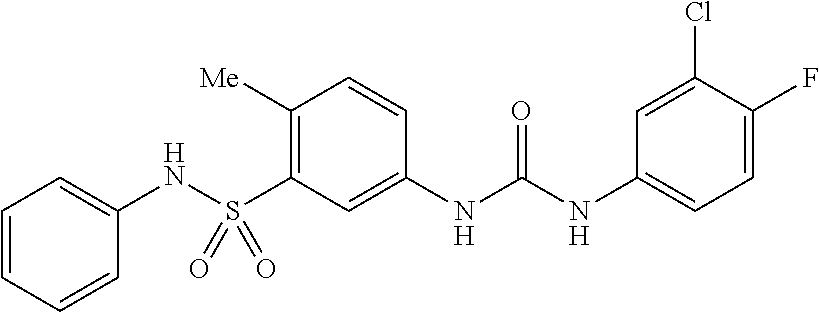
C00017
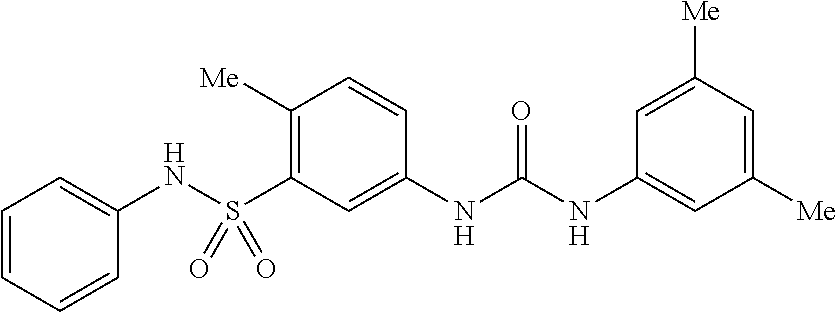
C00018

C00019

C00020

C00021

C00022

C00023

C00024

C00025

C00026

C00027

C00028

C00029

C00030

C00031

C00032

C00033

C00034

C00035

C00036

C00037

C00038

C00039

C00040

C00041

C00042

C00043

C00044

C00045

C00046

C00047
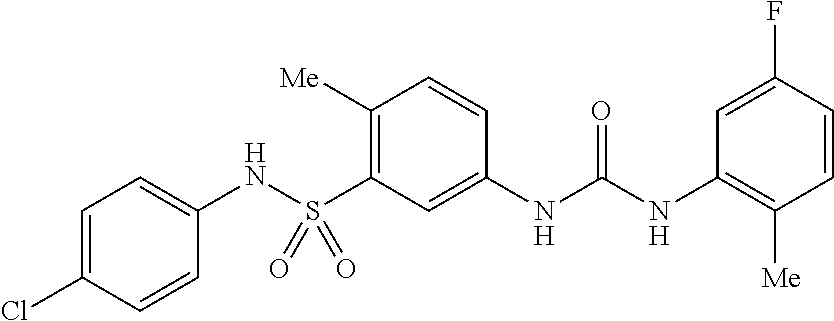
C00048

C00049

C00050

C00051

C00052
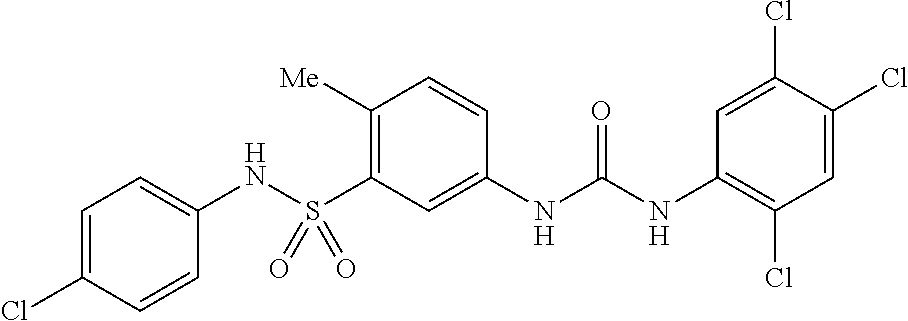
C00053

C00054

C00055

C00056

C00057

C00058

C00059

C00060

C00061

C00062

C00063

C00064

C00065

C00066
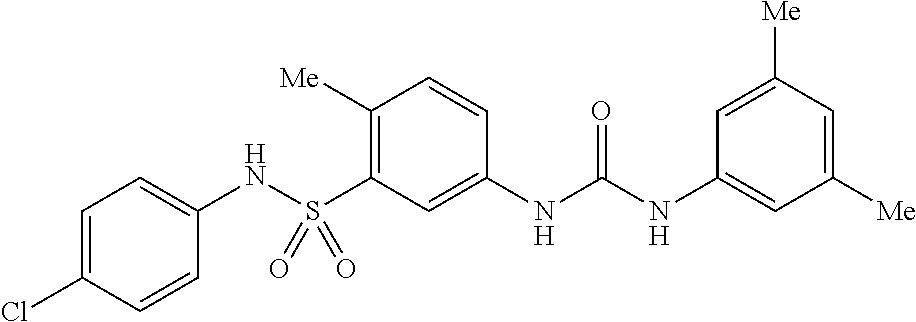
C00067
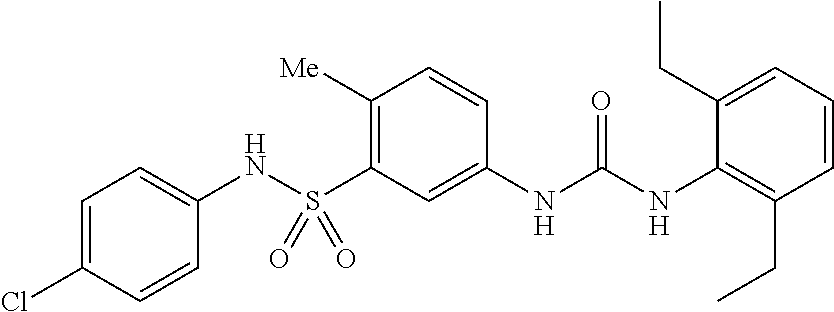
C00068

C00069

C00070

C00071

C00072

C00073

C00074
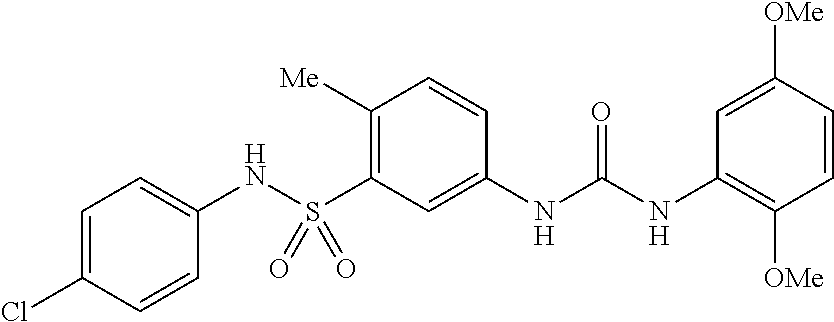
C00075

C00076

C00077

C00078

C00079

C00080

C00081

C00082

C00083

C00084

C00085

C00086

C00087

C00088

C00089

C00090

C00091

C00092

C00093

C00094

C00095
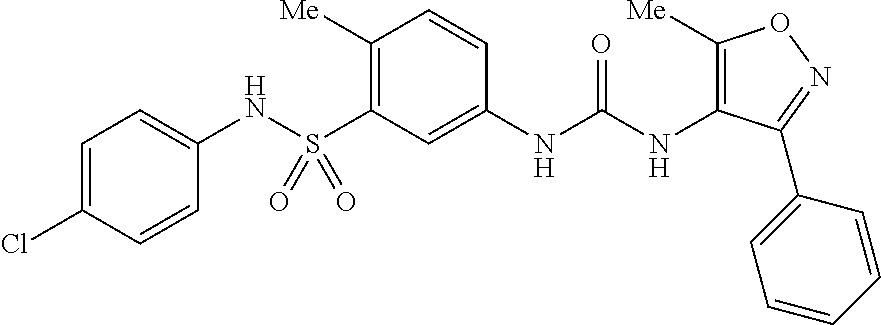
C00096

C00097

C00098

C00099

C00100

C00101

C00102

C00103

C00104

C00105

C00106

C00107

C00108

C00109

C00110

C00111

C00112

C00113

C00114

C00115

C00116

C00117

C00118

C00119

C00120
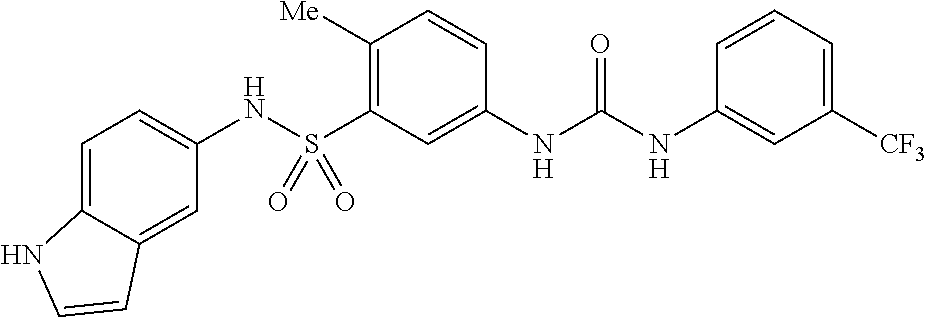
C00121

C00122
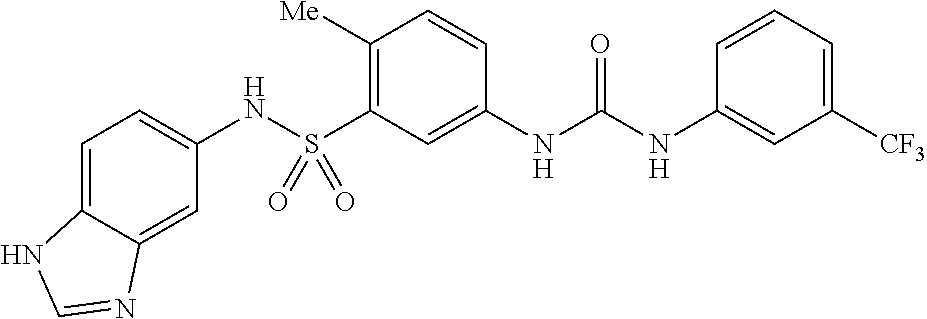
C00123

C00124

C00125

C00126

C00127
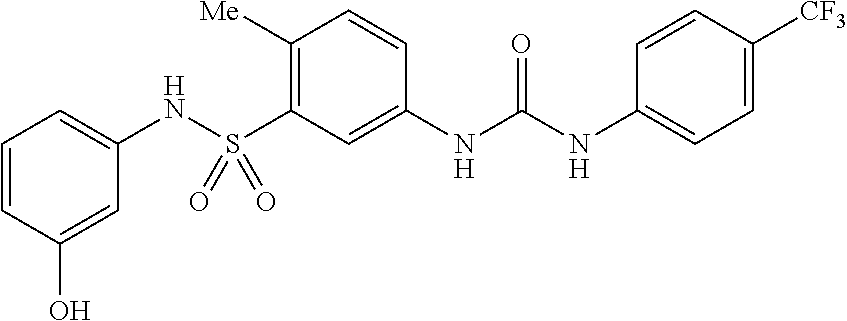
C00128

C00129

C00130

C00131

C00132

C00133

C00134

C00135
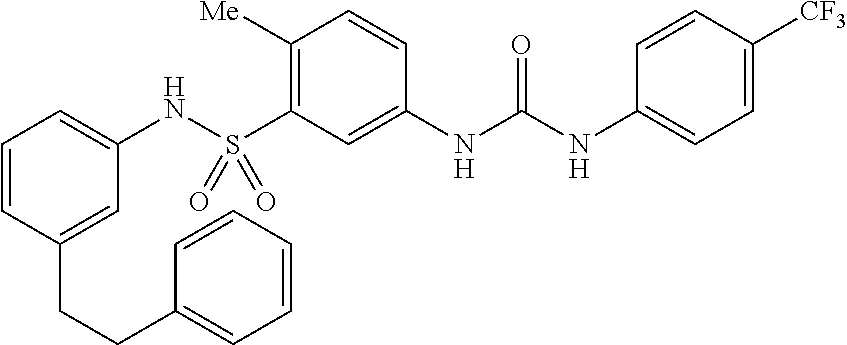
C00136
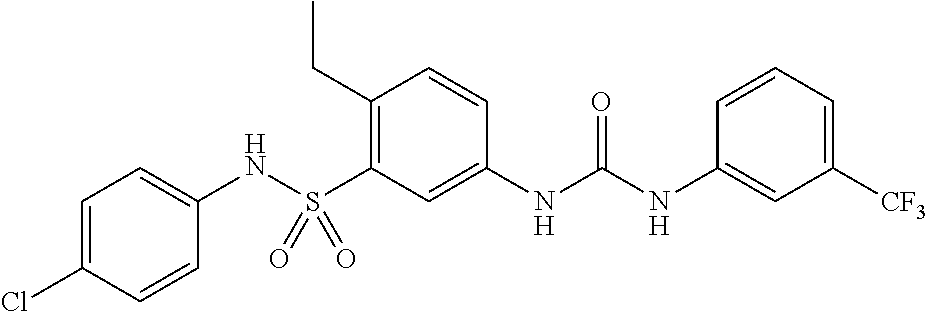
C00137

C00138

C00139

C00140

C00141

C00142

C00143

C00144
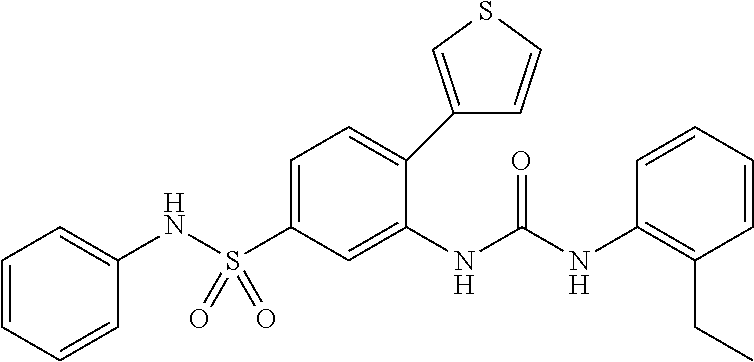
C00145
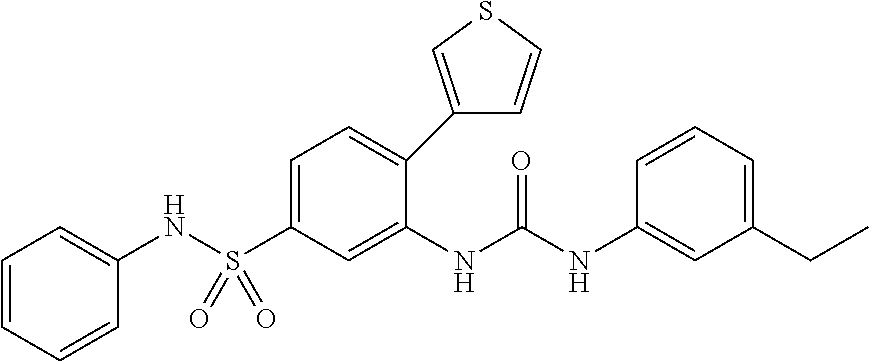
C00146

C00147

C00148

C00149
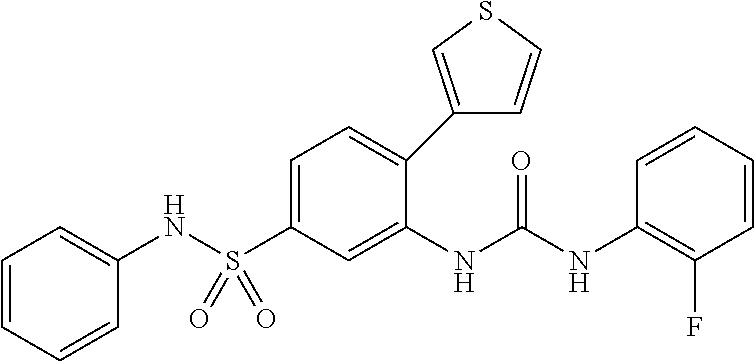
C00150

C00151
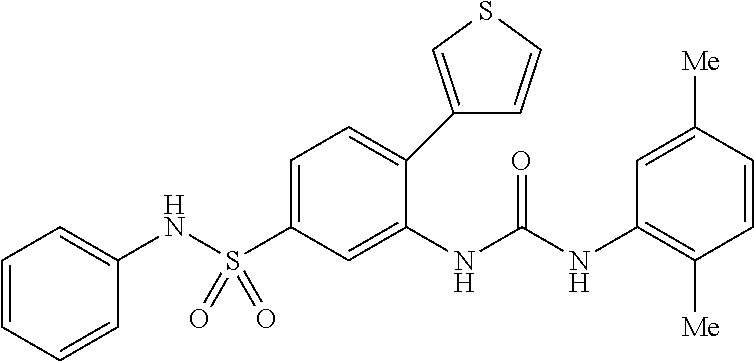
C00152
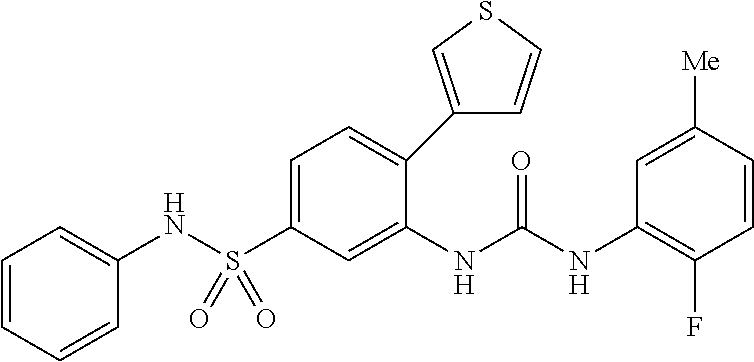
C00153
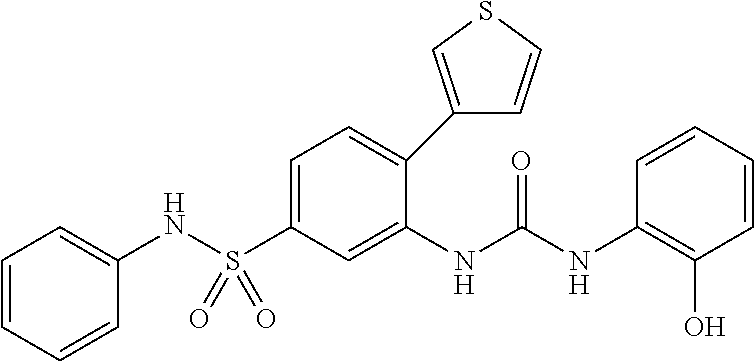
C00154

C00155

C00156

C00157

C00158

C00159
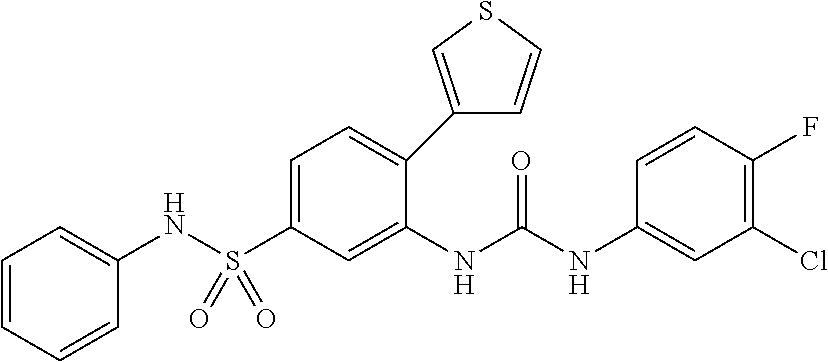
C00160

C00161

C00162

C00163
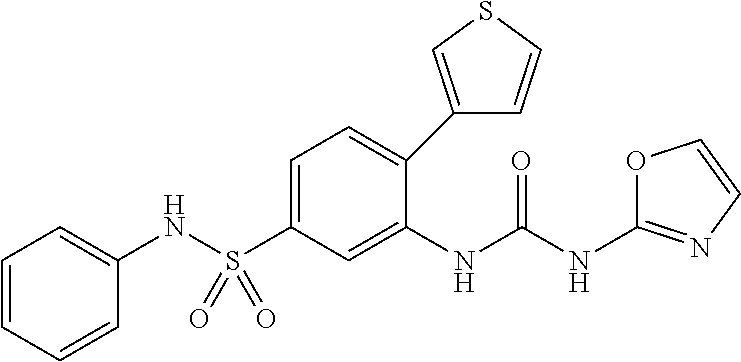
C00164
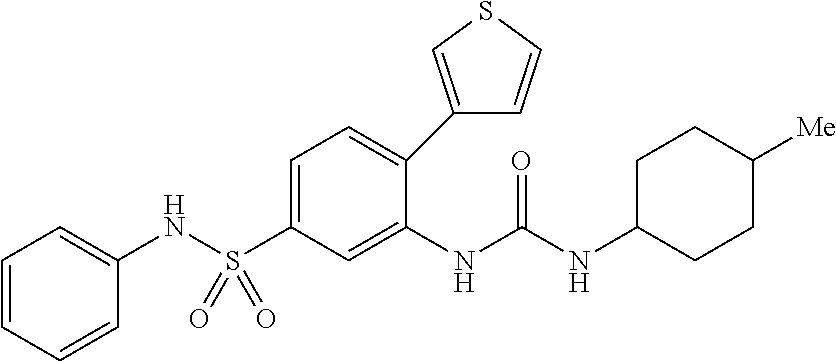
C00165
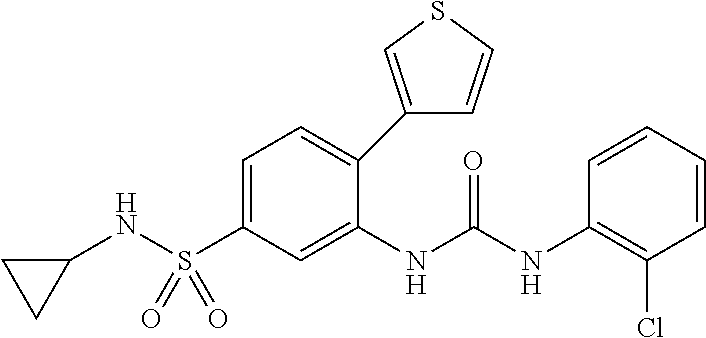
C00166
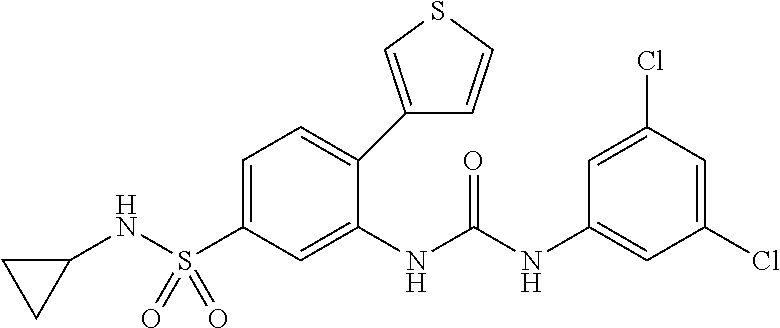
C00167
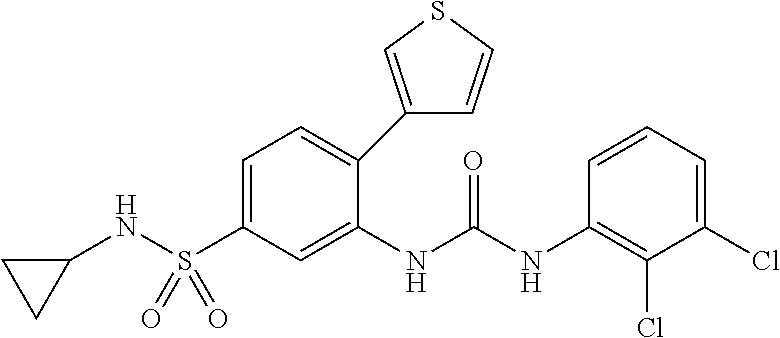
C00168
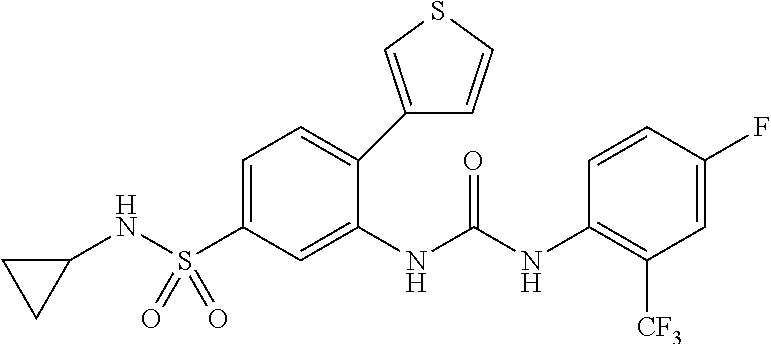
C00169
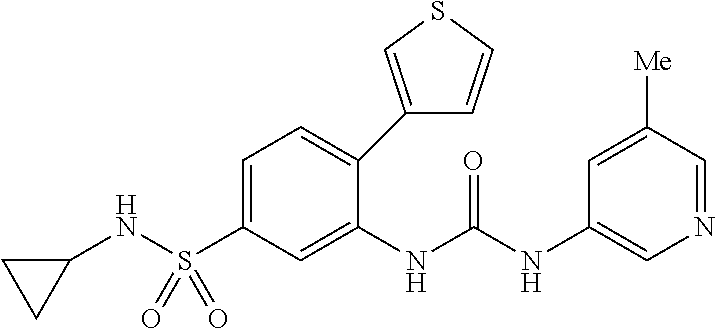
C00170

C00171
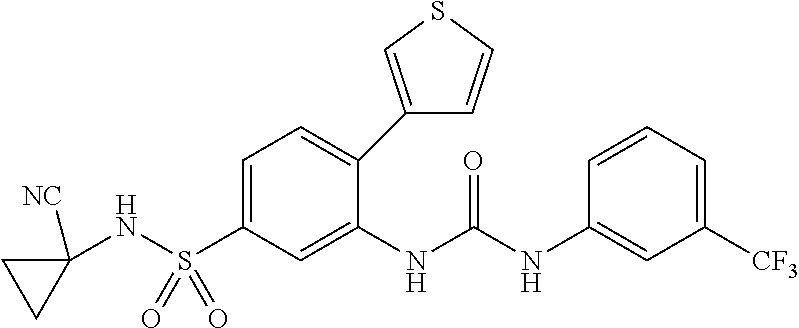
C00172

C00173
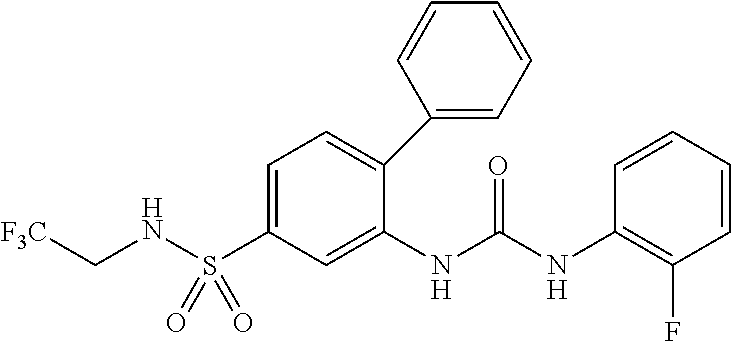
C00174
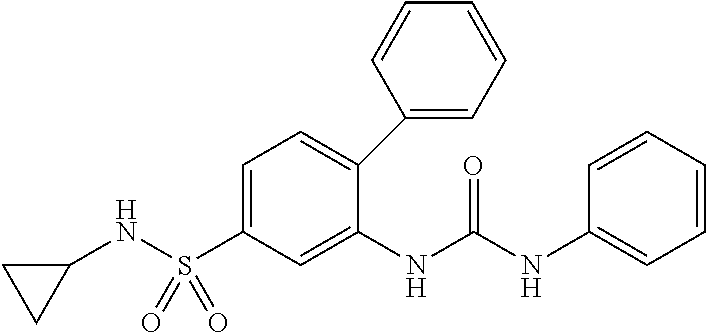
C00175
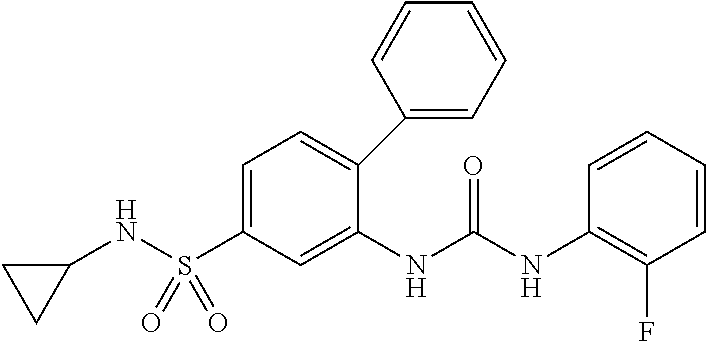
C00176

C00177

C00178
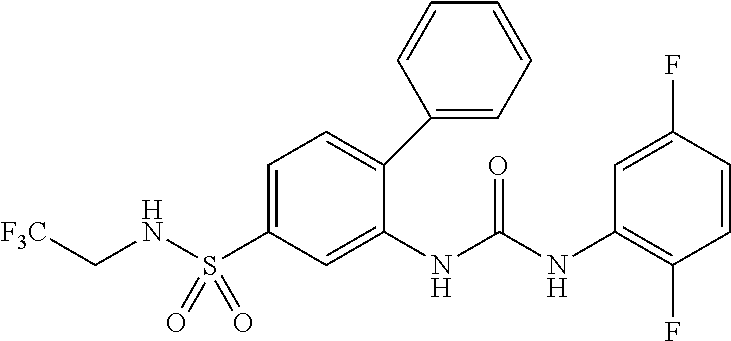
C00179

C00180

C00181

C00182
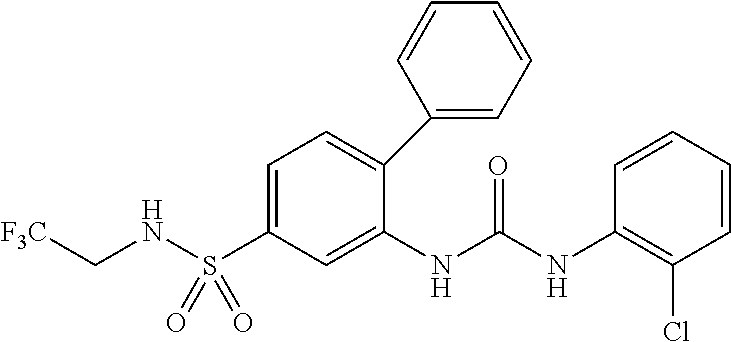
C00183
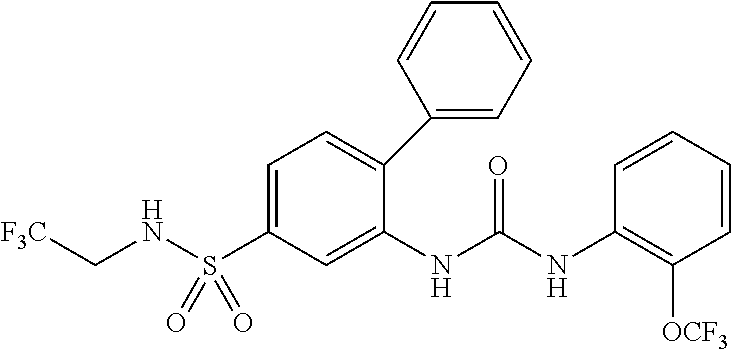
C00184
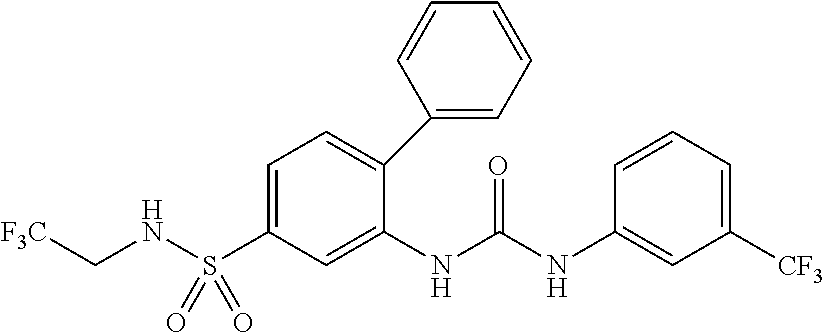
C00185
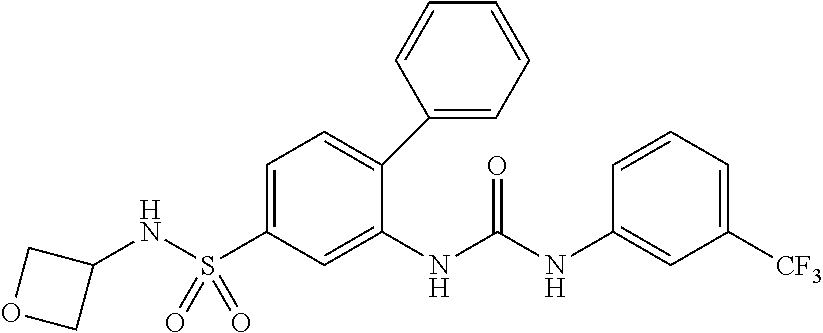
C00186
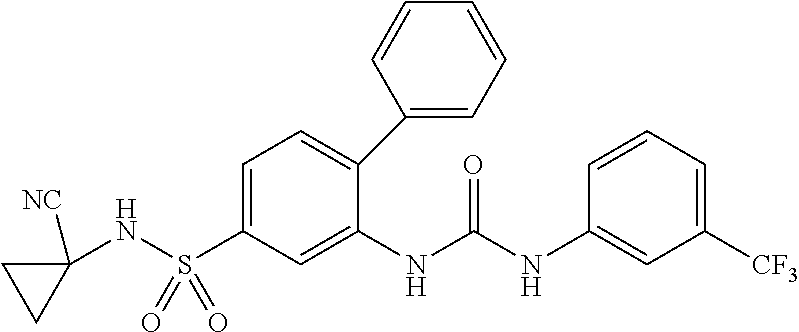
C00187
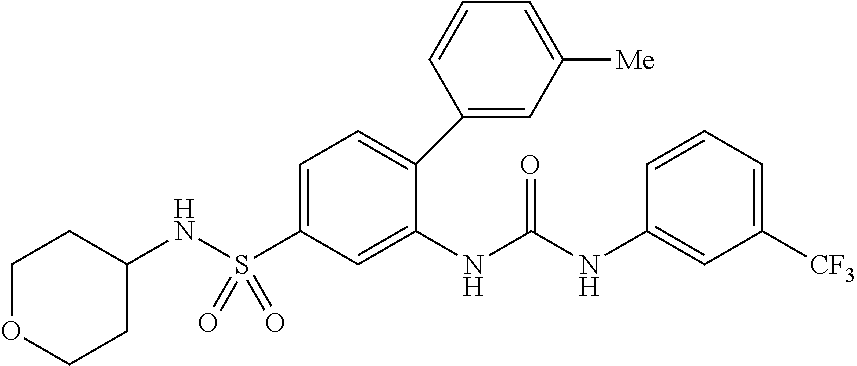
C00188
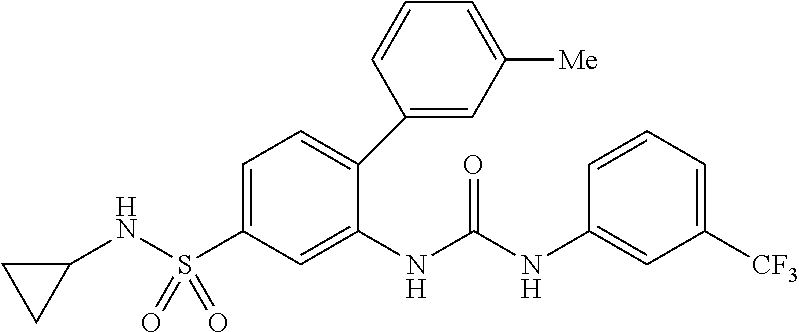
C00189

C00190

C00191
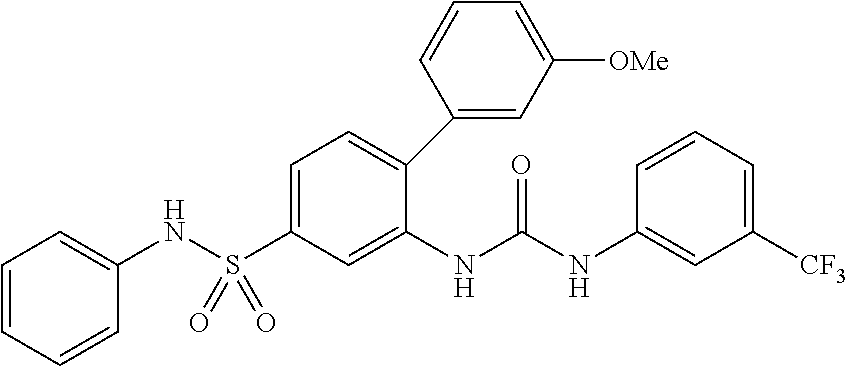
C00192

C00193
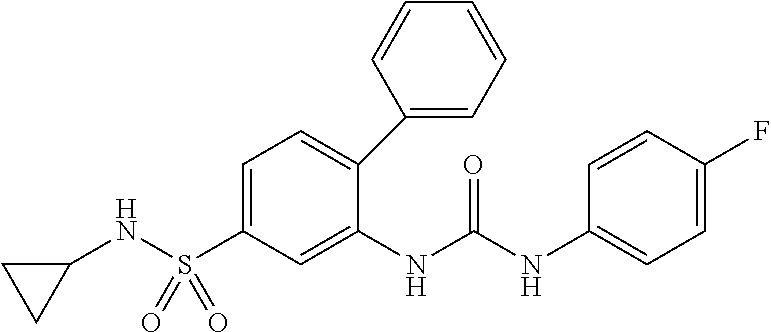
C00194
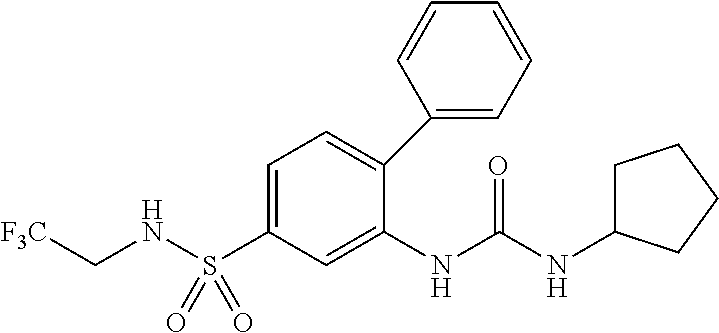
C00195
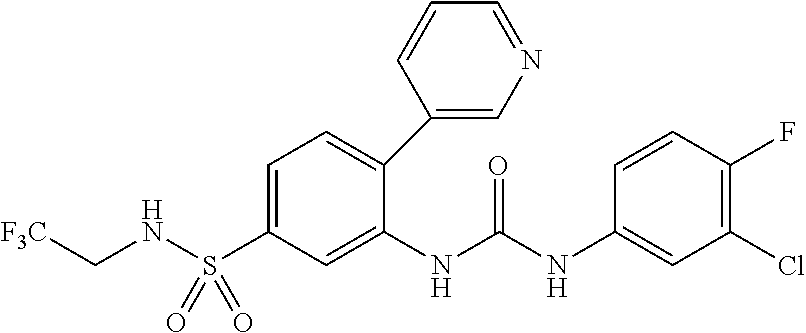
C00196
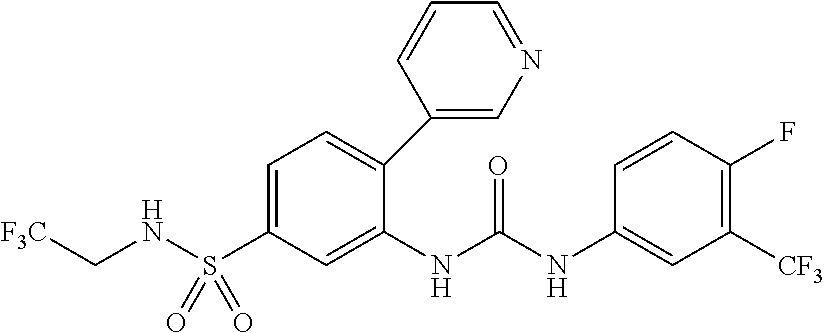
C00197

C00198

C00199
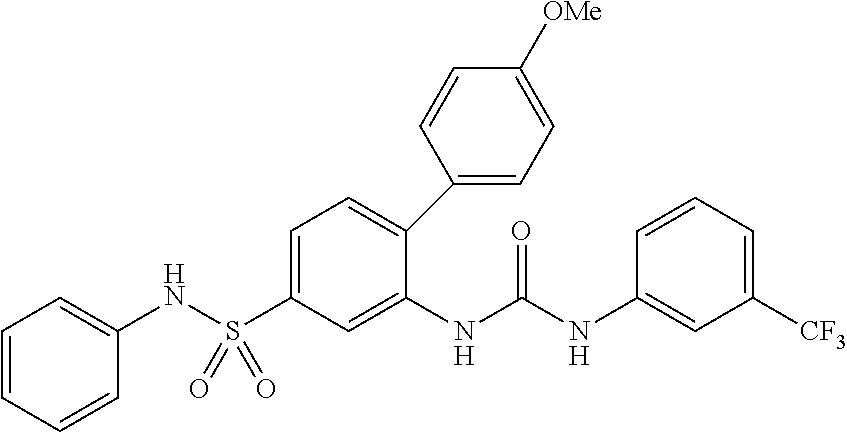
C00200

C00201
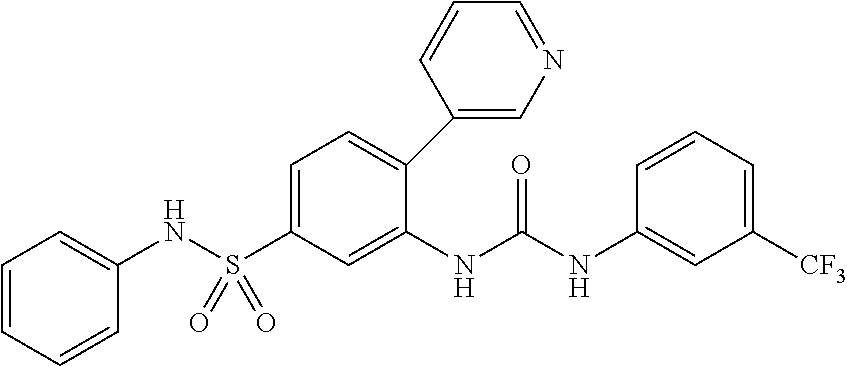
C00202
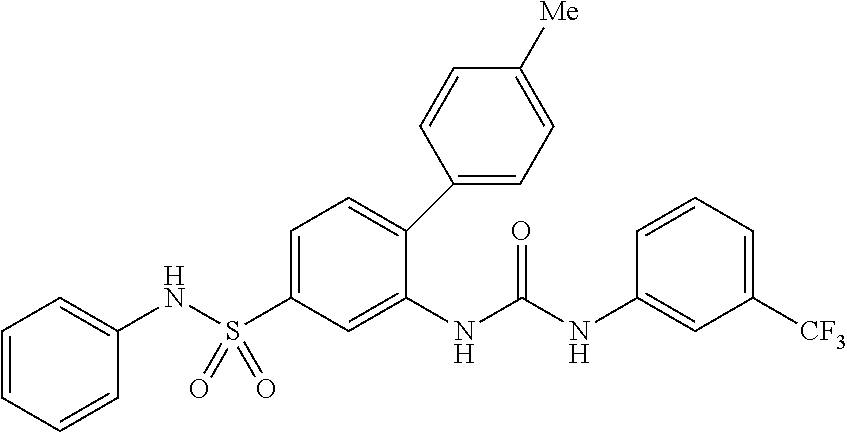
C00203

C00204

C00205

C00206

C00207

C00208
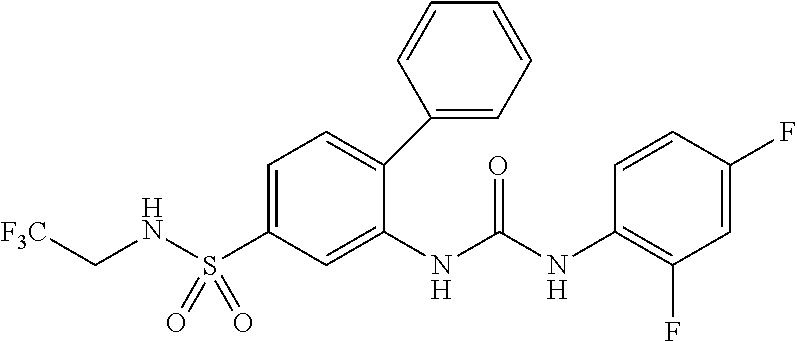
C00209

C00210

C00211
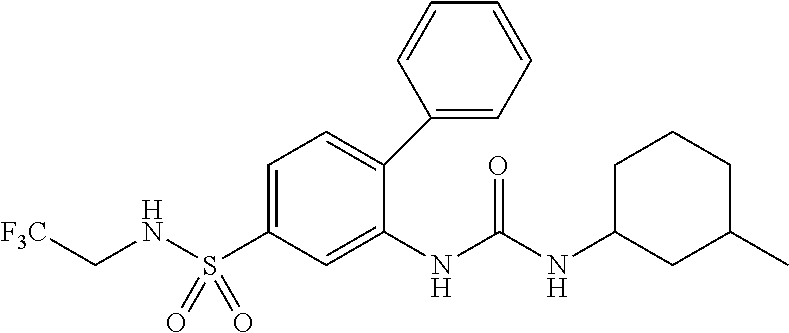
C00212
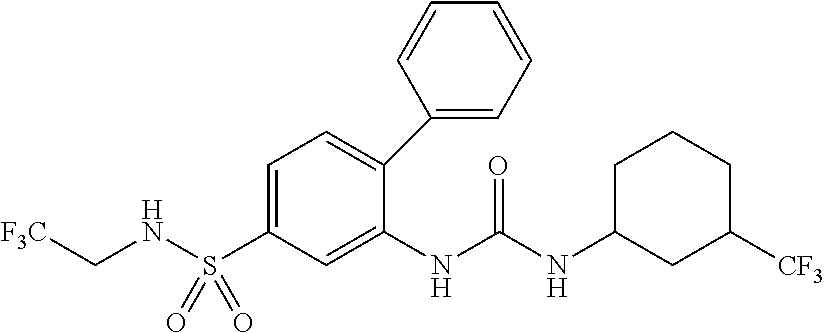
C00213

C00214

C00215
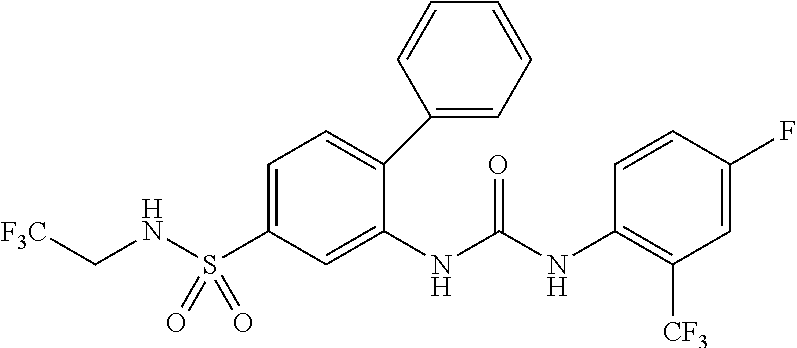
C00216

C00217

C00218

C00219

C00220

C00221

C00222
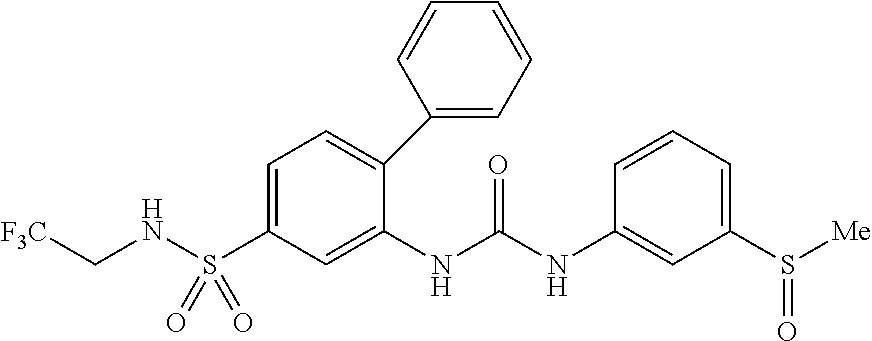
C00223

C00224
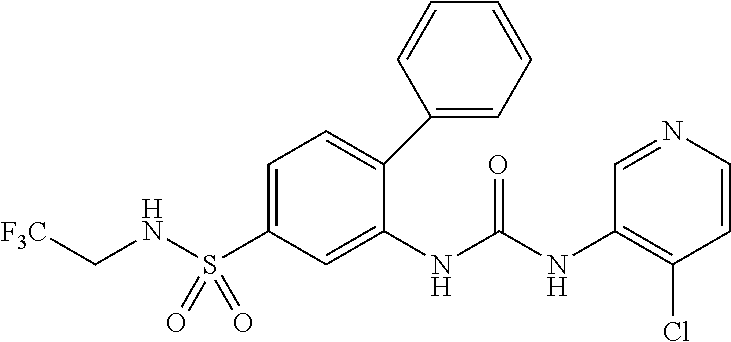
C00225
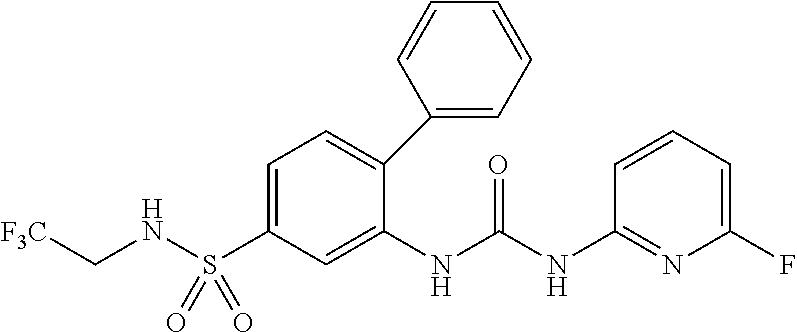
C00226

C00227
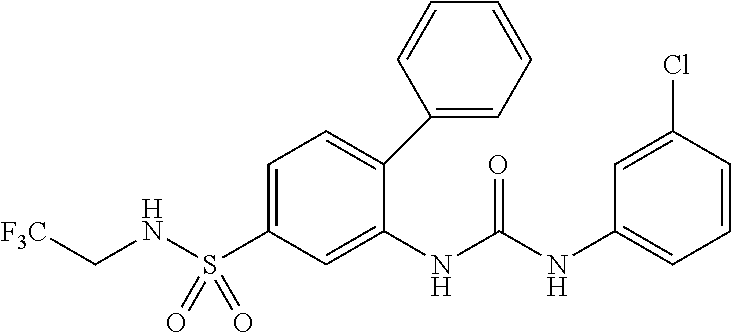
C00228

C00229

C00230

C00231

C00232

C00233
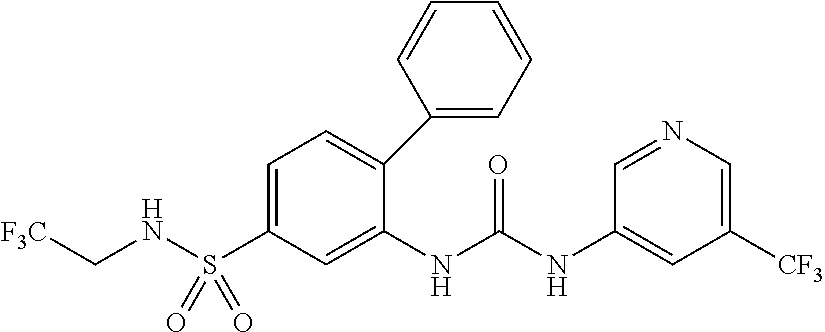
C00234

C00235
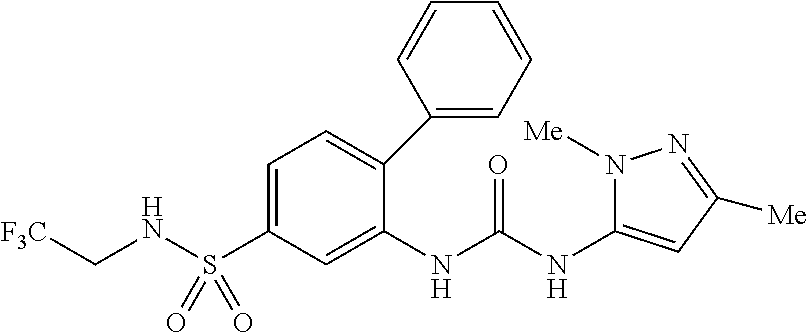
C00236
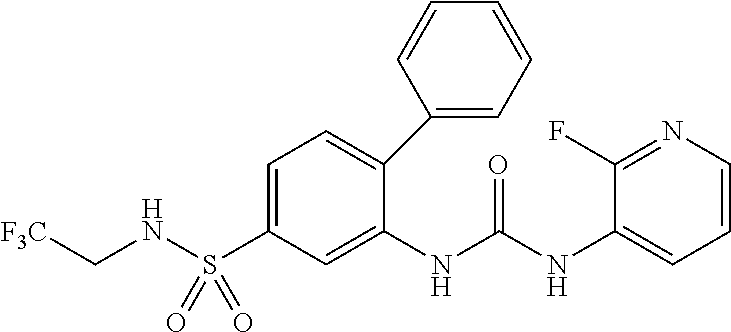
C00237

C00238

C00239

C00240

C00241

C00242

C00243

C00244
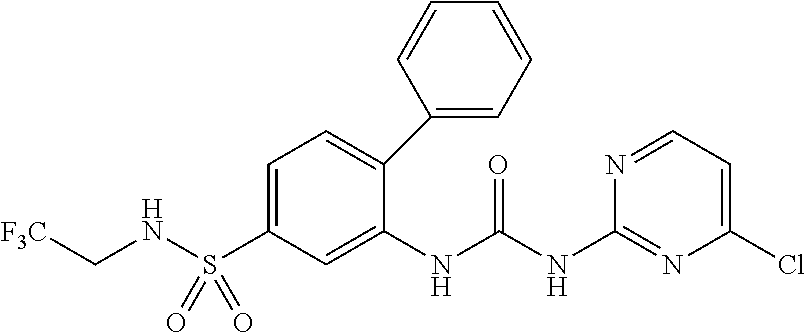
C00245
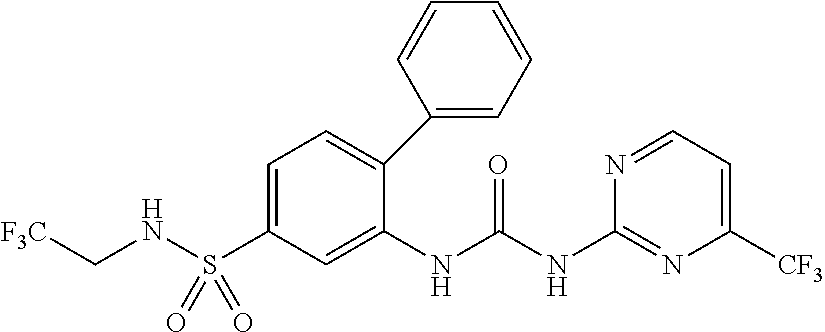
C00246

C00247
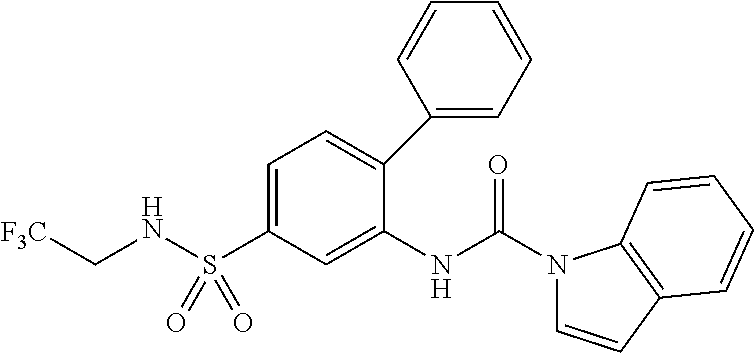
C00248
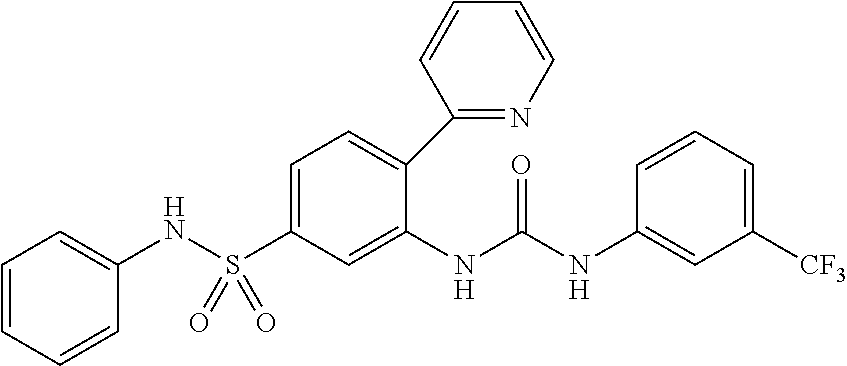
C00249
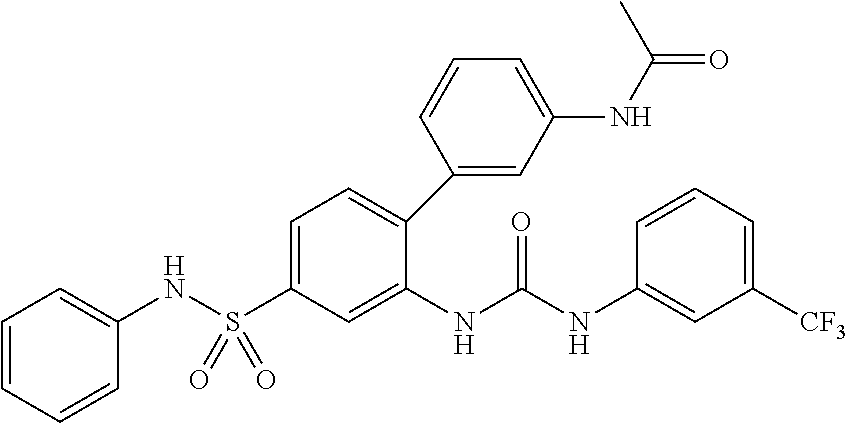
C00250
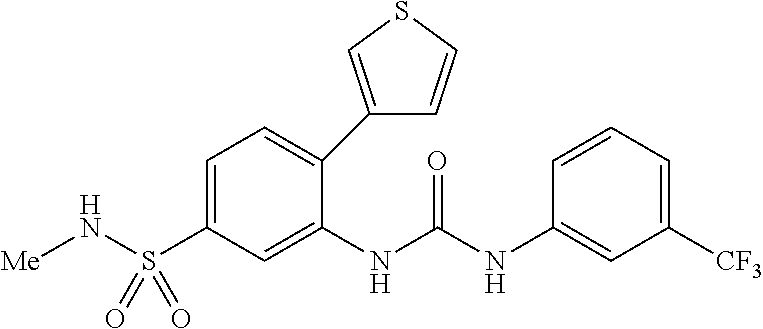
C00251
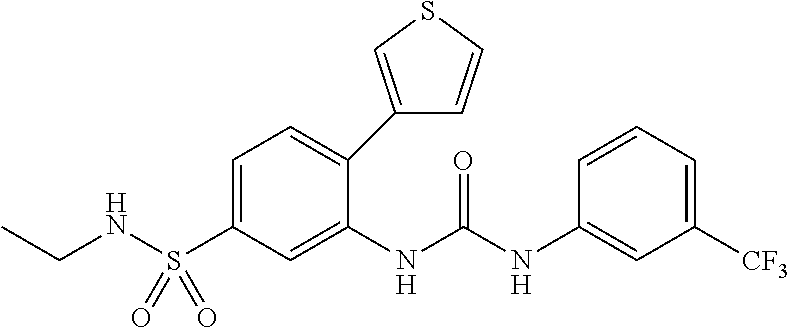
C00252
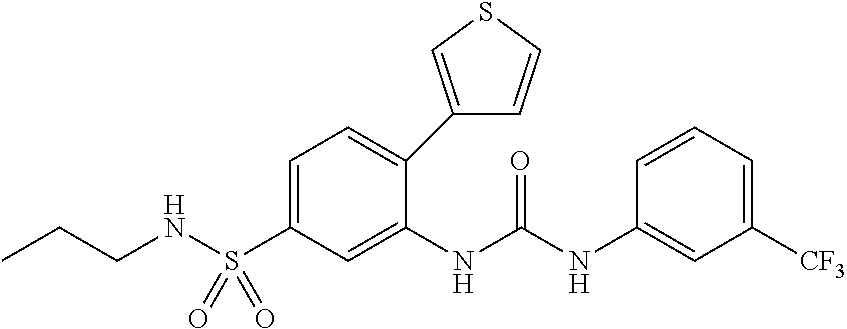
C00253
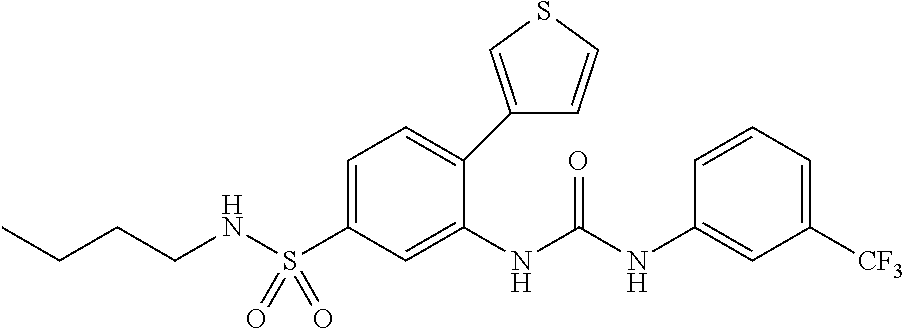
C00254
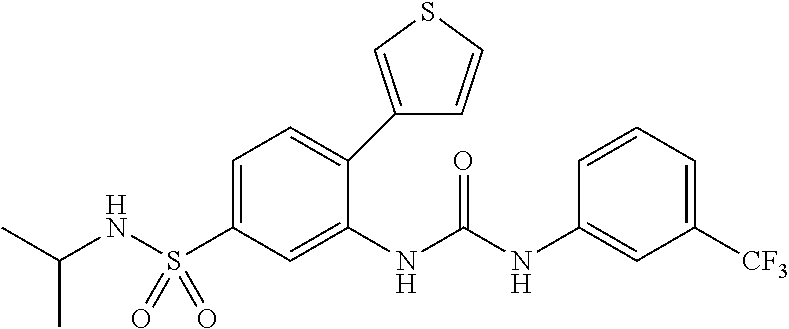
C00255
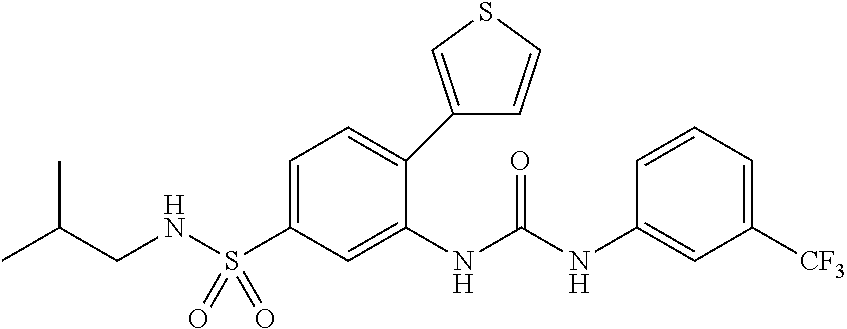
C00256

C00257

C00258

C00259
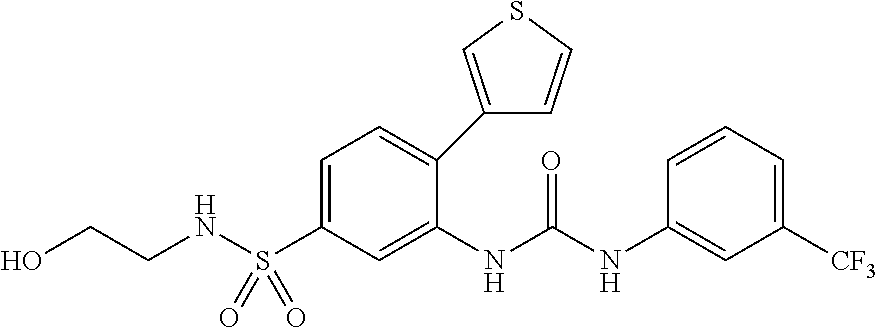
C00260

C00261
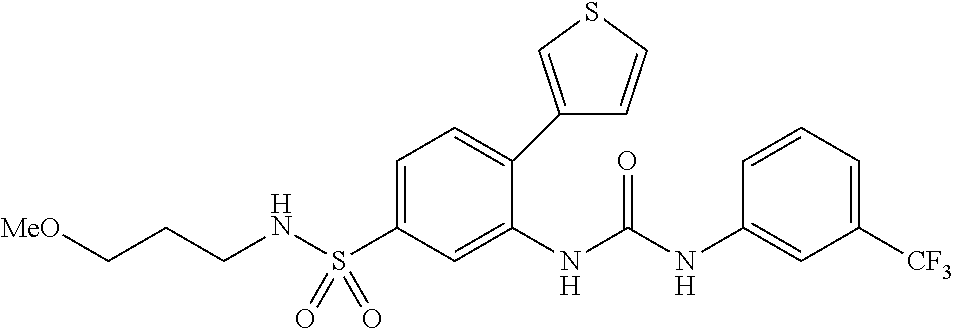
C00262

C00263
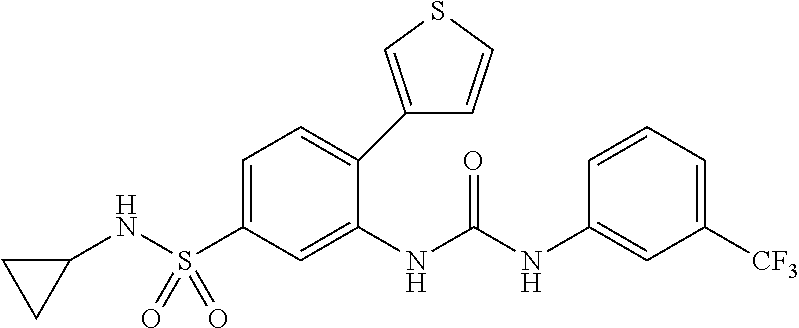
C00264
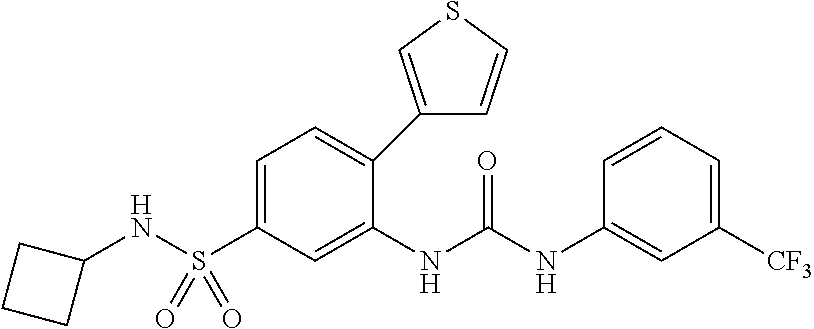
C00265

C00266

C00267
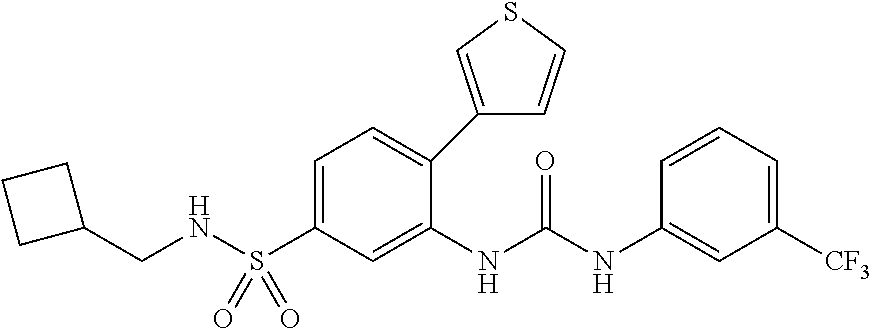
C00268
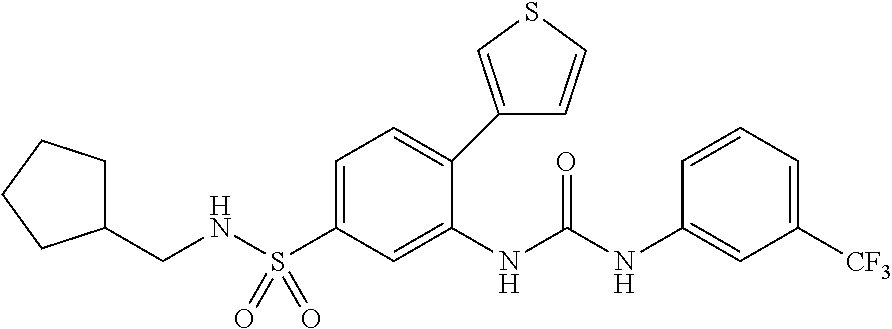
C00269
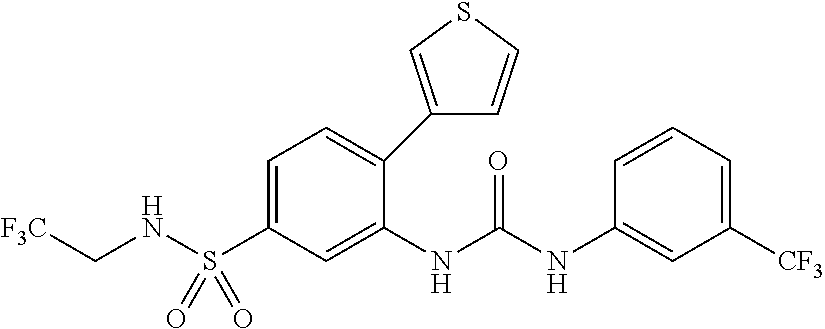
C00270

C00271
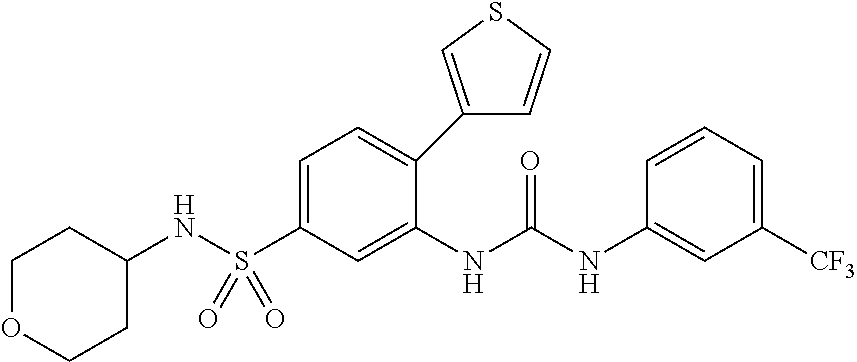
C00272
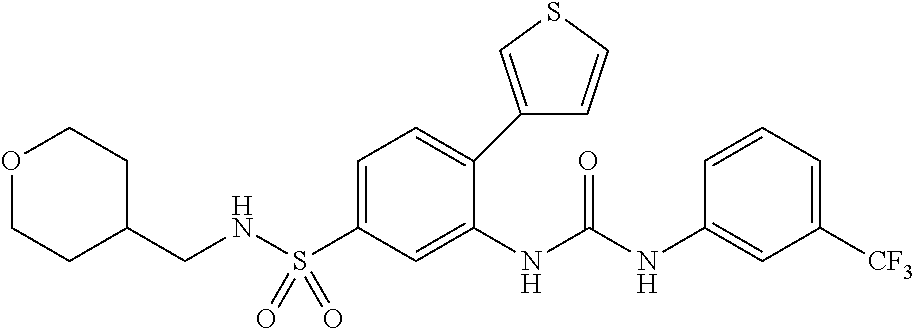
C00273
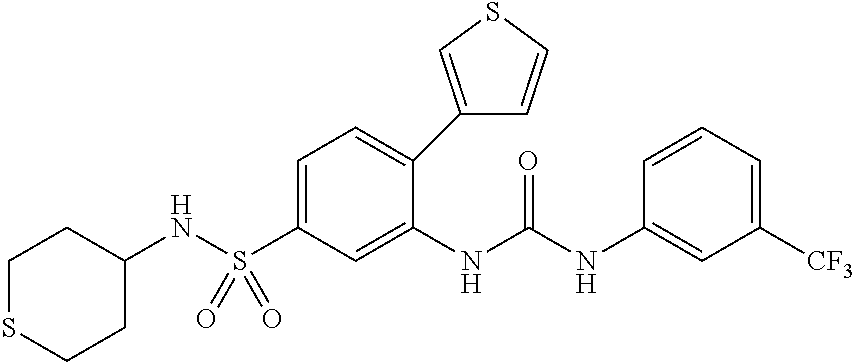
C00274
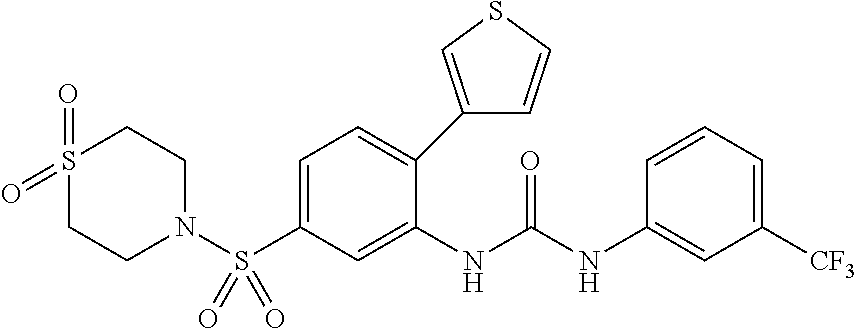
C00275

C00276

C00277

C00278

C00279
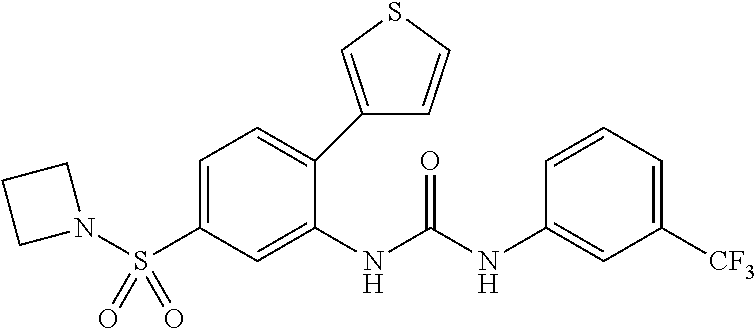
C00280
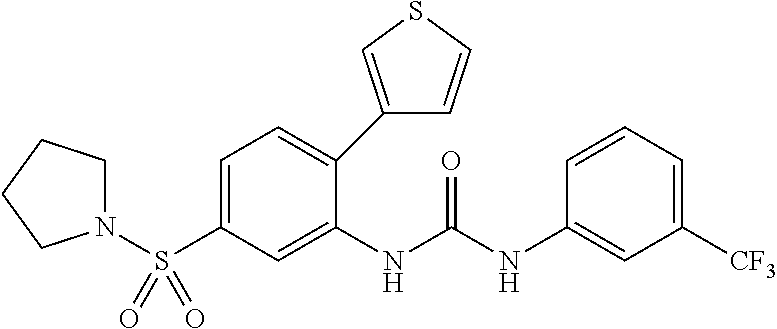
C00281
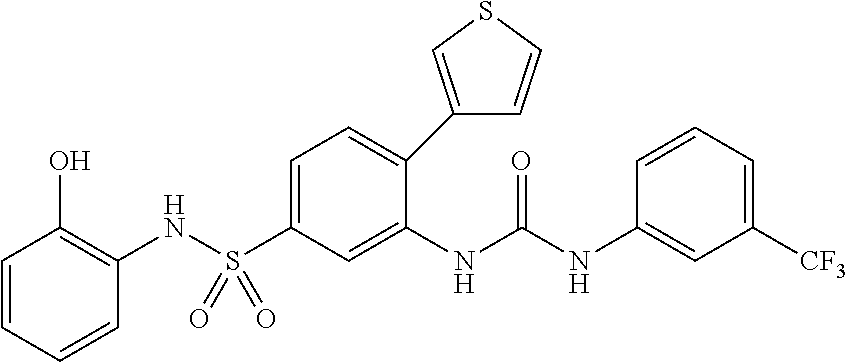
C00282

C00283

C00284
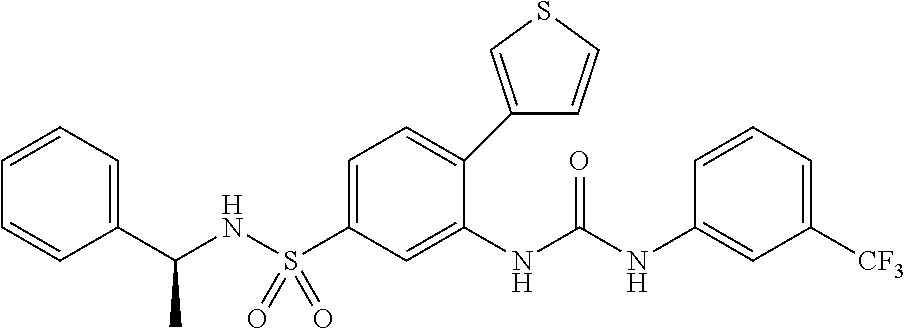
C00285

C00286

C00287
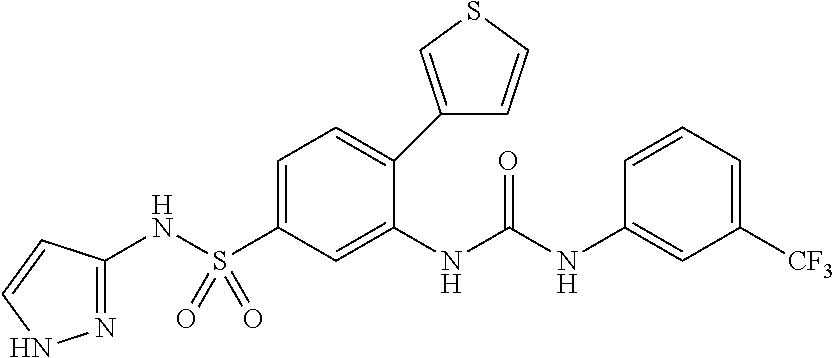
C00288
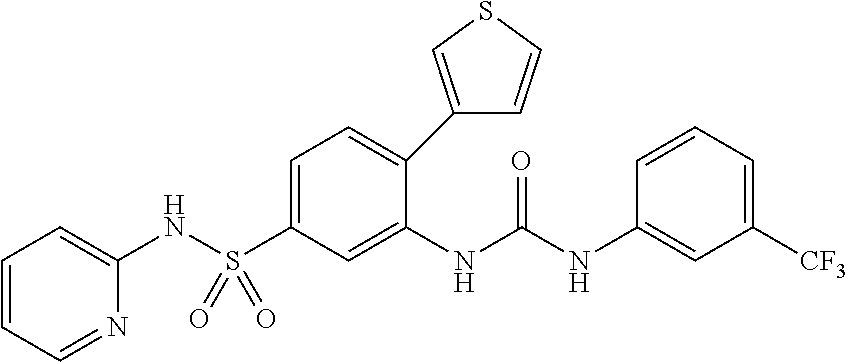
C00289
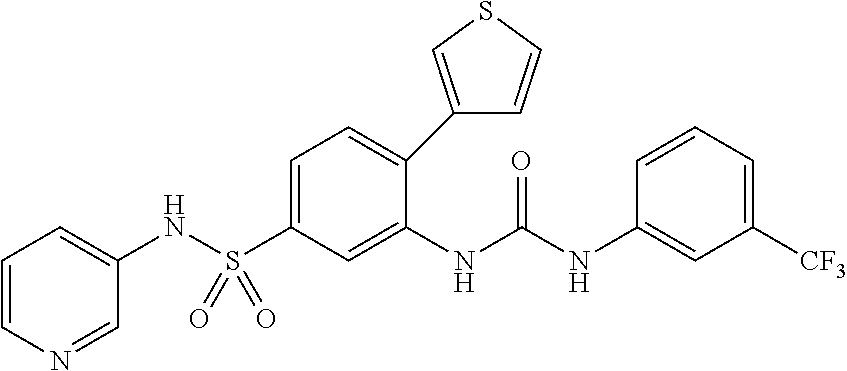
C00290
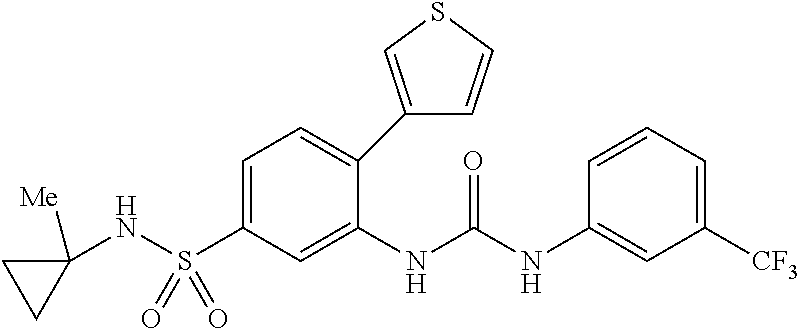
C00291

C00292

C00293
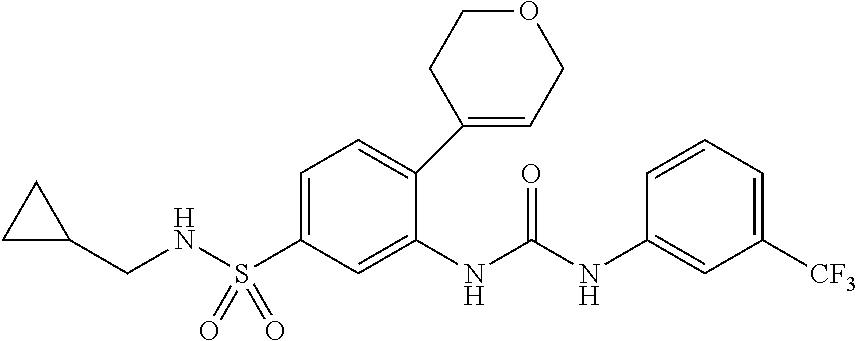
C00294

C00295
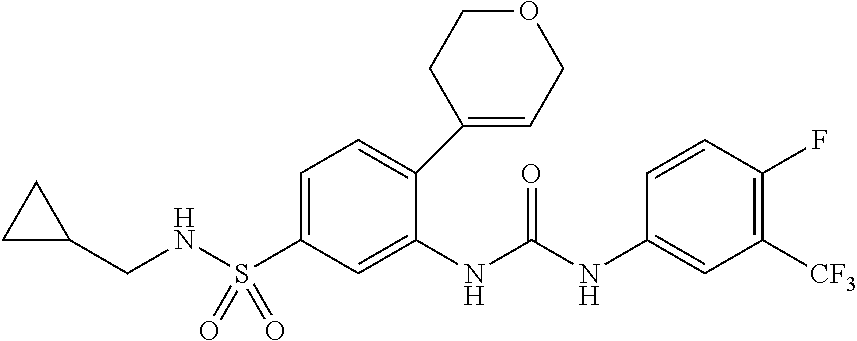
C00296
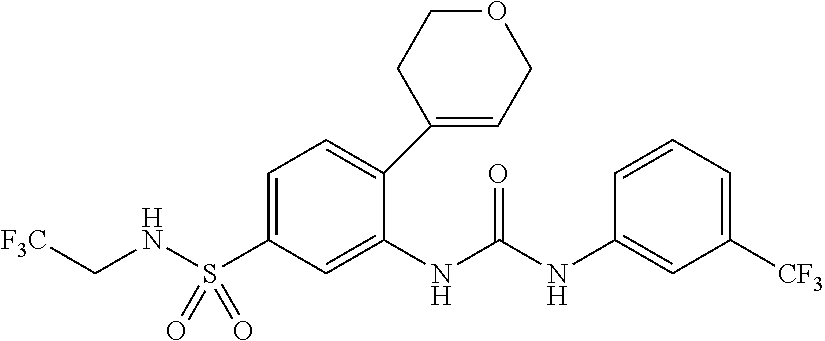
C00297

C00298

C00299
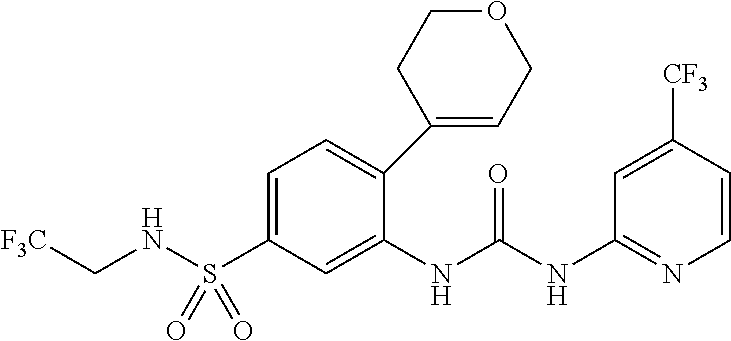
C00300
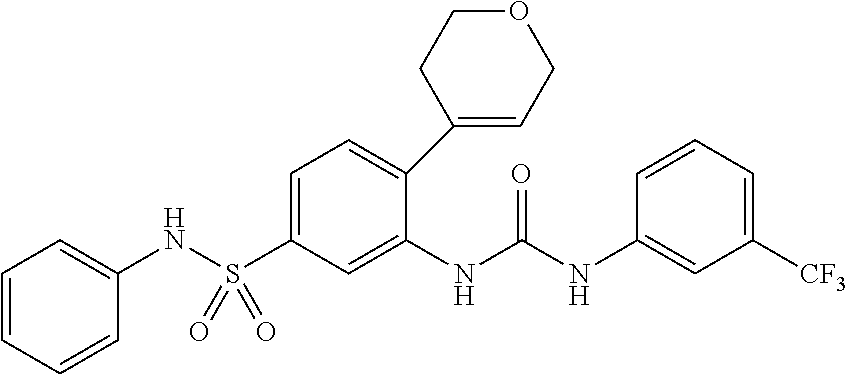
C00301
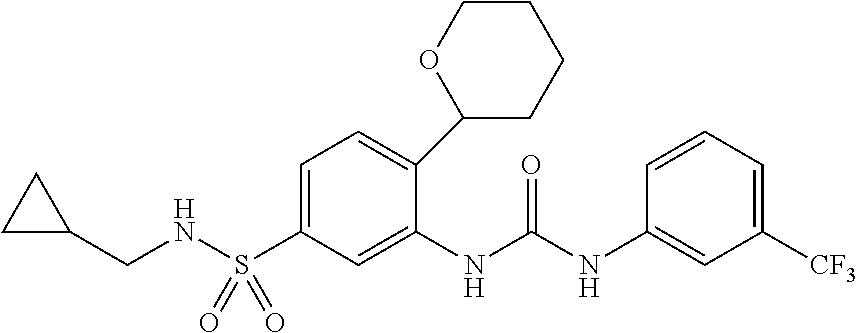
C00302

C00303
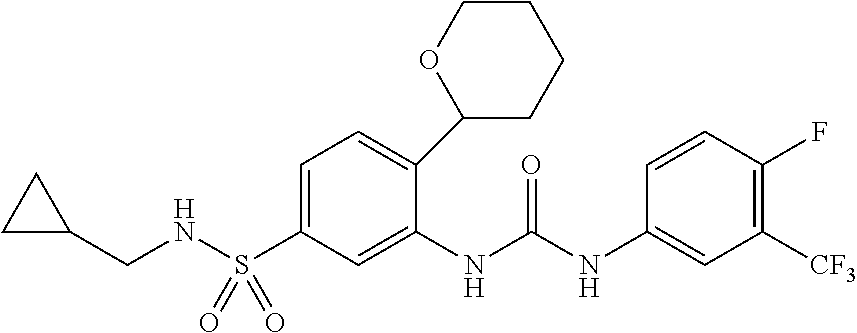
C00304
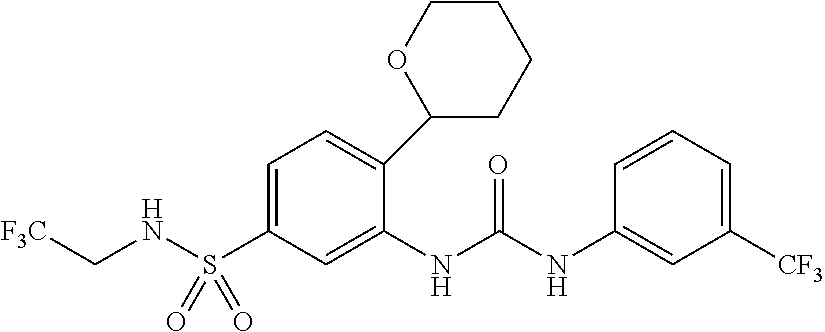
C00305

C00306
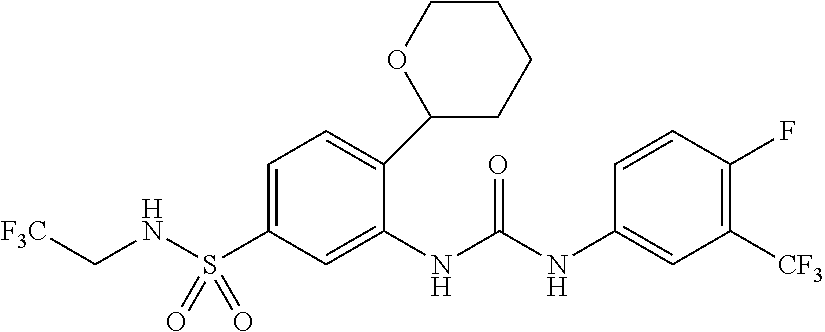
C00307

C00308

C00309

C00310
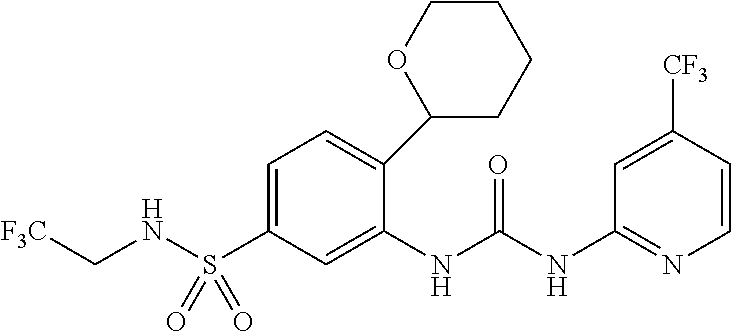
C00311

C00312

C00313

C00314
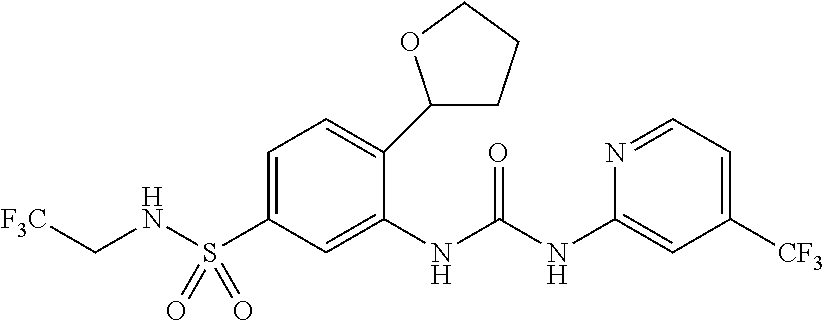
C00315
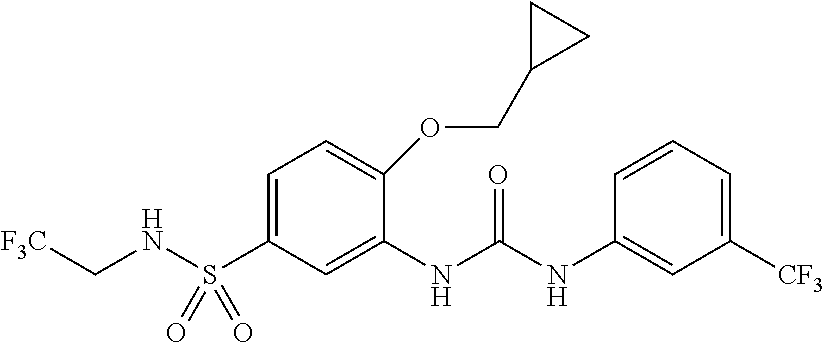
C00316
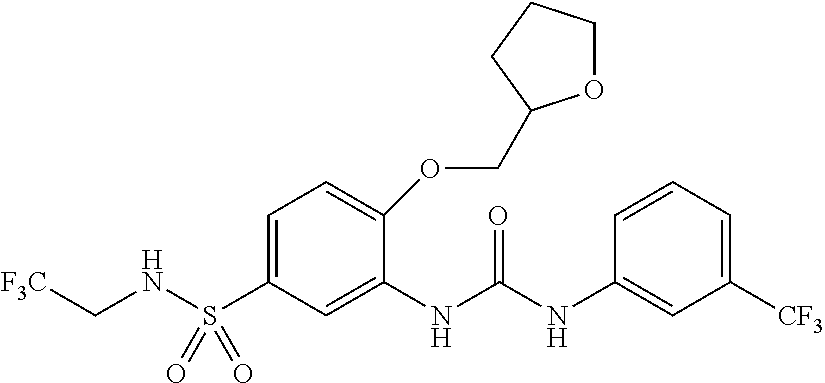
C00317

C00318
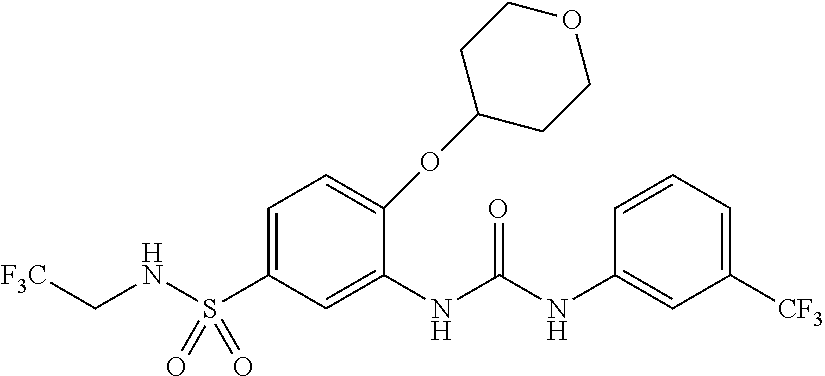
C00319
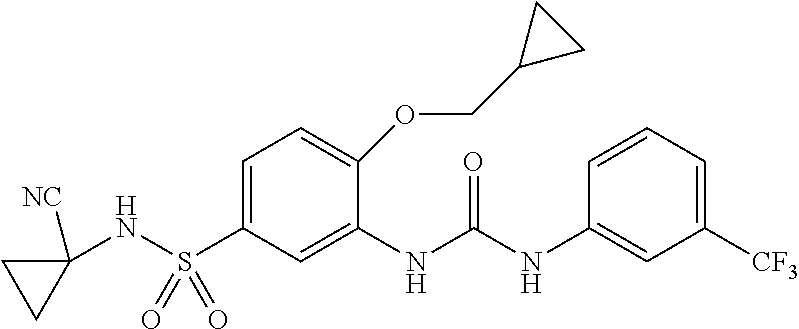
C00320

C00321

C00322

C00323

C00324

C00325

C00326
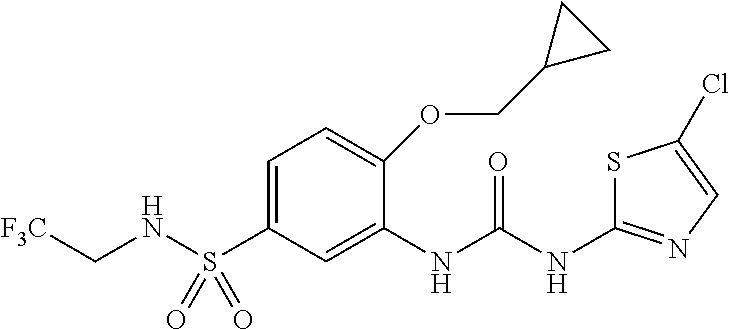
C00327

C00328
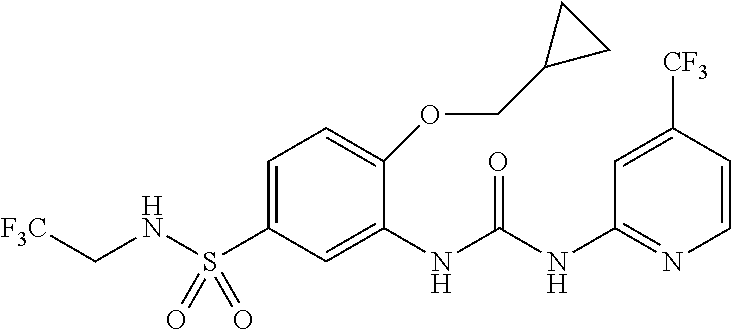
C00329

C00330

C00331

C00332

C00333

C00334
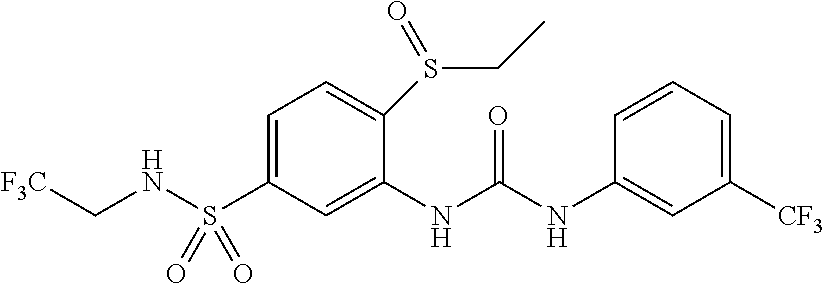
C00335
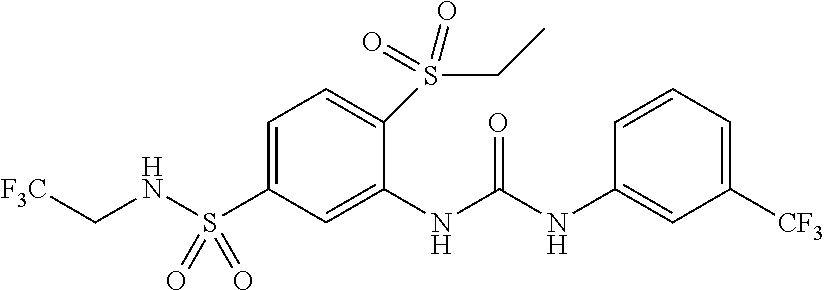
C00336

C00337
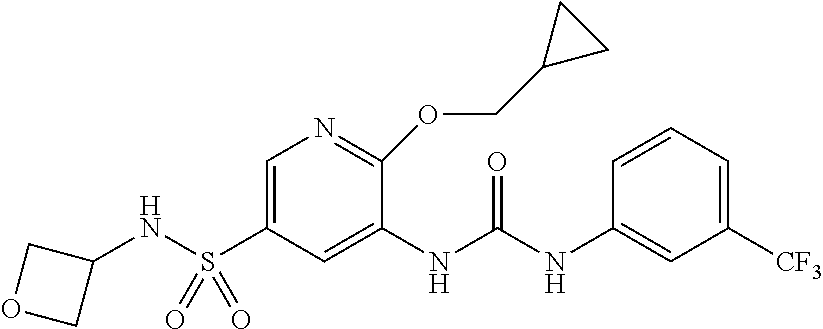
C00338

C00339

C00340

C00341

C00342
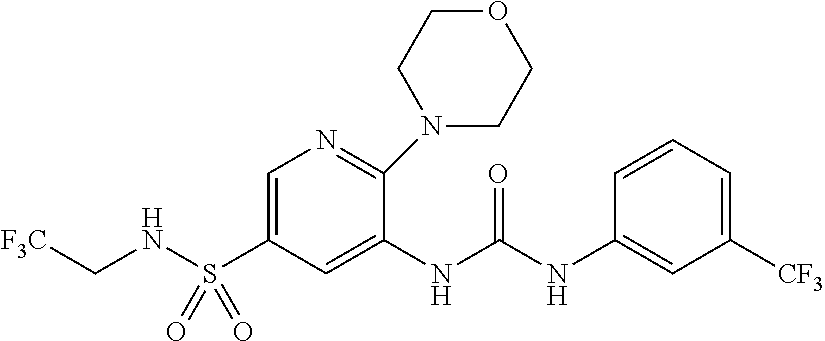
C00343

C00344
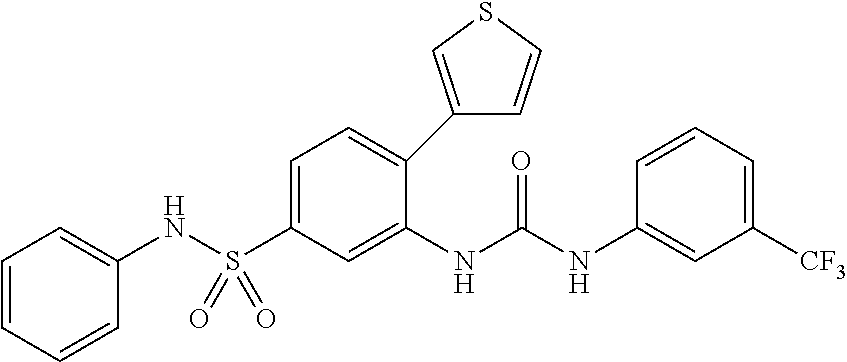
C00345

C00346

C00347
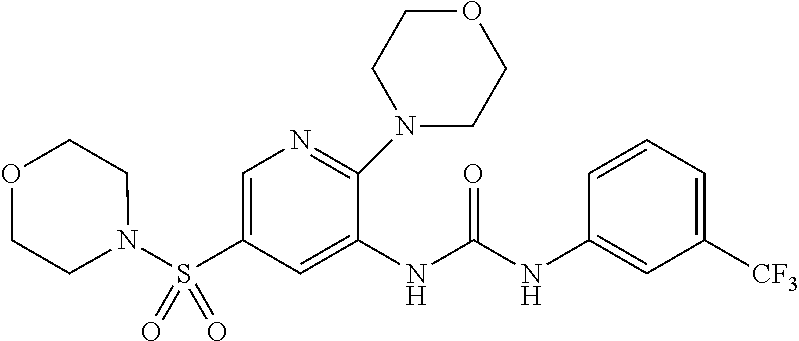
C00348
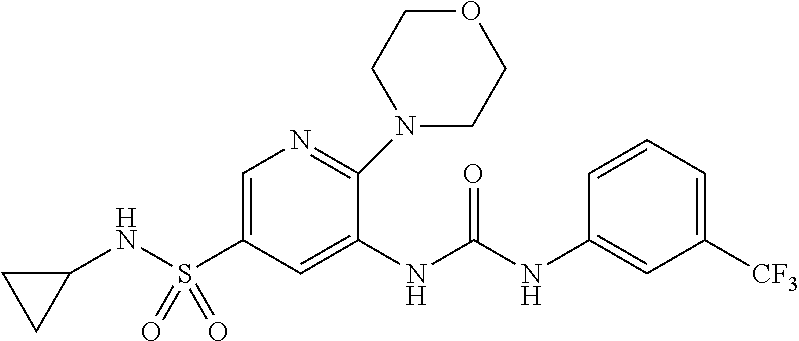
C00349
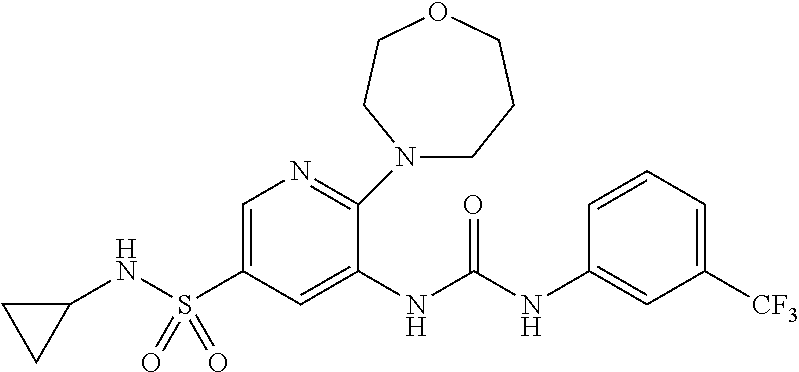
C00350
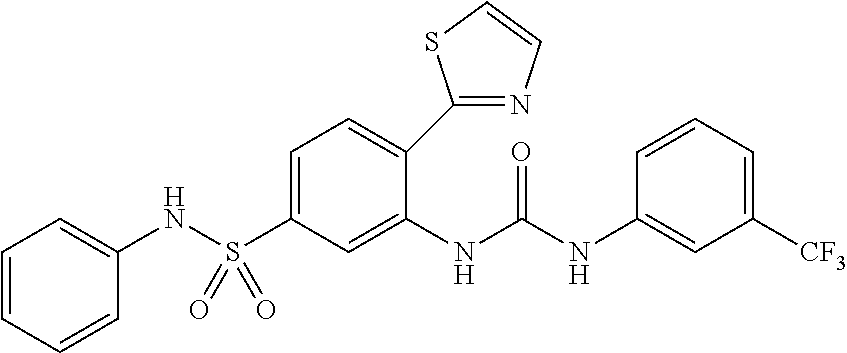
C00351

C00352

C00353

C00354

C00355
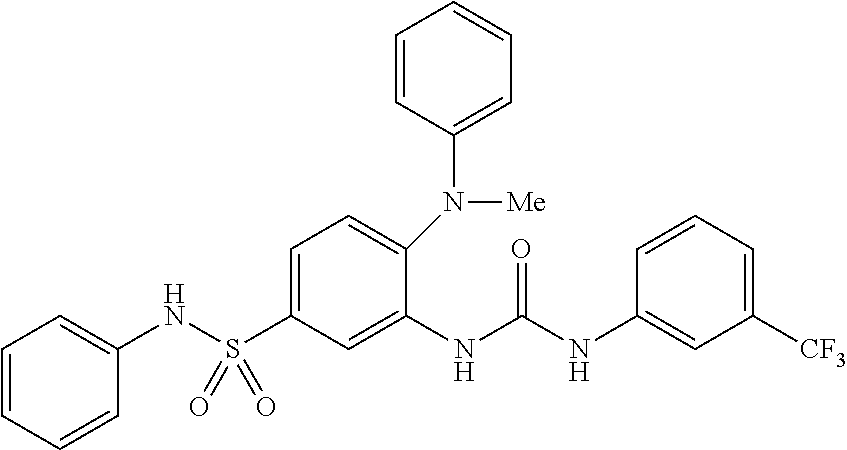
C00356
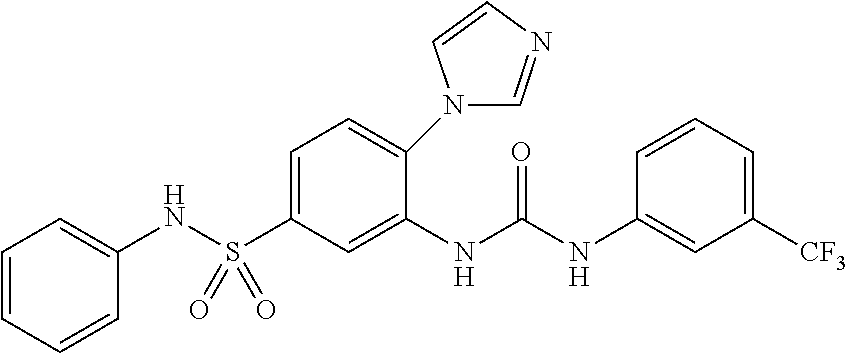
C00357

C00358
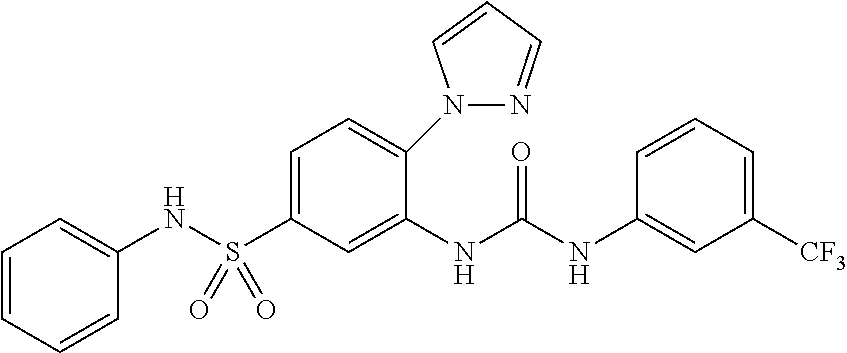
C00359

C00360

C00361
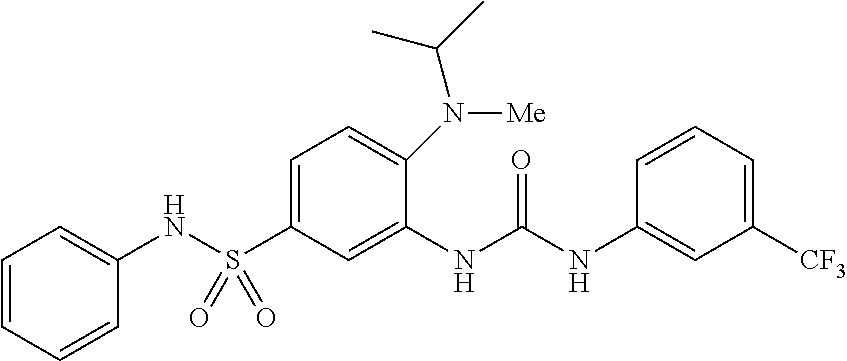
C00362

C00363

C00364
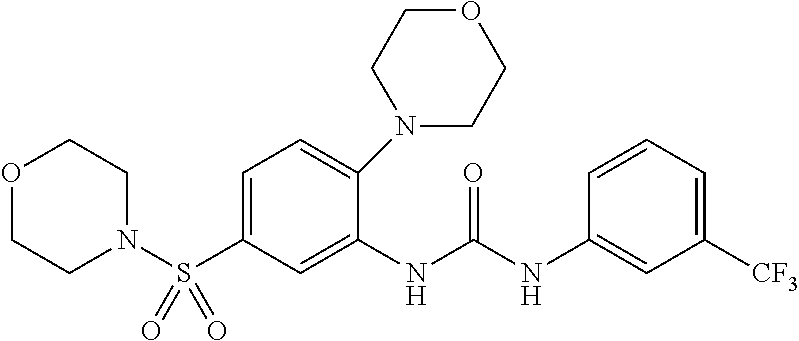
C00365

C00366

C00367
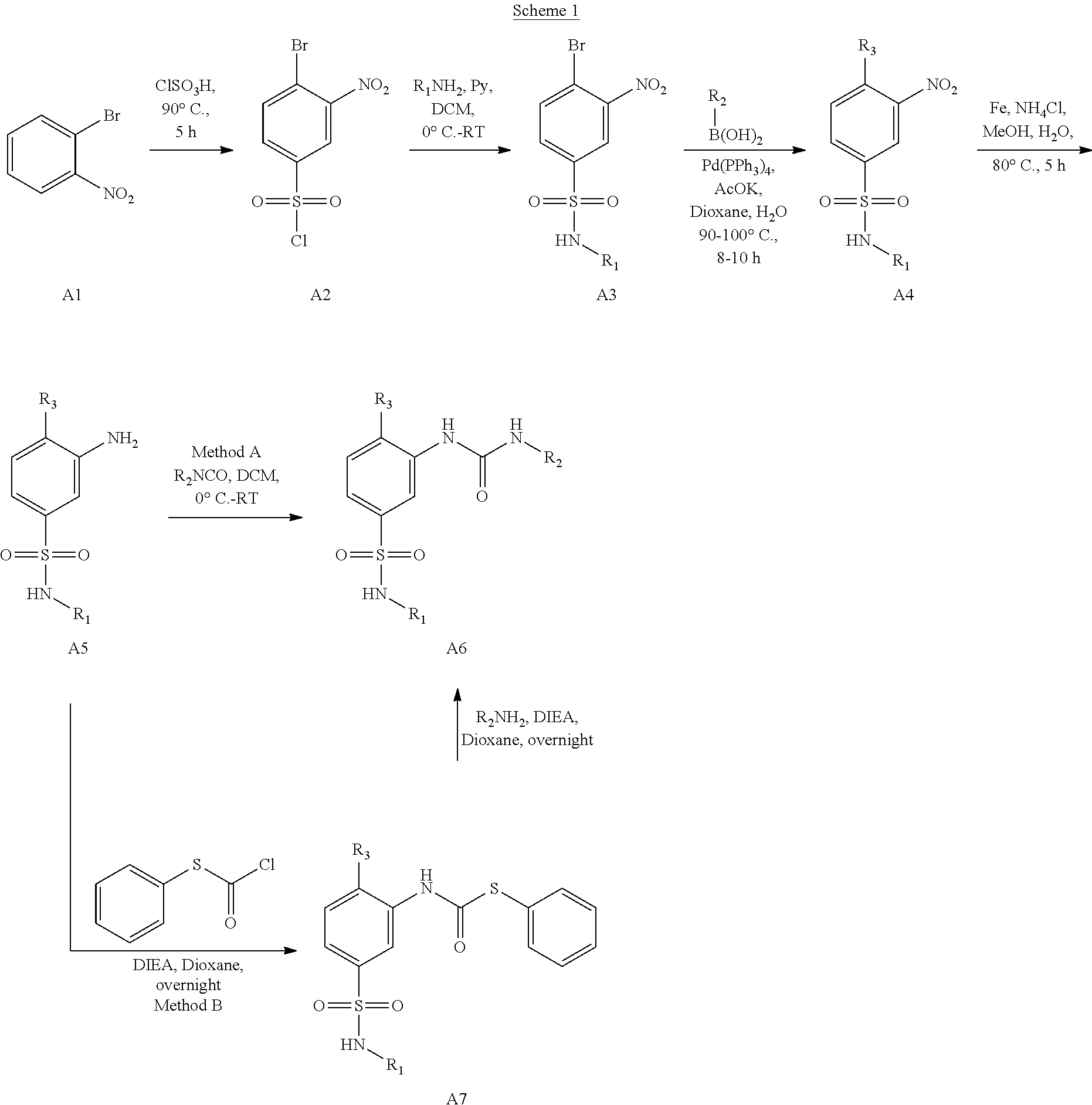
C00368
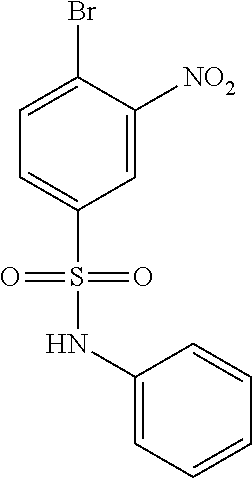
C00369
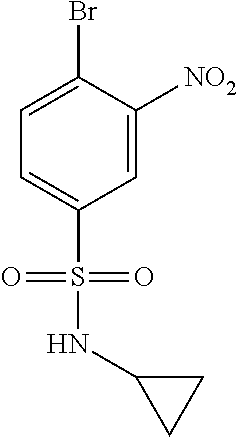
C00370
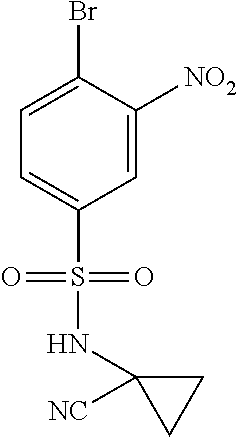
C00371

C00372
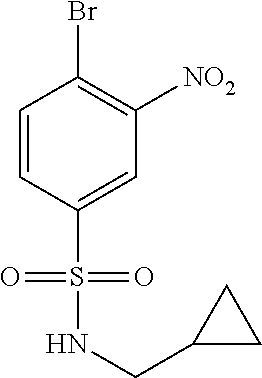
C00373

C00374
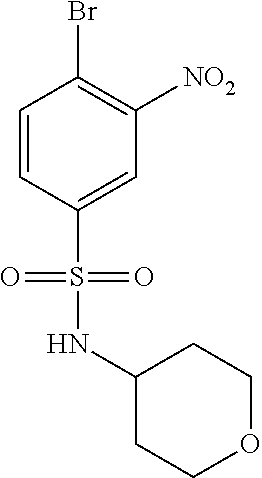
C00375
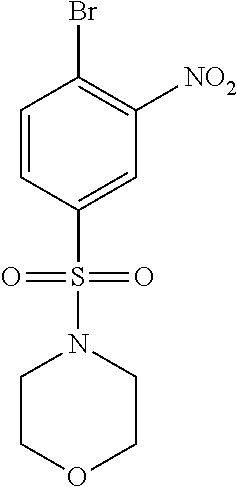
C00376
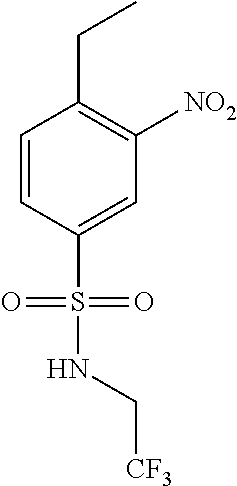
C00377
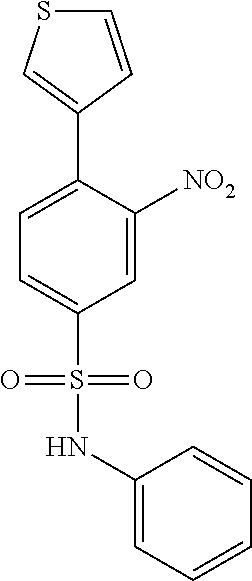
C00378
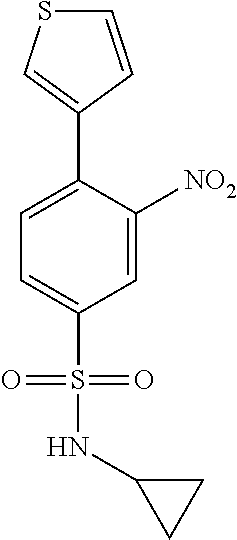
C00379
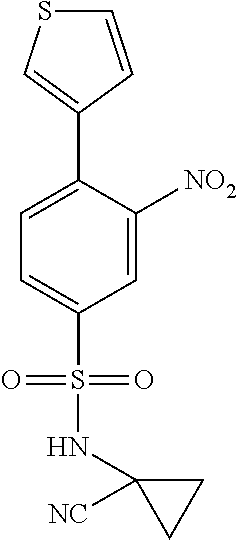
C00380

C00381
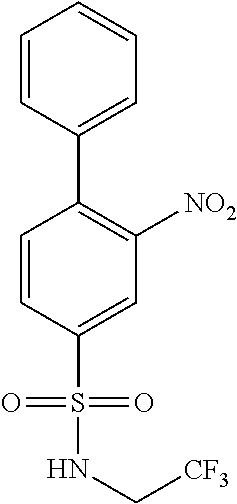
C00382
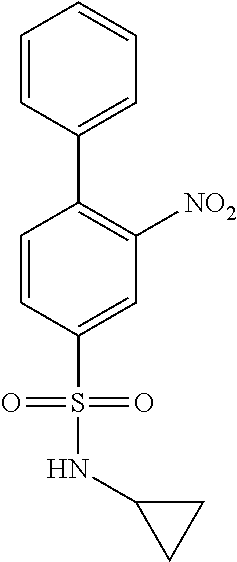
C00383
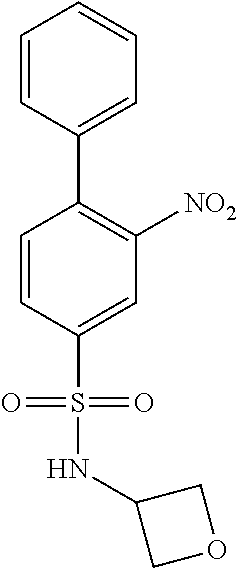
C00384
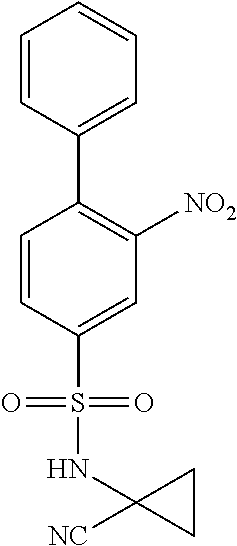
C00385

C00386

C00387
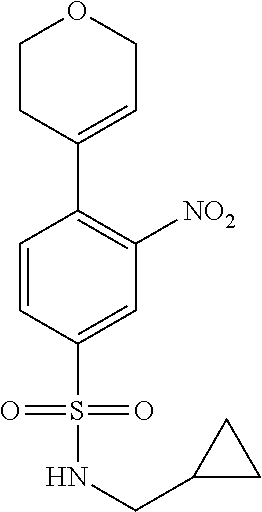
C00388

C00389
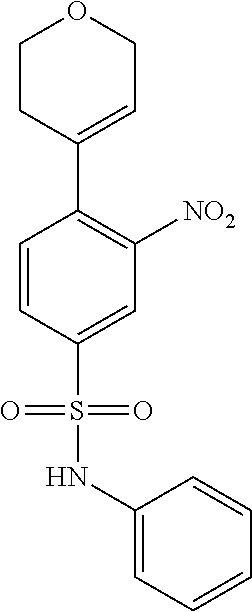
C00390

C00391

C00392

C00393
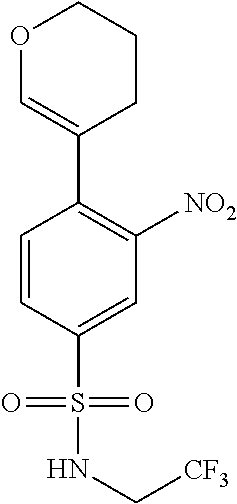
C00394

C00395

C00396
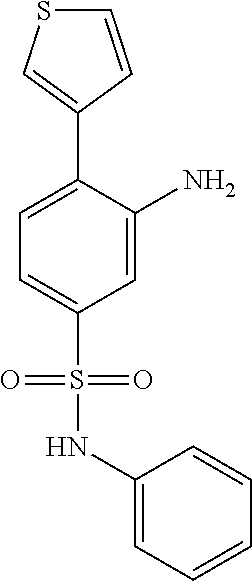
C00397
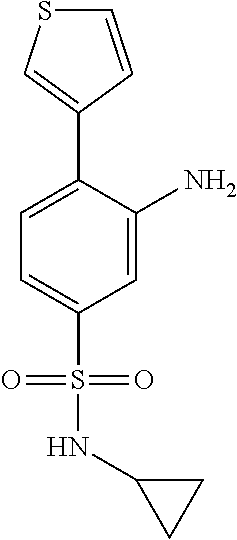
C00398
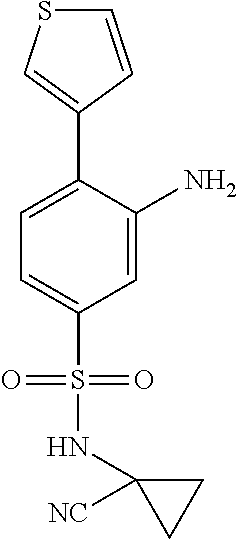
C00399

C00400

C00401
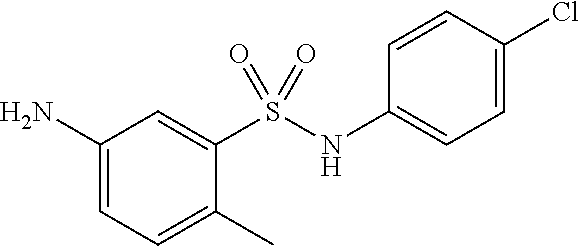
C00402
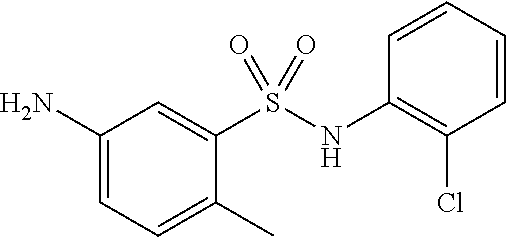
C00403
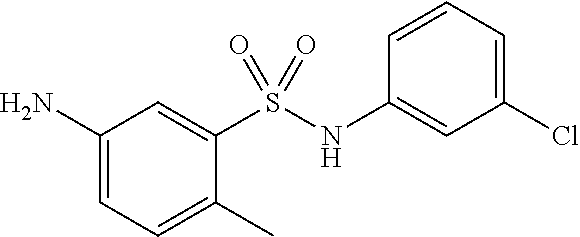
C00404

C00405

C00406
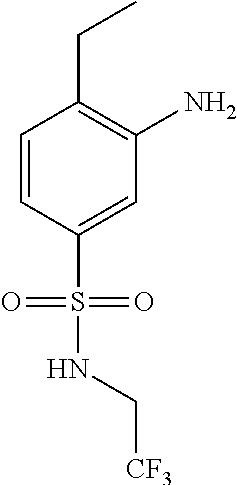
C00407
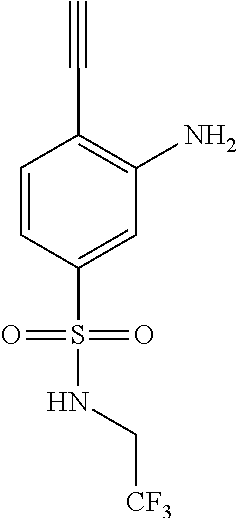
C00408
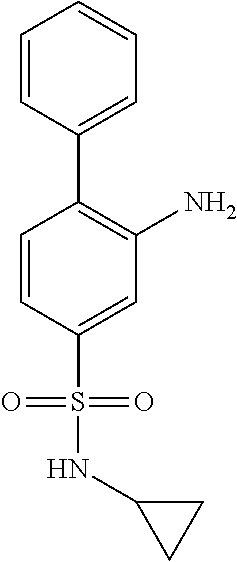
C00409

C00410
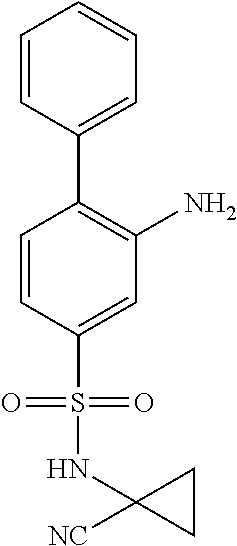
C00411
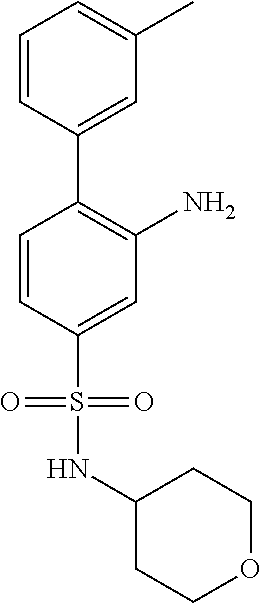
C00412

C00413
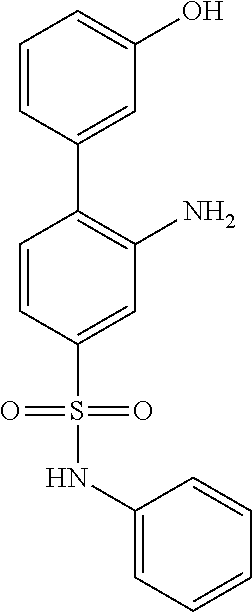
C00414
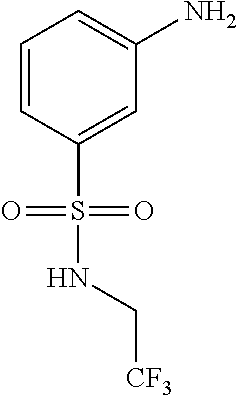
C00415
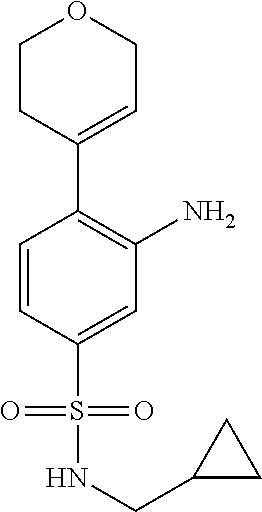
C00416
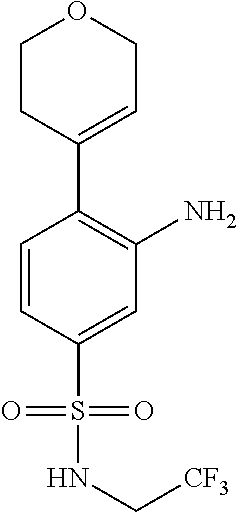
C00417

C00418
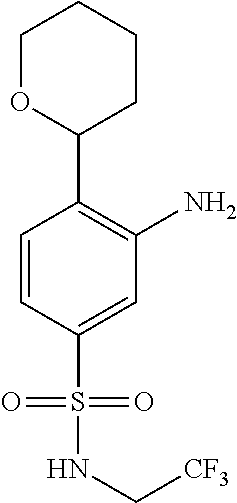
C00419

C00420
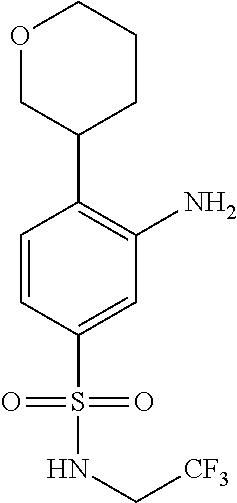
C00421
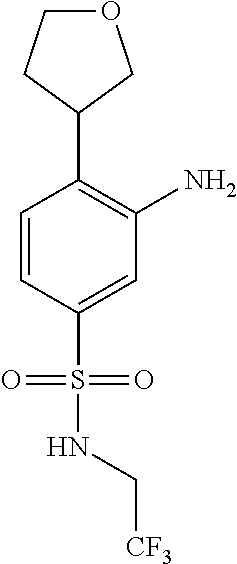
C00422
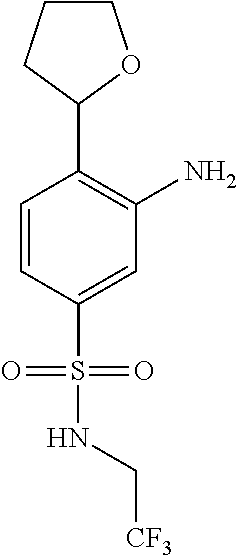
C00423

C00424
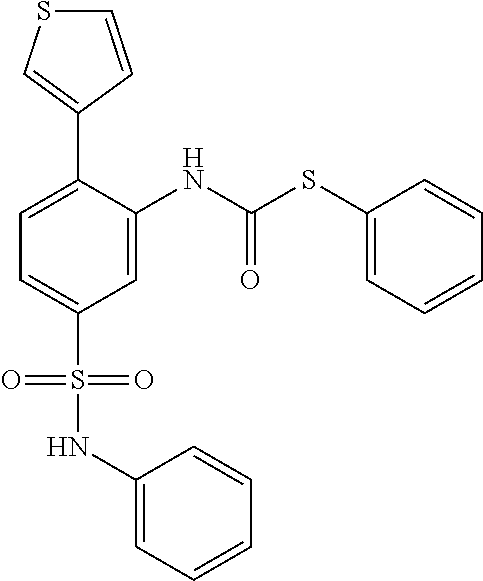
C00425
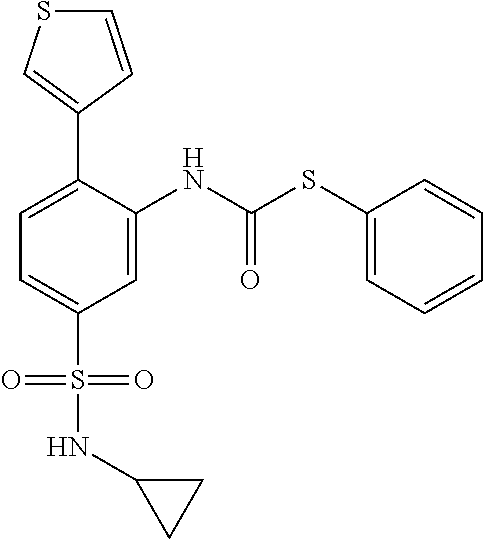
C00426

C00427
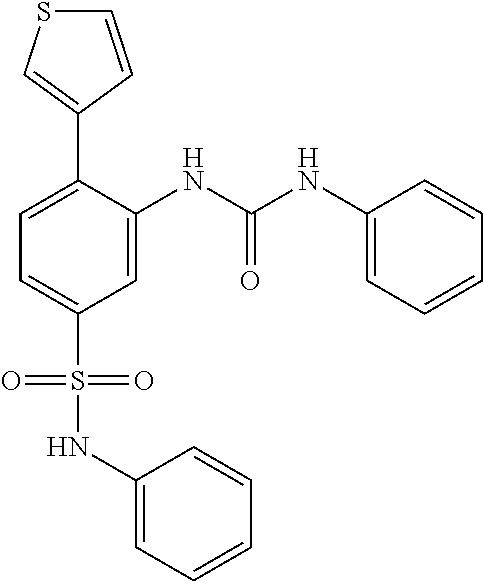
C00428

C00429

C00430

C00431

C00432

C00433

C00434
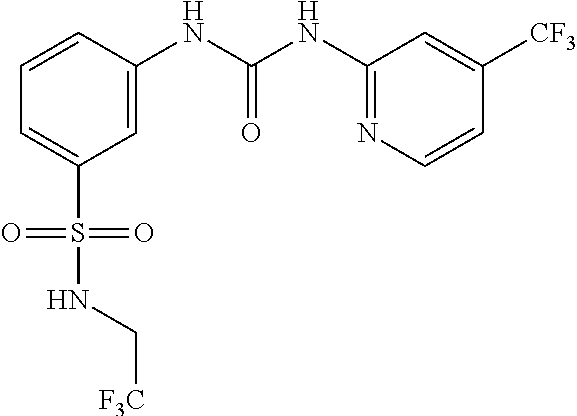
C00435
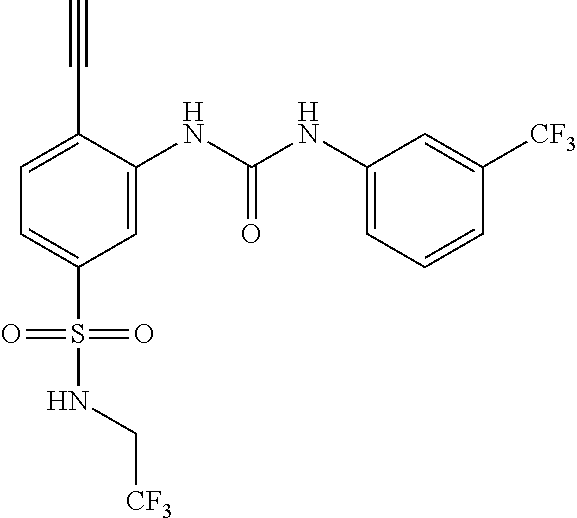
C00436

C00437
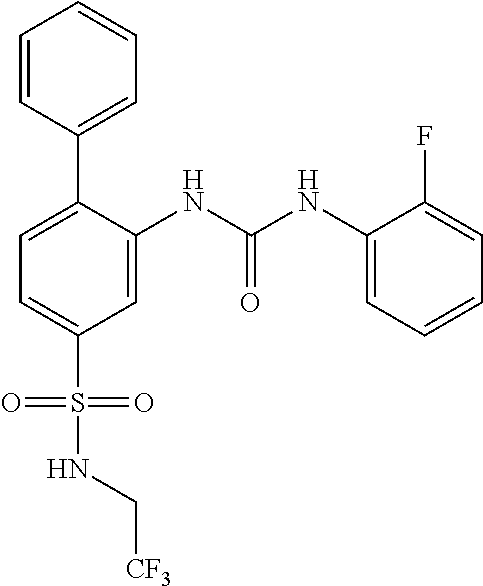
C00438
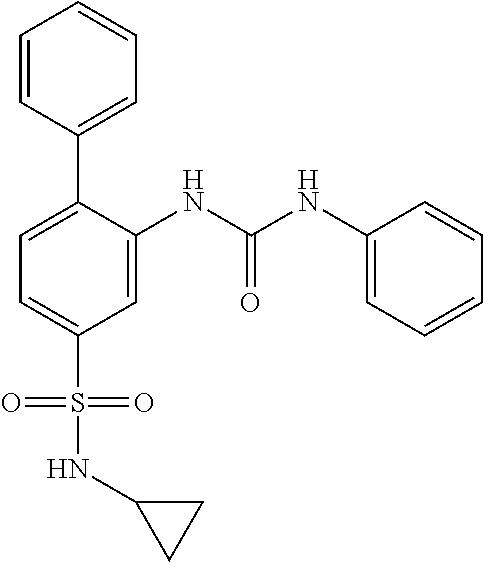
C00439
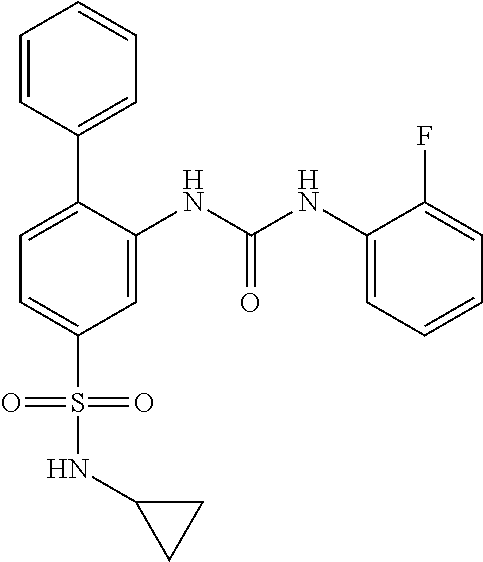
C00440

C00441

C00442
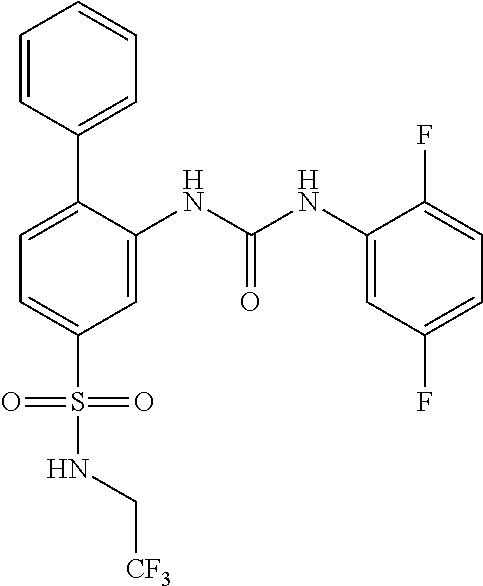
C00443
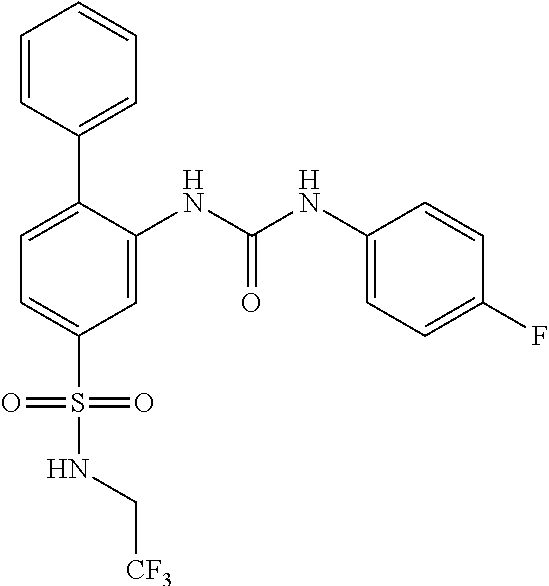
C00444

C00445
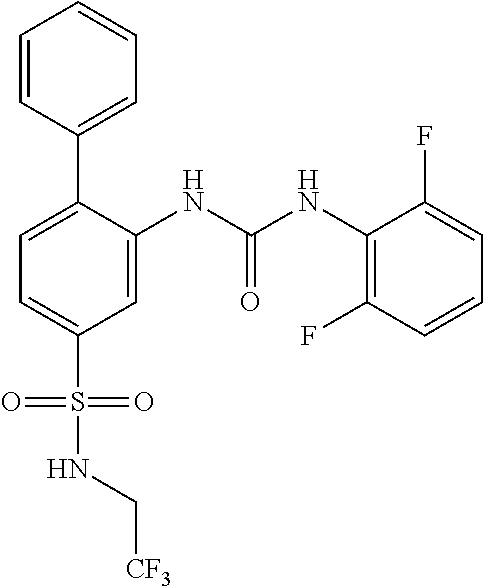
C00446

C00447

C00448

C00449
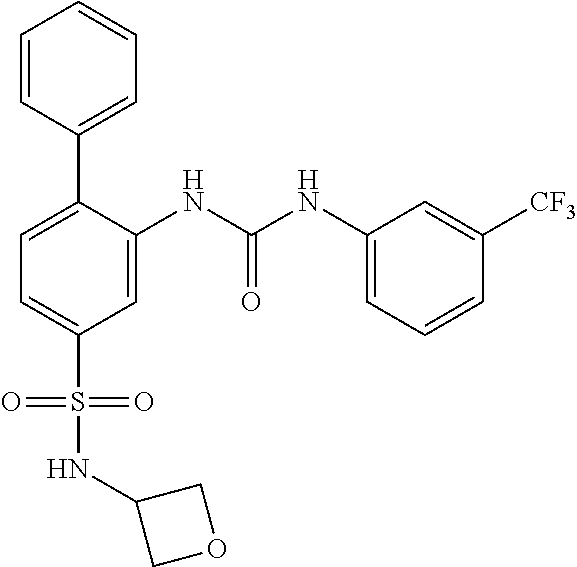
C00450

C00451
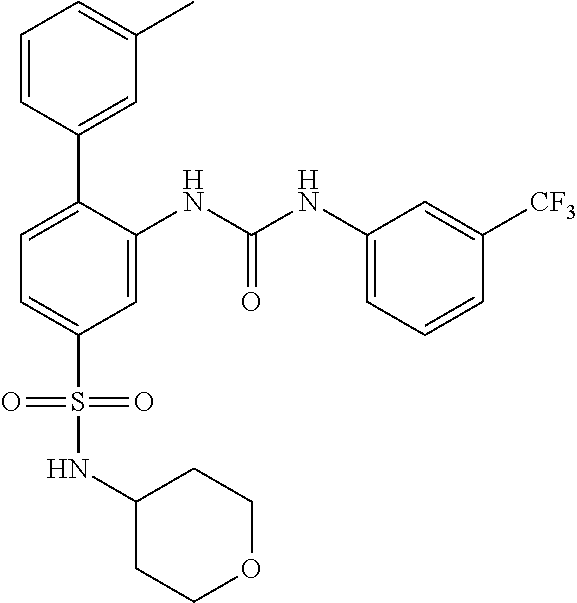
C00452

C00453
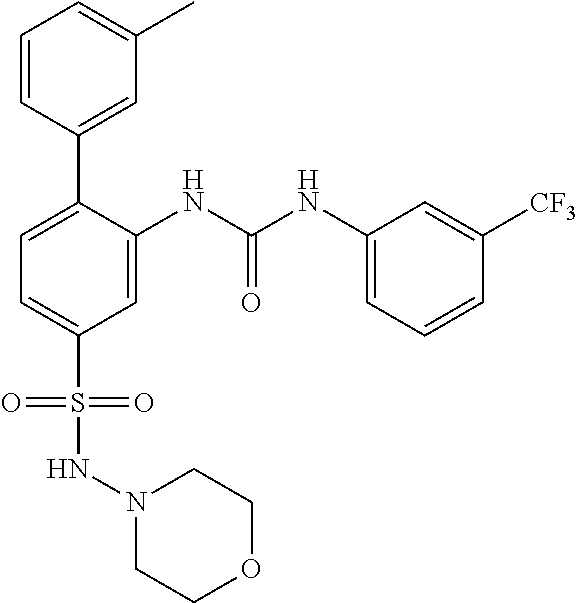
C00454

C00455
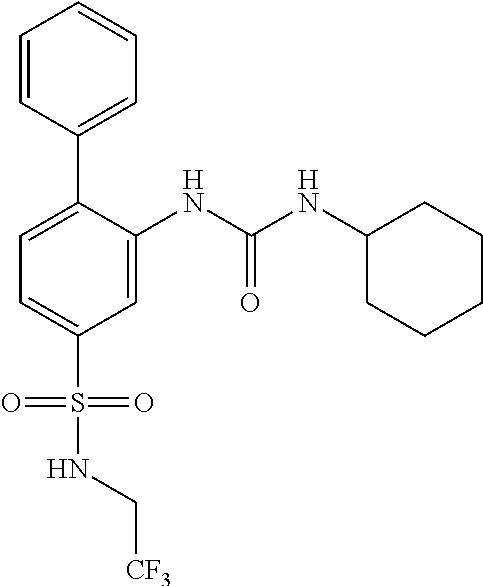
C00456
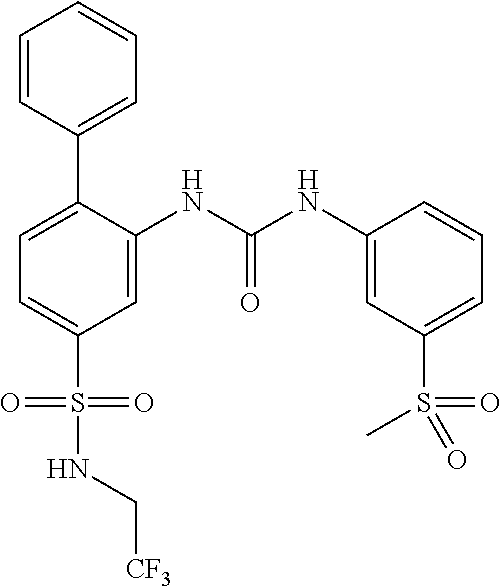
C00457

C00458

C00459

C00460

C00461

C00462

C00463
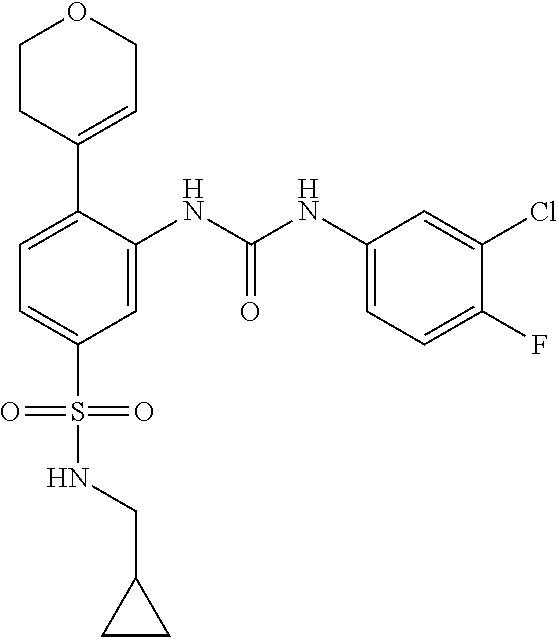
C00464

C00465
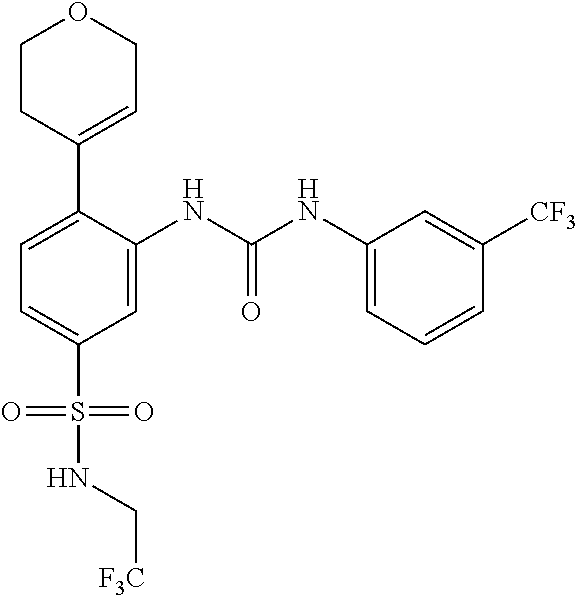
C00466
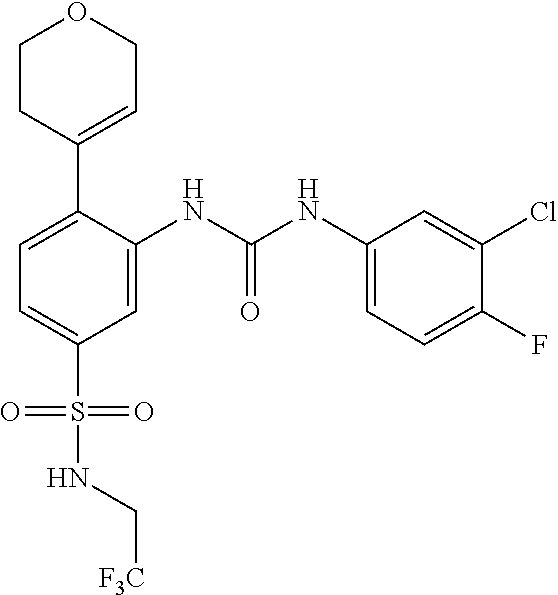
C00467
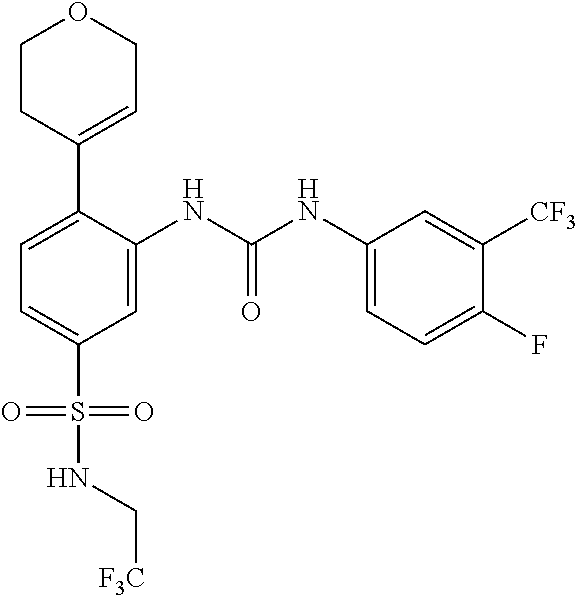
C00468

C00469

C00470
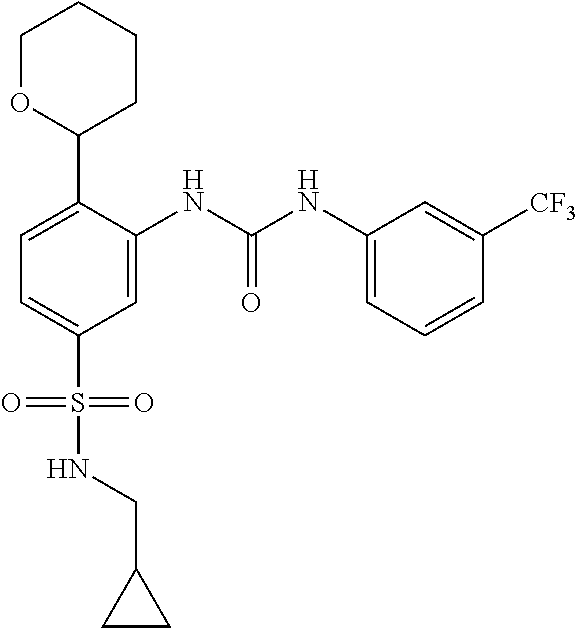
C00471

C00472
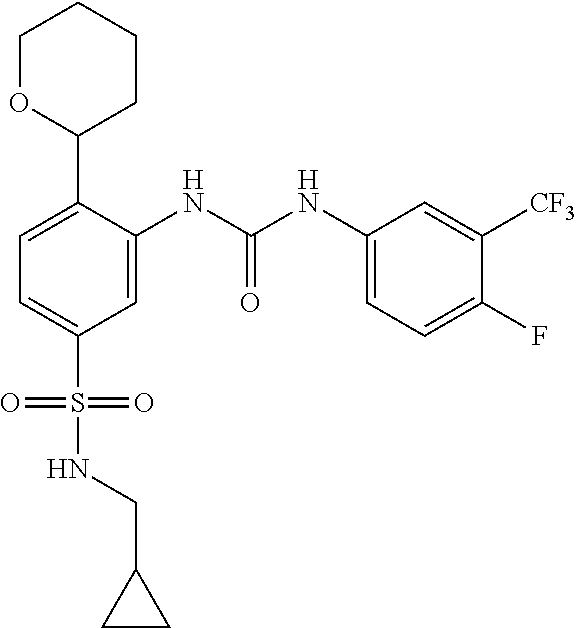
C00473
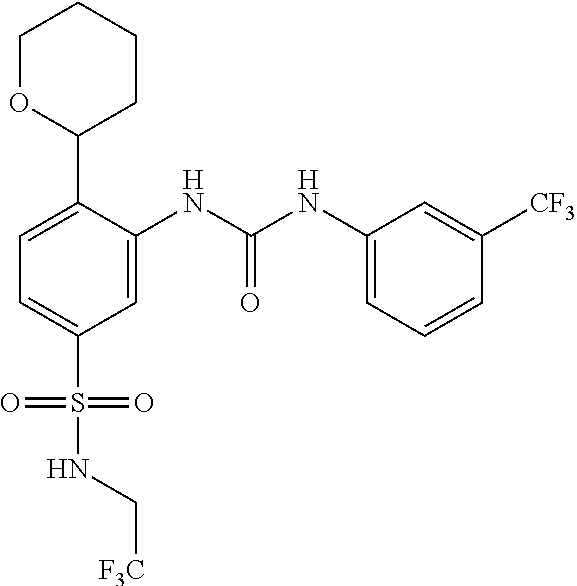
C00474
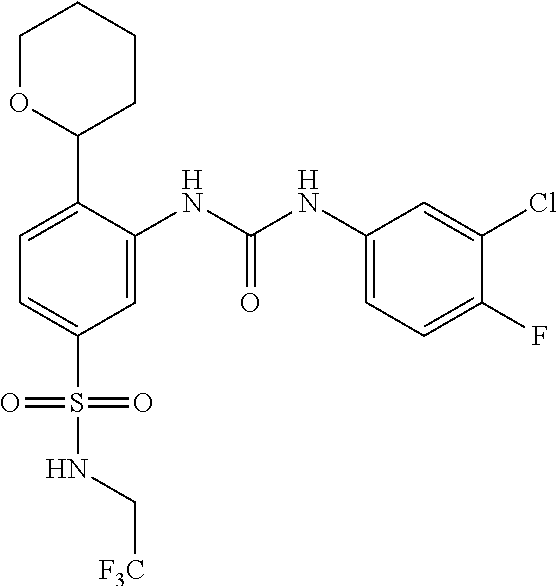
C00475

C00476

C00477
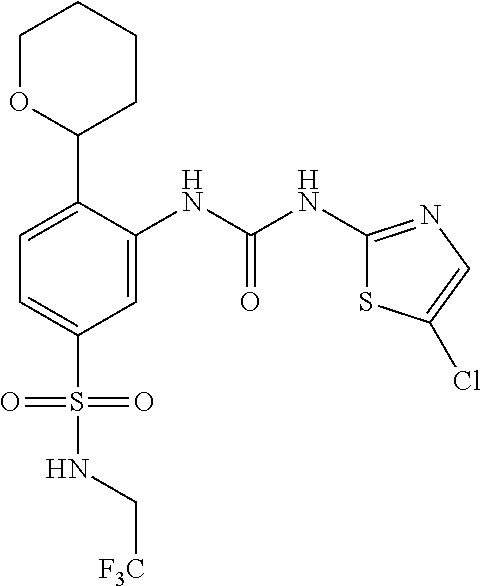
C00478
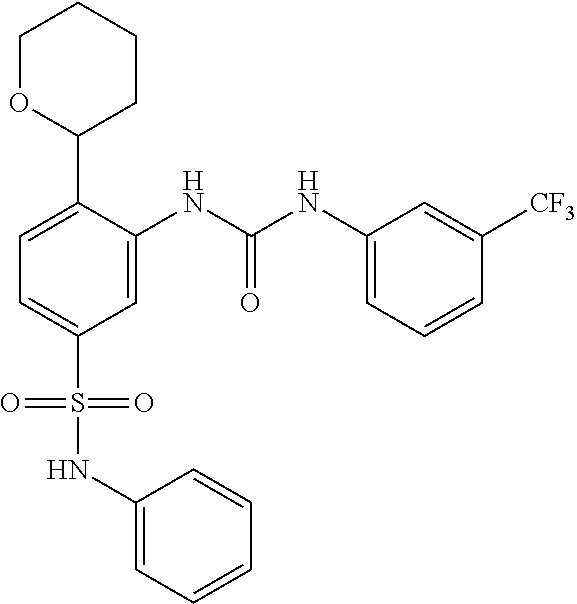
C00479

C00480

C00481
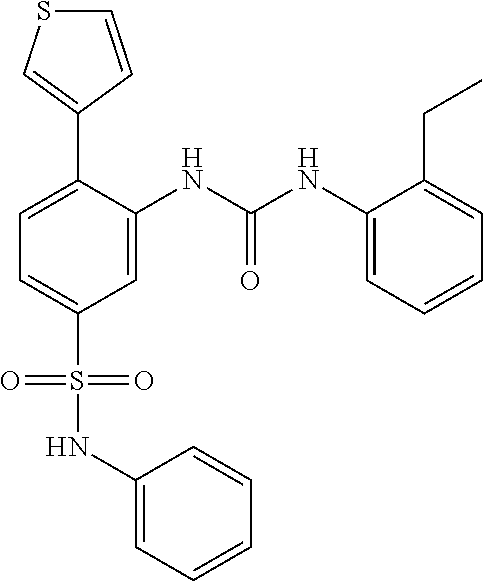
C00482
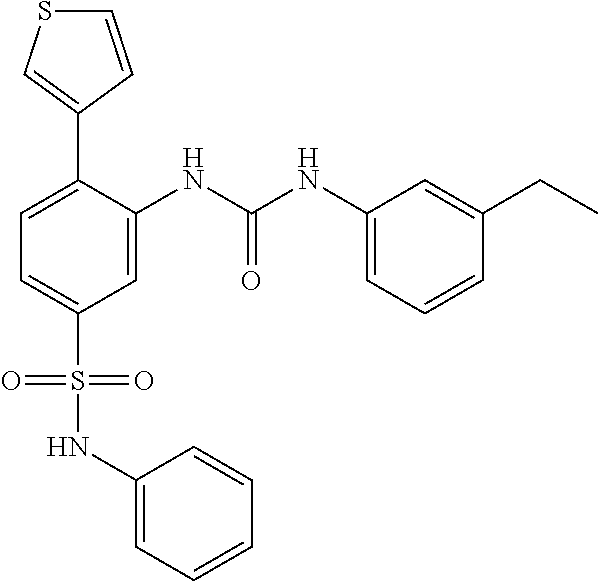
C00483
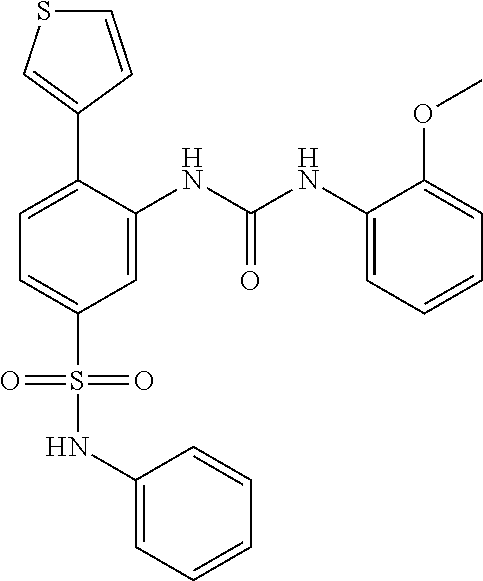
C00484

C00485
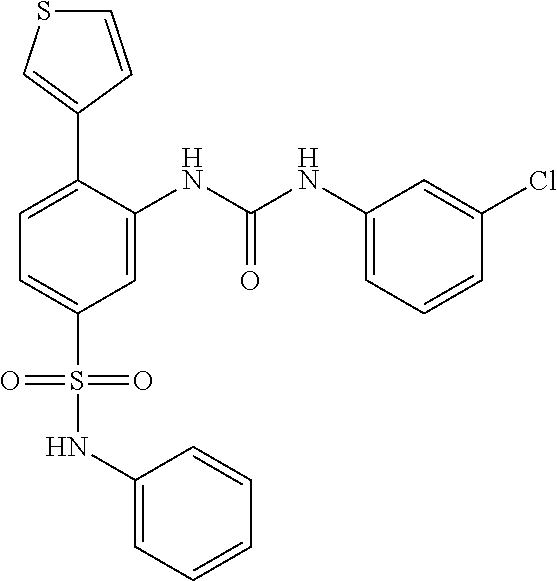
C00486
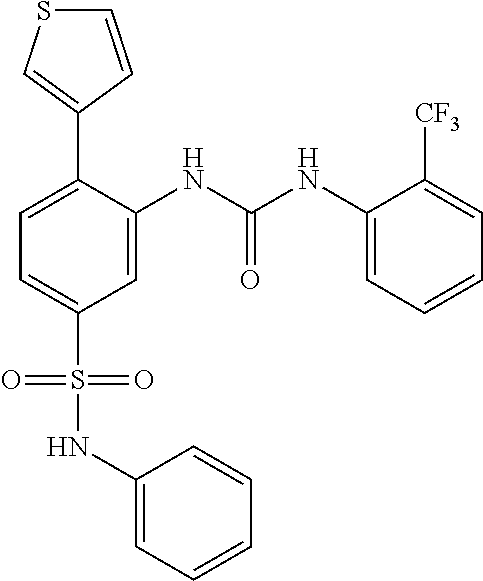
C00487
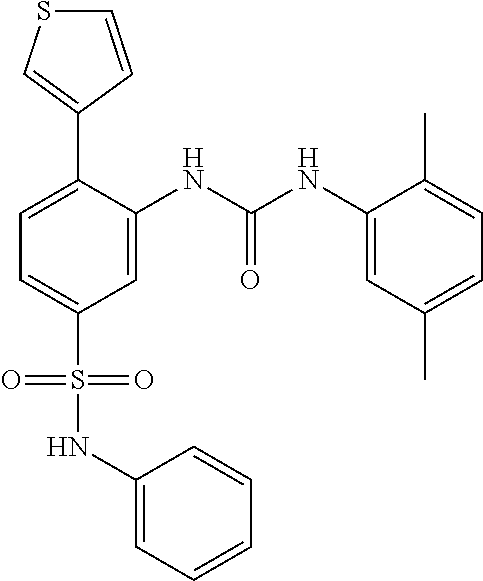
C00488
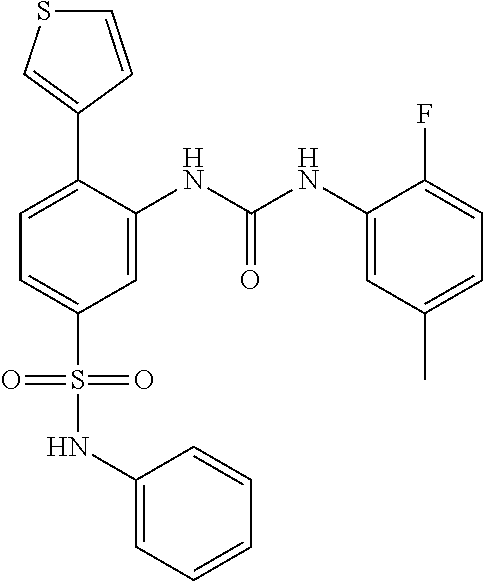
C00489
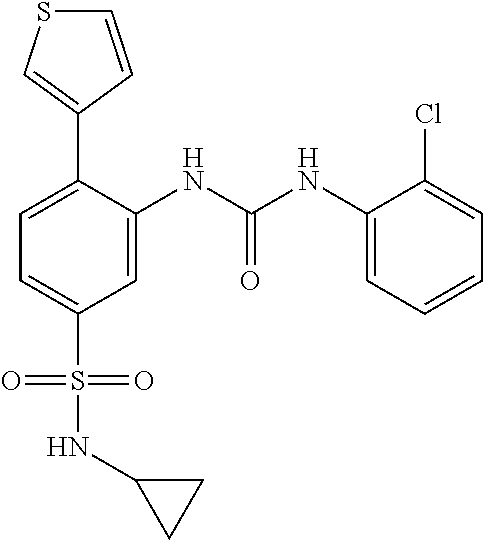
C00490

C00491

C00492
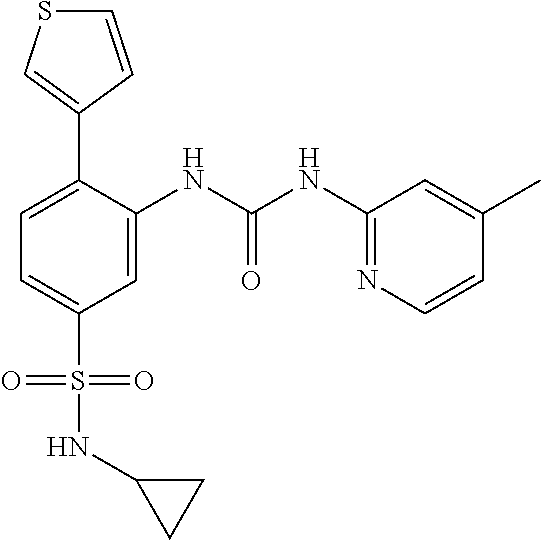
C00493

C00494

C00495

C00496
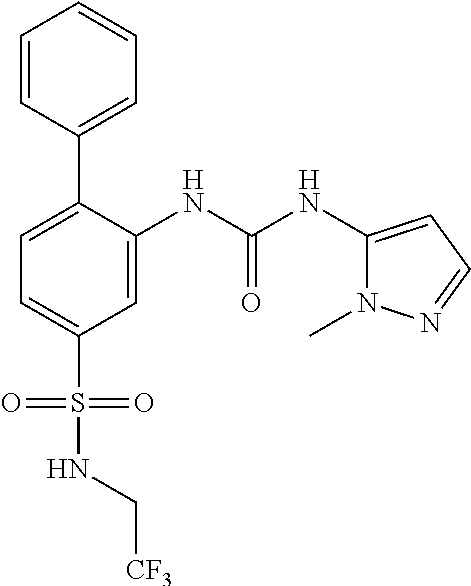
C00497

C00498
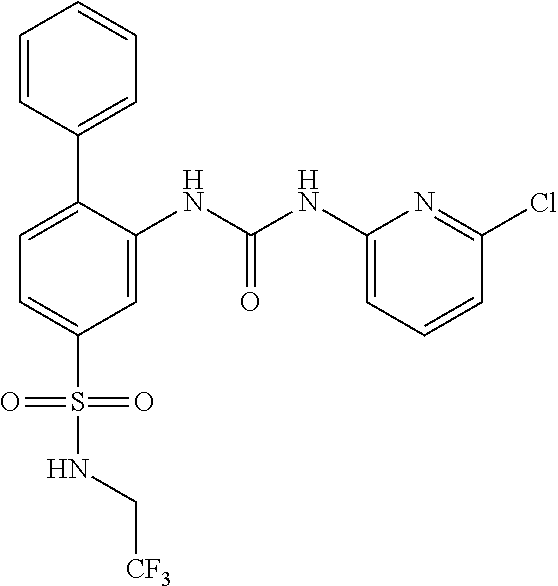
C00499

C00500

C00501
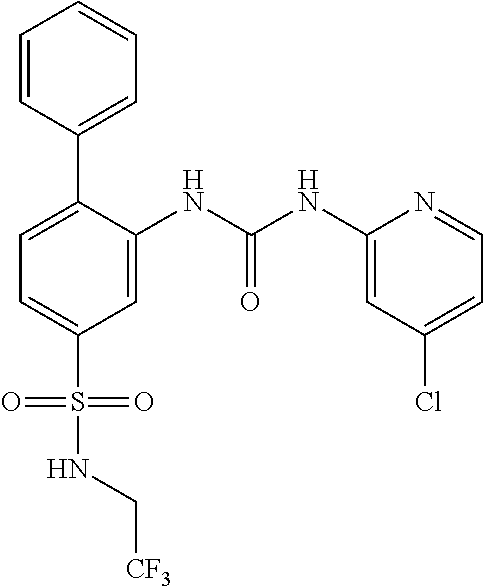
C00502

C00503

C00504
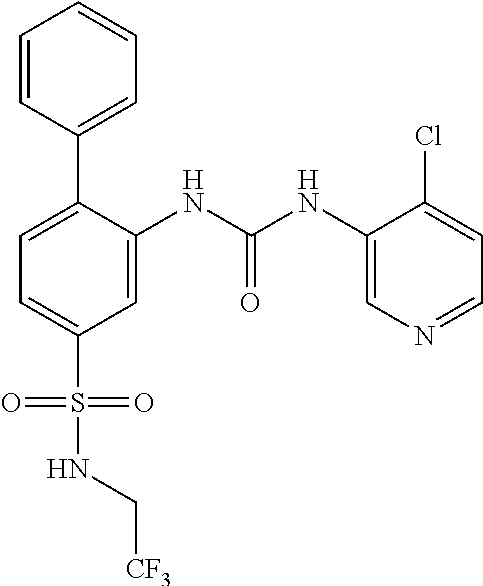
C00505

C00506
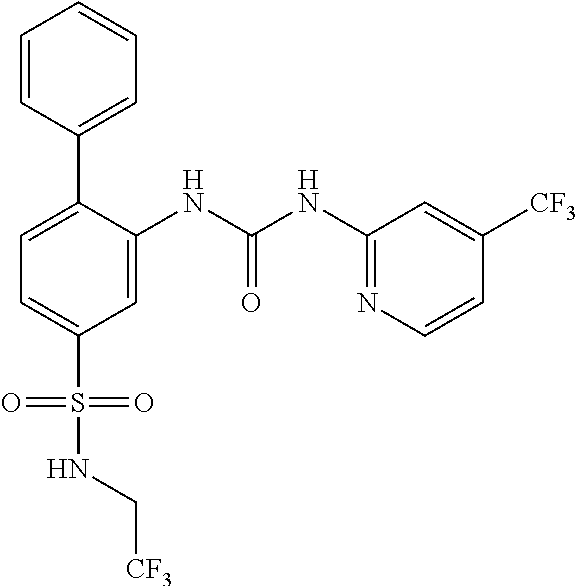
C00507

C00508
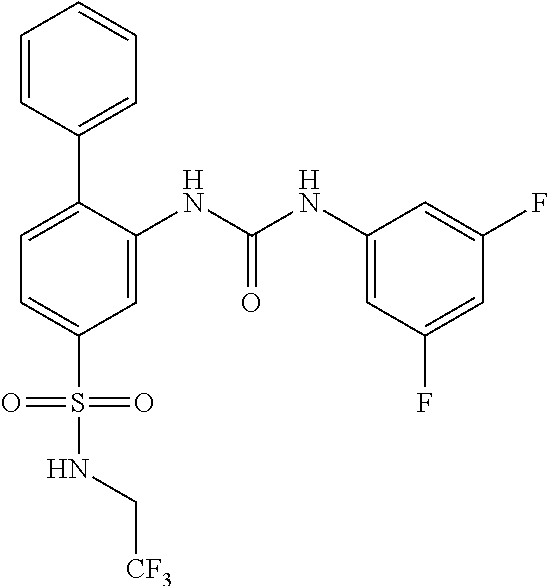
C00509
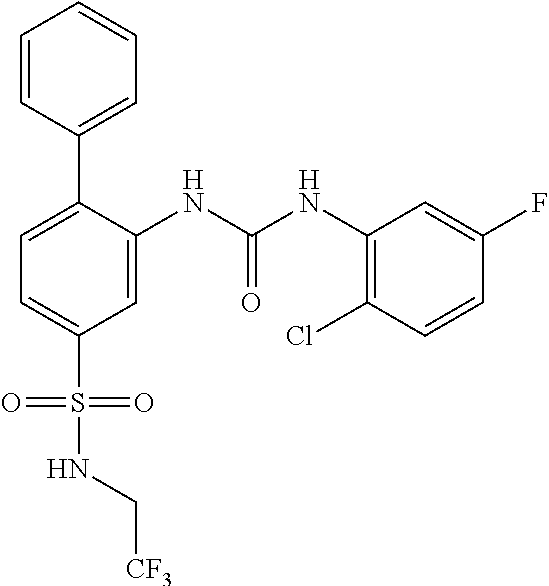
C00510
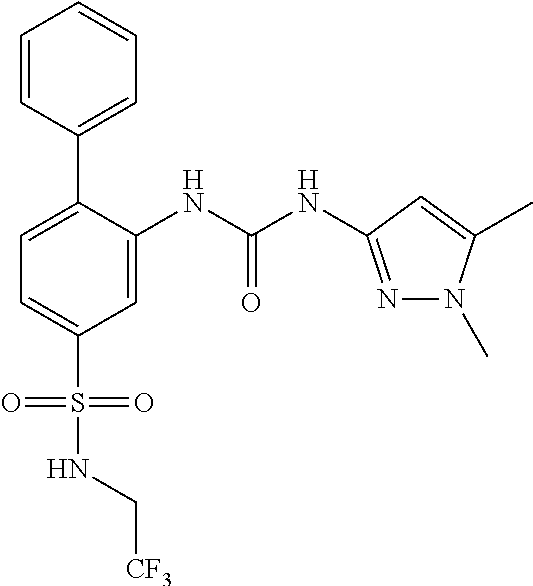
C00511

C00512

C00513
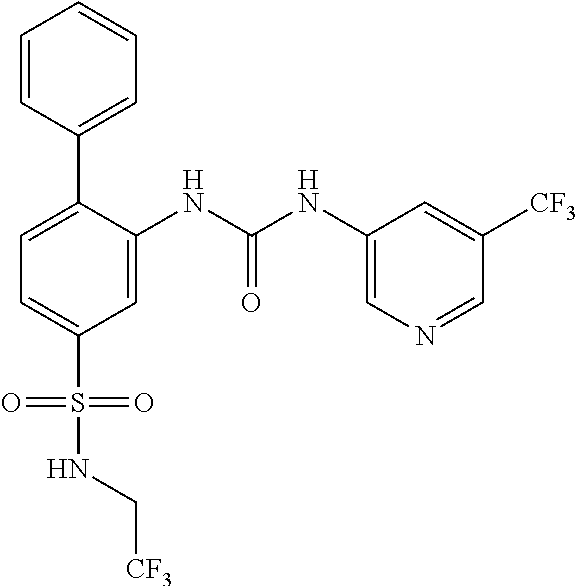
C00514
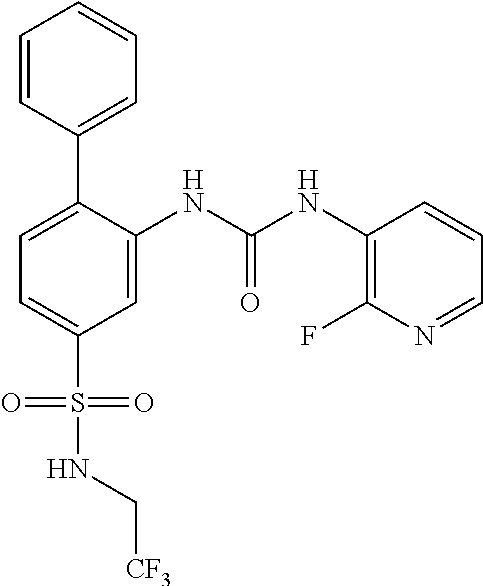
C00515

C00516
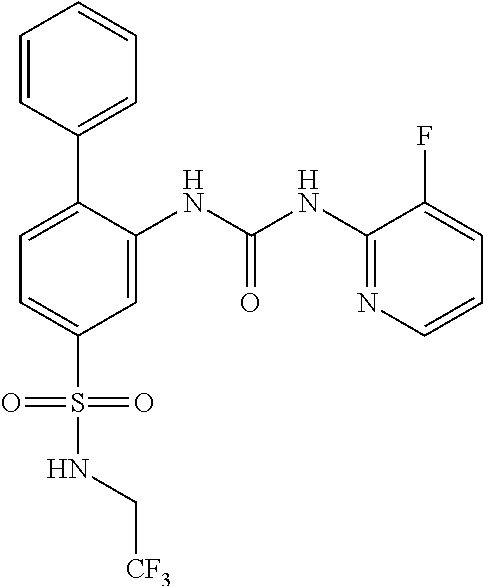
C00517
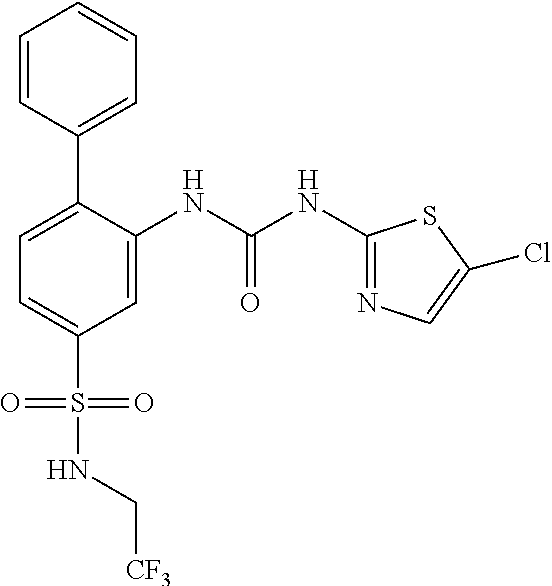
C00518

C00519
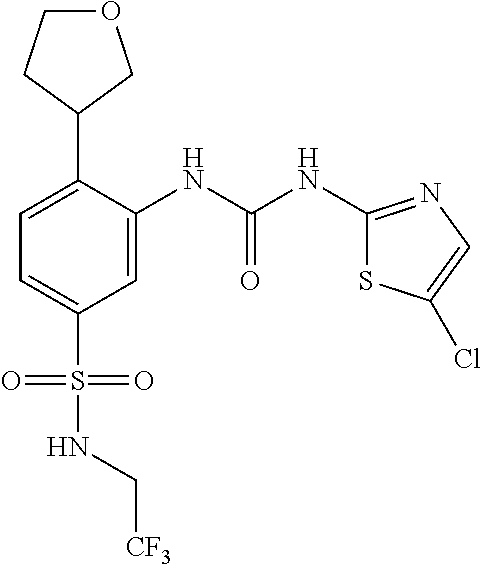
C00520

C00521

C00522

C00523
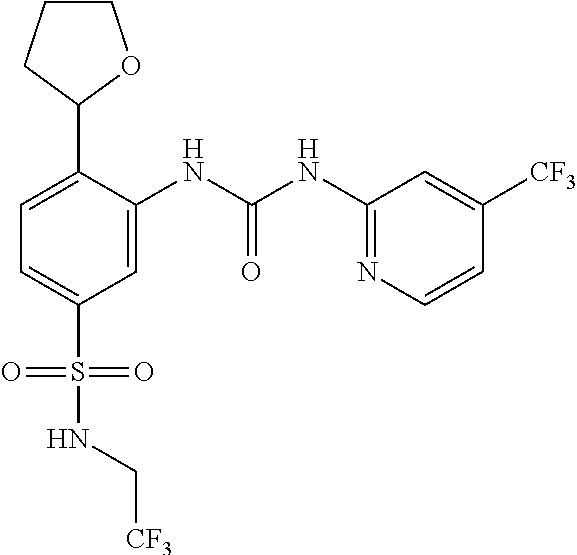
C00524

C00525

C00526
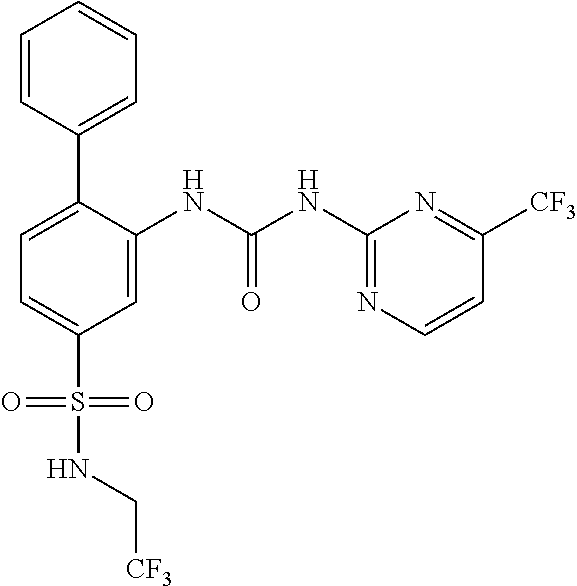
C00527

C00528
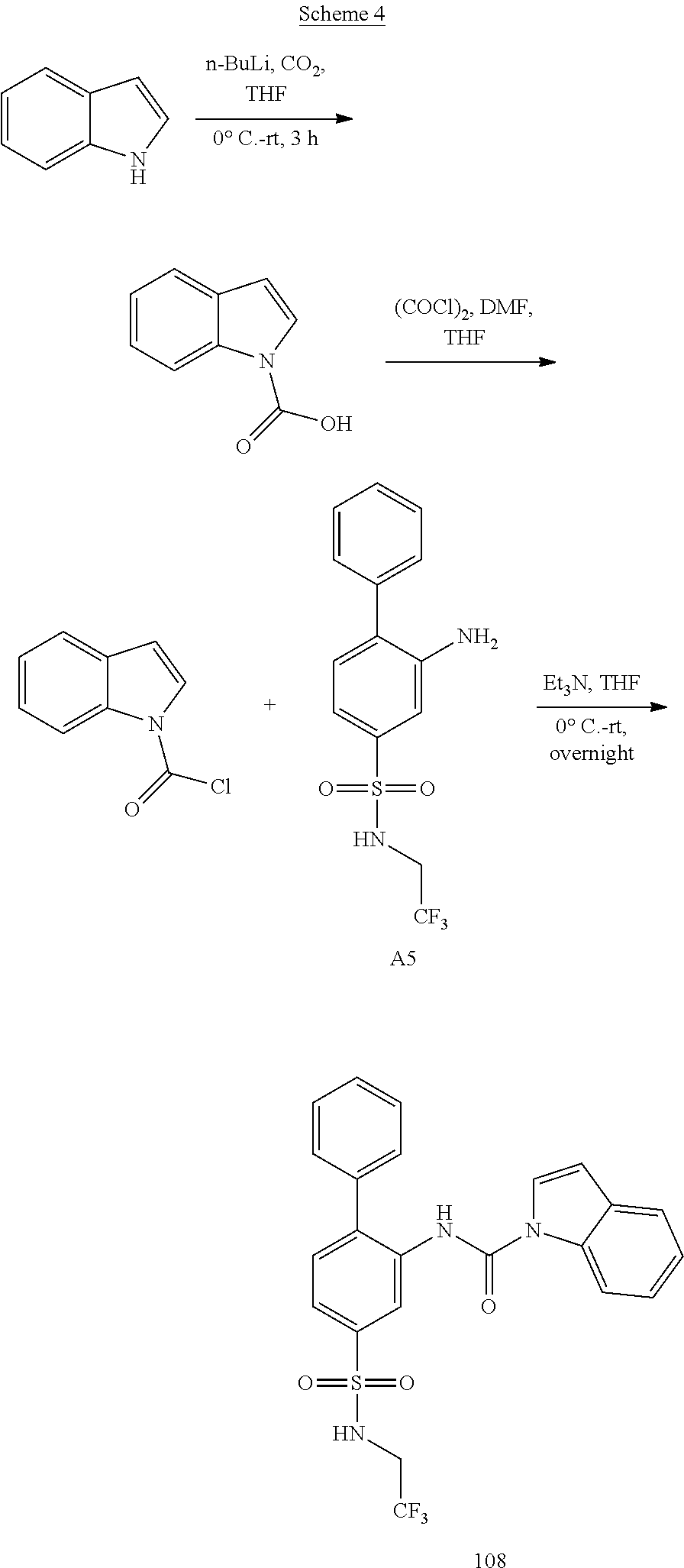
C00529
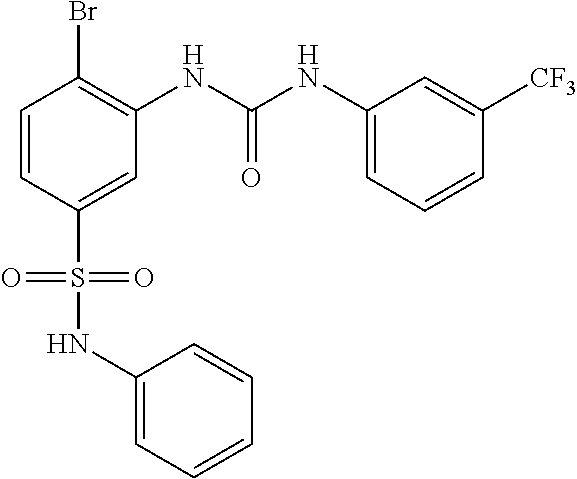
C00530
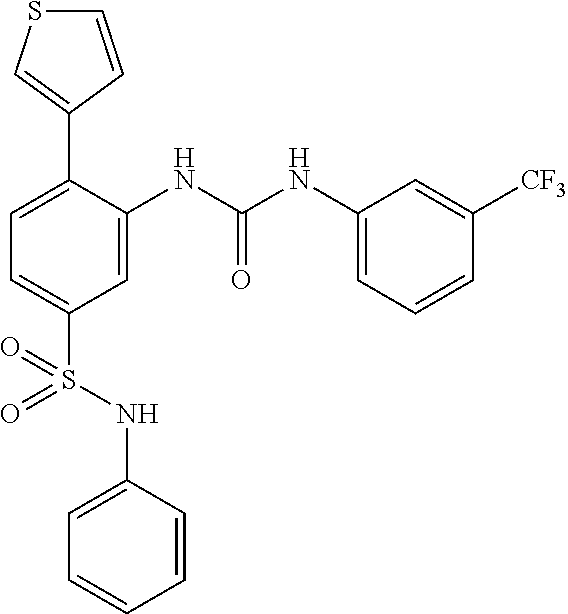
C00531

C00532

C00533

C00534

C00535

C00536
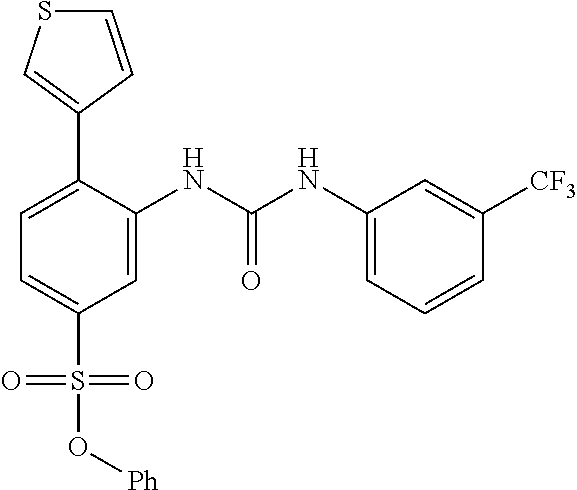
C00537
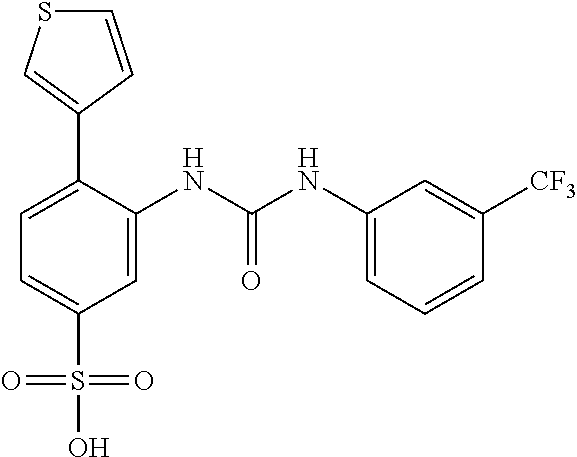
C00538

C00539
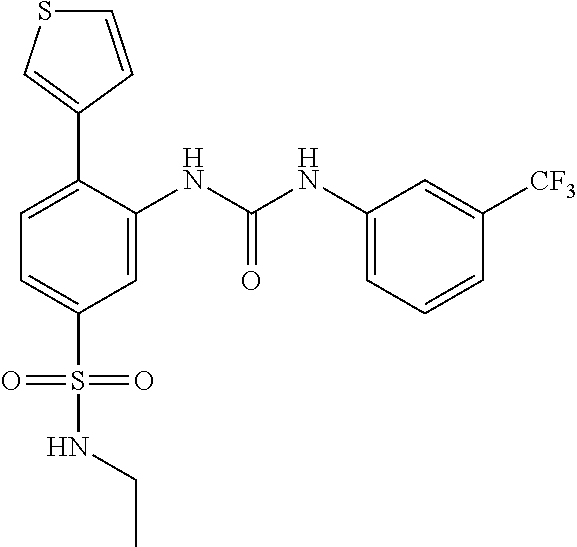
C00540
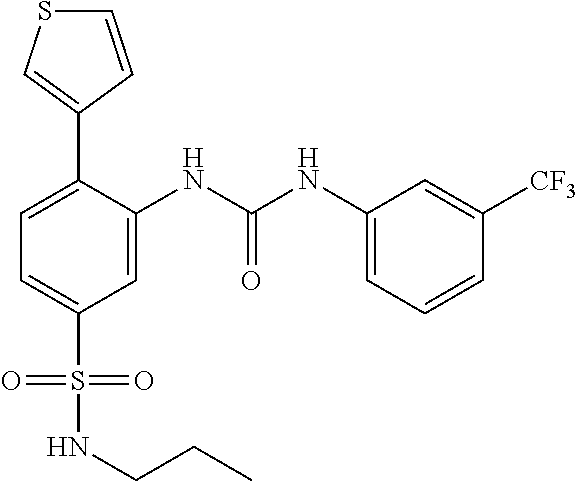
C00541

C00542

C00543

C00544
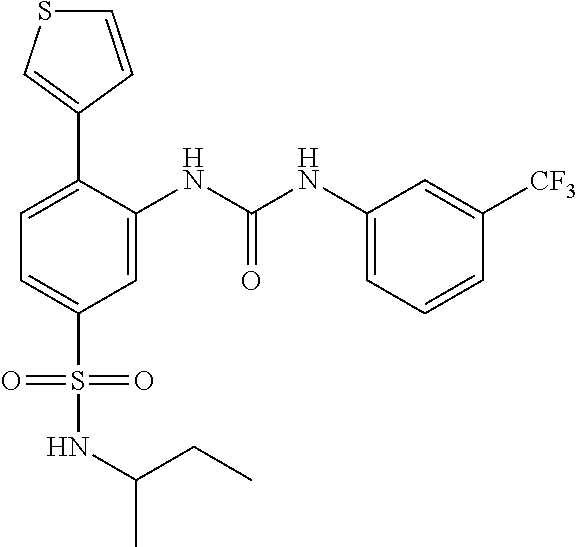
C00545

C00546
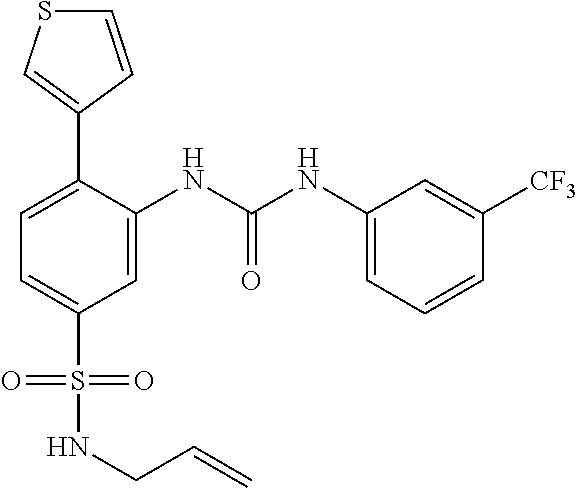
C00547

C00548
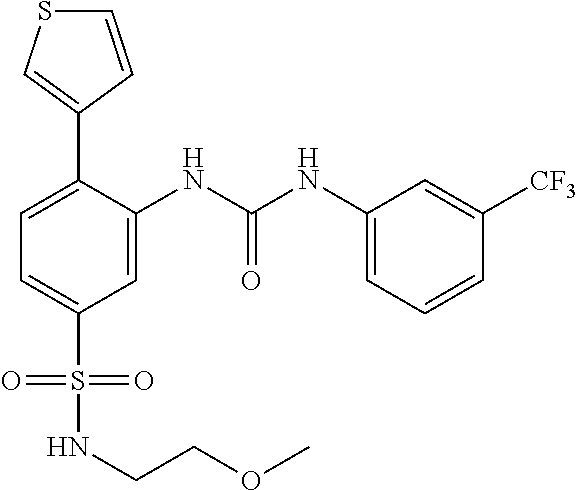
C00549
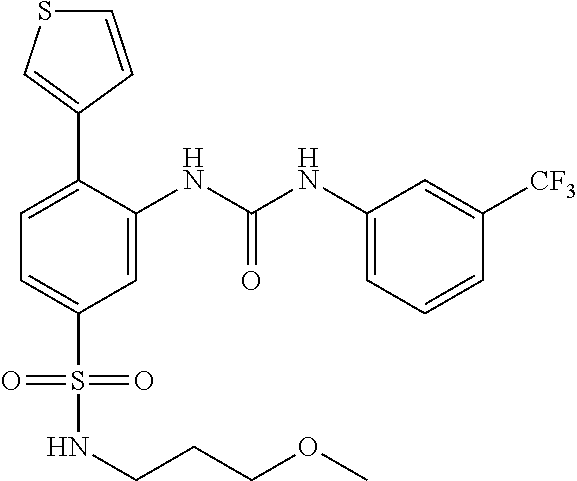
C00550
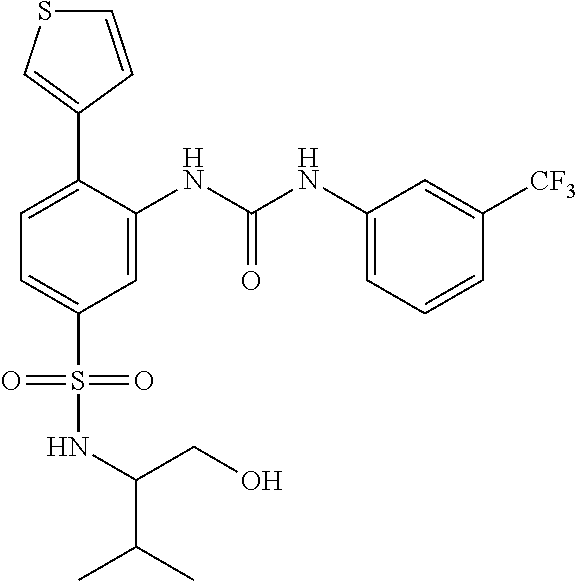
C00551
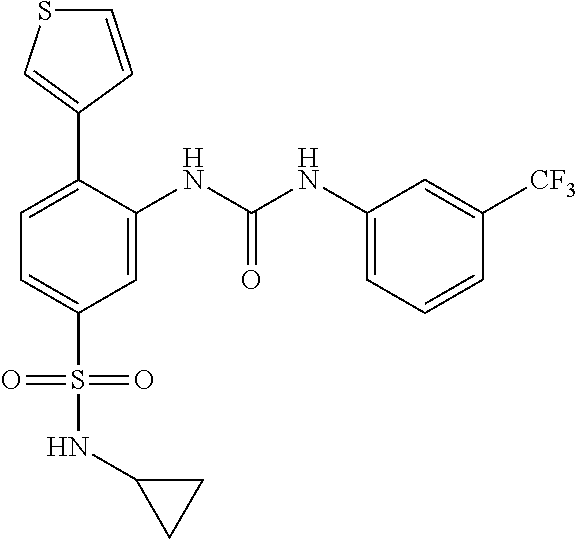
C00552

C00553
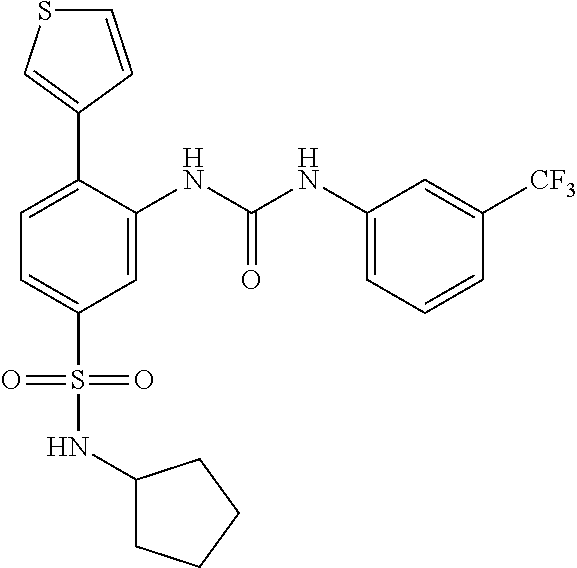
C00554

C00555

C00556
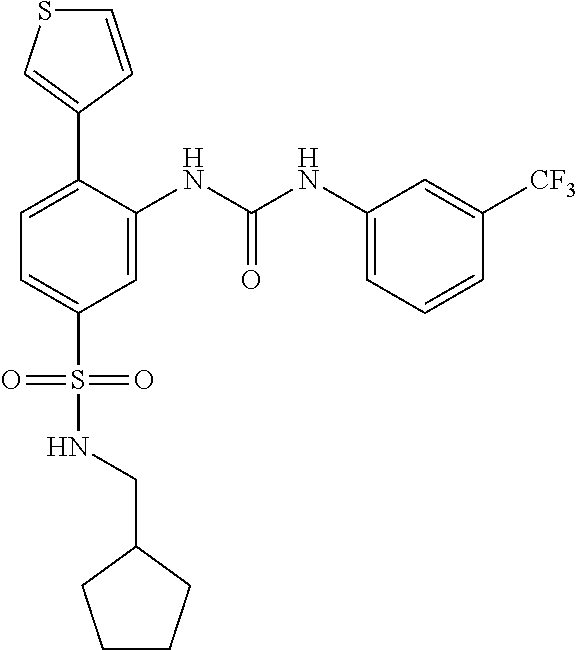
C00557
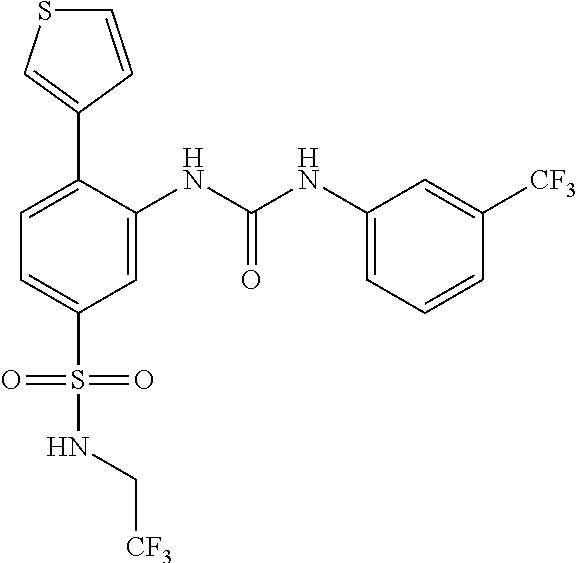
C00558

C00559
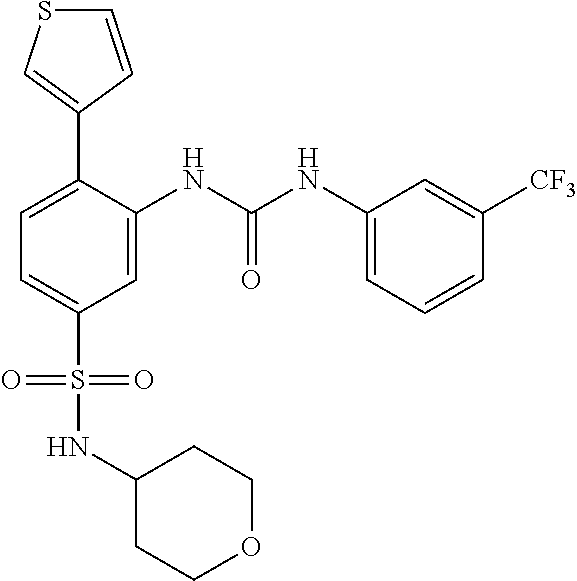
C00560
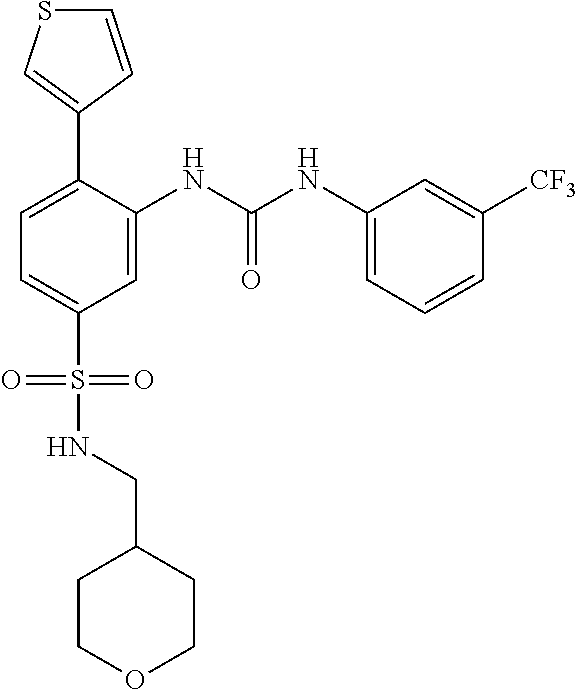
C00561
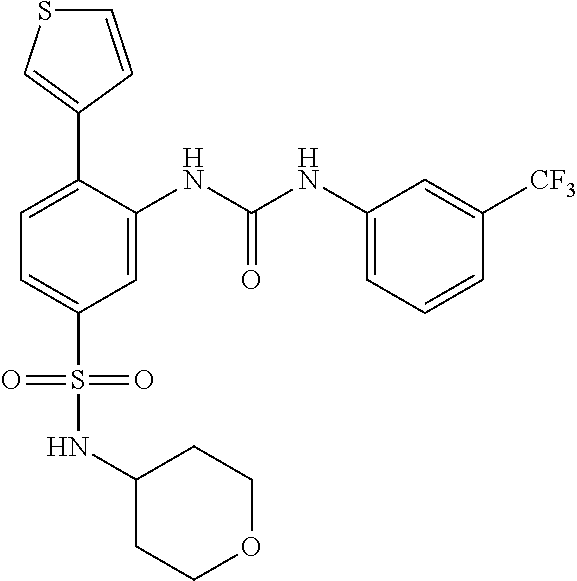
C00562

C00563

C00564

C00565
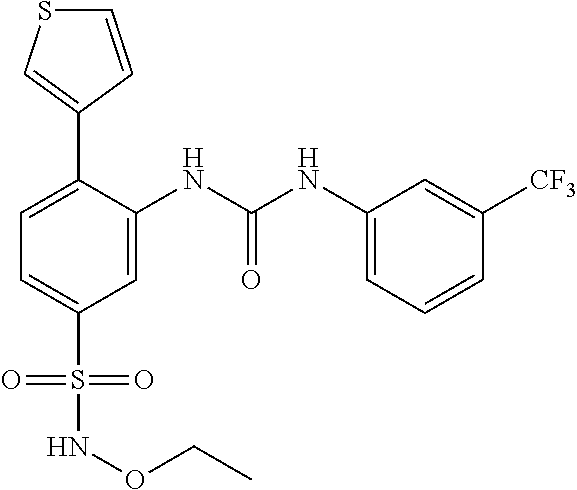
C00566

C00567
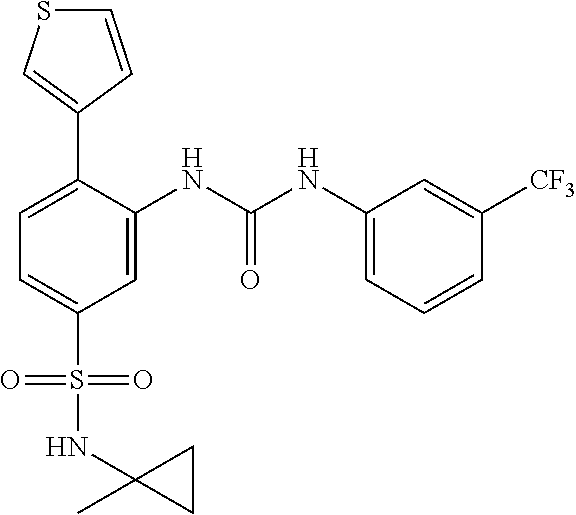
C00568

C00569
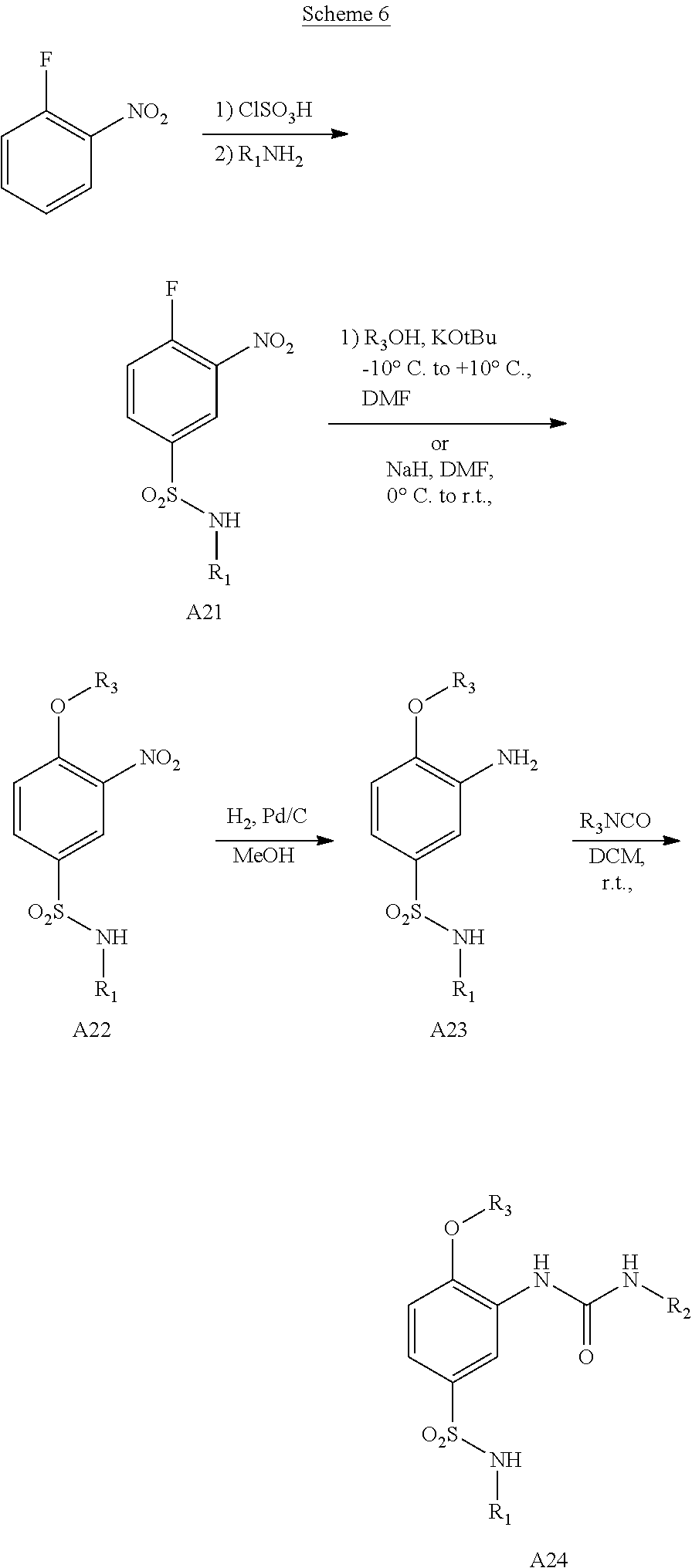
C00570
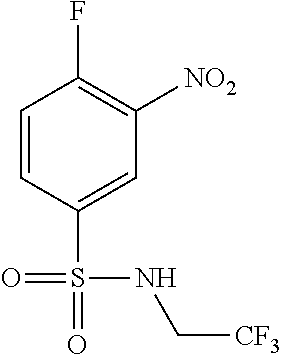
C00571
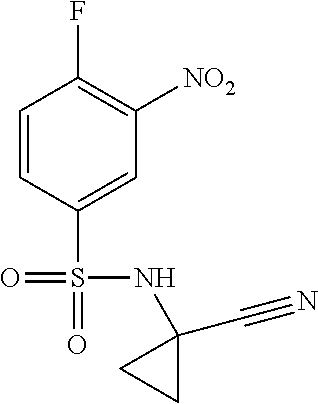
C00572

C00573
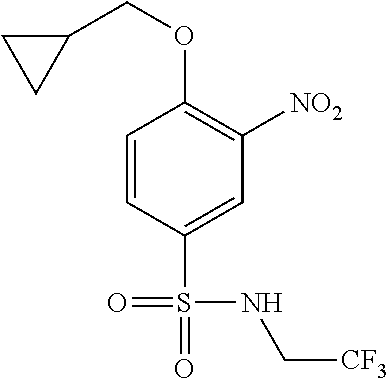
C00574
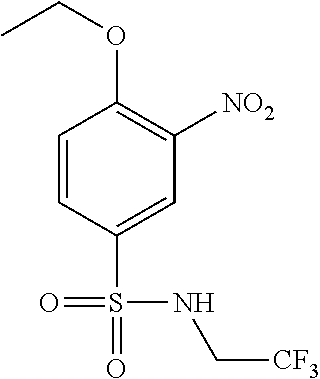
C00575

C00576

C00577

C00578
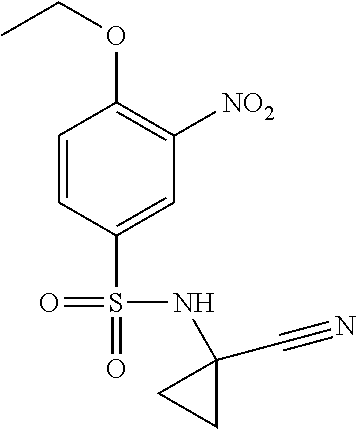
C00579
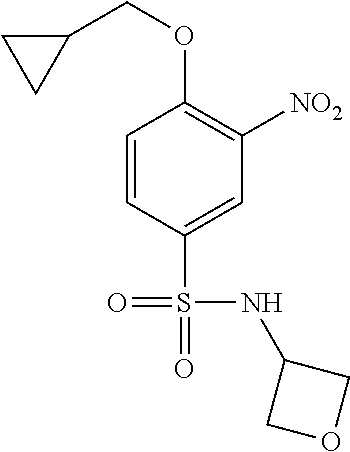
C00580

C00581
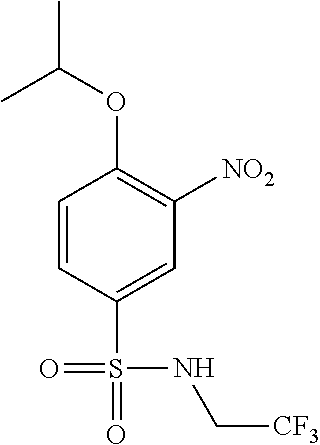
C00582

C00583
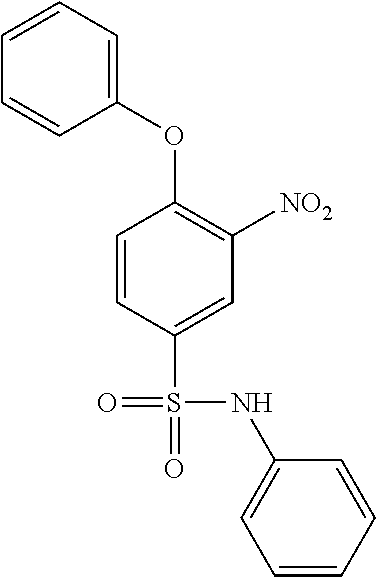
C00584
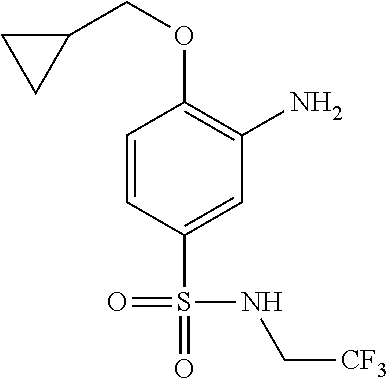
C00585
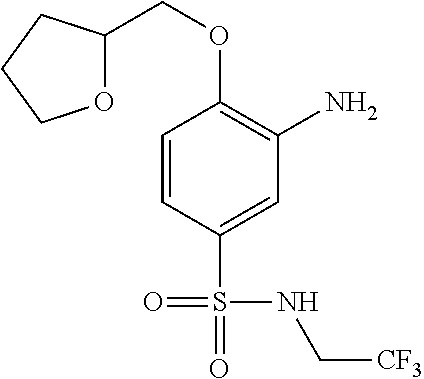
C00586
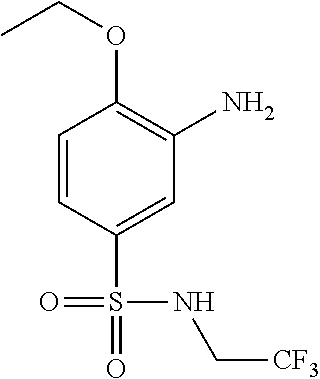
C00587
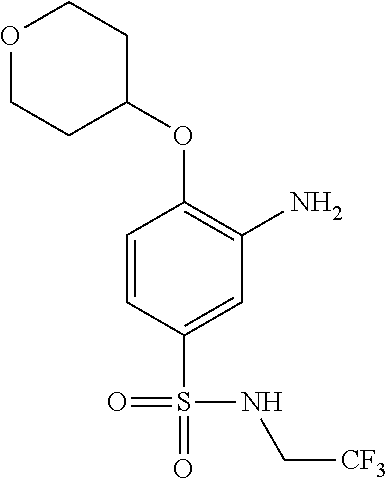
C00588
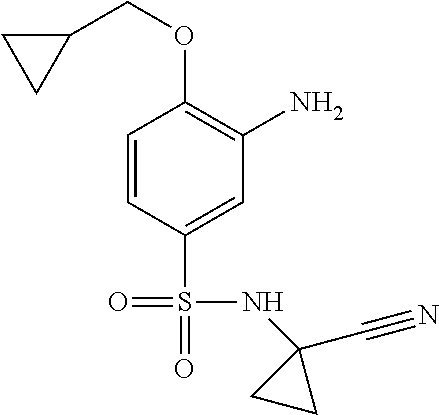
C00589

C00590

C00591

C00592
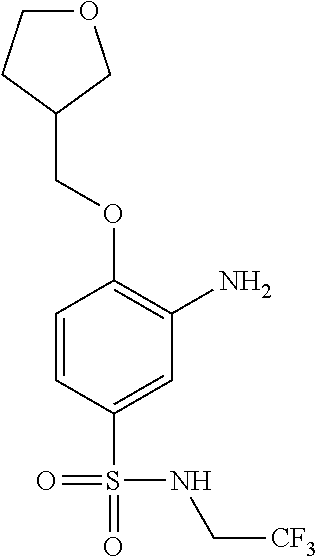
C00593

C00594
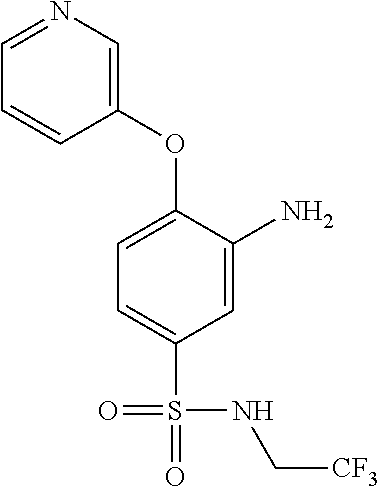
C00595

C00596

C00597
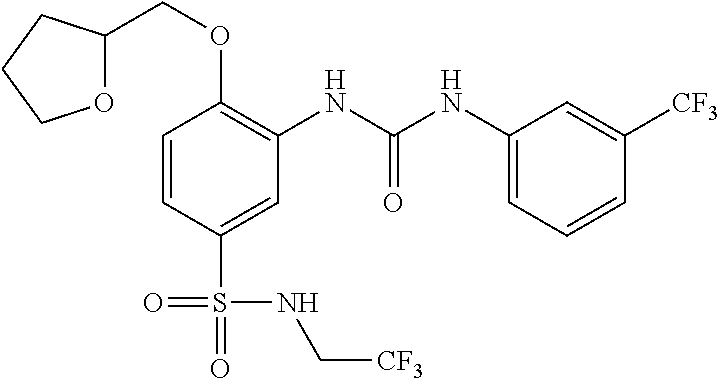
C00598
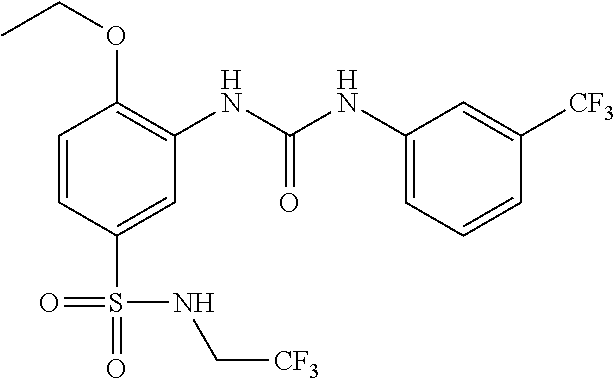
C00599

C00600
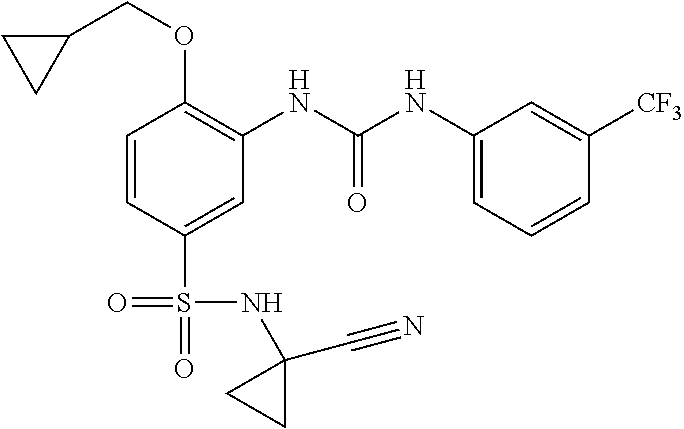
C00601

C00602

C00603
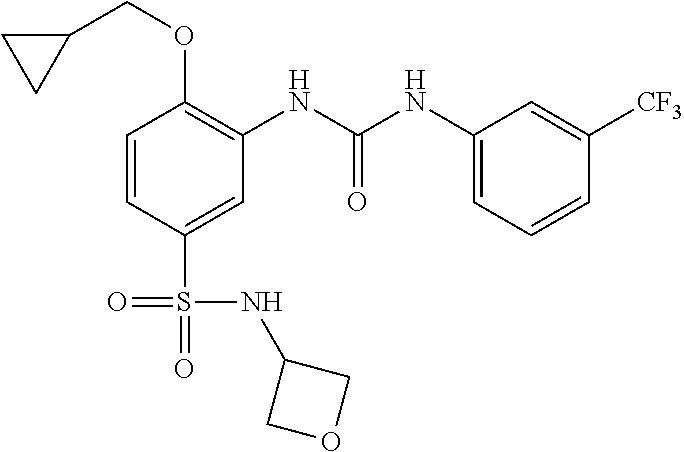
C00604
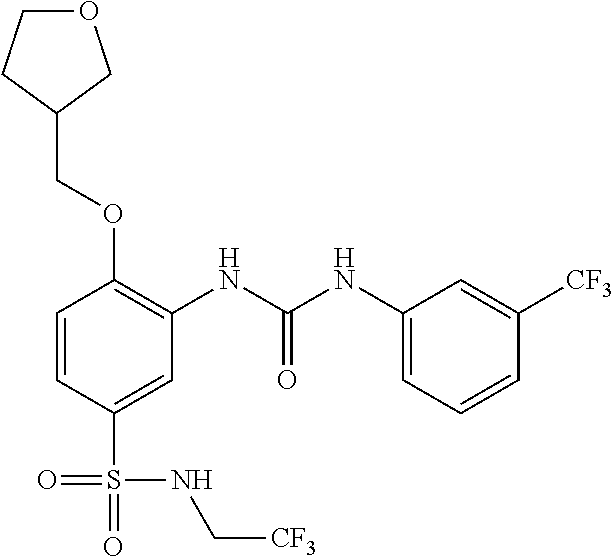
C00605

C00606
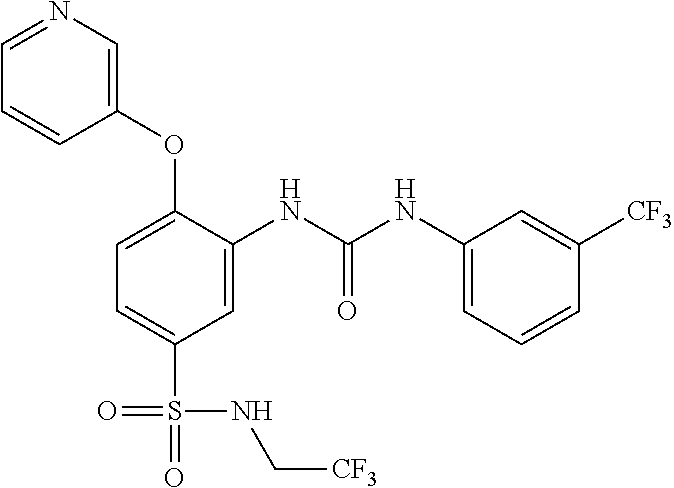
C00607

C00608

C00609

C00610

C00611

C00612

C00613

C00614

C00615
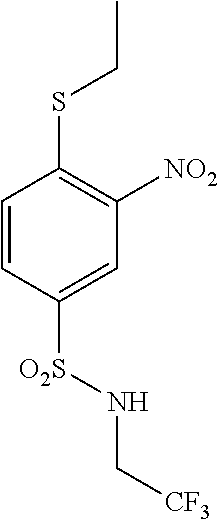
C00616

C00617

C00618
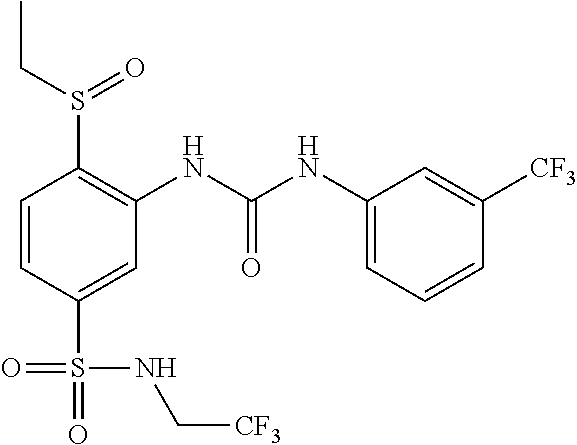
C00619

C00620
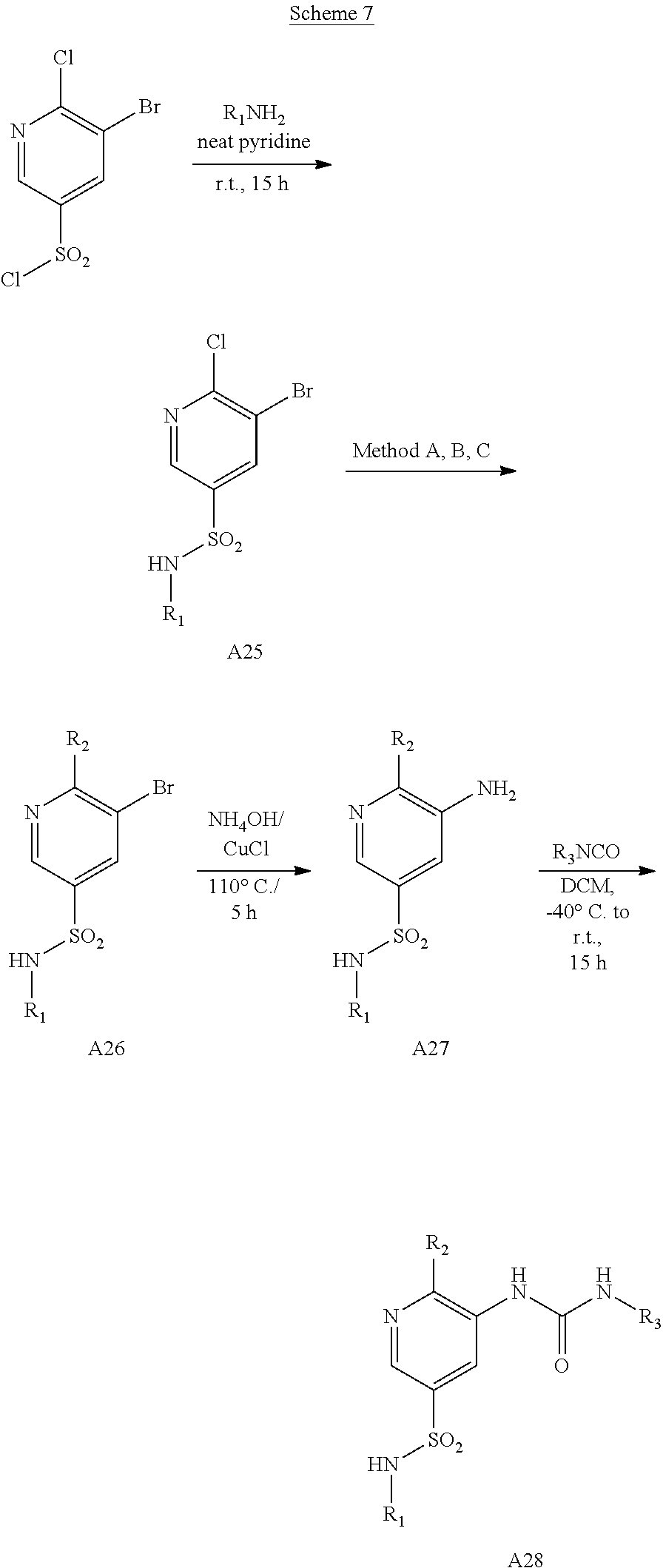
C00621

C00622

C00623

C00624
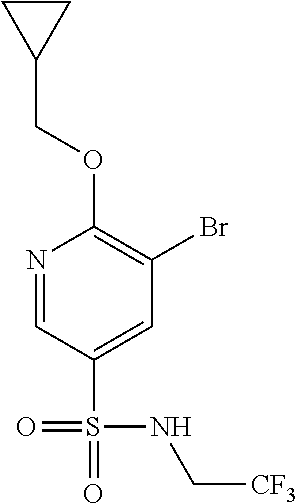
C00625
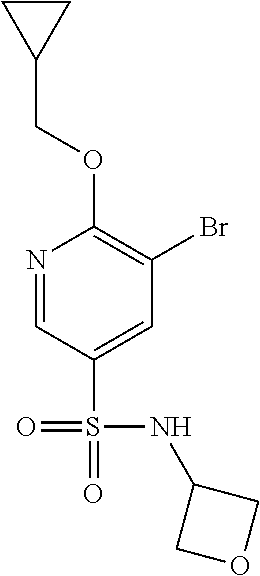
C00626
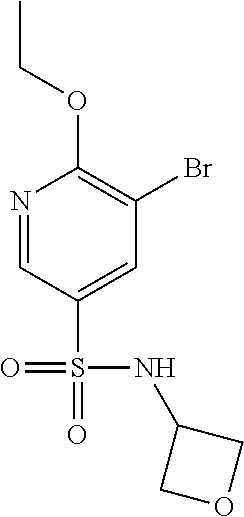
C00627
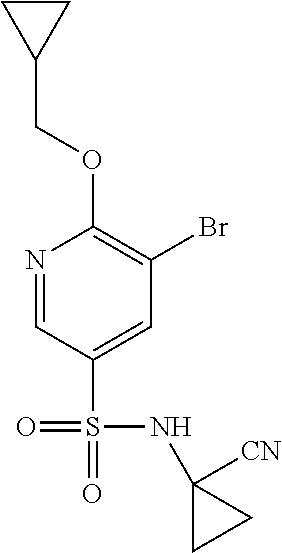
C00628
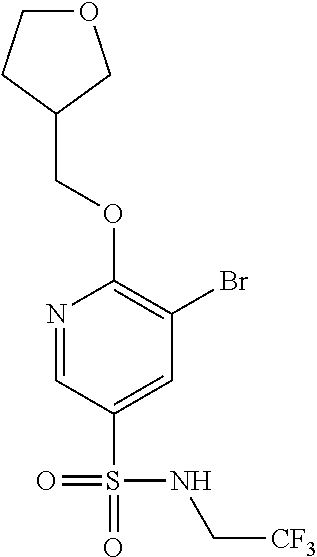
C00629

C00630

C00631
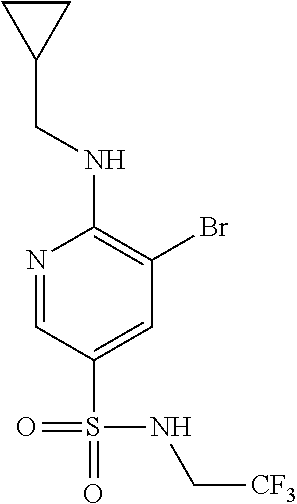
C00632

C00633
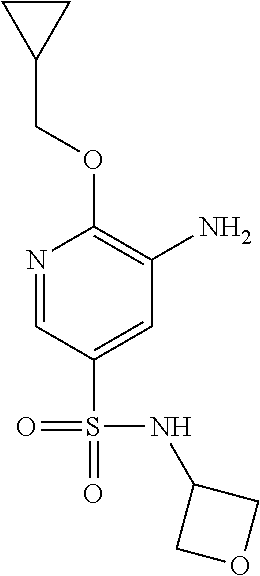
C00634

C00635

C00636
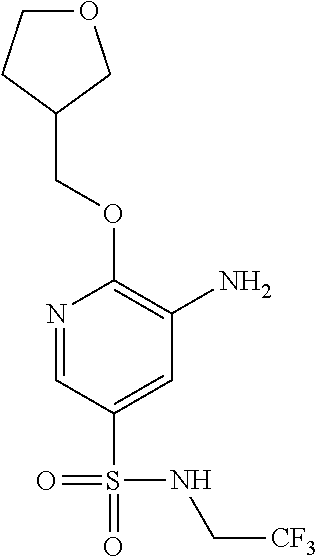
C00637
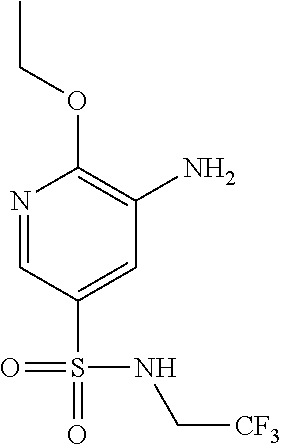
C00638
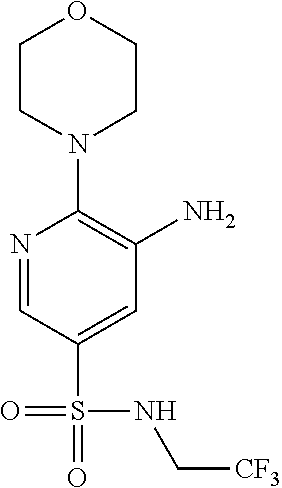
C00639

C00640

C00641

C00642
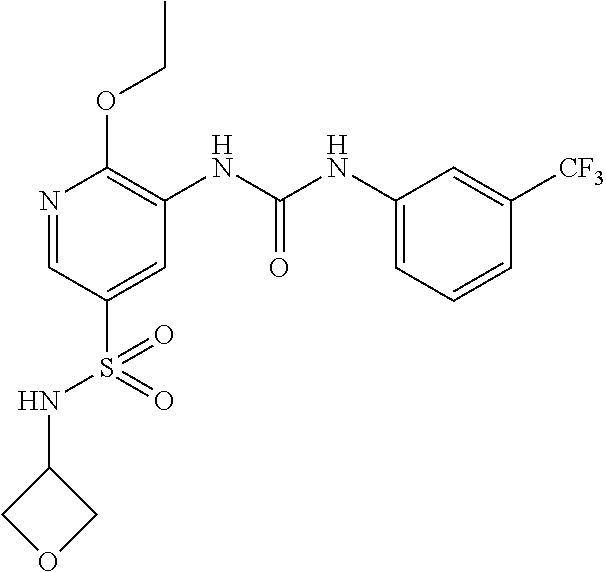
C00643

C00644

C00645

C00646
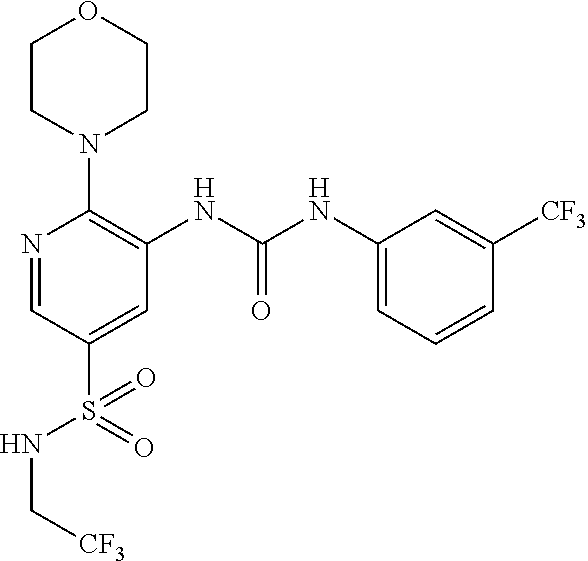
C00647

C00648
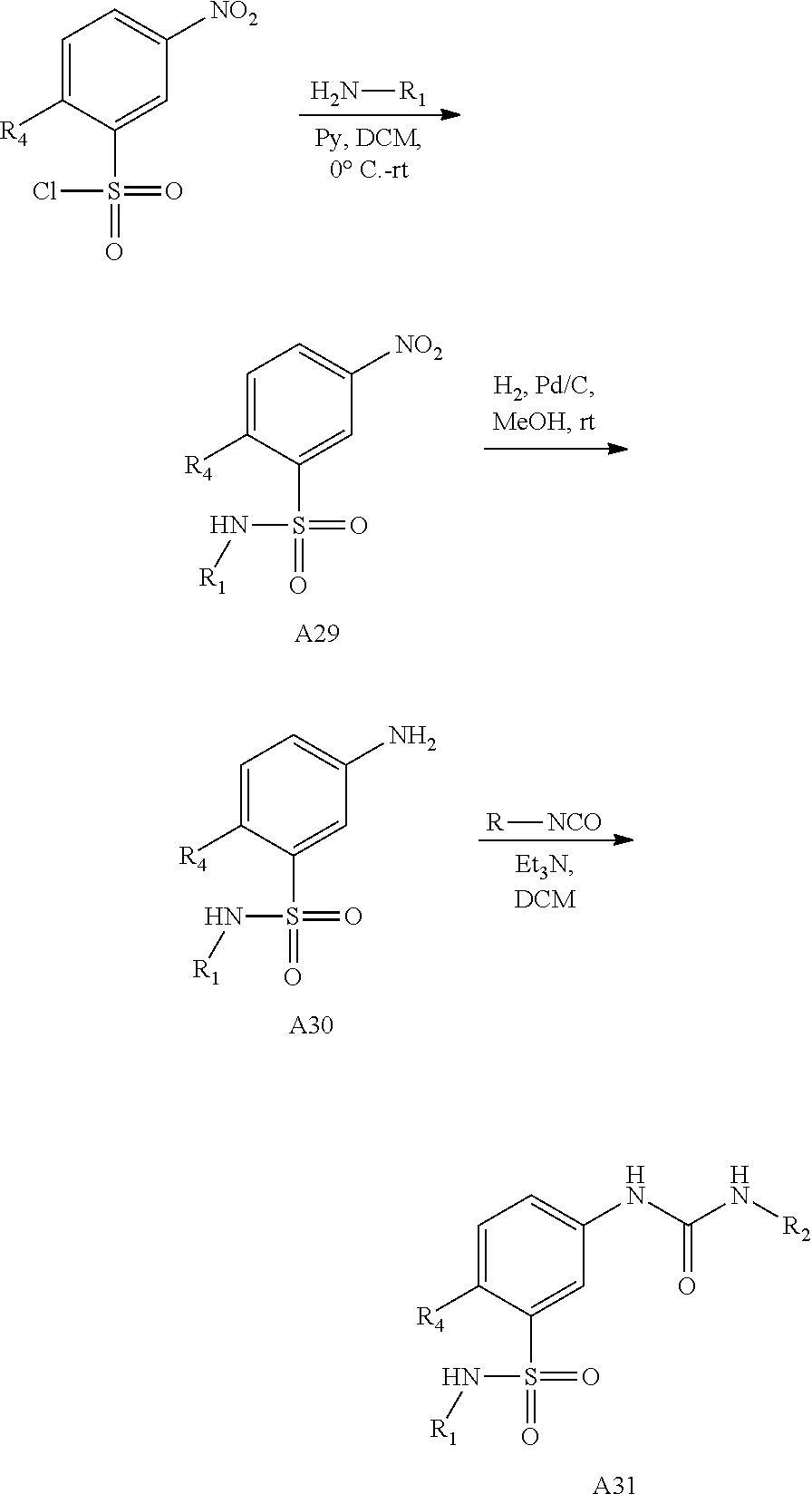
C00649
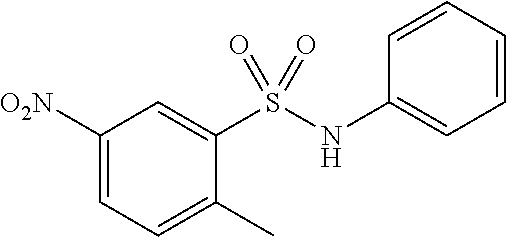
C00650
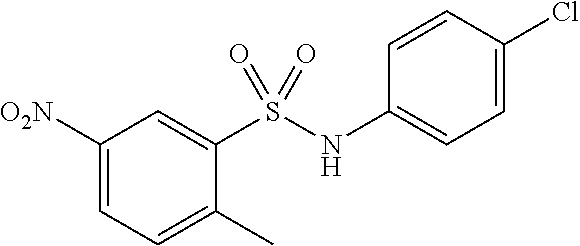
C00651
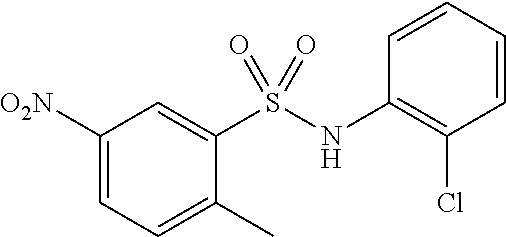
C00652
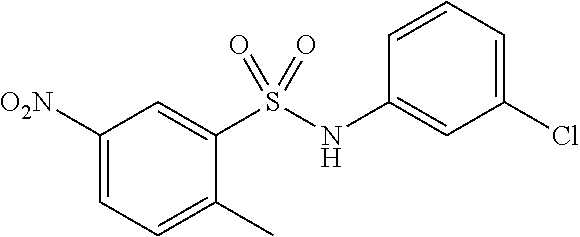
C00653
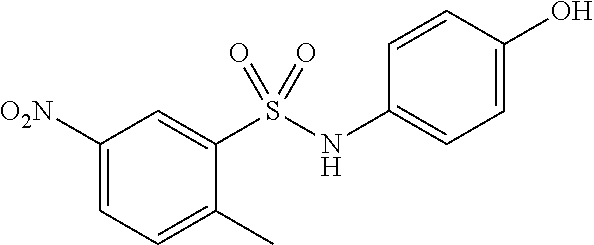
C00654

C00655
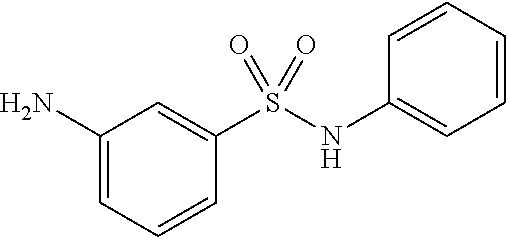
C00656

C00657

C00658

C00659

C00660

C00661

C00662

C00663

C00664

C00665

C00666

C00667

C00668

C00669

C00670
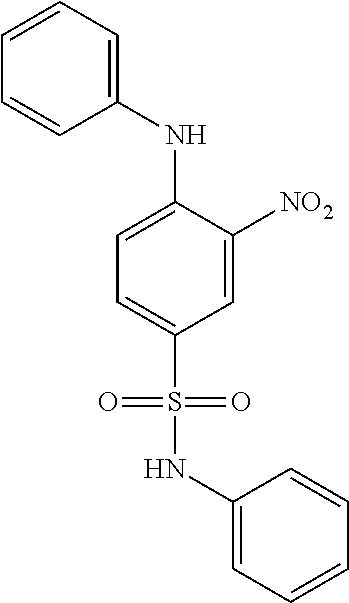
C00671

C00672
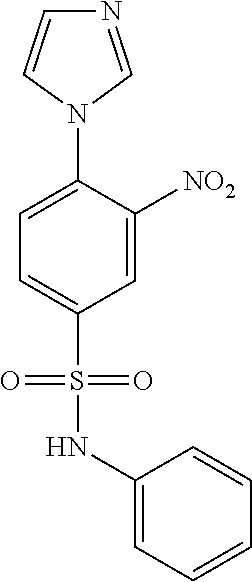
C00673
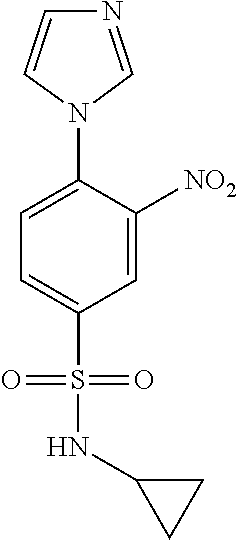
C00674

C00675
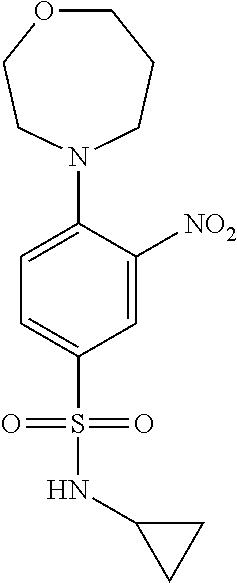
C00676

C00677
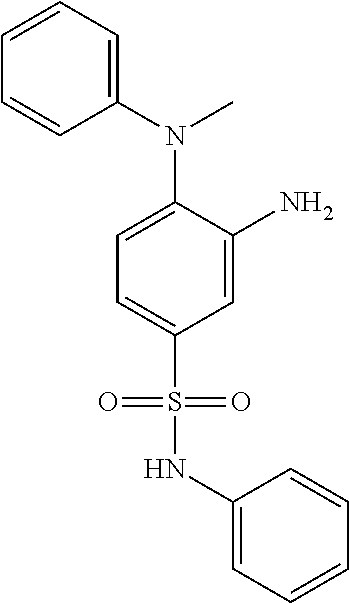
C00678

C00679

C00680
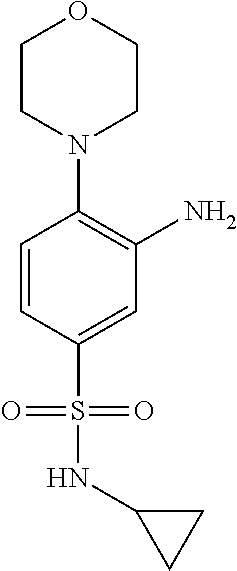
C00681

C00682
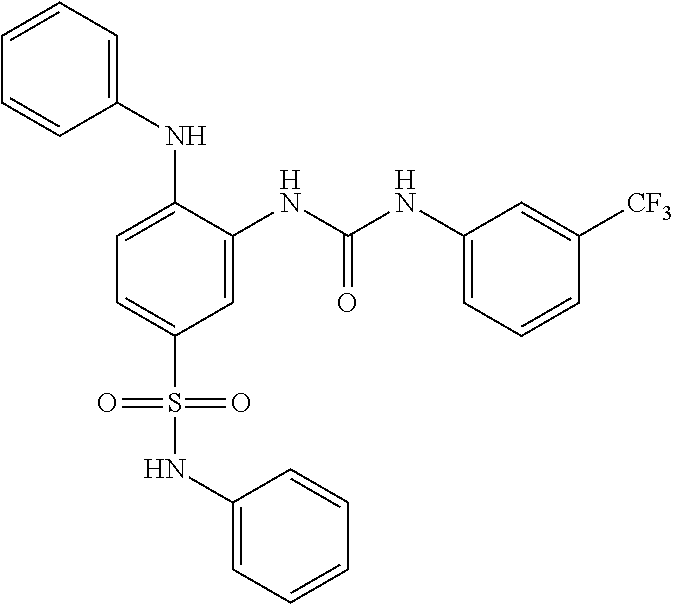
C00683

C00684
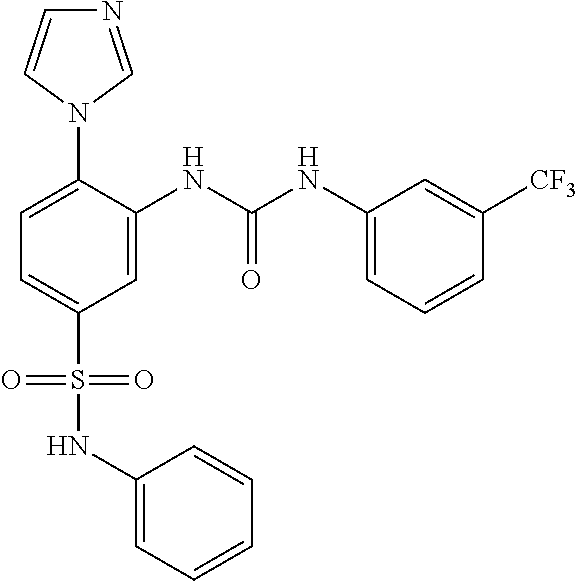
C00685

C00686

C00687

C00688

C00689

C00690

C00691

C00692
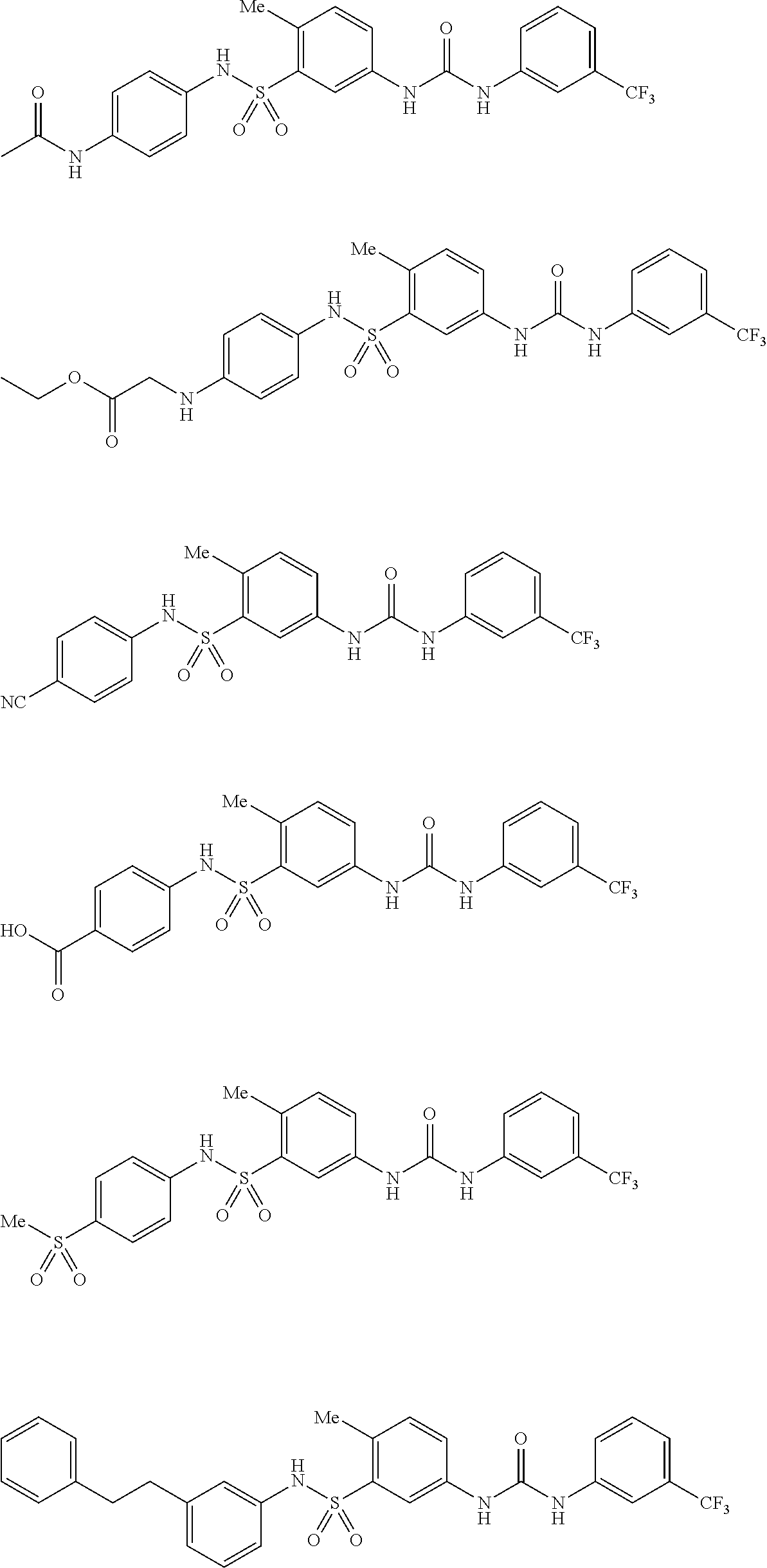
C00693

C00694
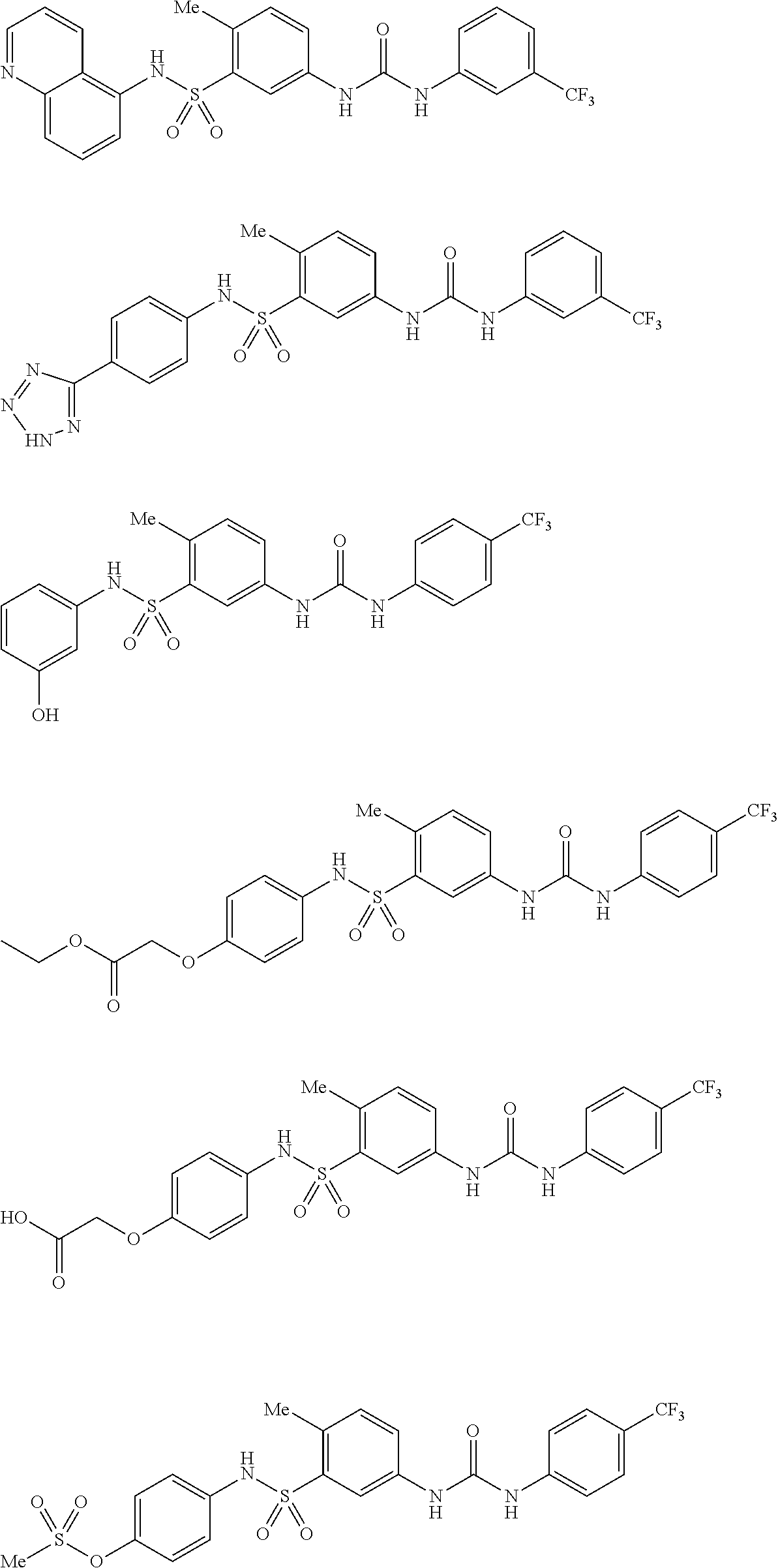
C00695

C00696

C00697

C00698

C00699

C00700

C00701

C00702

C00703
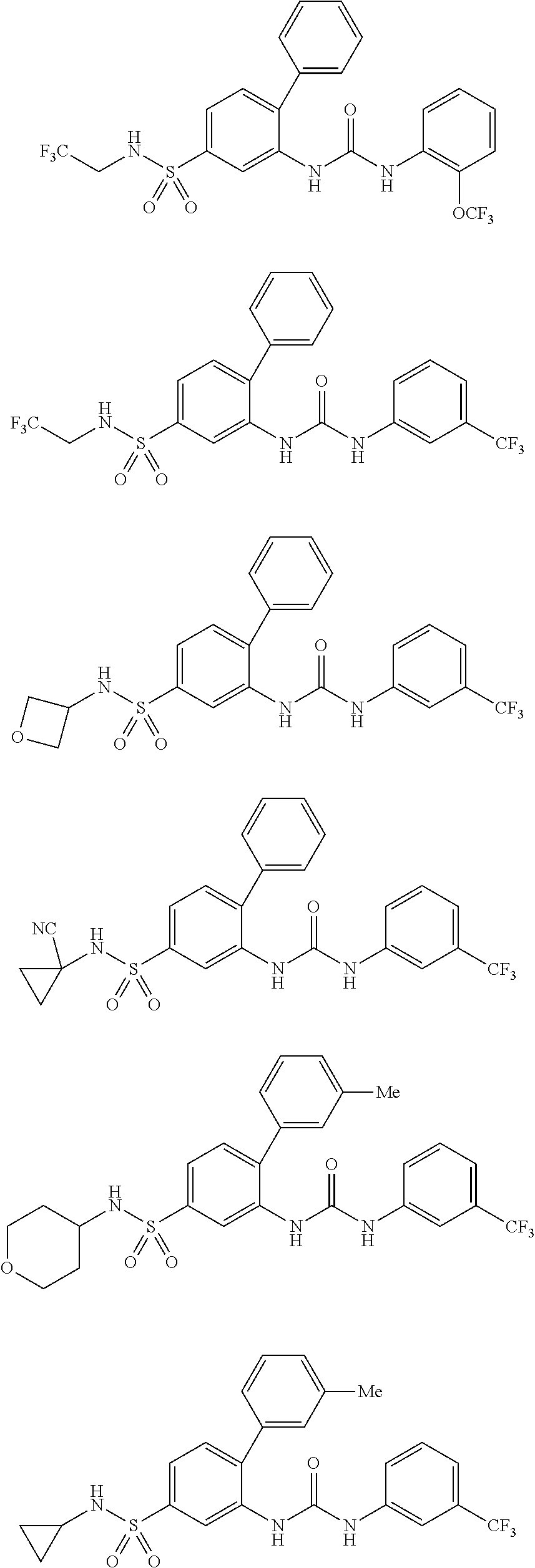
C00704

C00705

C00706

C00707

C00708

C00709

C00710

C00711
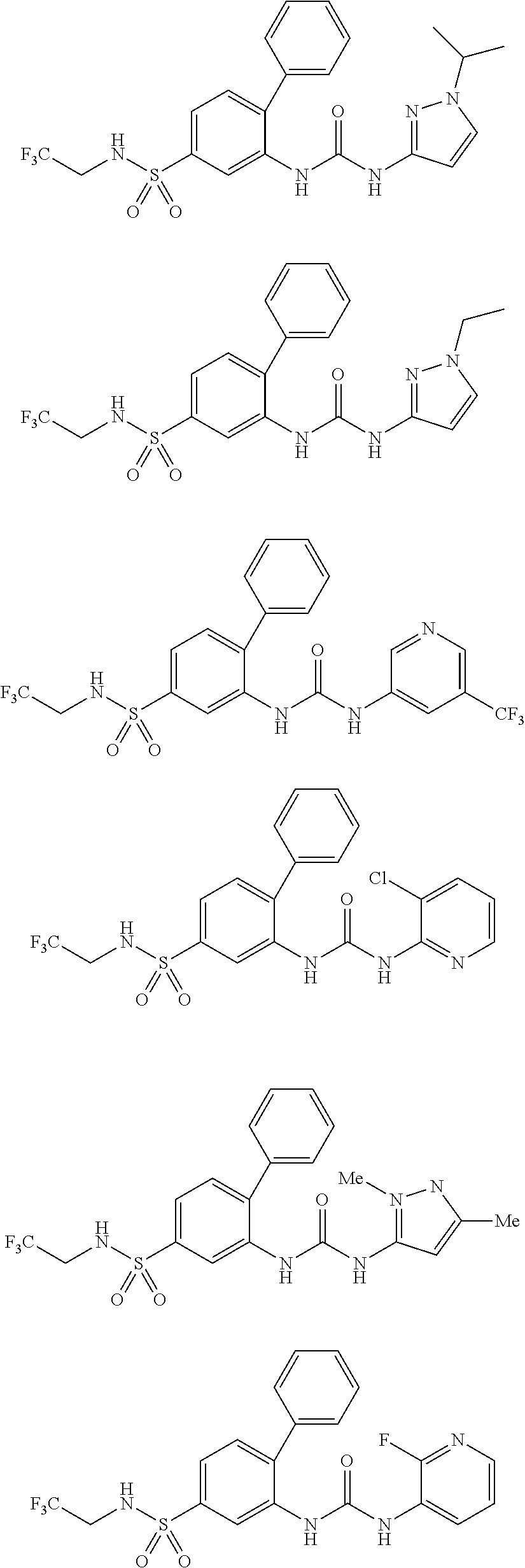
C00712

C00713

C00714
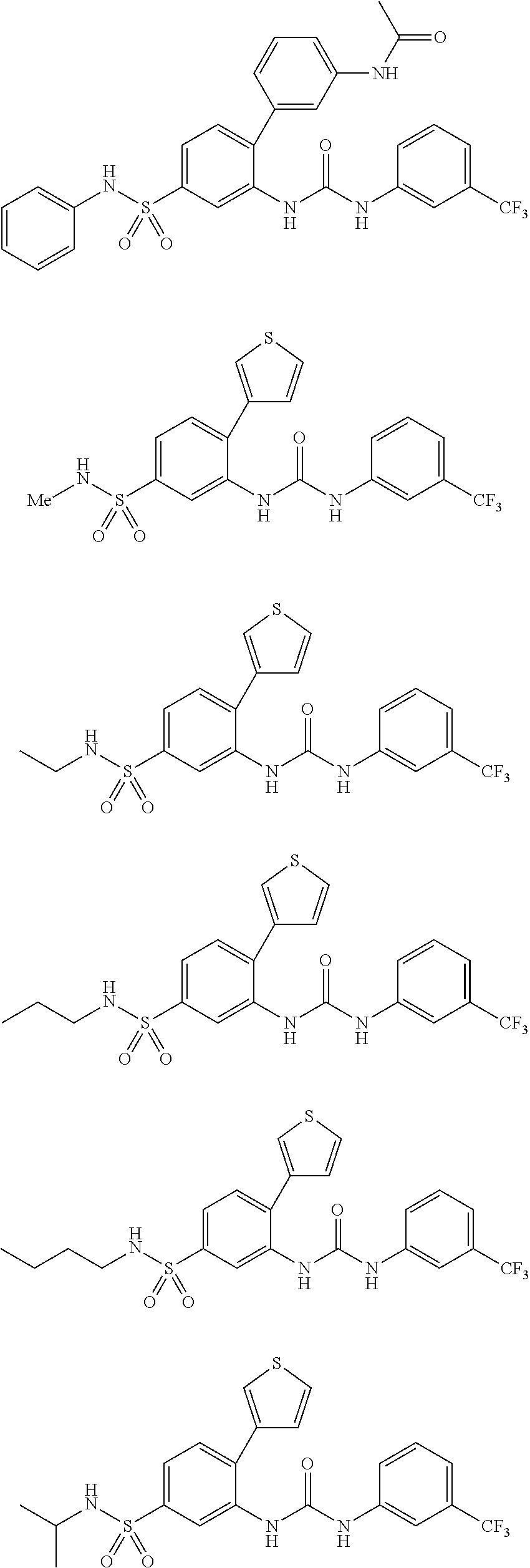
C00715

C00716

C00717

C00718
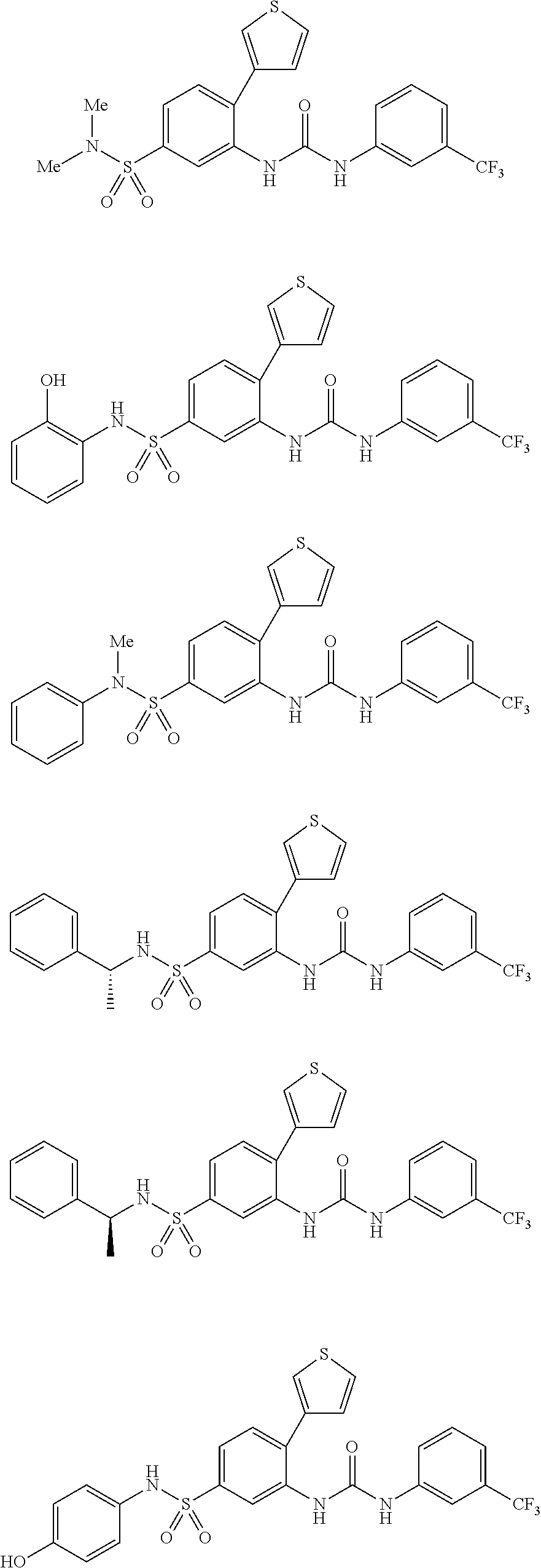
C00719

C00720

C00721

C00722
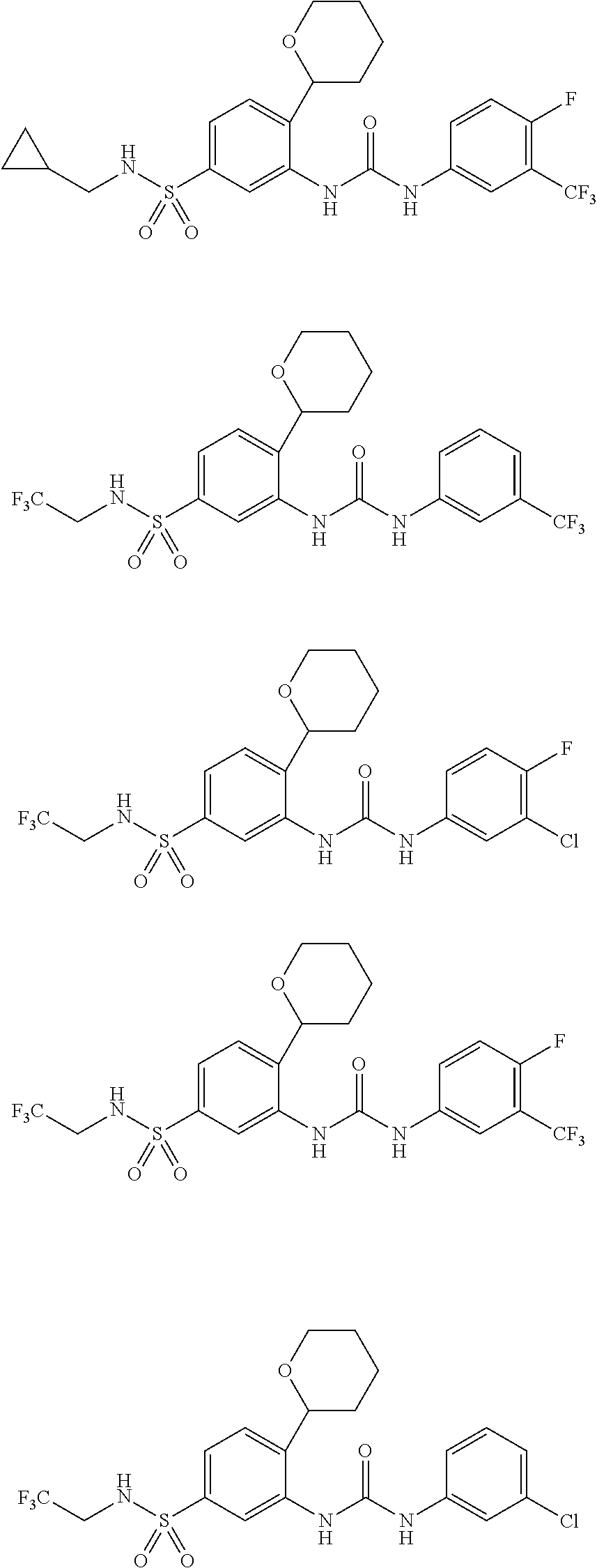
C00723

C00724

C00725

C00726
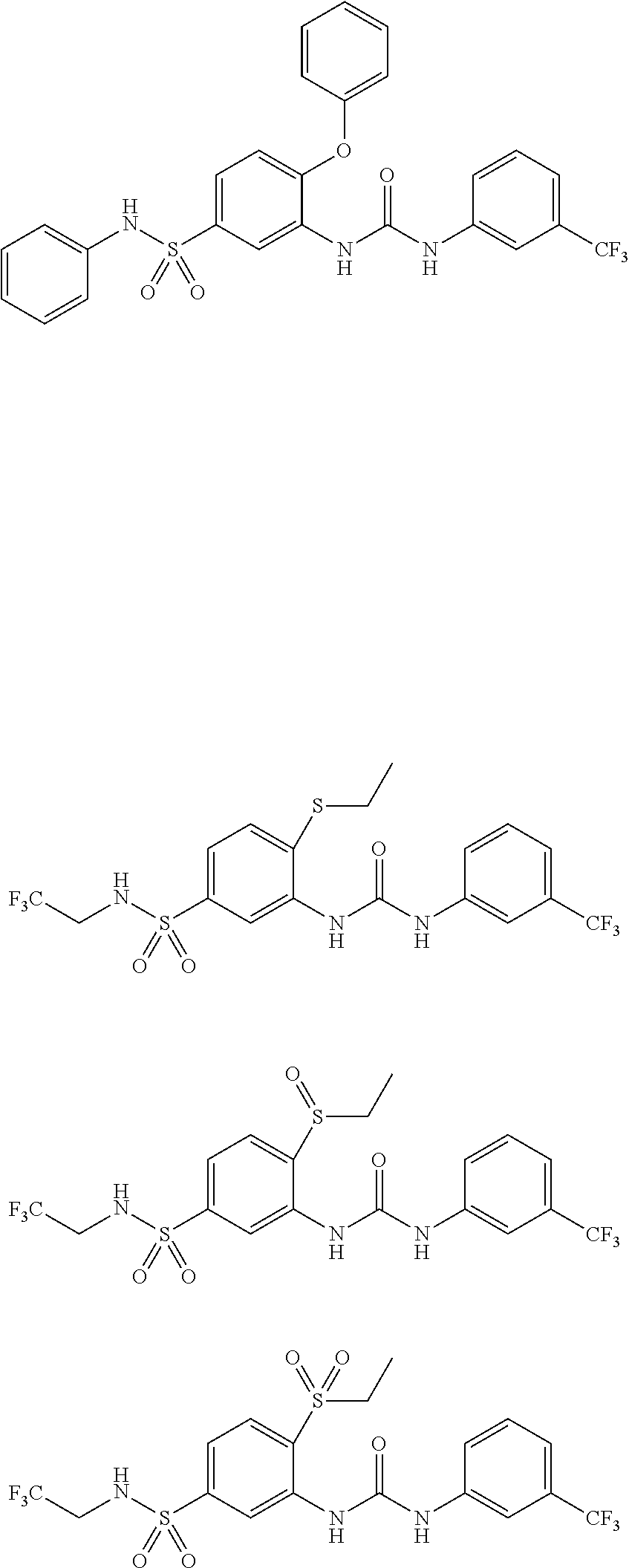
C00727

C00728

C00729

C00730
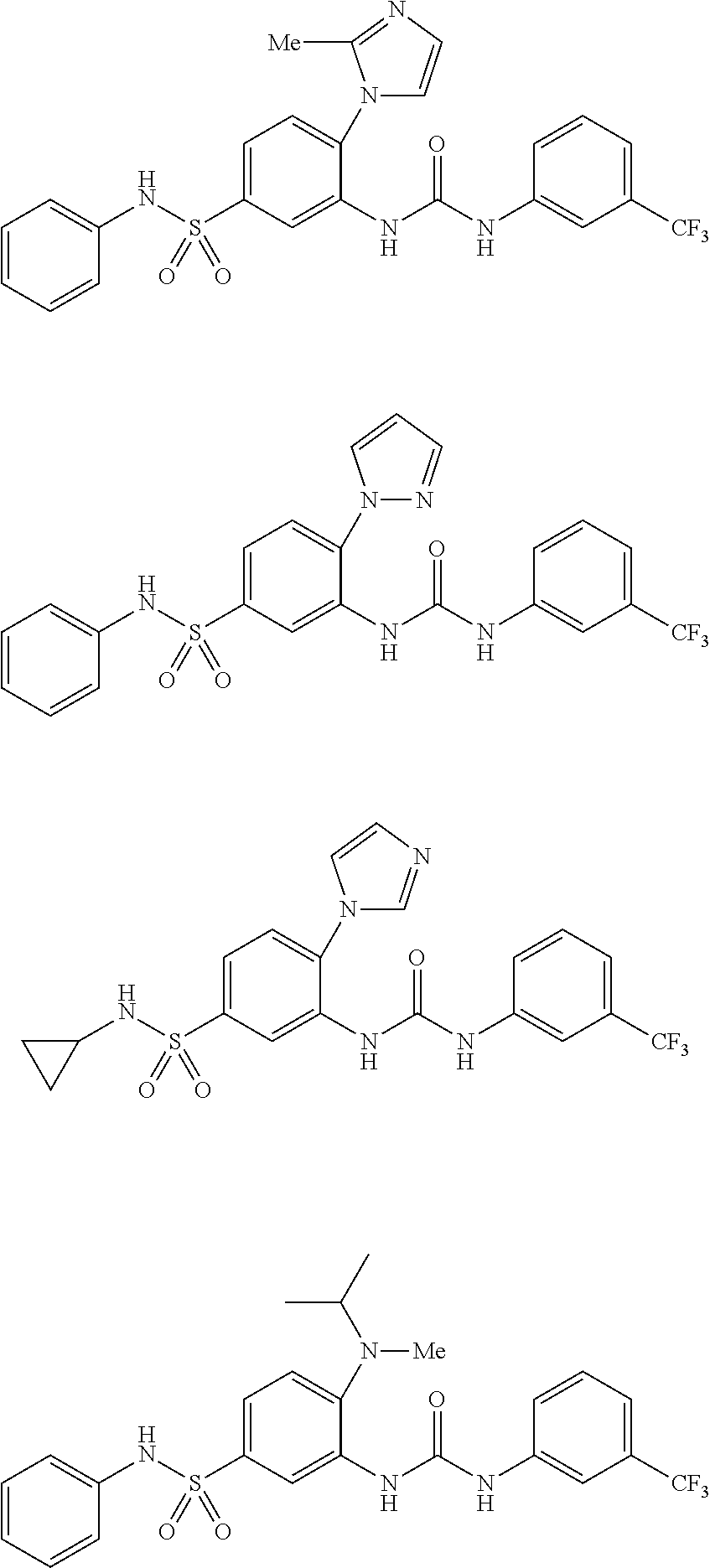
C00731

C00732

C00733

C00734

XML
uspto.report is an independent third-party trademark research tool that is not affiliated, endorsed, or sponsored by the United States Patent and Trademark Office (USPTO) or any other governmental organization. The information provided by uspto.report is based on publicly available data at the time of writing and is intended for informational purposes only.
While we strive to provide accurate and up-to-date information, we do not guarantee the accuracy, completeness, reliability, or suitability of the information displayed on this site. The use of this site is at your own risk. Any reliance you place on such information is therefore strictly at your own risk.
All official trademark data, including owner information, should be verified by visiting the official USPTO website at www.uspto.gov. This site is not intended to replace professional legal advice and should not be used as a substitute for consulting with a legal professional who is knowledgeable about trademark law.